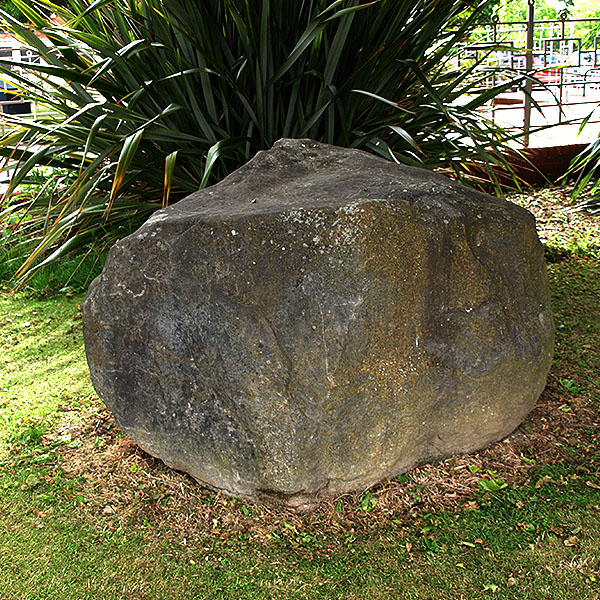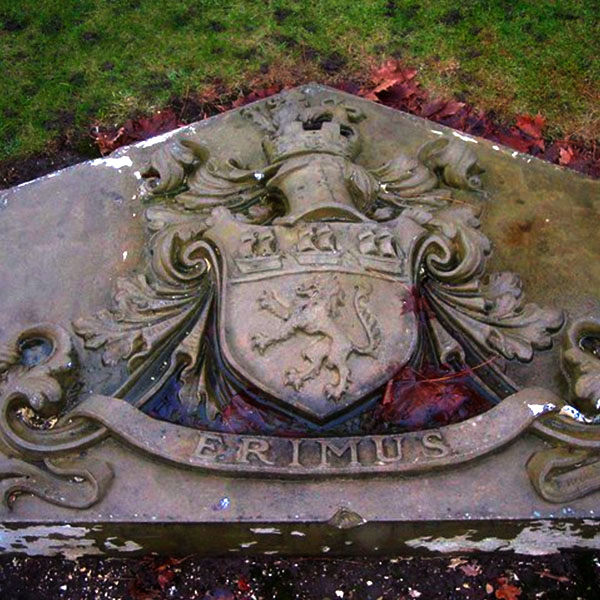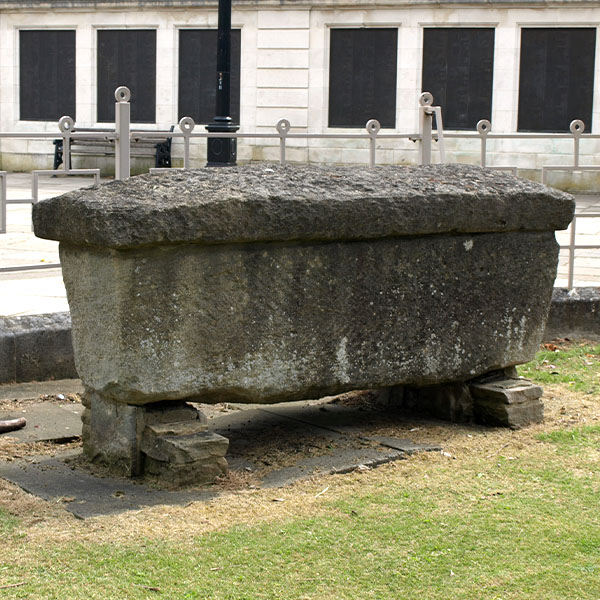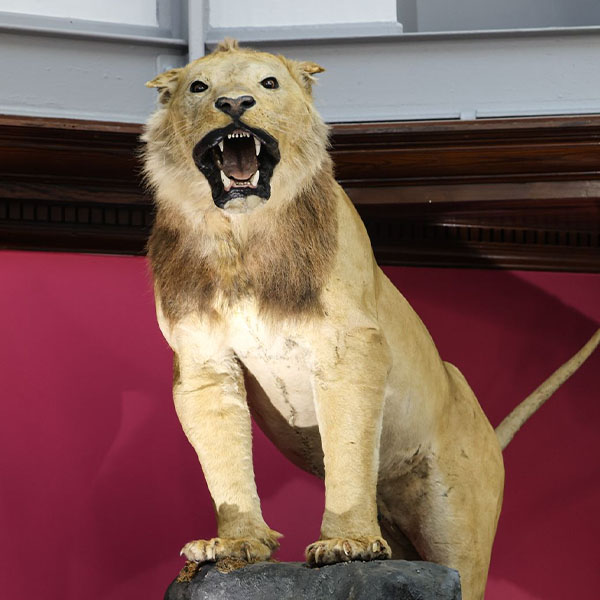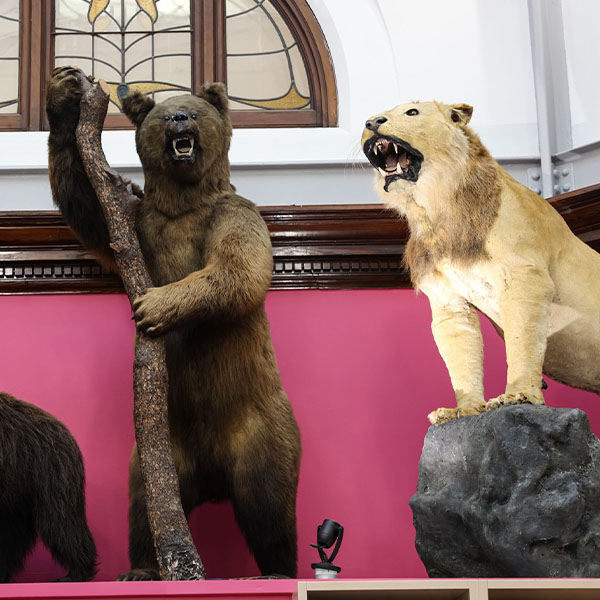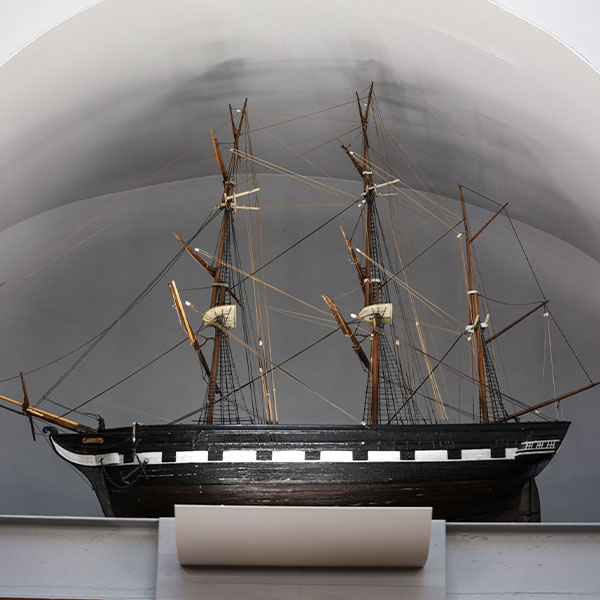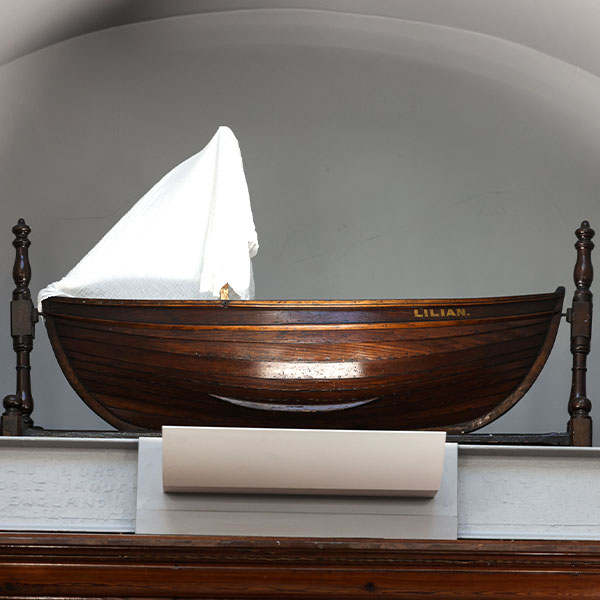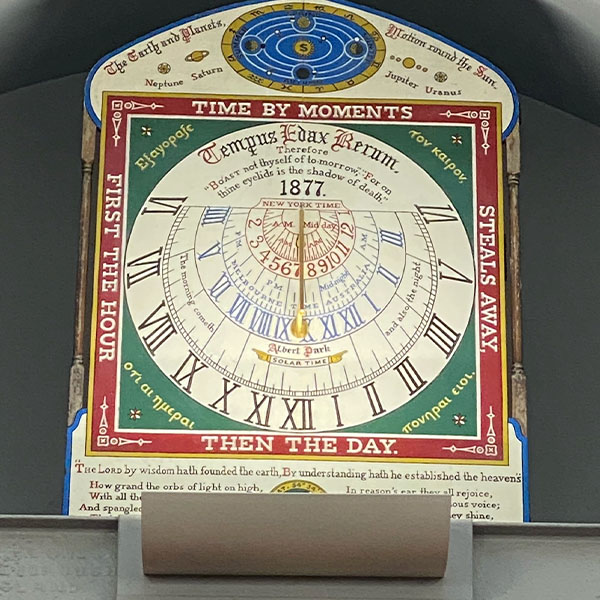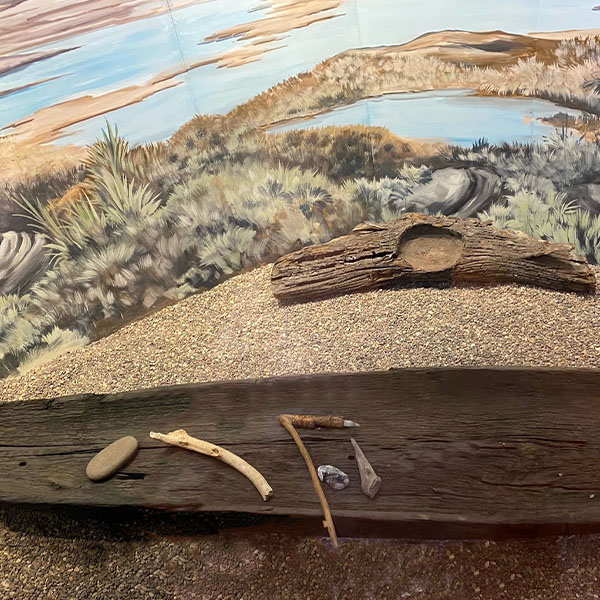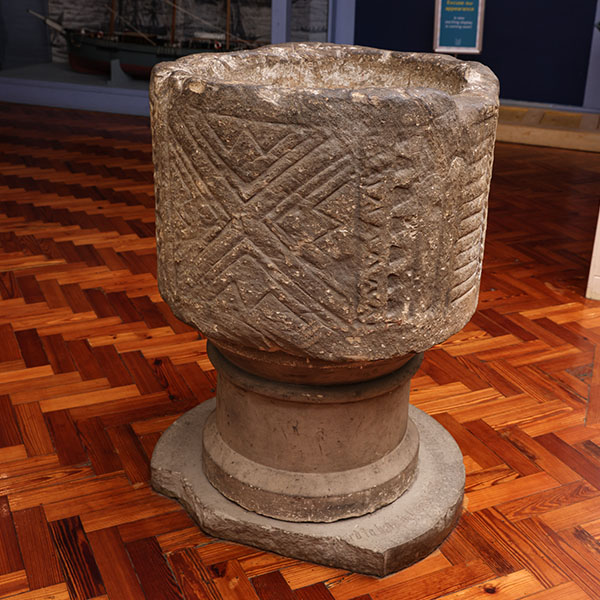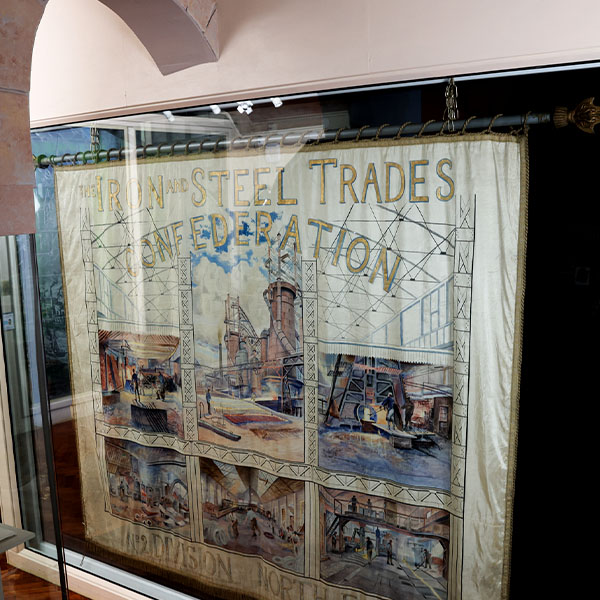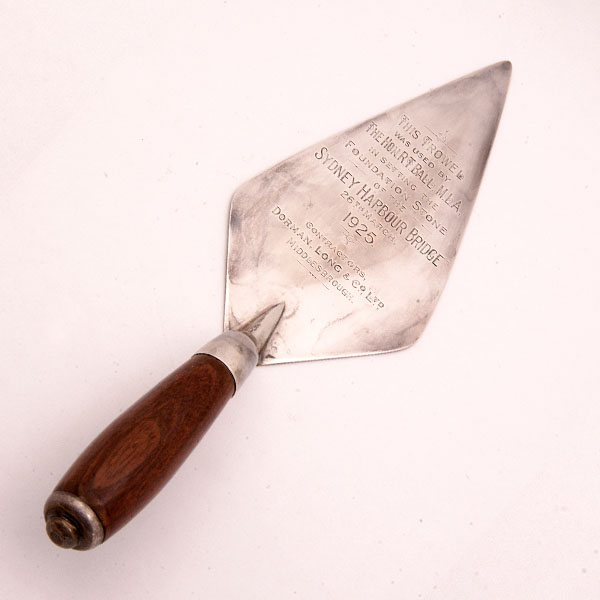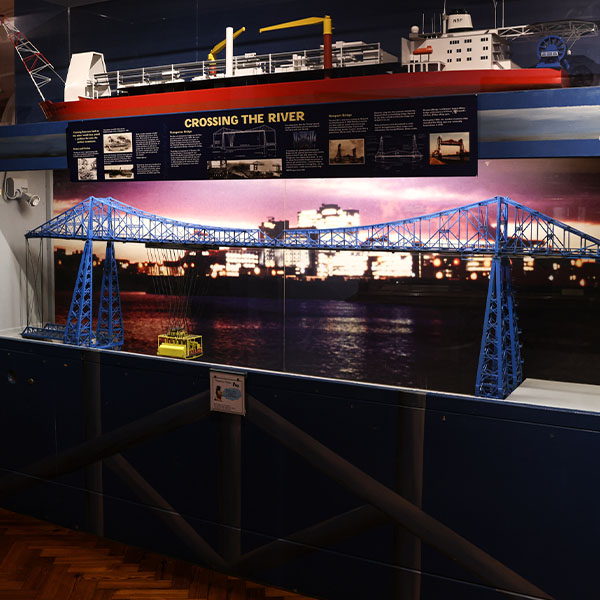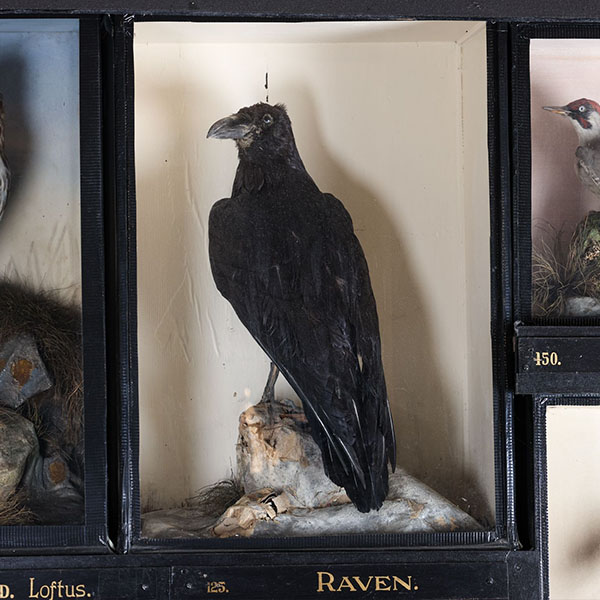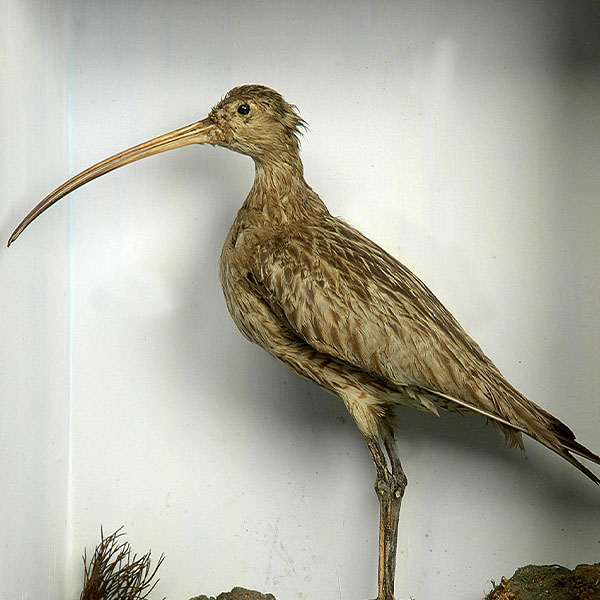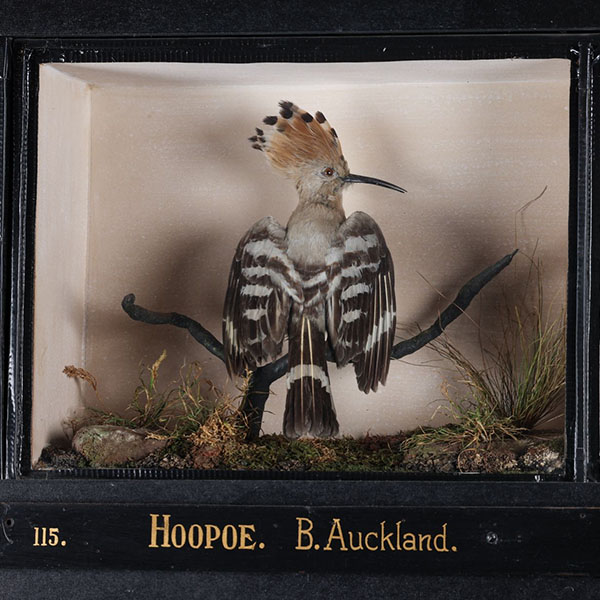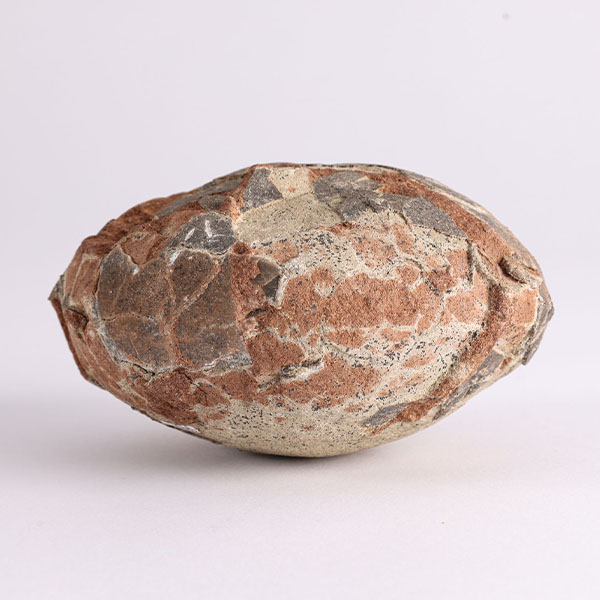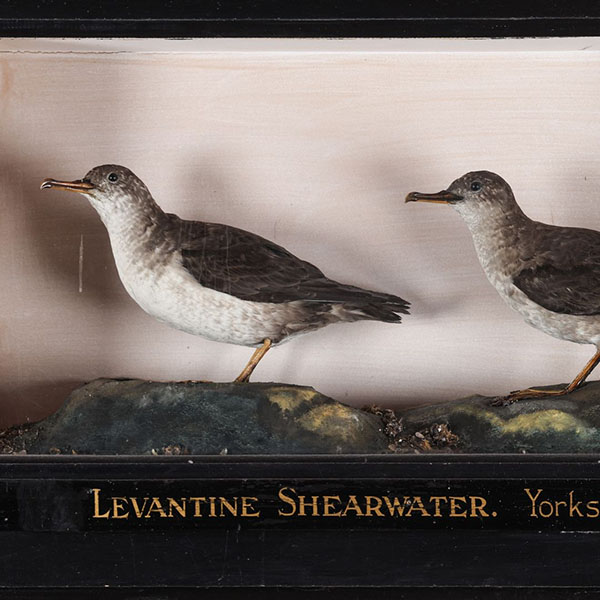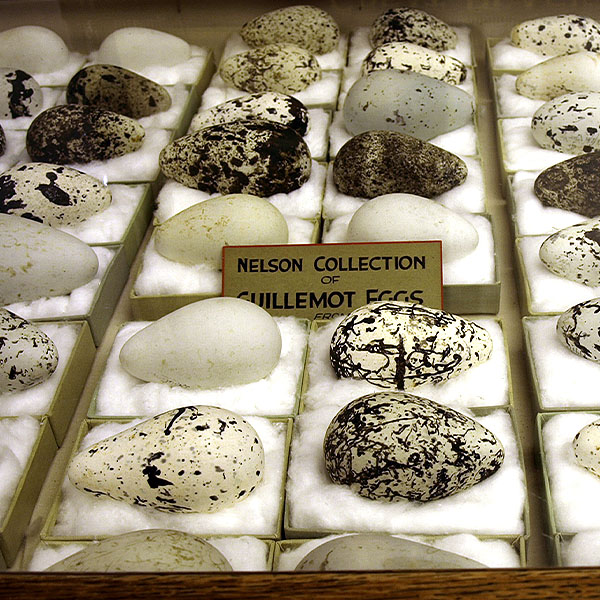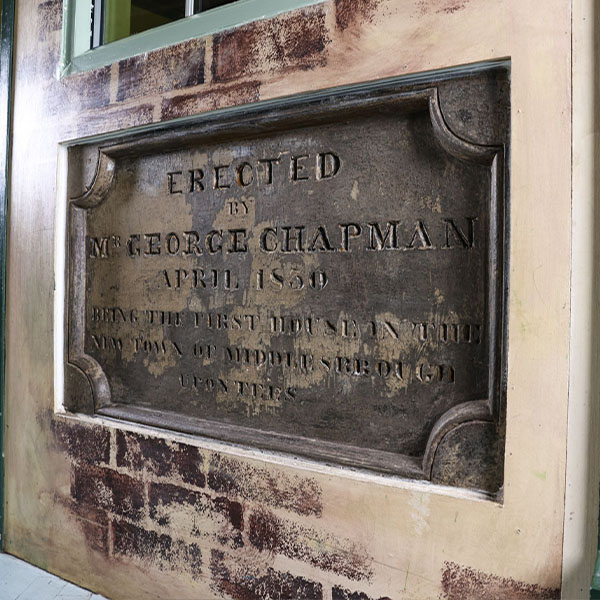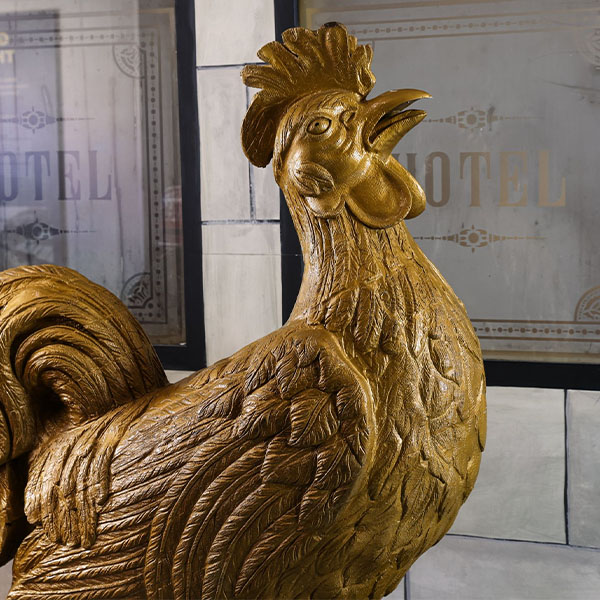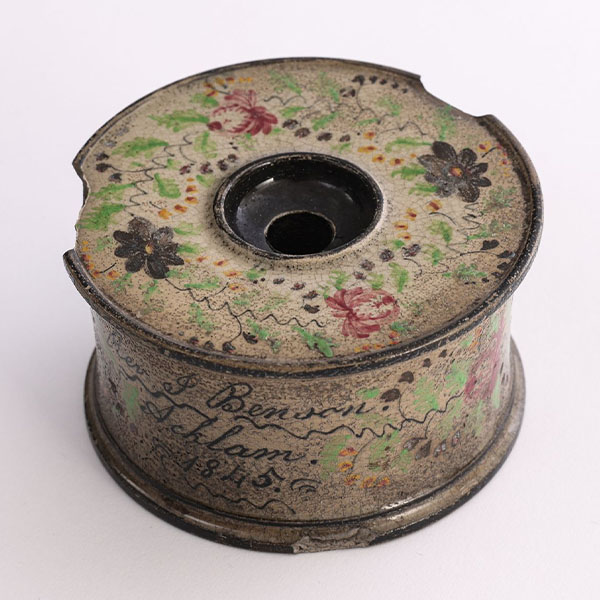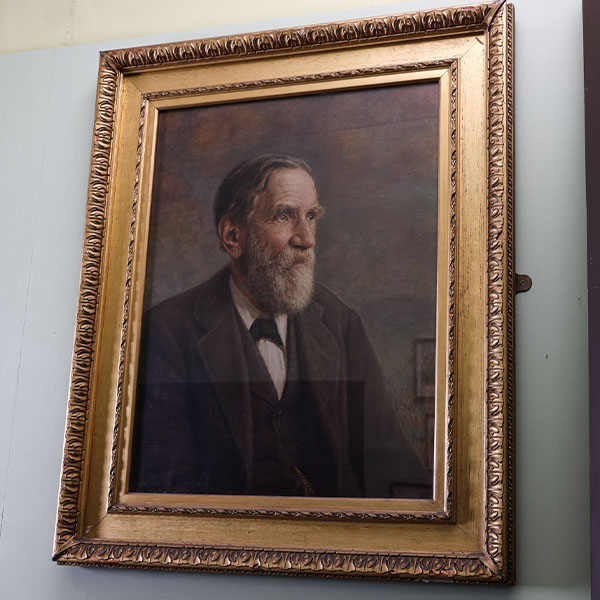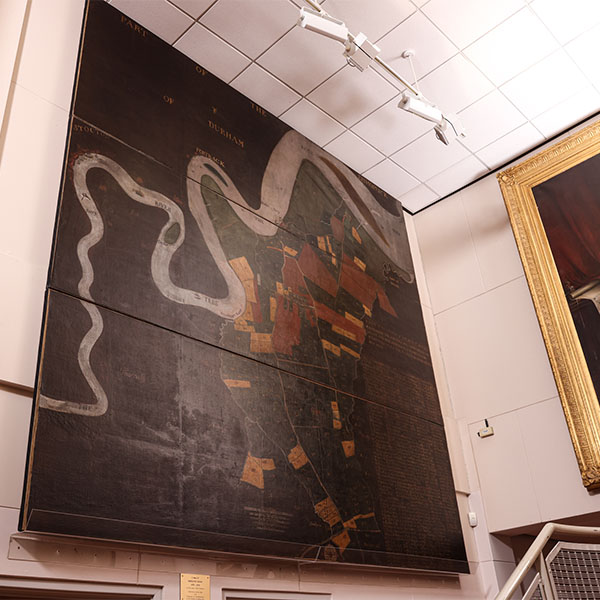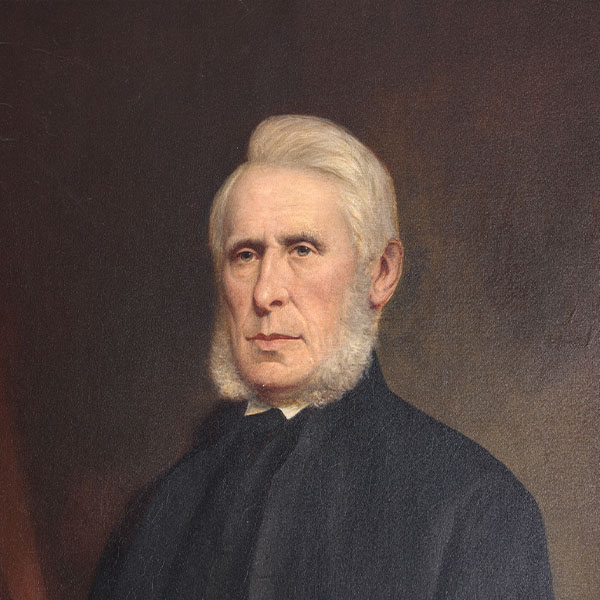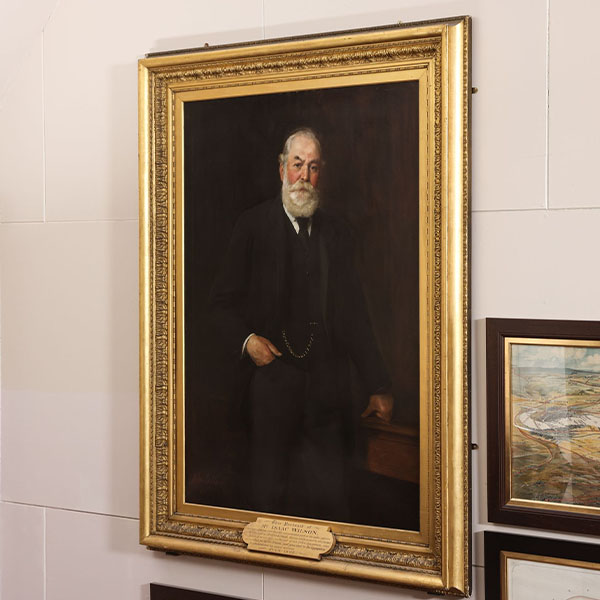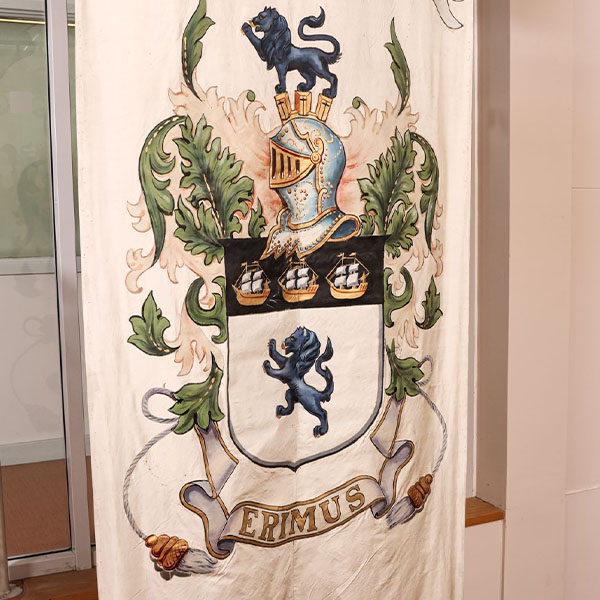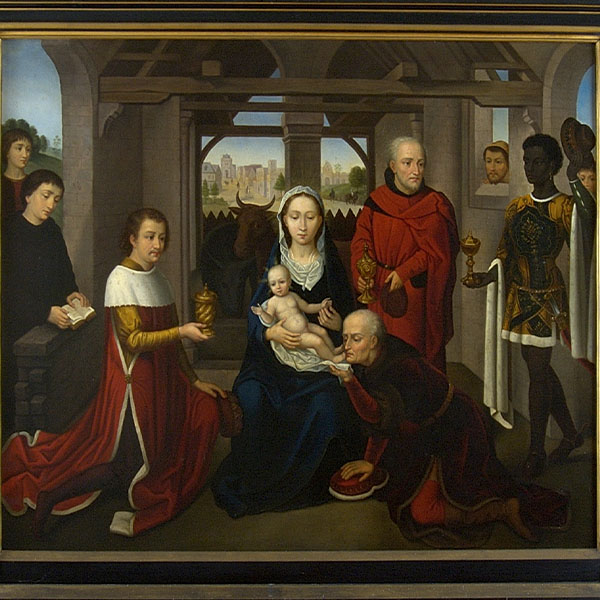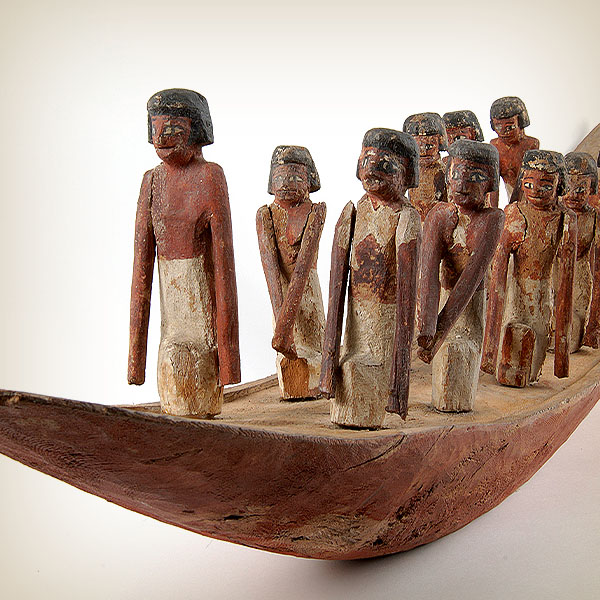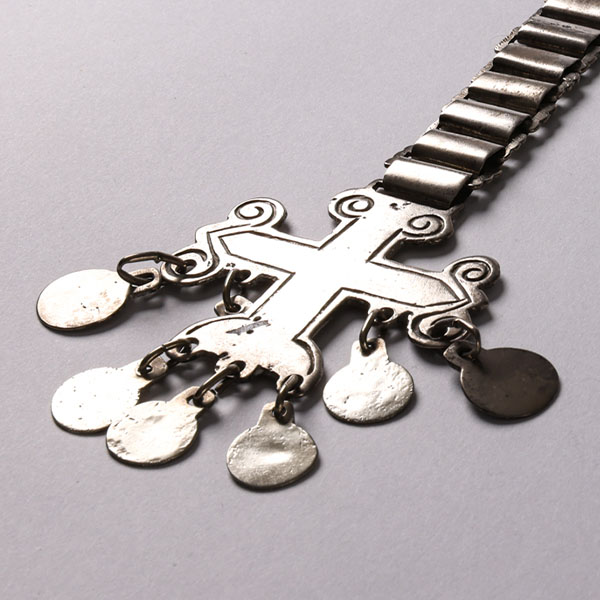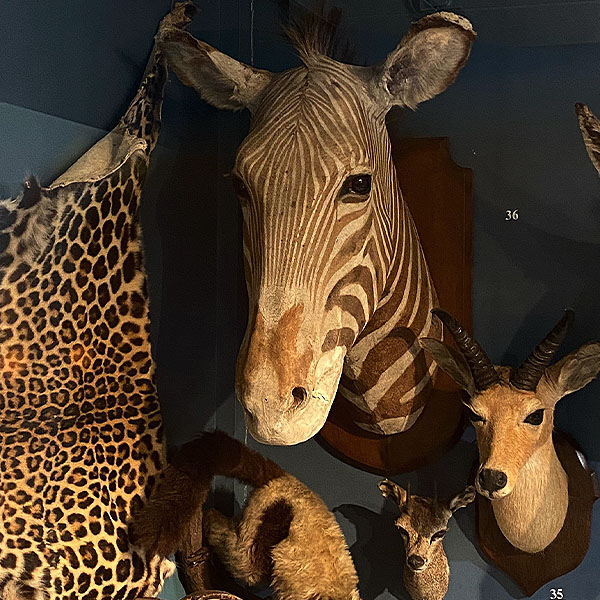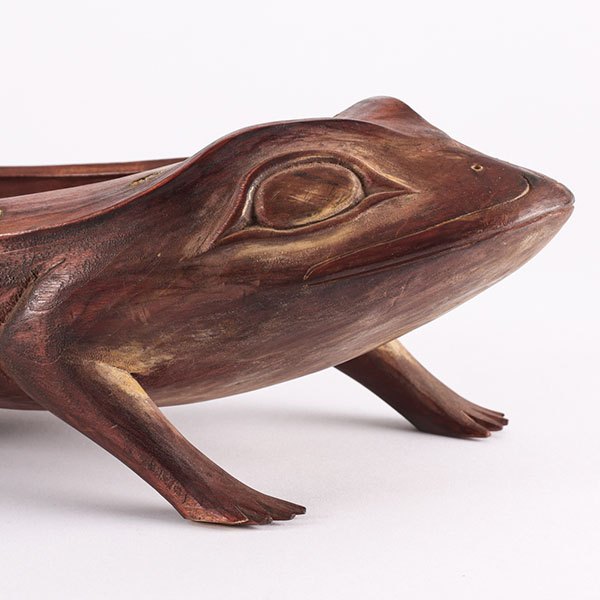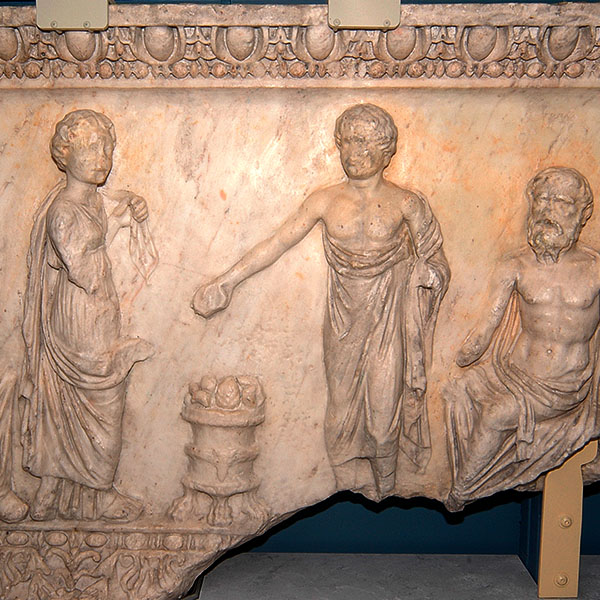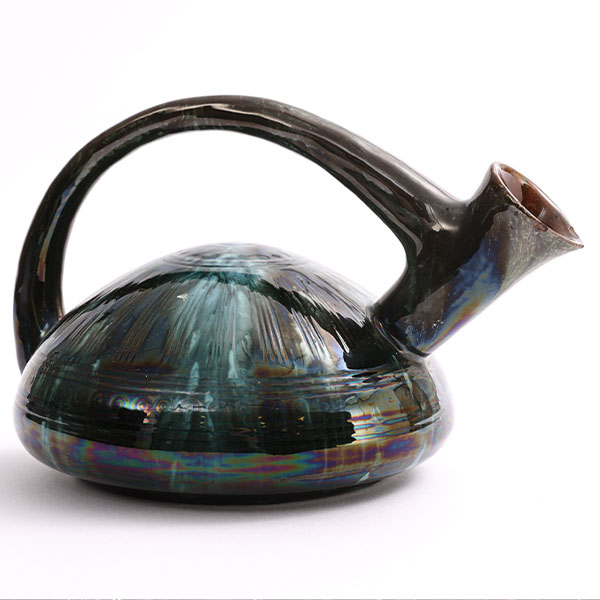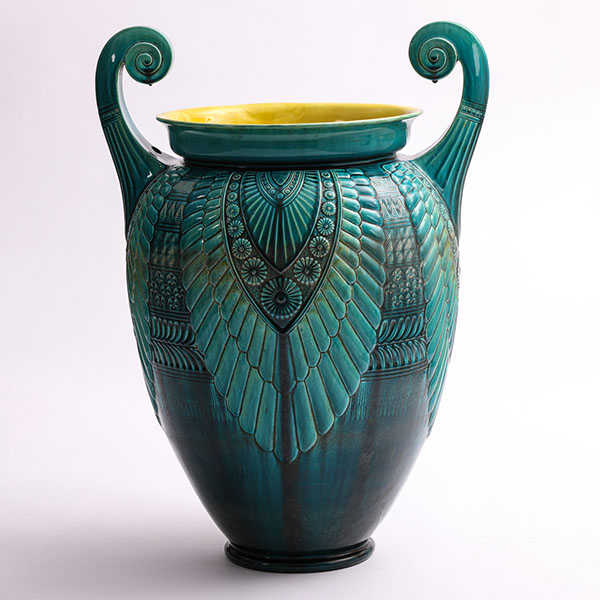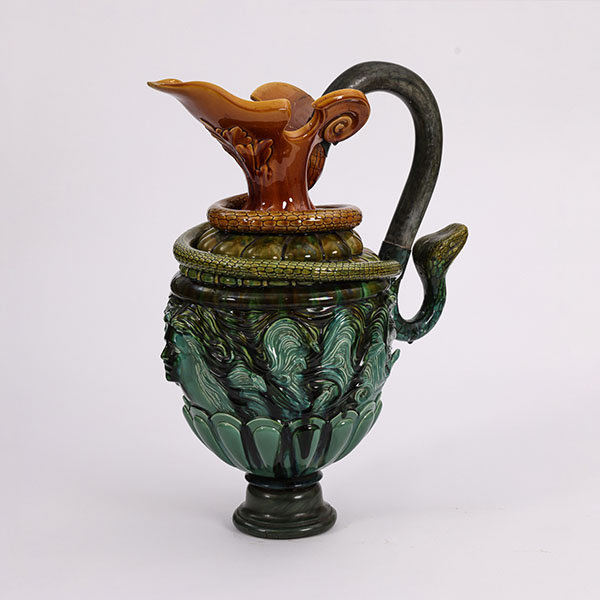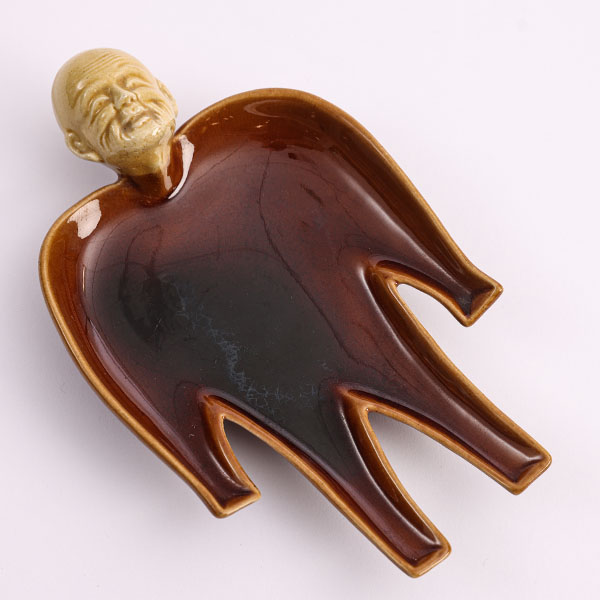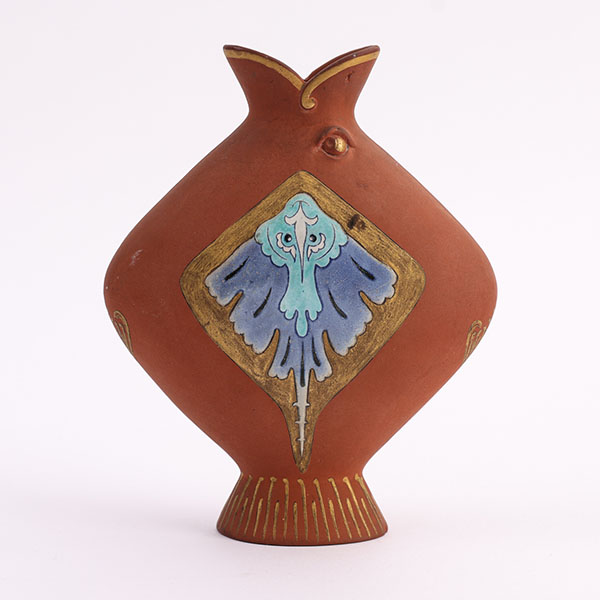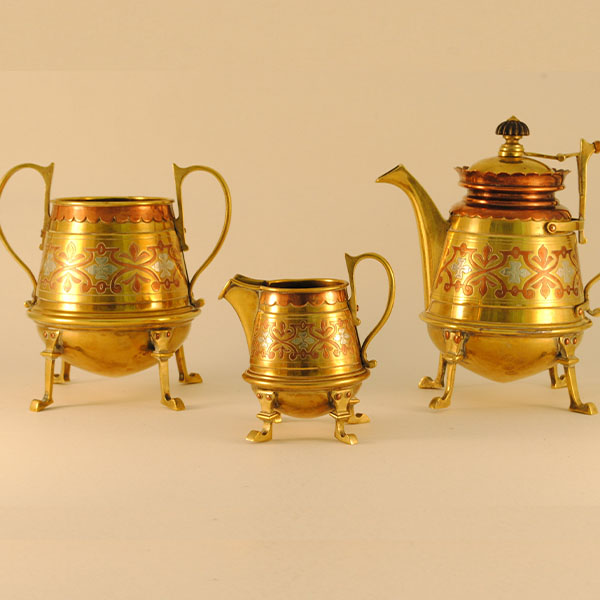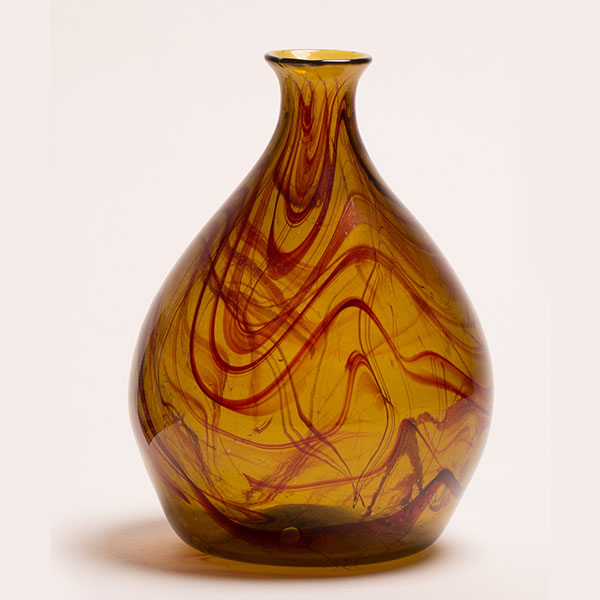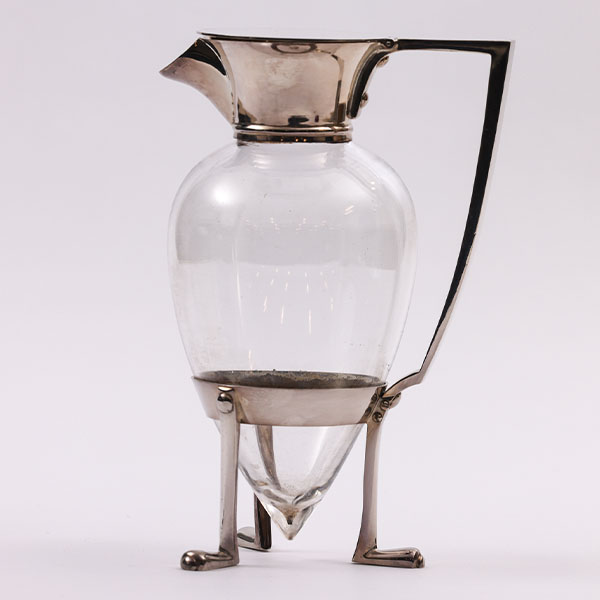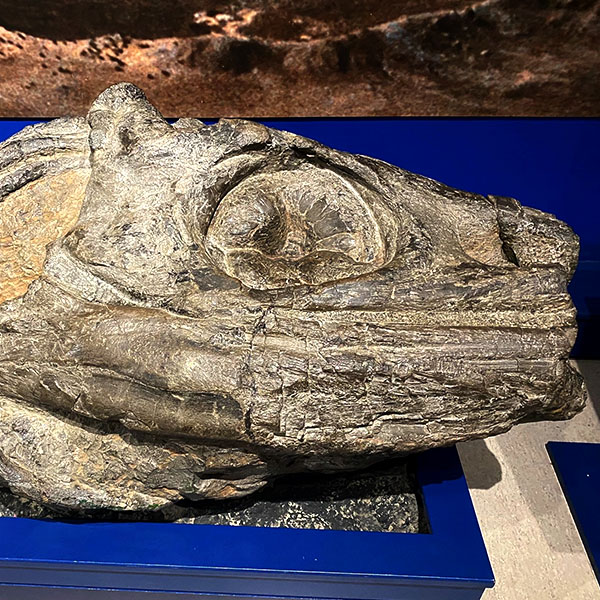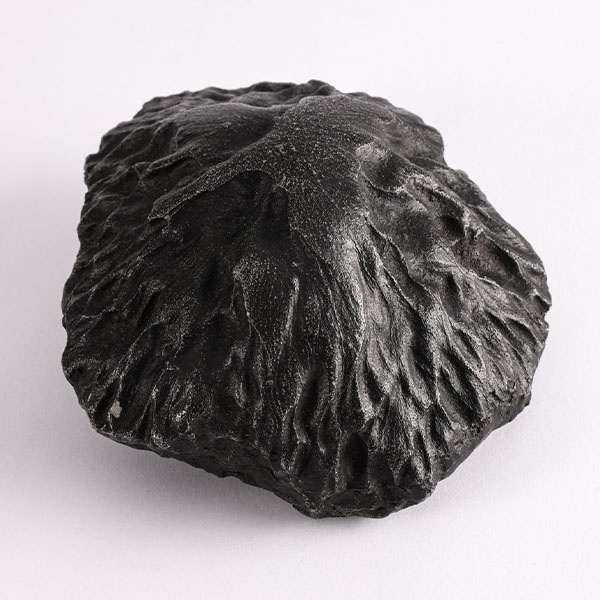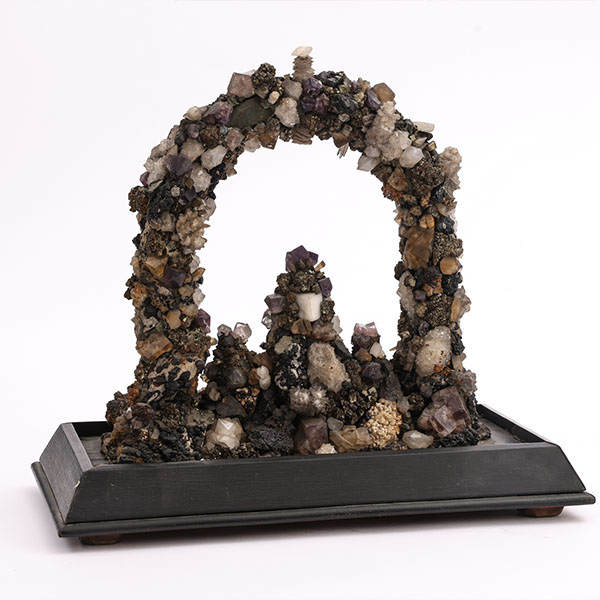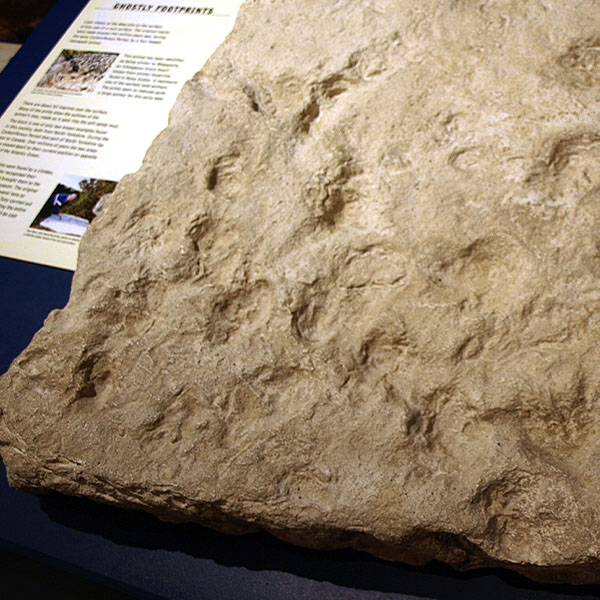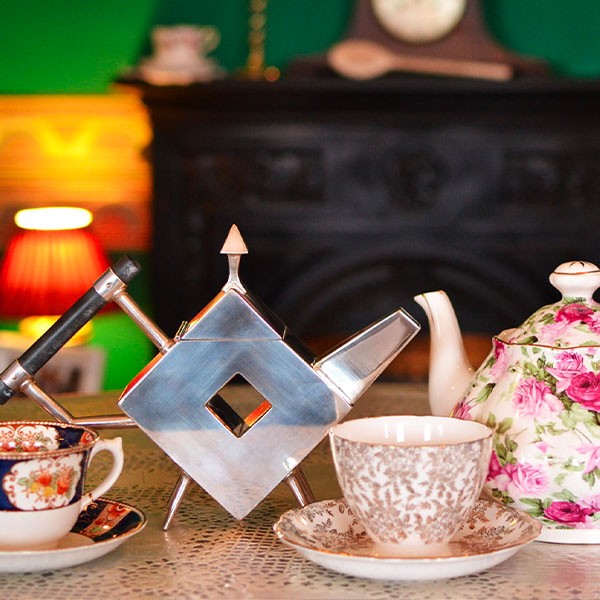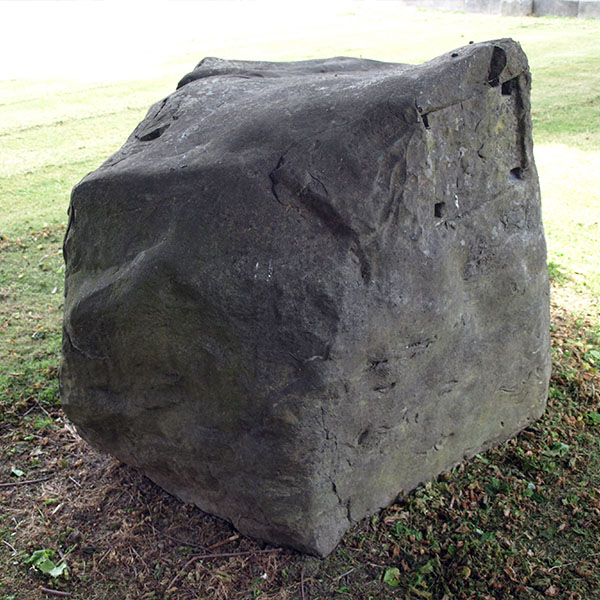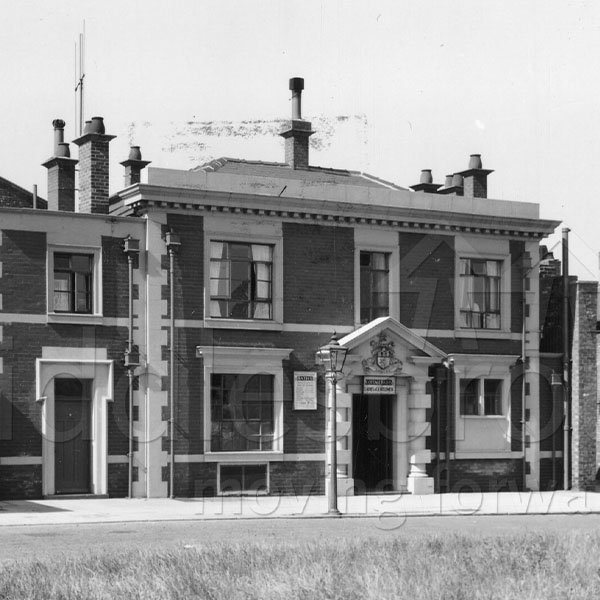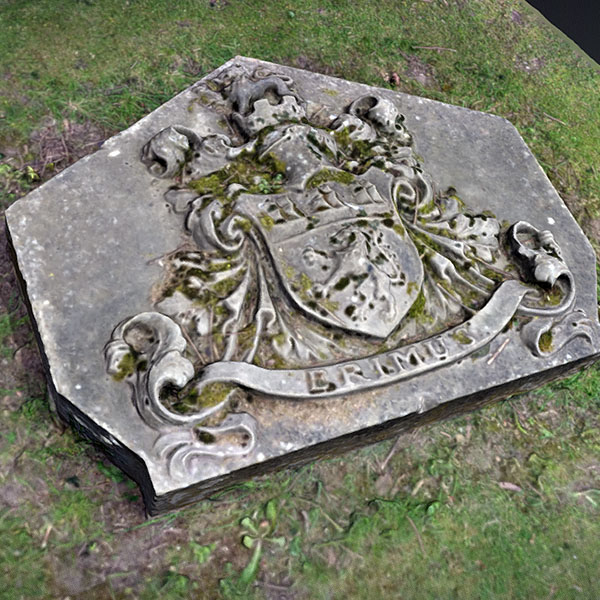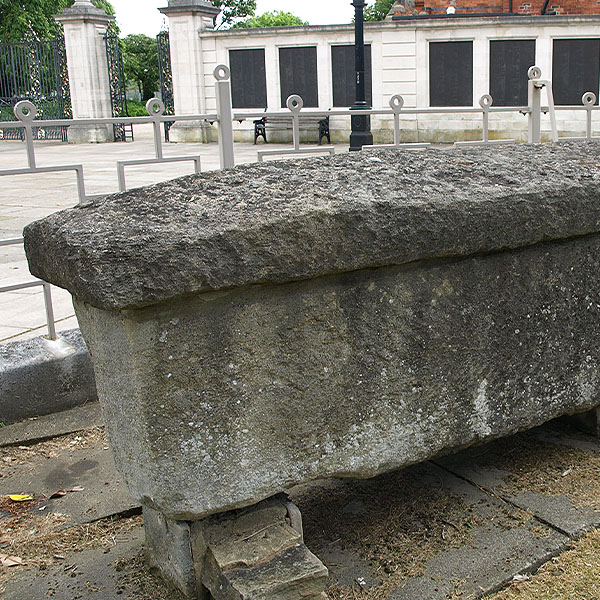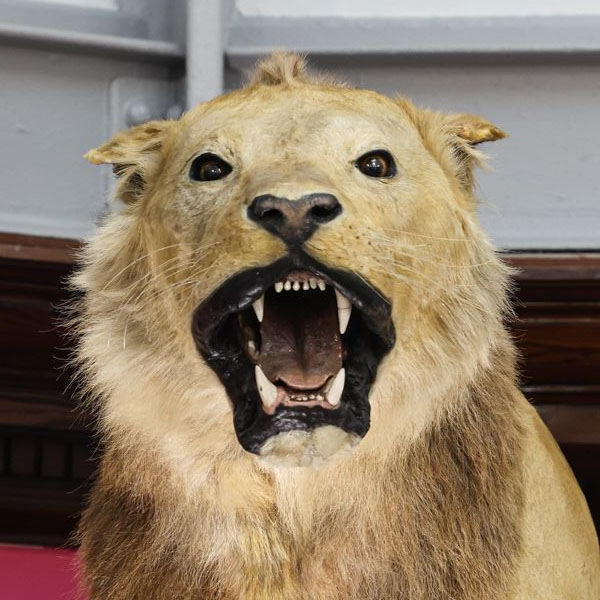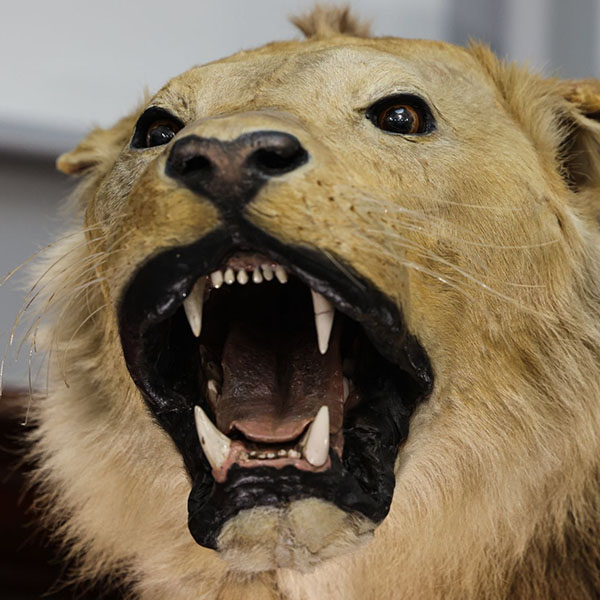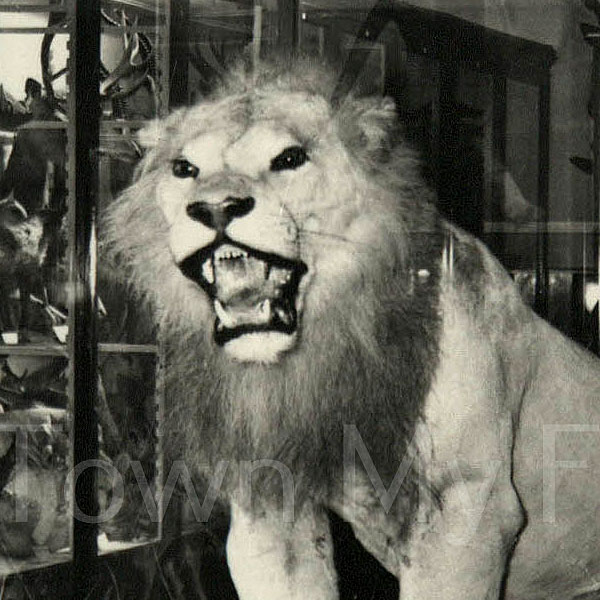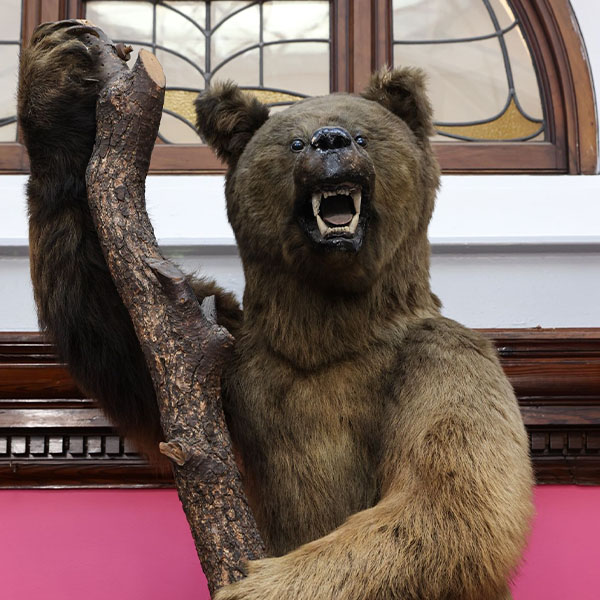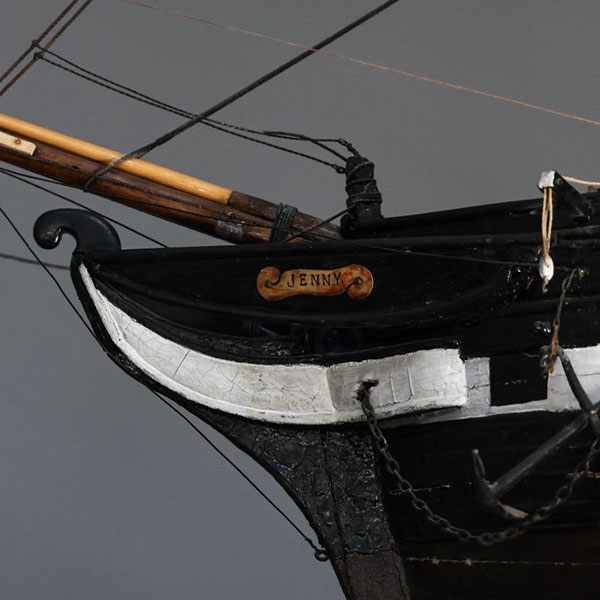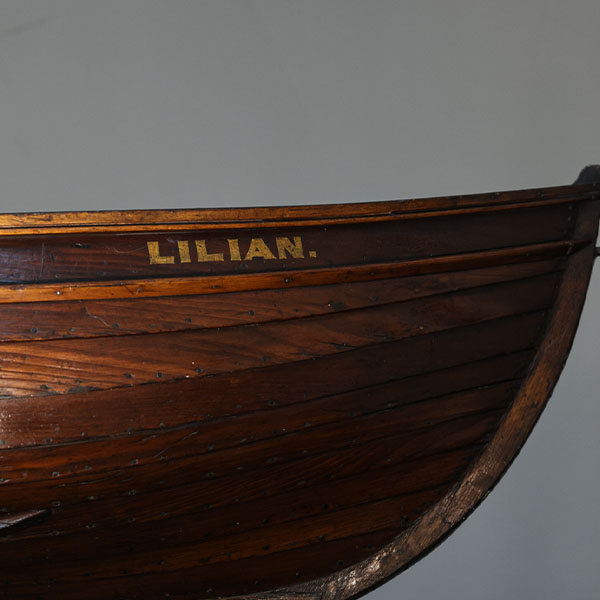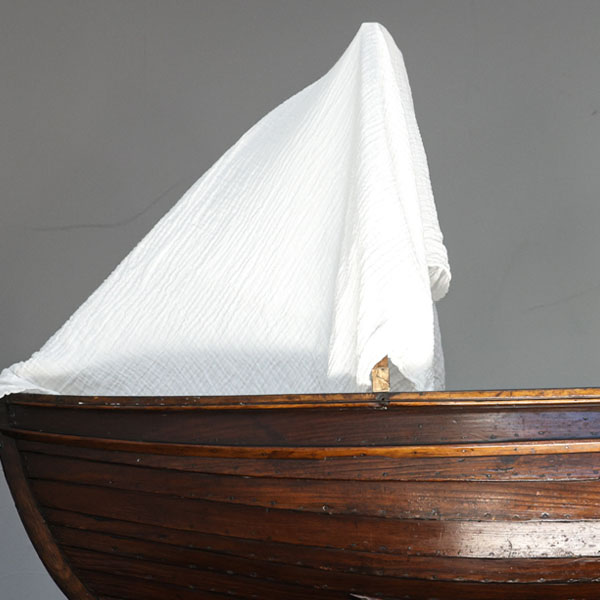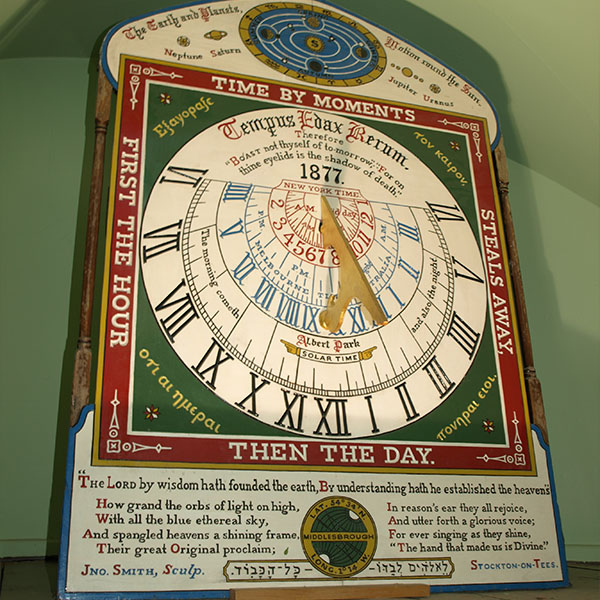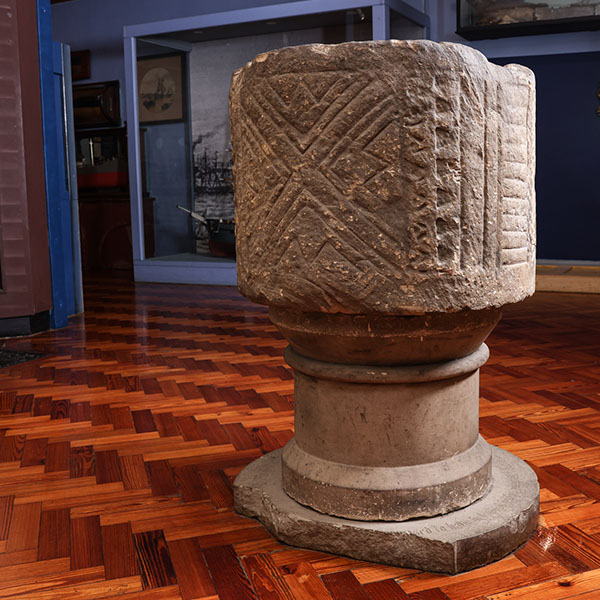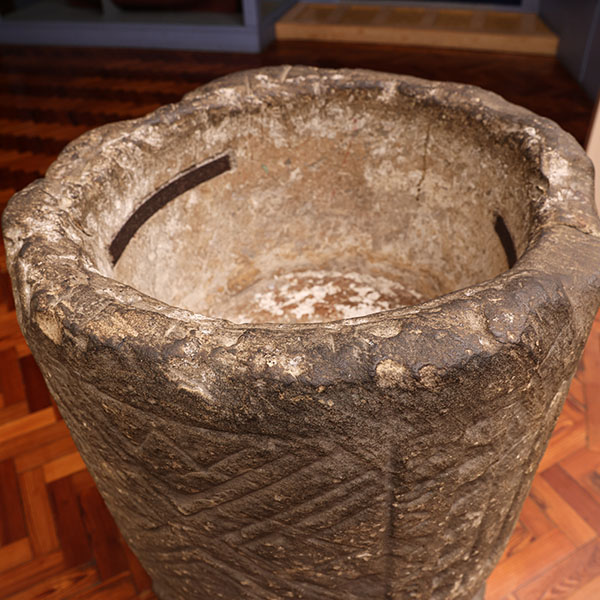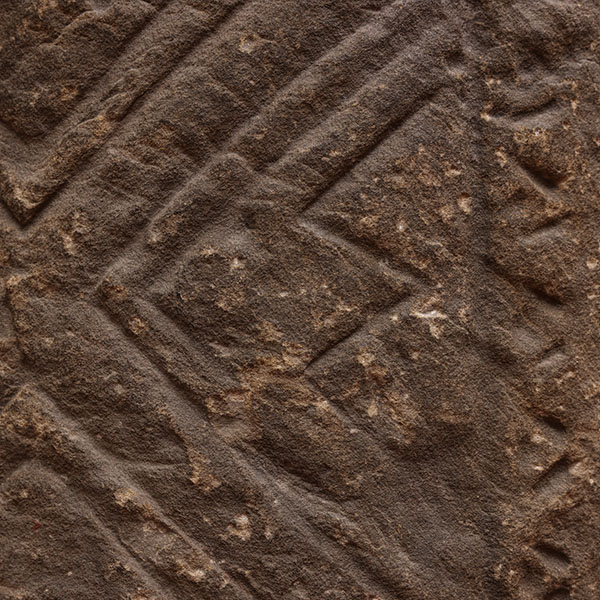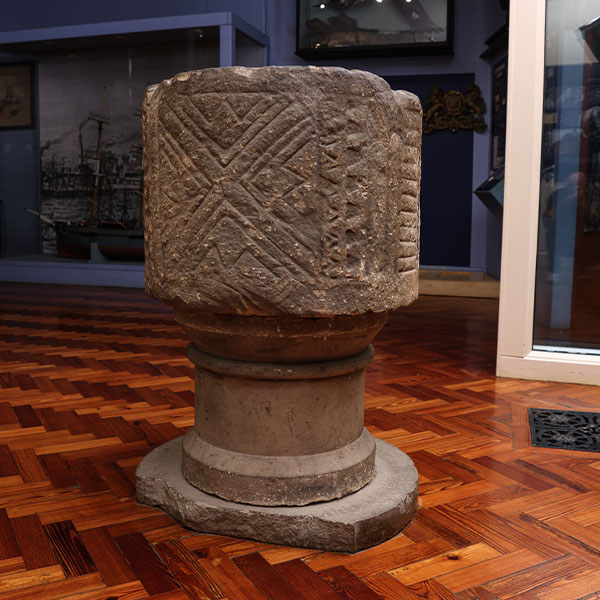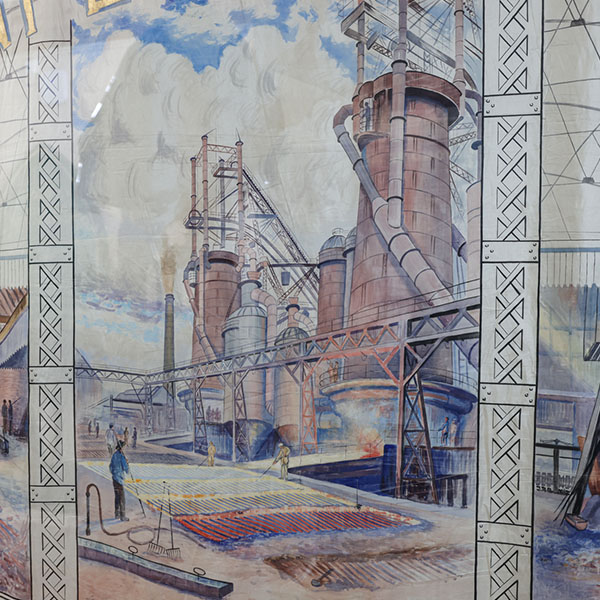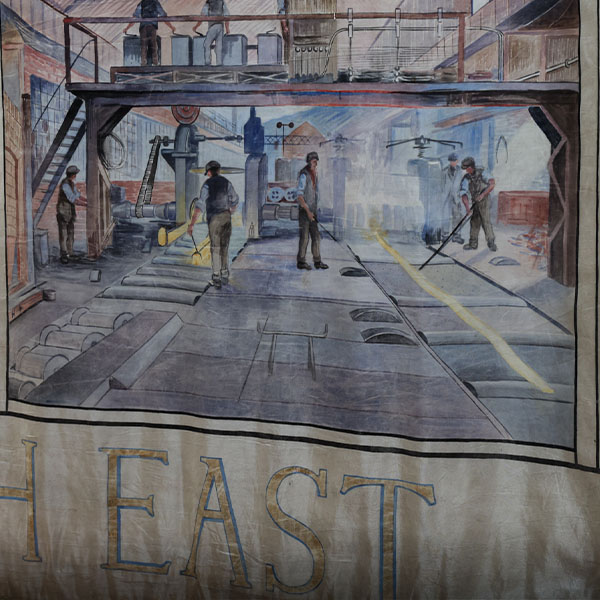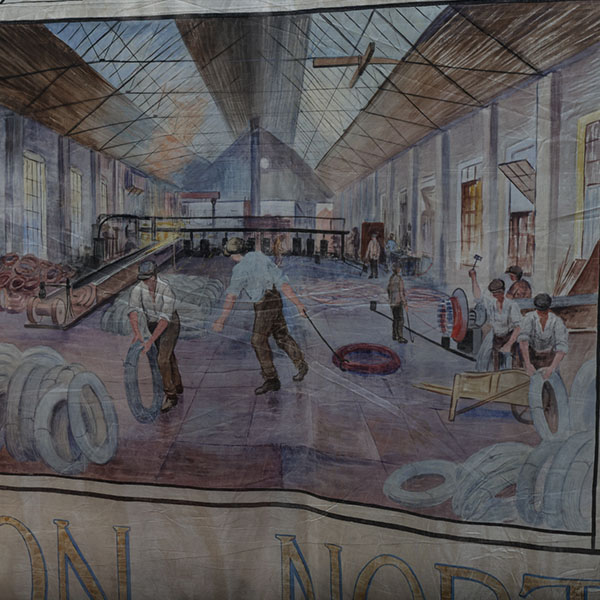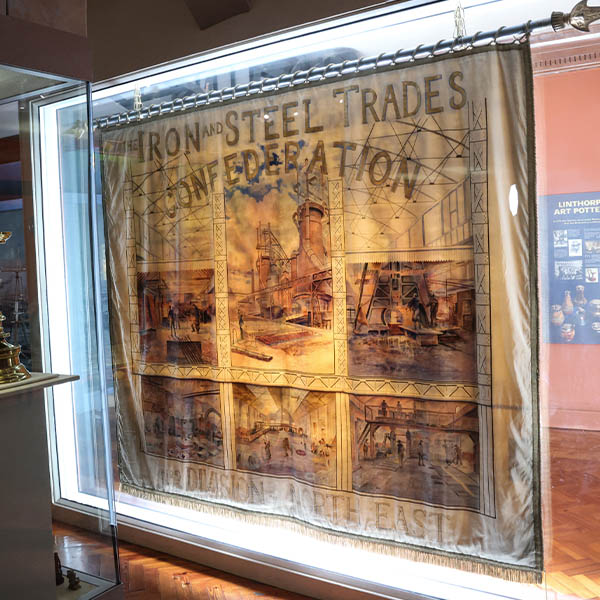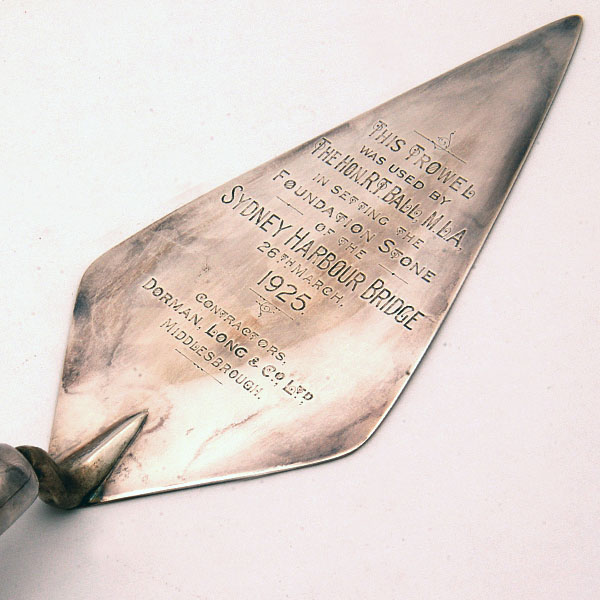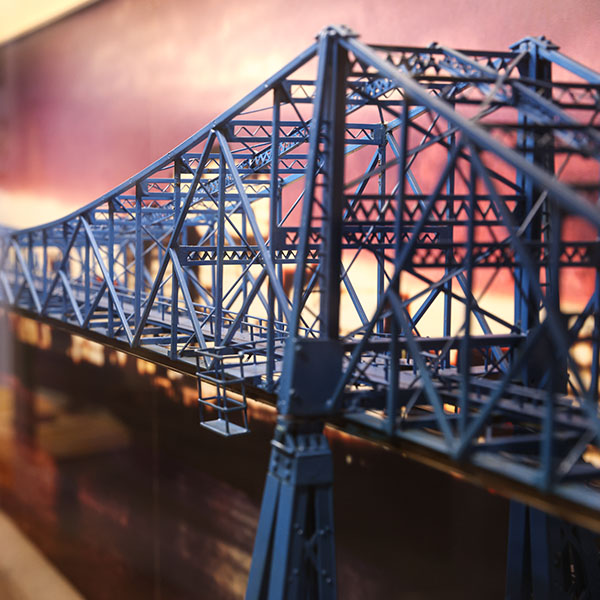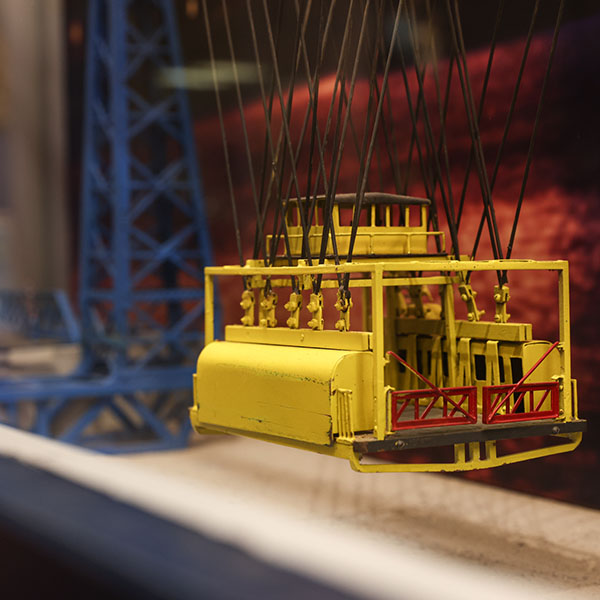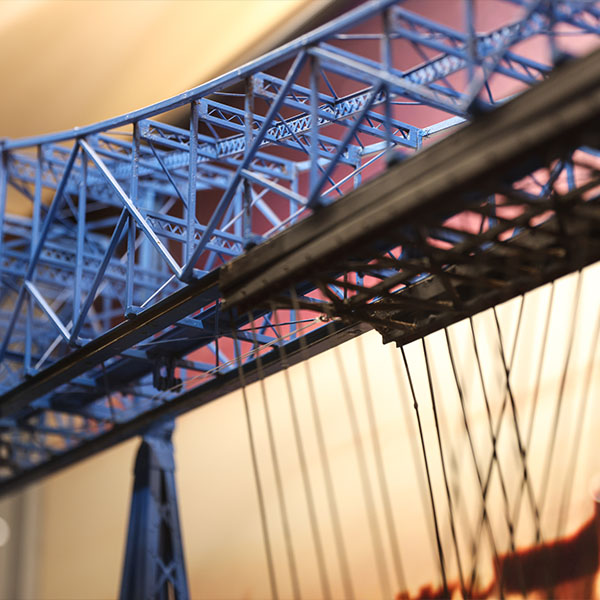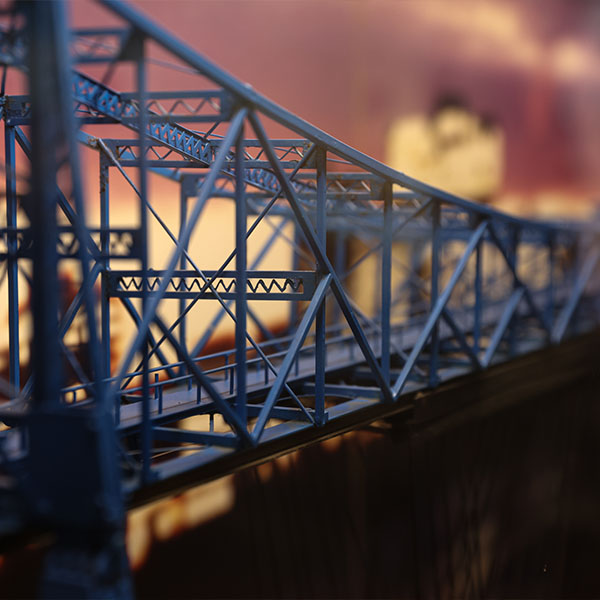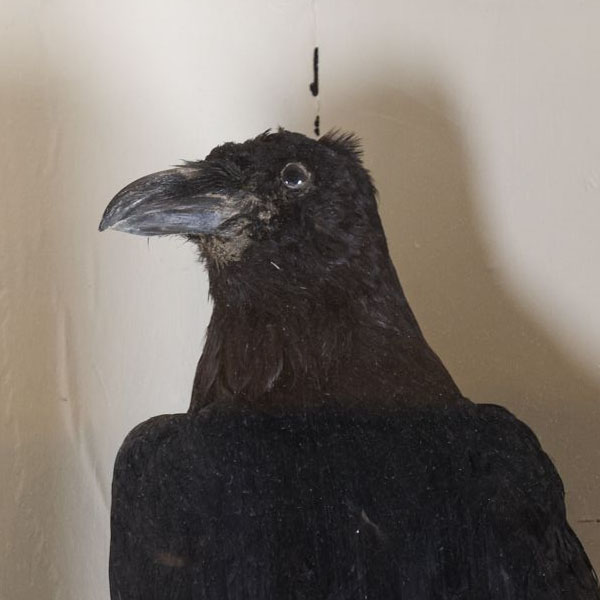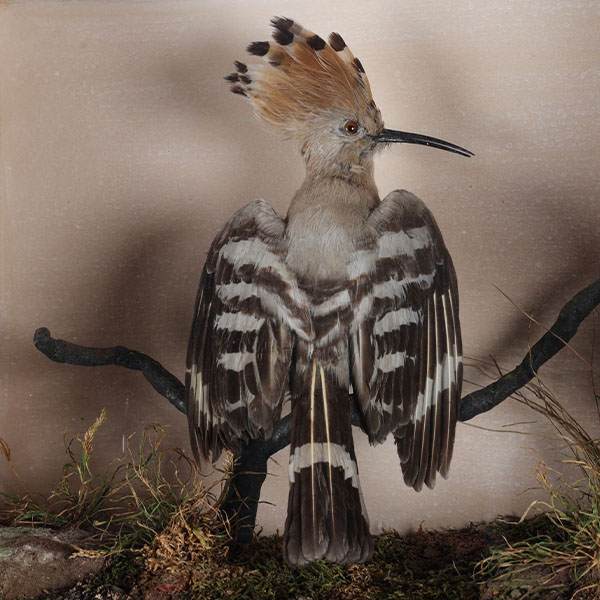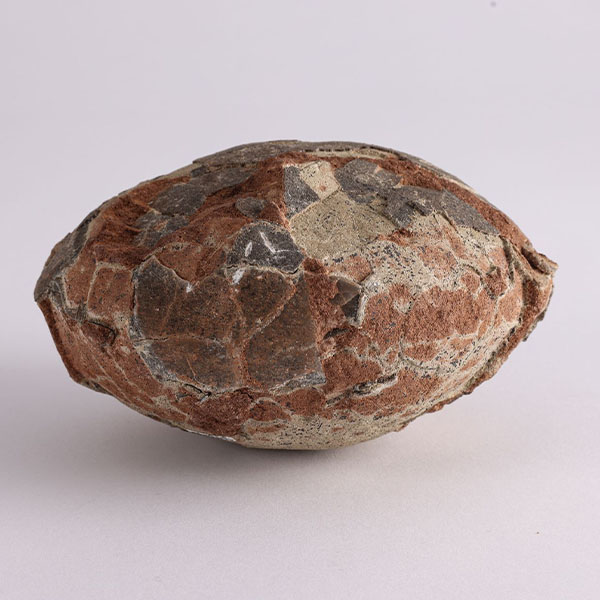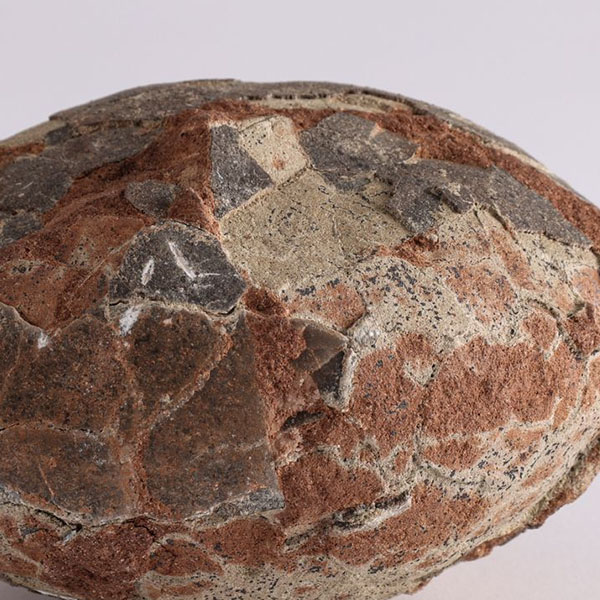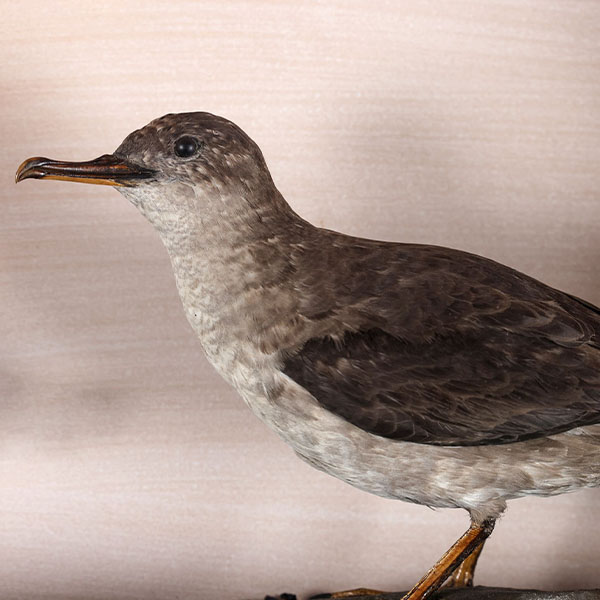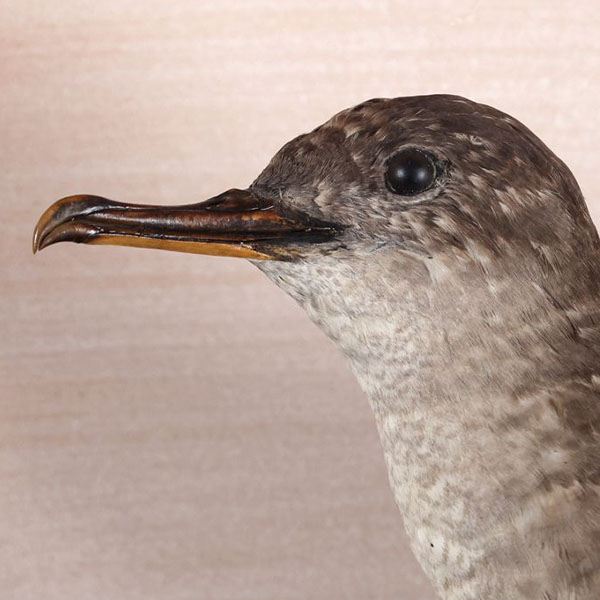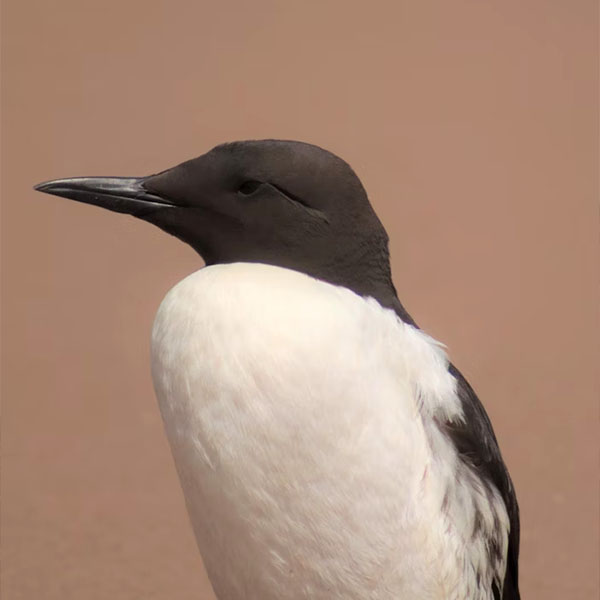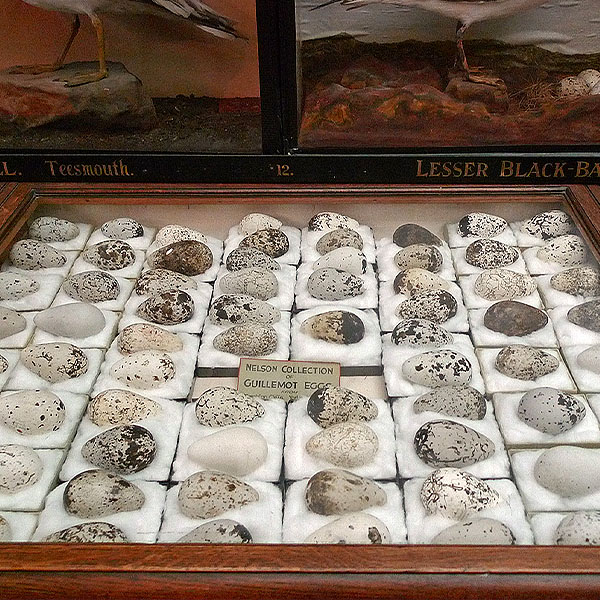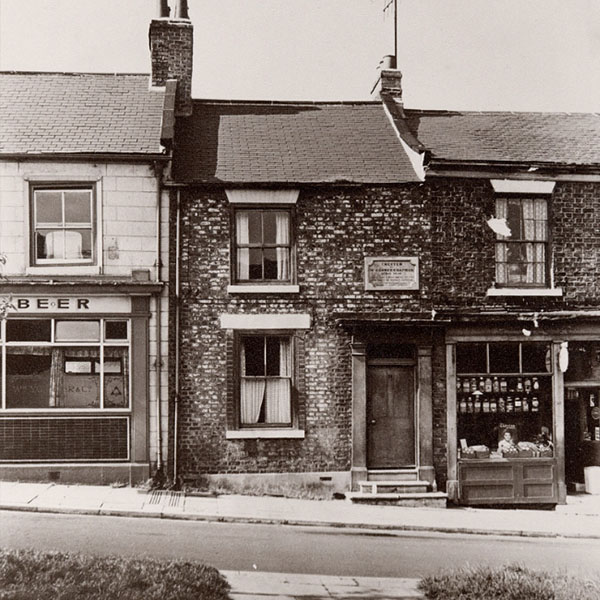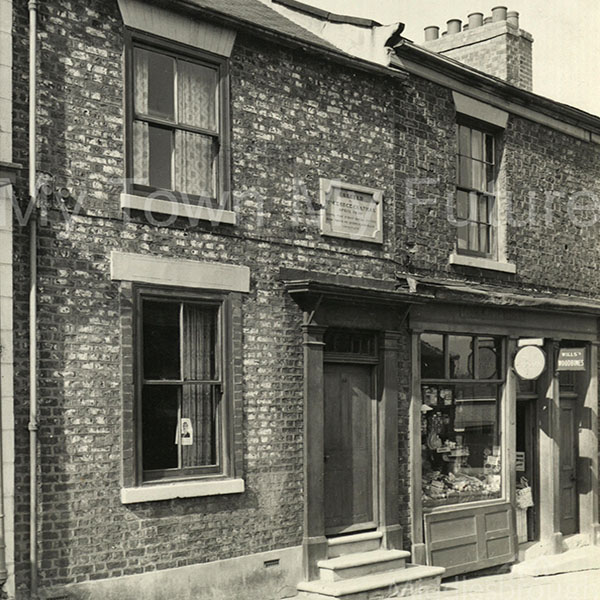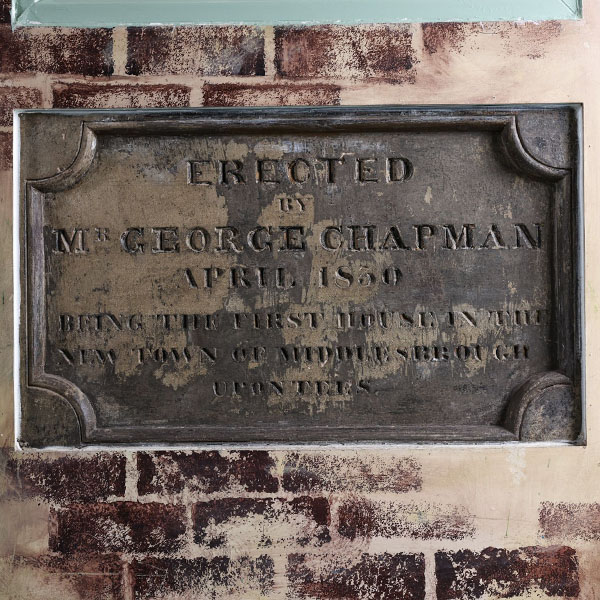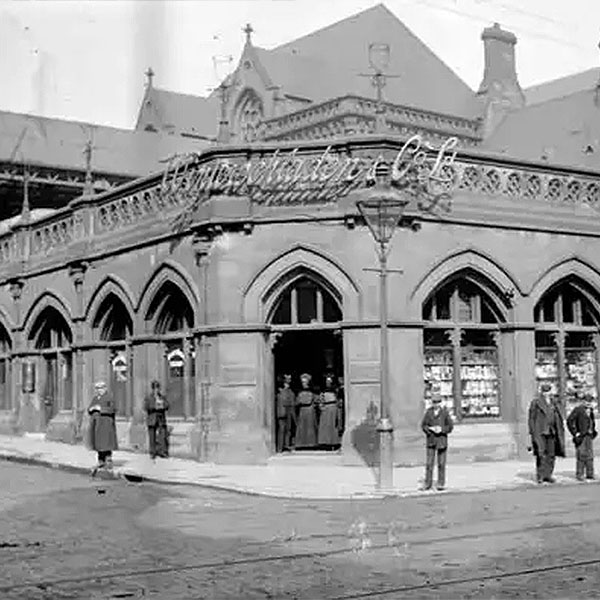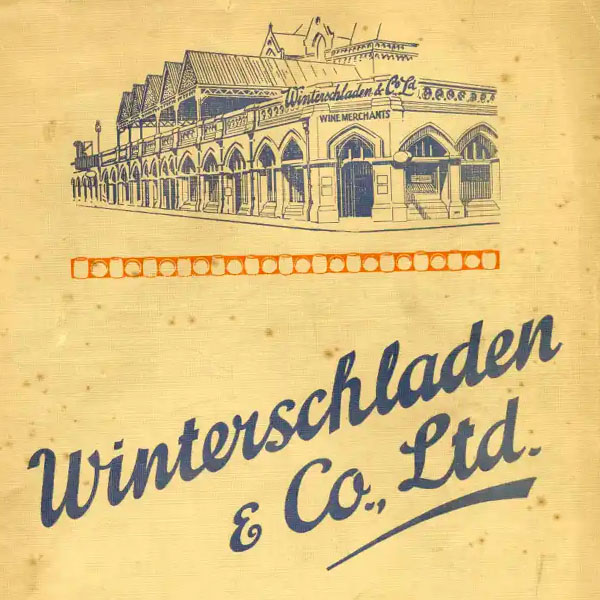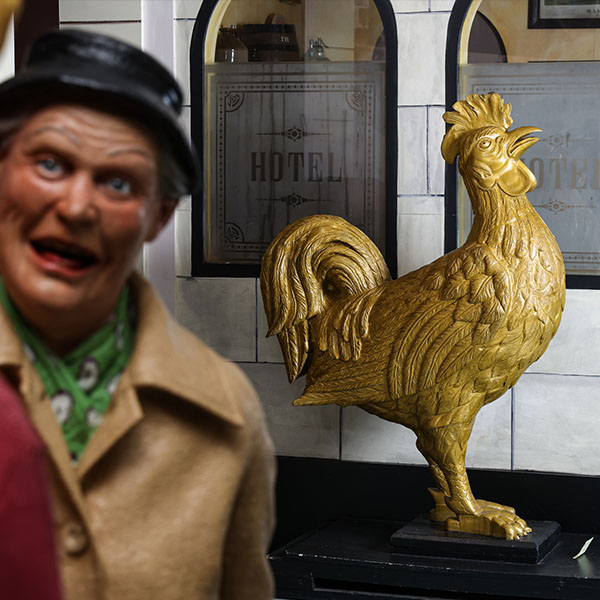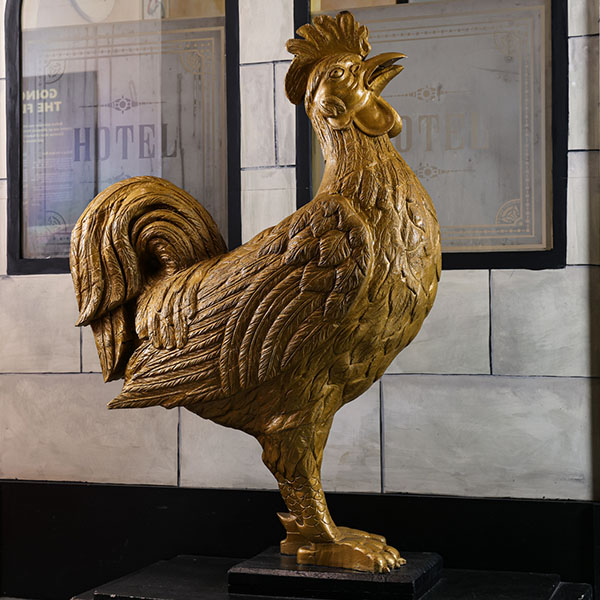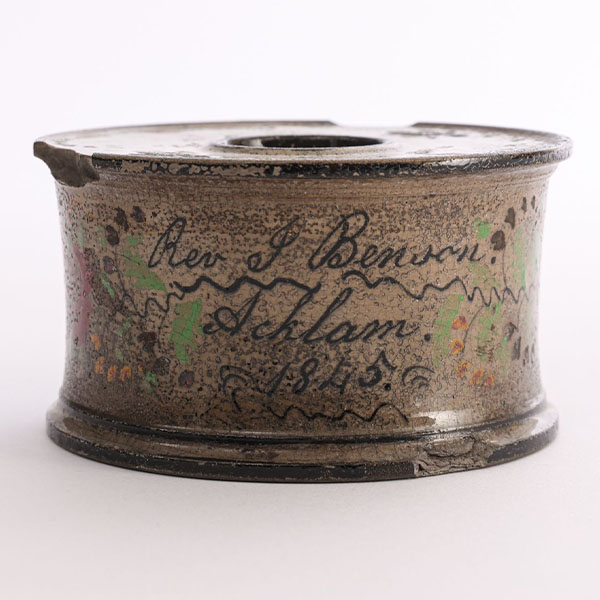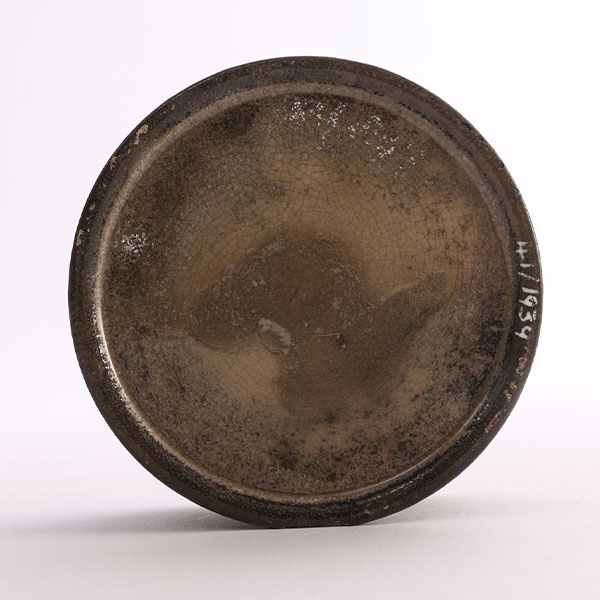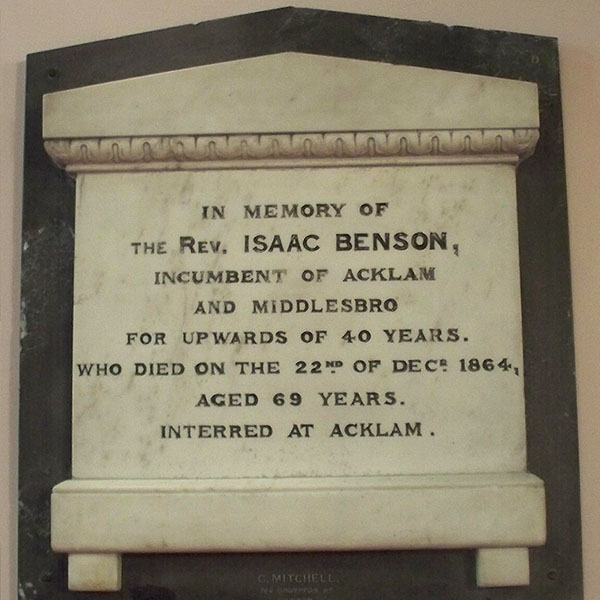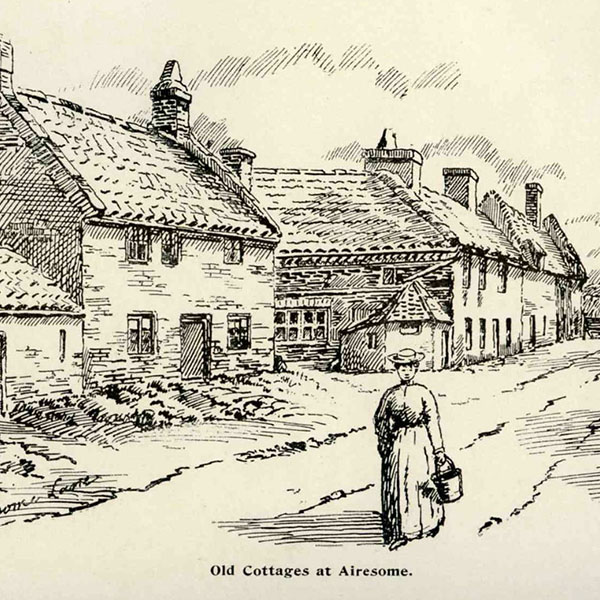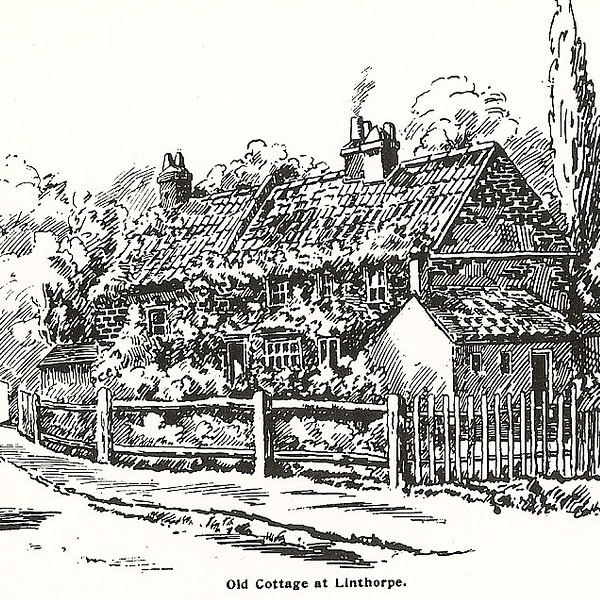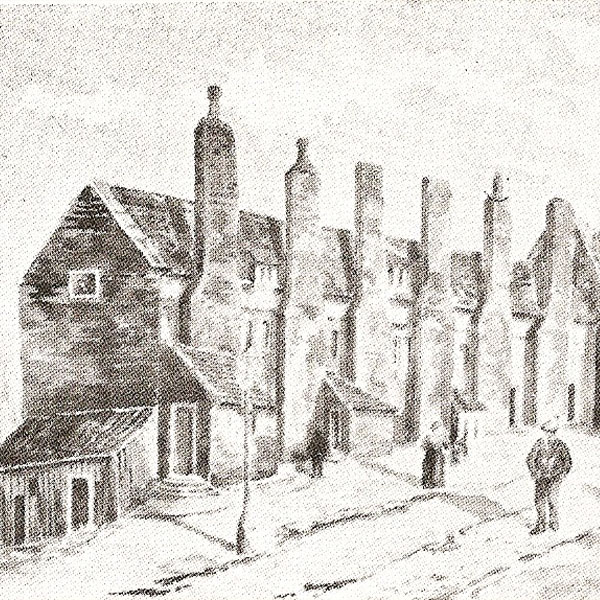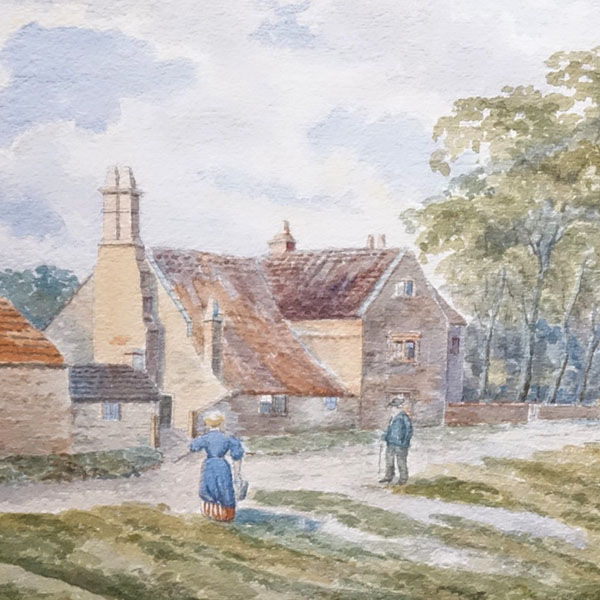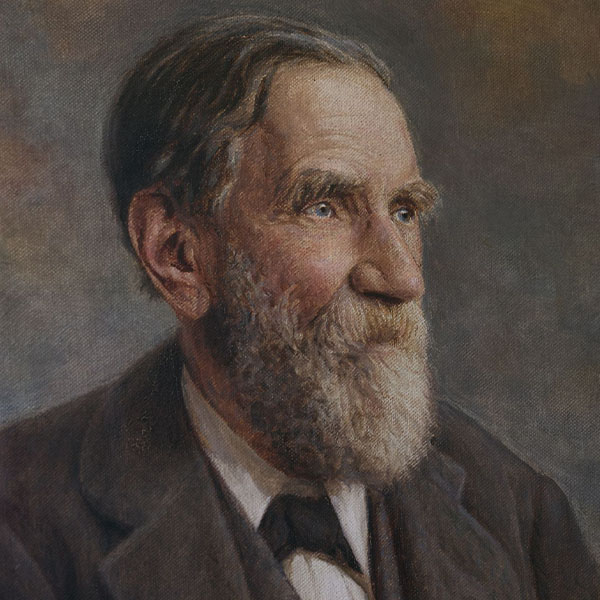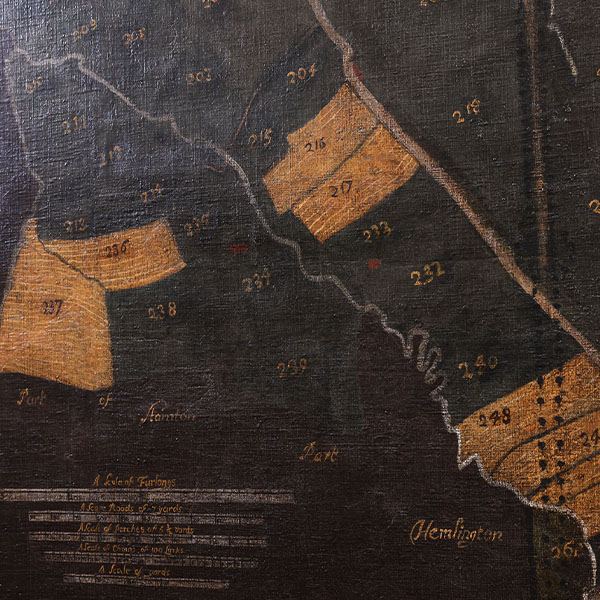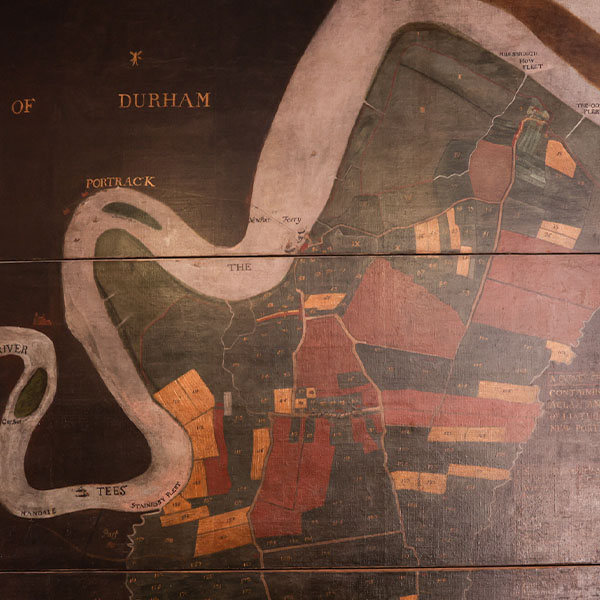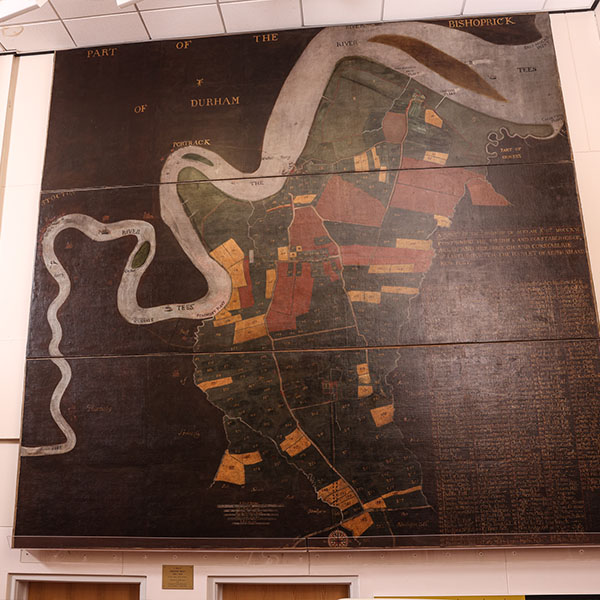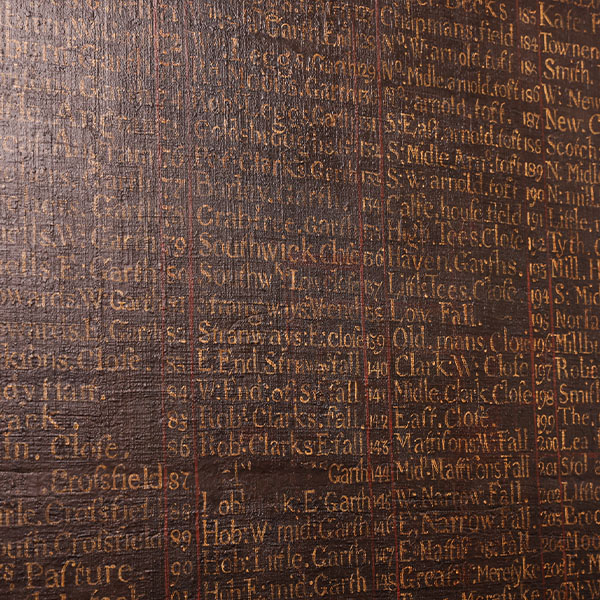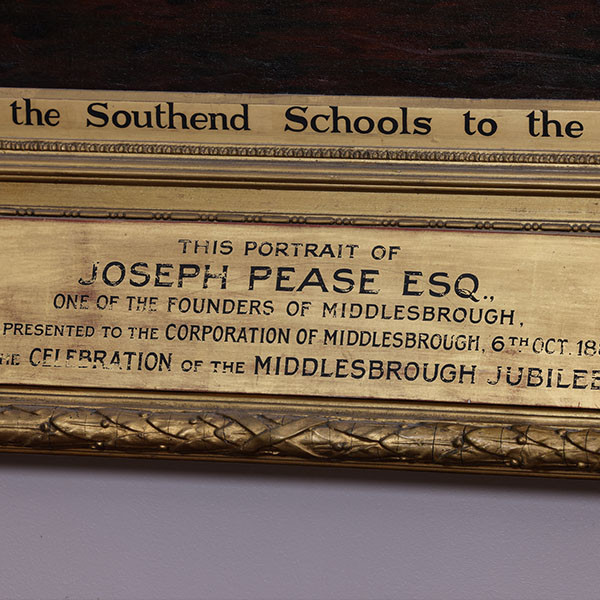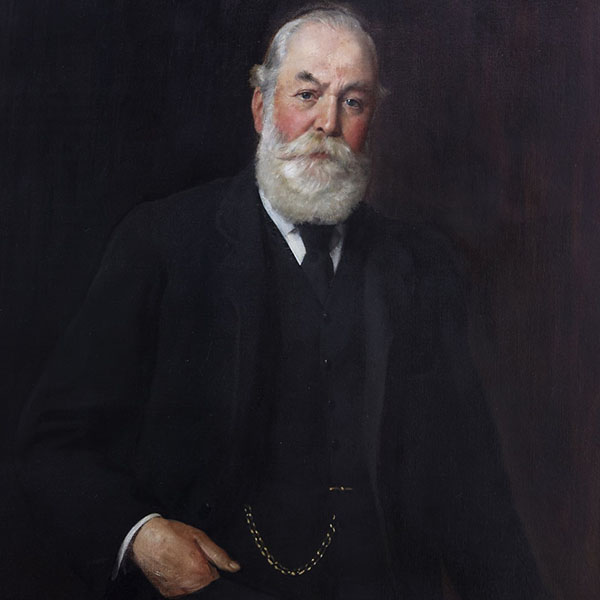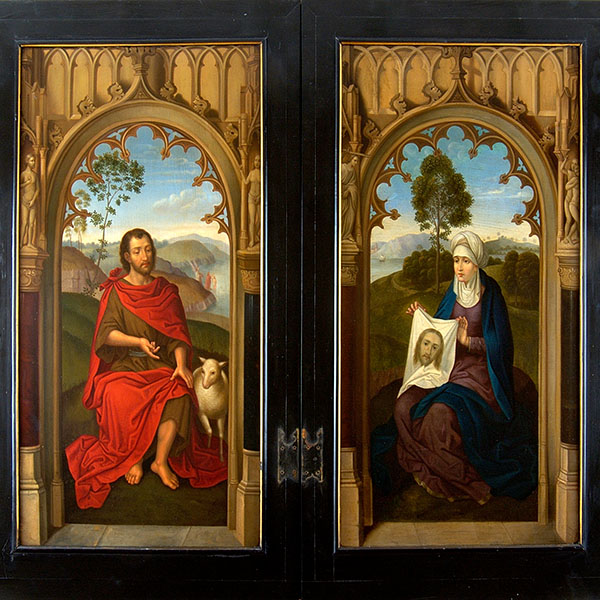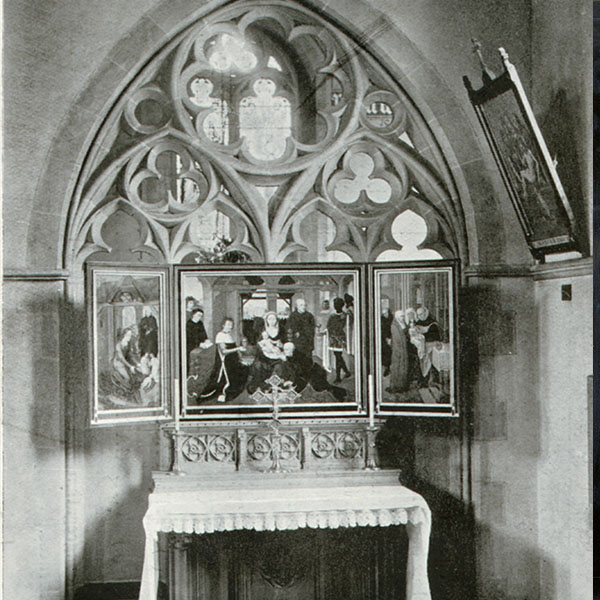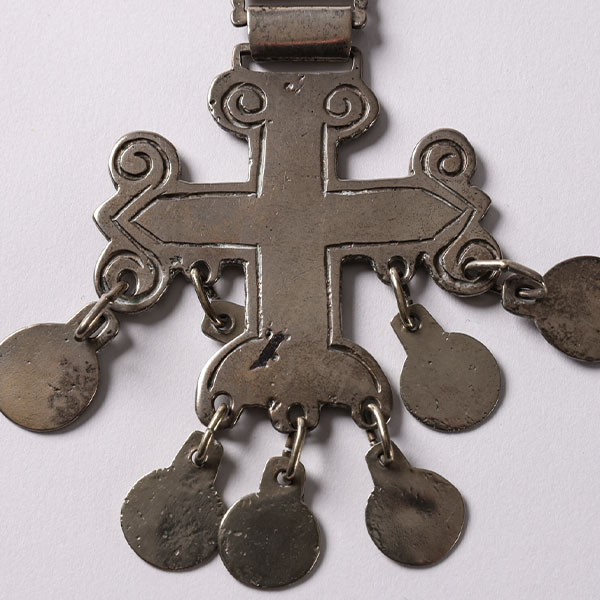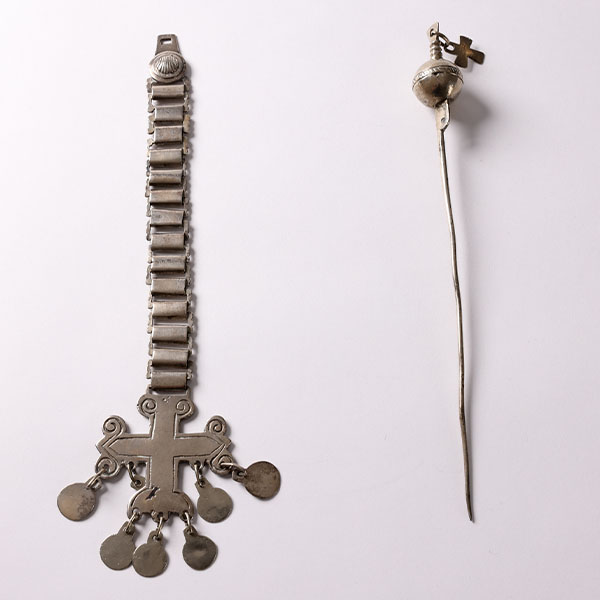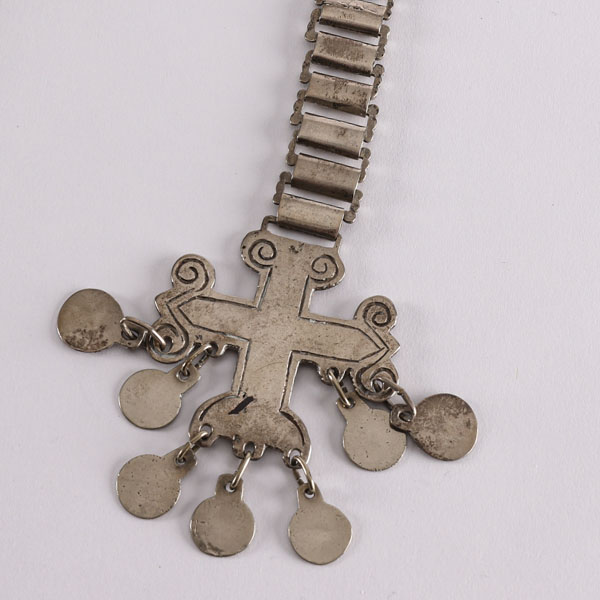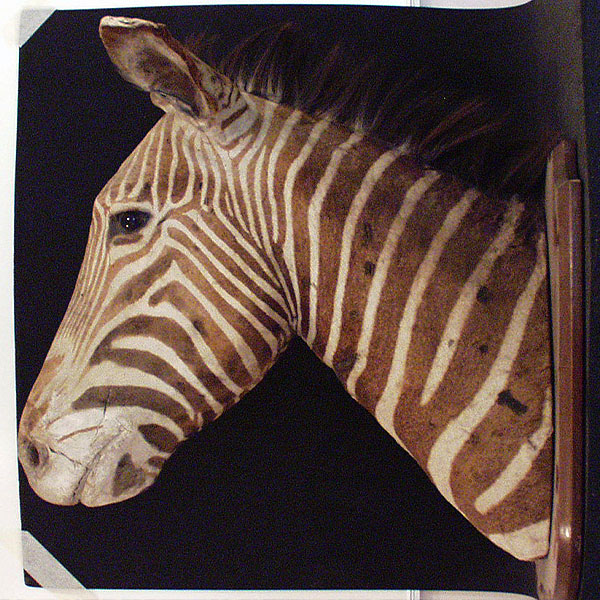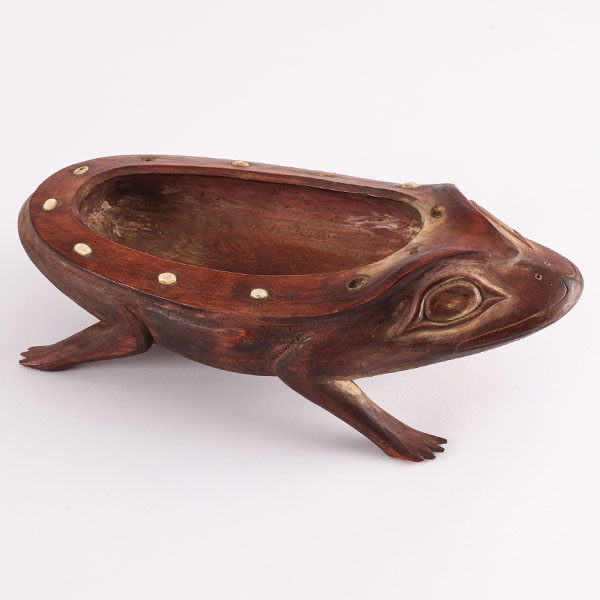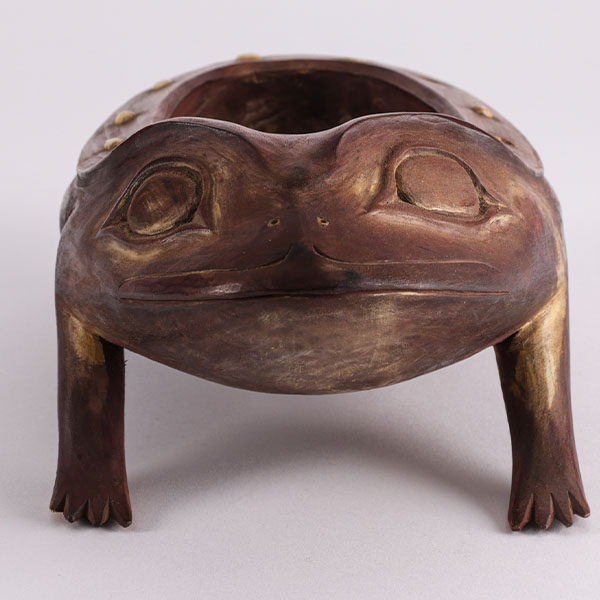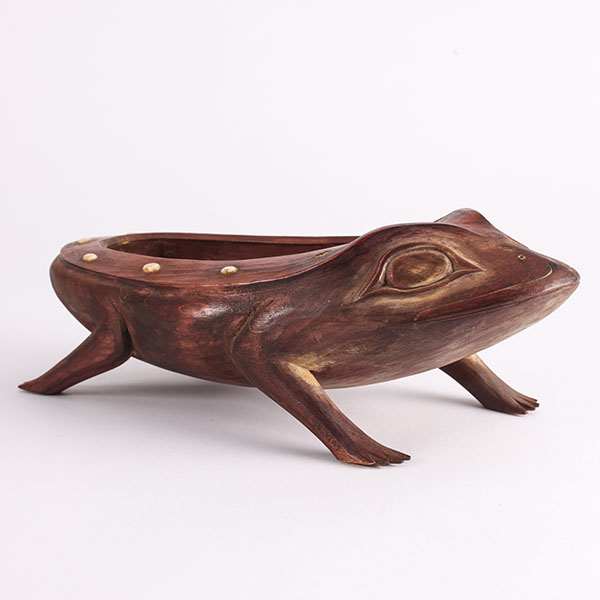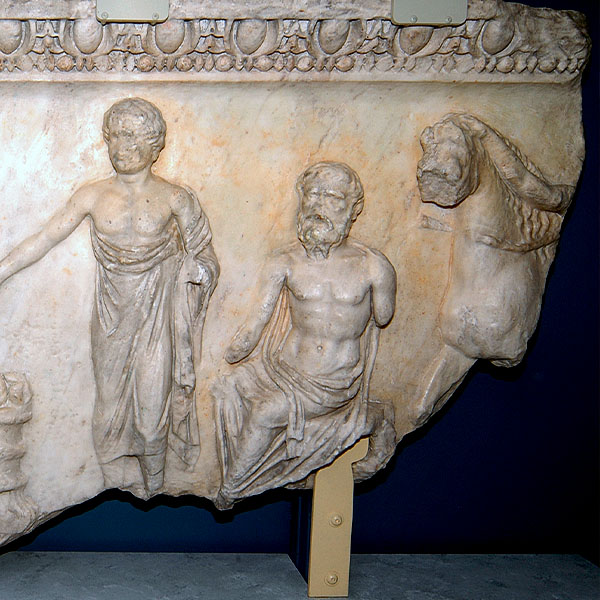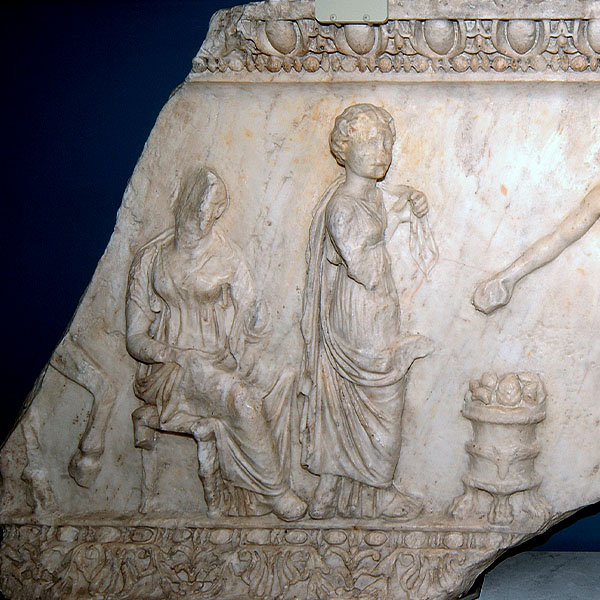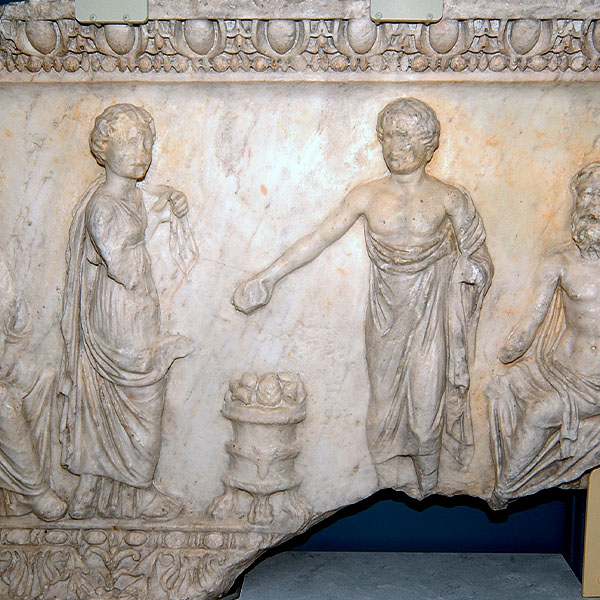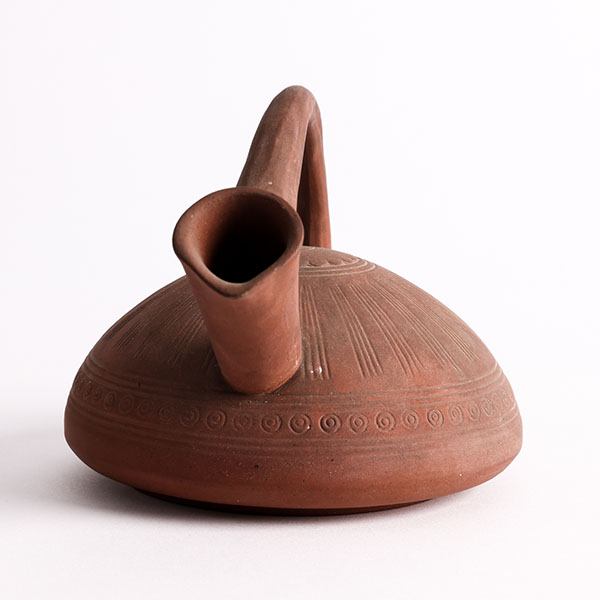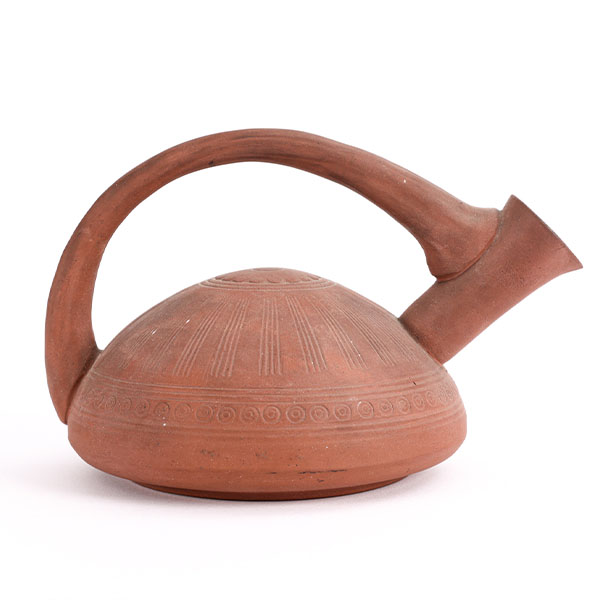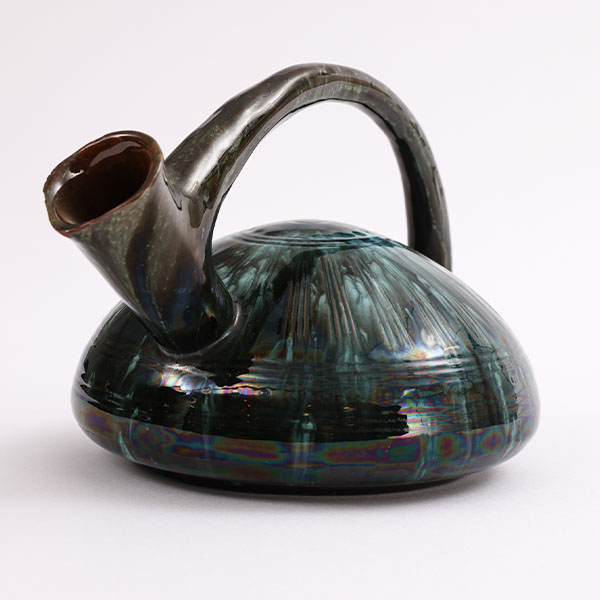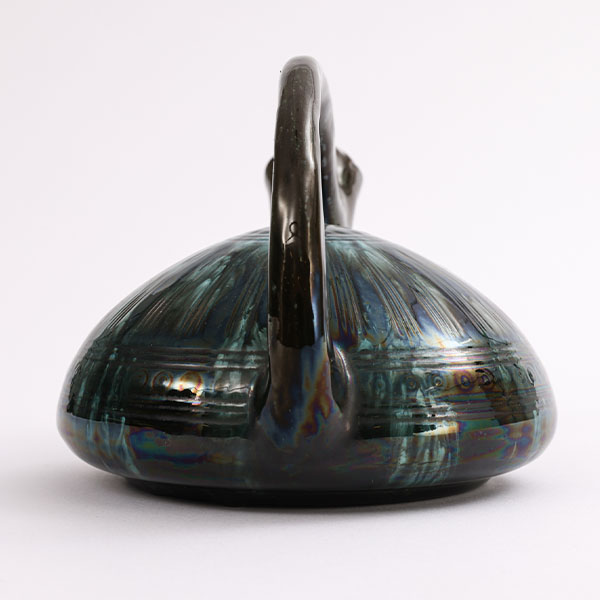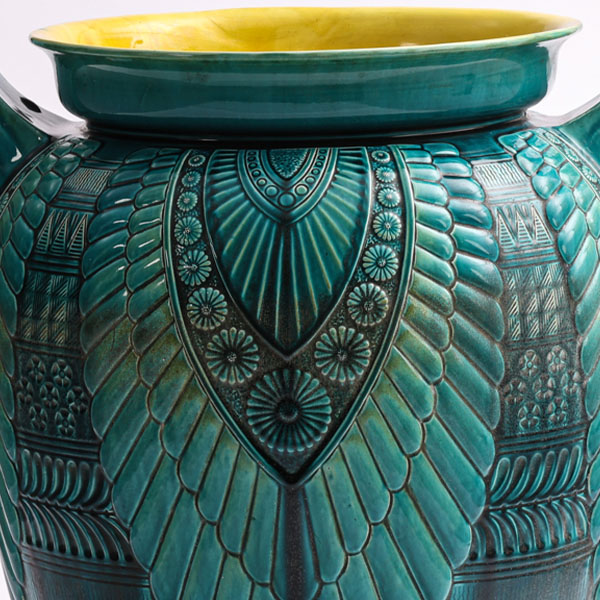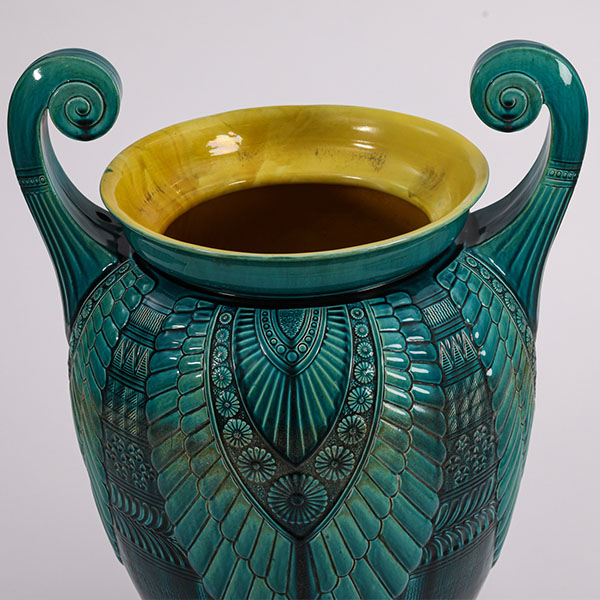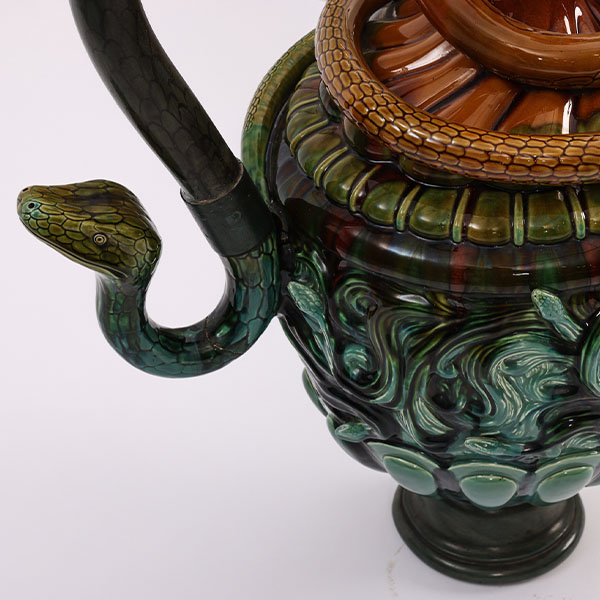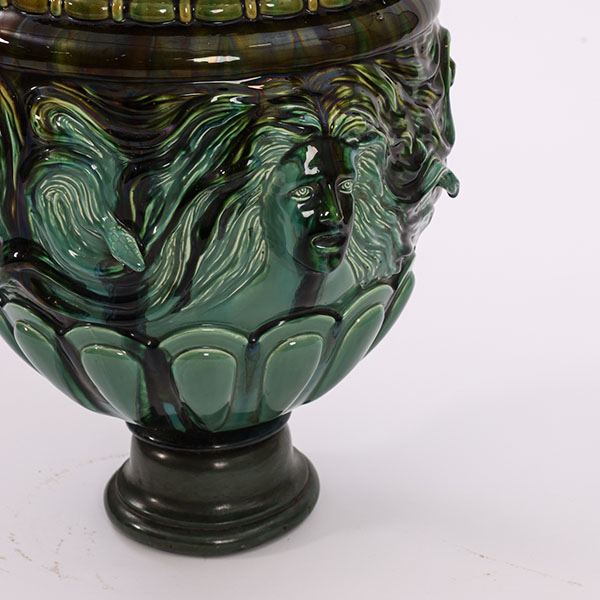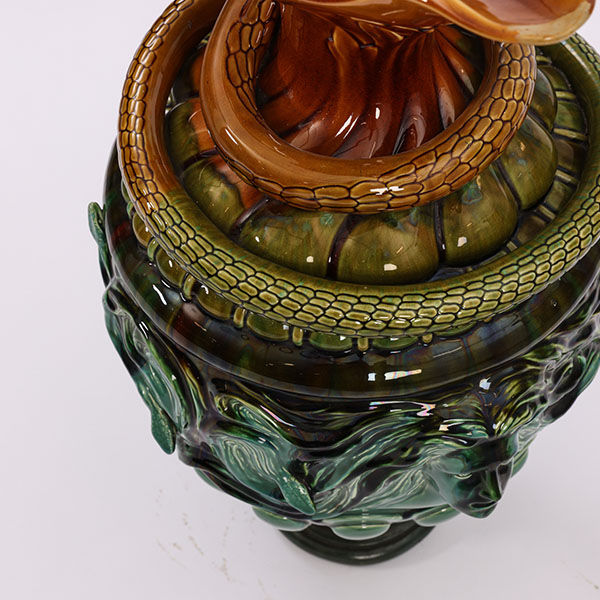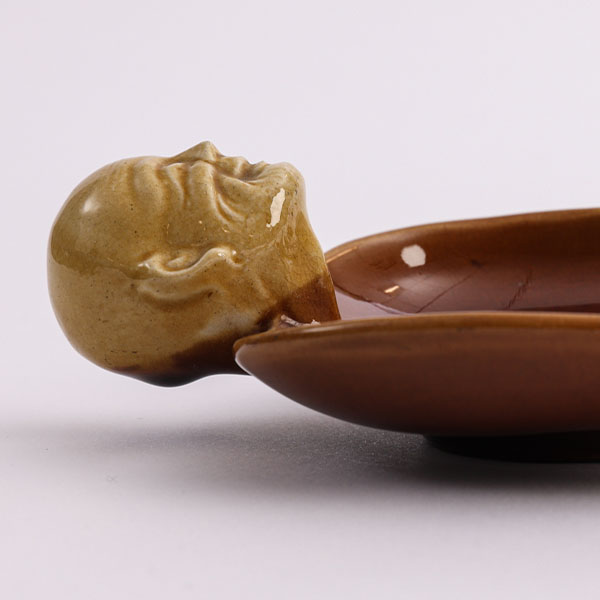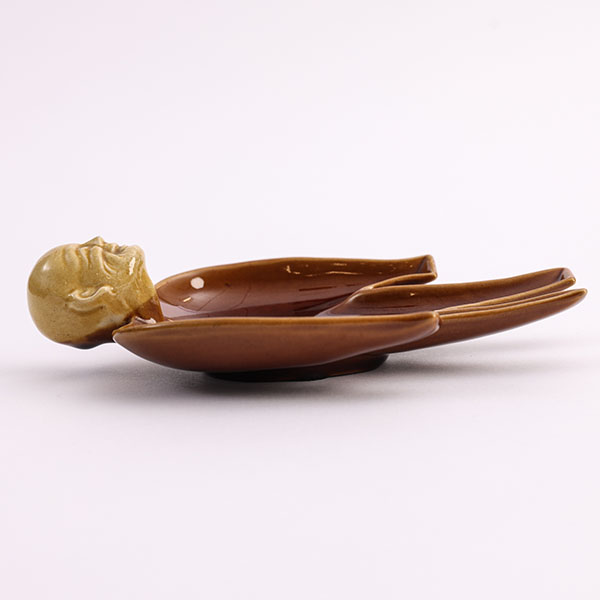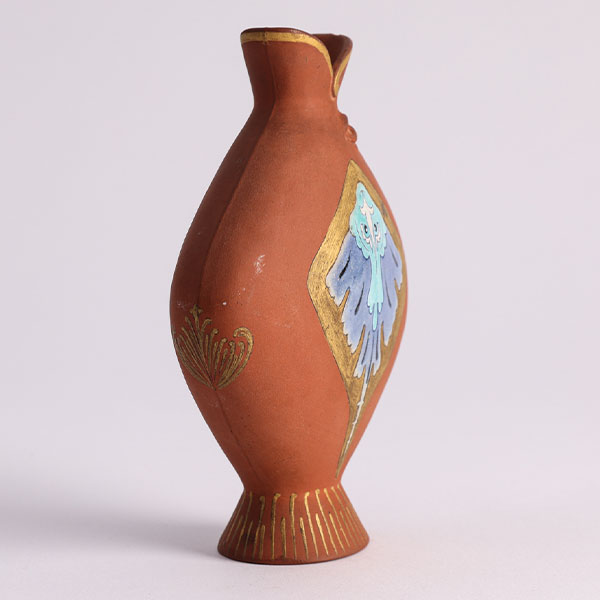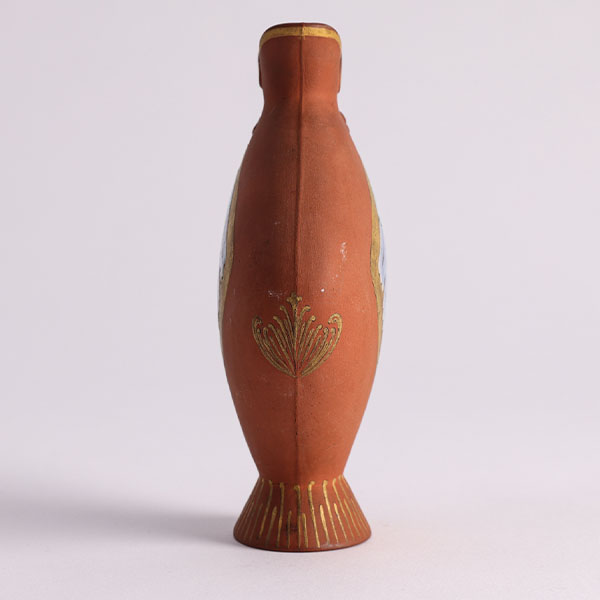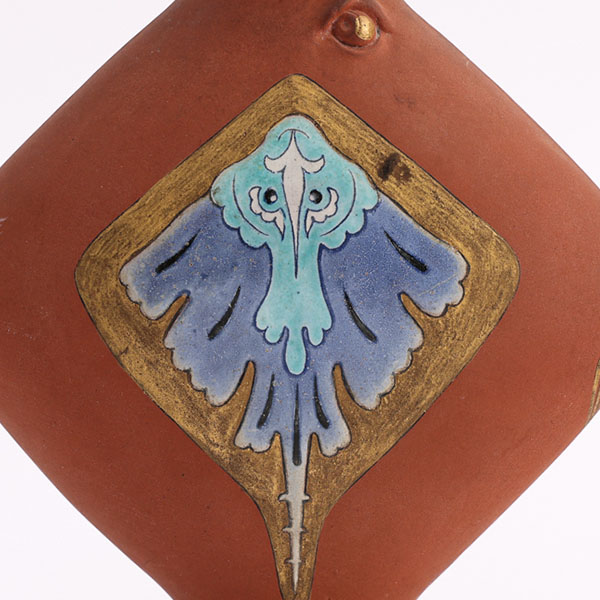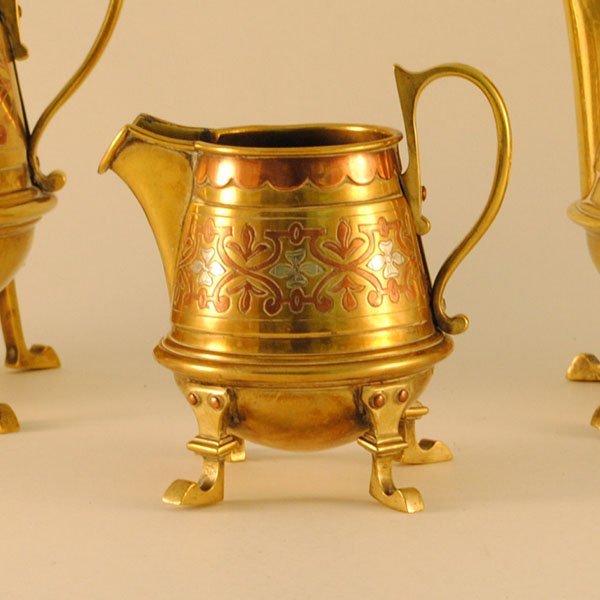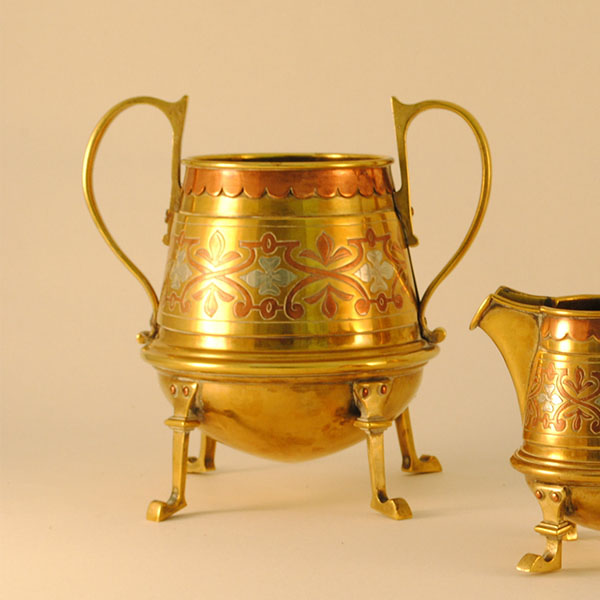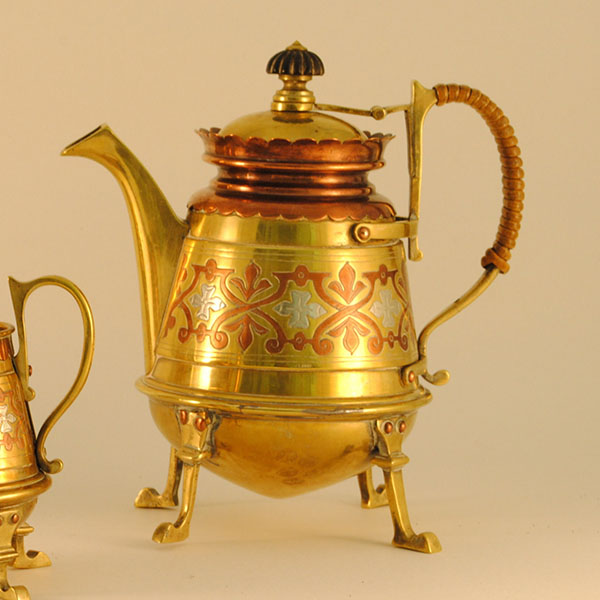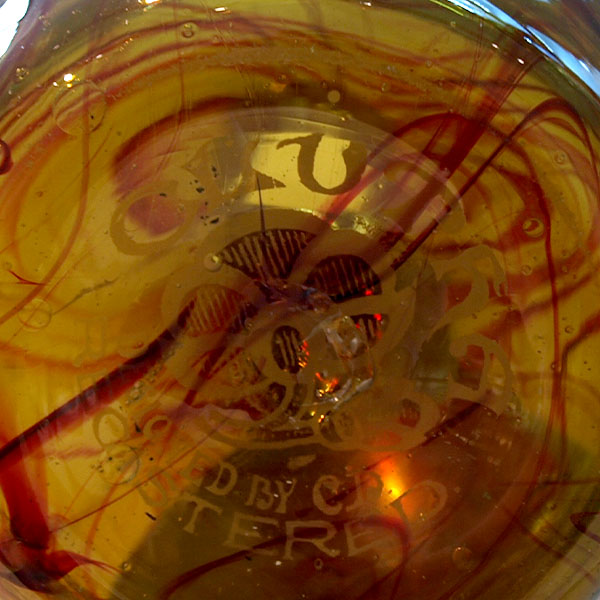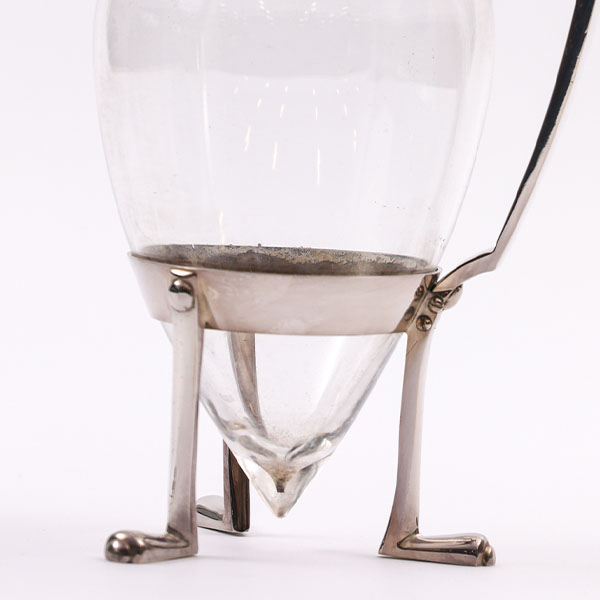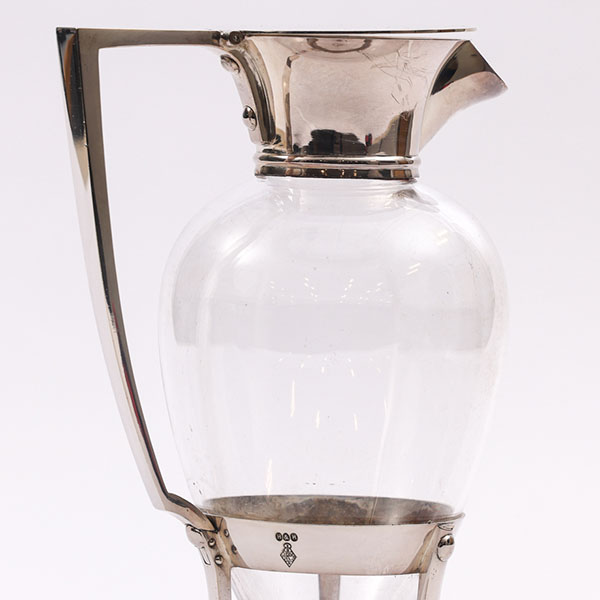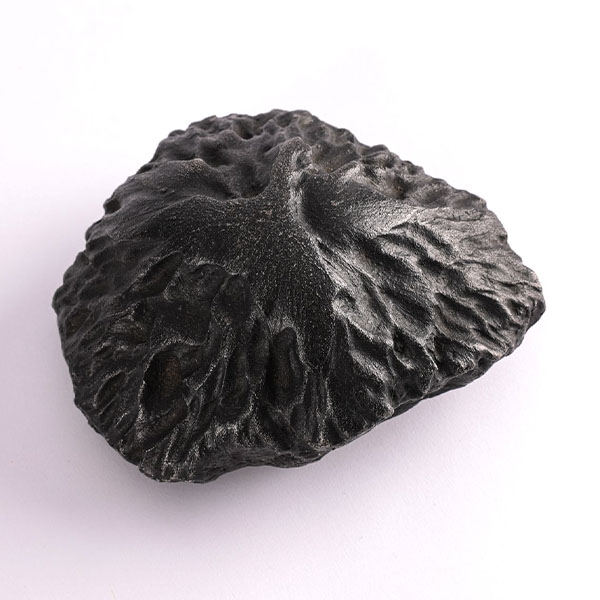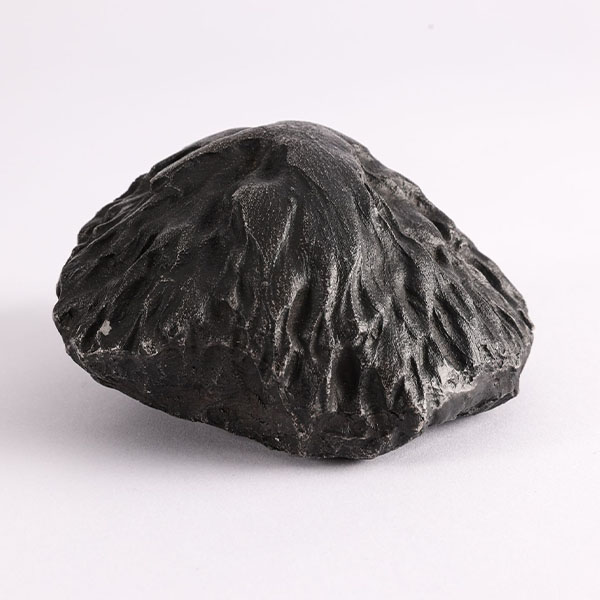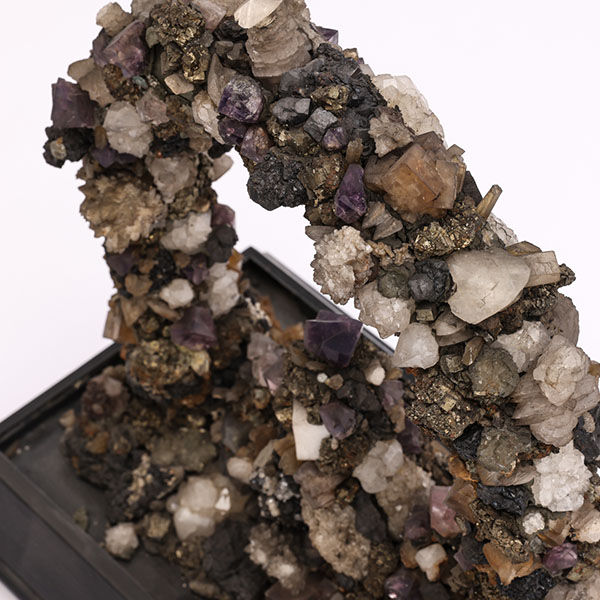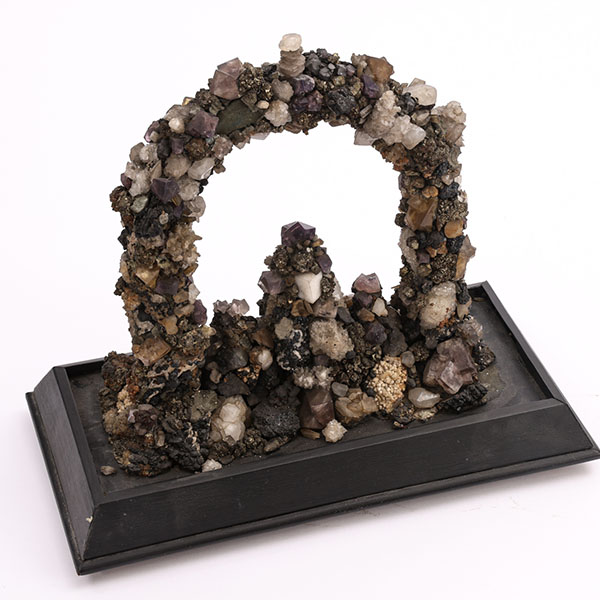|
|
|
0 |
|
|
|
|
0 |
|
|
|
|
0 |
|
| Teessaurus Park: Trail |
30/04/2024 |
0.8 |
1 |
0 |
| Teessaurus Park: Trail |
30/04/2024 |
0.8 |
1 |
0 |
| Teessaurus Park: Trail |
30/04/2024 |
0.8 |
1 |
0 |
| Teessaurus Park: Trail |
30/04/2024 |
0.8 |
1 |
0 |
| Teessaurus Park: Trail |
30/04/2024 |
0.8 |
1 |
0 |
| Teessaurus Park: Trail |
30/04/2024 |
0.8 |
1 |
0 |
| Teessaurus Park: Trail |
30/04/2024 |
0.8 |
1 |
0 |
| Teessaurus Park: Trail |
30/04/2024 |
0.8 |
1 |
0 |
| Teessaurus Park: Trail |
30/04/2024 |
0.8 |
1 |
0 |
| Teessaurus Park: Trail |
30/04/2024 |
0.8 |
1 |
0 |
| Teessaurus Park: Trail |
30/04/2024 |
0.8 |
1 |
0 |
| Teessaurus Park: Trail |
30/04/2024 |
0.8 |
1 |
0 |
| Teessaurus Park: Trail |
30/04/2024 |
0.8 |
1 |
0 |
| Teessaurus Park: Trail |
30/04/2024 |
0.8 |
1 |
0 |
| Teessaurus Park: Trail |
30/04/2024 |
0.8 |
1 |
0 |
| Teessaurus Park: Trail |
30/04/2024 |
0.8 |
1 |
0 |
| Teessaurus Park: Trail |
30/04/2024 |
0.8 |
1 |
0 |
| Teessaurus Park: Trail |
30/04/2024 |
0.8 |
1 |
0 |
| Teessaurus Park: Trail |
30/04/2024 |
0.8 |
1 |
0 |
| Teessaurus Park: Trail |
30/04/2024 |
0.8 |
1 |
0 |
| Teessaurus Park: Trail |
30/04/2024 |
0.8 |
1 |
0 |
| Teessaurus Park: Trail |
30/04/2024 |
0.8 |
1 |
0 |
| Teessaurus Park: Trail |
30/04/2024 |
0.8 |
1 |
0 |
| Teessaurus Park: Trail |
30/04/2024 |
0.8 |
1 |
0 |
| Teessaurus Park: Trail |
30/04/2024 |
0.8 |
1 |
0 |
| Teessaurus Park: Trail |
30/04/2024 |
0.8 |
1 |
0 |
| Teessaurus Park: Trail |
30/04/2024 |
0.8 |
1 |
0 |
| Teessaurus Park: Trail |
30/04/2024 |
0.8 |
1 |
0 |
| Teessaurus Park: Trail |
30/04/2024 |
0.8 |
1 |
0 |
| Teessaurus Park: Trail |
30/04/2024 |
0.8 |
1 |
0 |
| Teessaurus Park: Trail |
30/04/2024 |
0.8 |
1 |
0 |
| Teessaurus Park: Trail |
30/04/2024 |
0.8 |
1 |
0 |
| Teessaurus Park: Trail |
30/04/2024 |
0.8 |
1 |
0 |
| Teessaurus Park: Trail |
30/04/2024 |
0.8 |
1 |
0 |
| Teessaurus Park: Trail |
30/04/2024 |
0.8 |
1 |
0 |
| Teessaurus Park: Trail |
30/04/2024 |
0.8 |
1 |
0 |
| Teessaurus Park: Trail |
30/04/2024 |
0.8 |
1 |
0 |
| Teessaurus Park: Trail |
30/04/2024 |
0.8 |
1 |
0 |
| Teessaurus Park: Trail |
30/04/2024 |
0.8 |
1 |
0 |
| Teessaurus Park: Trail |
30/04/2024 |
0.8 |
1 |
0 |
| Teessaurus Park: Trail |
30/04/2024 |
0.8 |
1 |
0 |
| Teessaurus Park: Trail |
30/04/2024 |
0.8 |
1 |
0 |
| Teessaurus Park: Trail |
30/04/2024 |
0.8 |
1 |
0 |
| Teessaurus Park: Trail |
30/04/2024 |
0.8 |
1 |
0 |
| Teessaurus Park: Trail |
30/04/2024 |
0.8 |
1 |
0 |
| Teessaurus Park: Trail |
30/04/2024 |
0.8 |
1 |
0 |
| Teessaurus Park: Trail |
30/04/2024 |
0.8 |
1 |
0 |
| Teessaurus Park: Trail |
30/04/2024 |
0.8 |
1 |
0 |
| Teessaurus Park: Trail |
30/04/2024 |
0.8 |
1 |
0 |
| Teessaurus Park: Trail |
30/04/2024 |
0.8 |
1 |
0 |
| Teessaurus Park: Trail |
30/04/2024 |
0.8 |
1 |
0 |
| Teessaurus Park: Trail |
30/04/2024 |
0.8 |
1 |
0 |
| Teessaurus Park: Trail |
30/04/2024 |
0.8 |
1 |
0 |
| Teessaurus Park: Trail |
30/04/2024 |
0.8 |
1 |
0 |
| Teessaurus Park: Trail |
30/04/2024 |
0.8 |
1 |
0 |
| Teessaurus Park: Trail |
30/04/2024 |
0.8 |
1 |
0 |
| Teessaurus Park: Trail |
30/04/2024 |
0.8 |
1 |
0 |
| Teessaurus Park: Trail |
30/04/2024 |
0.8 |
1 |
0 |
| Teessaurus Park: Trail |
30/04/2024 |
0.8 |
1 |
0 |
| Teessaurus Park: Trail |
30/04/2024 |
0.8 |
1 |
0 |
| Teessaurus Park: Trail |
30/04/2024 |
0.8 |
1 |
0 |
| Teessaurus Park: Trail |
30/04/2024 |
0.8 |
1 |
0 |
| Teessaurus Park: Trail |
30/04/2024 |
0.8 |
1 |
0 |
| Teessaurus Park: Trail |
30/04/2024 |
0.8 |
1 |
0 |
| Teessaurus Park: Trail |
30/04/2024 |
0.8 |
1 |
0 |
| Teessaurus Park: Trail |
30/04/2024 |
0.8 |
1 |
0 |
| Teessaurus Park: Trail |
30/04/2024 |
0.8 |
1 |
0 |
| Teessaurus Park: Trail |
30/04/2024 |
0.8 |
1 |
0 |
| Teessaurus Park: Trail |
30/04/2024 |
0.8 |
1 |
0 |
| Teessaurus Park: Trail |
30/04/2024 |
0.8 |
1 |
0 |
| Teessaurus Park: Trail |
30/04/2024 |
0.8 |
1 |
0 |
| Teessaurus Park: Trail |
30/04/2024 |
0.8 |
1 |
0 |
| Teessaurus Park: Trail |
30/04/2024 |
0.8 |
1 |
0 |
| Teessaurus Park: Trail |
30/04/2024 |
0.8 |
1 |
0 |
| Teessaurus Park: Trail |
30/04/2024 |
0.8 |
1 |
0 |
| Teessaurus Park: Trail |
30/04/2024 |
0.8 |
1 |
0 |
| Teessaurus Park: Trail |
30/04/2024 |
0.8 |
1 |
0 |
| Teessaurus Park: Trail |
30/04/2024 |
0.8 |
1 |
0 |
| Teessaurus Park: Trail |
30/04/2024 |
0.8 |
1 |
0 |
| Teessaurus Park: Trail |
30/04/2024 |
0.8 |
1 |
0 |
| Teessaurus Park: Trail |
30/04/2024 |
0.8 |
1 |
0 |
| Teessaurus Park: Trail |
30/04/2024 |
0.8 |
1 |
0 |
| Teessaurus Park: Trail |
30/04/2024 |
0.8 |
1 |
0 |
| Teessaurus Park: Trail |
30/04/2024 |
0.8 |
1 |
0 |
| Teessaurus Park: Trail |
30/04/2024 |
0.8 |
1 |
0 |
| Teessaurus Park: Trail |
30/04/2024 |
0.8 |
1 |
0 |
| Teessaurus Park: Trail |
30/04/2024 |
0.8 |
1 |
0 |
| Teessaurus Park: Trail |
30/04/2024 |
0.8 |
1 |
0 |
| Teessaurus Park: Trail |
30/04/2024 |
0.8 |
1 |
0 |
| Teessaurus Park: Trail |
30/04/2024 |
0.8 |
1 |
0 |
| Teessaurus Park: Trail |
30/04/2024 |
0.8 |
1 |
0 |
| Teessaurus Park: Trail |
30/04/2024 |
0.8 |
1 |
0 |
| Teessaurus Park: Trail |
30/04/2024 |
0.8 |
1 |
0 |
| Teessaurus Park: Trail |
30/04/2024 |
0.8 |
1 |
0 |
| Teessaurus Park: Trail |
30/04/2024 |
0.8 |
1 |
0 |
| Teessaurus Park: Trail |
30/04/2024 |
0.8 |
1 |
0 |
| Teessaurus Park: Trail |
30/04/2024 |
0.8 |
1 |
0 |
| Teessaurus Park: Trail |
30/04/2024 |
0.8 |
1 |
0 |
| Teessaurus Park: Trail |
30/04/2024 |
0.8 |
1 |
0 |
| Teessaurus Park: Trail |
30/04/2024 |
0.8 |
1 |
0 |
| Teessaurus Park: Trail |
30/04/2024 |
0.8 |
1 |
0 |
| Teessaurus Park: Trail |
30/04/2024 |
0.8 |
1 |
0 |
| Teessaurus Park: Trail |
30/04/2024 |
0.8 |
1 |
0 |
| Teessaurus Park: Trail |
30/04/2024 |
0.8 |
1 |
0 |
| Teessaurus Park: Trail |
30/04/2024 |
0.8 |
1 |
0 |
| Teessaurus Park: Trail |
30/04/2024 |
0.8 |
1 |
0 |
| Teessaurus Park: Trail |
30/04/2024 |
0.8 |
1 |
0 |
| Teessaurus Park: Trail |
30/04/2024 |
0.8 |
1 |
0 |
| Teessaurus Park: Trail |
30/04/2024 |
0.8 |
1 |
0 |
| Teessaurus Park: Trail |
30/04/2024 |
0.8 |
1 |
0 |
| Teessaurus Park: Trail |
30/04/2024 |
0.8 |
1 |
0 |
| Teessaurus Park: Trail |
30/04/2024 |
0.8 |
1 |
0 |
| Teessaurus Park: Trail |
30/04/2024 |
0.8 |
1 |
0 |
| Teessaurus Park: Trail |
30/04/2024 |
0.8 |
1 |
0 |
| Teessaurus Park: Trail |
30/04/2024 |
0.8 |
1 |
0 |
| Teessaurus Park: Trail |
30/04/2024 |
0.8 |
1 |
0 |
| Teessaurus Park: Trail |
30/04/2024 |
0.8 |
1 |
0 |
| Teessaurus Park: Trail |
30/04/2024 |
0.8 |
1 |
0 |
| Teessaurus Park: Trail |
30/04/2024 |
0.8 |
1 |
0 |
| Teessaurus Park: Trail |
30/04/2024 |
0.8 |
1 |
0 |
| Teessaurus Park: Trail |
30/04/2024 |
0.8 |
1 |
0 |
| Teessaurus Park: Trail |
30/04/2024 |
0.8 |
1 |
0 |
| Teessaurus Park: Trail |
30/04/2024 |
0.8 |
1 |
0 |
| Teessaurus Park: Trail |
30/04/2024 |
0.8 |
1 |
0 |
| Teessaurus Park: Trail |
30/04/2024 |
0.8 |
1 |
0 |
| Teessaurus Park: Trail |
30/04/2024 |
0.8 |
1 |
0 |
| Teessaurus Park: Trail |
30/04/2024 |
0.8 |
1 |
0 |
| Teessaurus Park: Trail |
30/04/2024 |
0.8 |
1 |
0 |
| Teessaurus Park: Trail |
30/04/2024 |
0.8 |
1 |
0 |
| Teessaurus Park: Trail |
30/04/2024 |
0.8 |
1 |
0 |
| Teessaurus Park: Trail |
30/04/2024 |
0.8 |
1 |
0 |
| Teessaurus Park: Trail |
30/04/2024 |
0.8 |
1 |
0 |
| Teessaurus Park: Trail |
30/04/2024 |
0.8 |
1 |
0 |
| Teessaurus Park: Trail |
30/04/2024 |
0.8 |
1 |
0 |
| Teessaurus Park: Trail |
30/04/2024 |
0.8 |
1 |
0 |
| Teessaurus Park: Trail |
30/04/2024 |
0.8 |
1 |
0 |
| Teessaurus Park: Trail |
30/04/2024 |
0.8 |
1 |
0 |
| Teessaurus Park: Trail |
30/04/2024 |
0.8 |
1 |
0 |
| Teessaurus Park: Trail |
30/04/2024 |
0.8 |
1 |
0 |
| Teessaurus Park: Trail |
30/04/2024 |
0.8 |
1 |
0 |
| Teessaurus Park: Trail |
30/04/2024 |
0.8 |
1 |
0 |
| Teessaurus Park: Trail |
30/04/2024 |
0.8 |
1 |
0 |
| Teessaurus Park: Trail |
30/04/2024 |
0.8 |
1 |
0 |
| Teessaurus Park: Trail |
30/04/2024 |
0.8 |
1 |
0 |
| Teessaurus Park: Trail |
30/04/2024 |
0.8 |
1 |
0 |
| Teessaurus Park: Trail |
30/04/2024 |
0.8 |
1 |
0 |
| Teessaurus Park: Trail |
30/04/2024 |
0.8 |
1 |
0 |
| Teessaurus Park: Trail |
30/04/2024 |
0.8 |
1 |
0 |
| Teessaurus Park: Trail |
30/04/2024 |
0.8 |
1 |
0 |
| Teessaurus Park: Trail |
30/04/2024 |
0.8 |
1 |
0 |
| Teessaurus Park: Trail |
30/04/2024 |
0.8 |
1 |
0 |
| Teessaurus Park: Trail |
30/04/2024 |
0.8 |
1 |
0 |
| Teessaurus Park: Trail |
30/04/2024 |
0.8 |
1 |
0 |
| Teessaurus Park: Trail |
30/04/2024 |
0.8 |
1 |
0 |
| Teessaurus Park: Trail |
30/04/2024 |
0.8 |
1 |
0 |
| Teessaurus Park: Trail |
30/04/2024 |
0.8 |
1 |
0 |
| Teessaurus Park: Trail |
30/04/2024 |
0.8 |
1 |
0 |
| Teessaurus Park: Trail |
30/04/2024 |
0.8 |
1 |
0 |
| Teessaurus Park: Trail |
30/04/2024 |
0.8 |
1 |
0 |
| Teessaurus Park: Trail |
30/04/2024 |
0.8 |
1 |
0 |
| Teessaurus Park: Trail |
30/04/2024 |
0.8 |
1 |
0 |
| Teessaurus Park: Trail |
30/04/2024 |
0.8 |
1 |
0 |
| Teessaurus Park: Trail |
30/04/2024 |
0.8 |
1 |
0 |
| Teessaurus Park: Trail |
30/04/2024 |
0.8 |
1 |
0 |
| Teessaurus Park: Trail |
30/04/2024 |
0.8 |
1 |
0 |
| Teessaurus Park: Trail |
30/04/2024 |
0.8 |
1 |
0 |
| Teessaurus Park: Trail |
30/04/2024 |
0.8 |
1 |
0 |
| Teessaurus Park: Trail |
30/04/2024 |
0.8 |
1 |
0 |
| Teessaurus Park: Trail |
30/04/2024 |
0.8 |
1 |
0 |
| Teessaurus Park: Trail |
30/04/2024 |
0.8 |
1 |
0 |
| Teessaurus Park: Trail |
30/04/2024 |
0.8 |
1 |
0 |
| Teessaurus Park: Trail |
30/04/2024 |
0.8 |
1 |
0 |
| Teessaurus Park: Trail |
30/04/2024 |
0.8 |
1 |
0 |
| Teessaurus Park: Trail |
30/04/2024 |
0.8 |
1 |
0 |
| Teessaurus Park: Trail |
30/04/2024 |
0.8 |
1 |
0 |
| Teessaurus Park: Trail |
30/04/2024 |
0.8 |
1 |
0 |
| Teessaurus Park: Trail |
30/04/2024 |
0.8 |
1 |
0 |
| Teessaurus Park: Trail |
30/04/2024 |
0.8 |
1 |
0 |
| Teessaurus Park: Trail |
30/04/2024 |
0.8 |
1 |
0 |
| Teessaurus Park: Trail |
30/04/2024 |
0.8 |
1 |
0 |
| Teessaurus Park: Trail |
30/04/2024 |
0.8 |
1 |
0 |
| Teessaurus Park: Trail |
30/04/2024 |
0.8 |
1 |
0 |
| Teessaurus Park: Trail |
30/04/2024 |
0.8 |
1 |
0 |
| Teessaurus Park: Trail |
30/04/2024 |
0.8 |
1 |
0 |
| Teessaurus Park: Trail |
30/04/2024 |
0.8 |
1 |
0 |
| Teessaurus Park: Trail |
30/04/2024 |
0.8 |
1 |
0 |
| Teessaurus Park: Trail |
30/04/2024 |
0.8 |
1 |
0 |
| Teessaurus Park: Trail |
30/04/2024 |
0.8 |
1 |
0 |
| Teessaurus Park: Trail |
30/04/2024 |
0.8 |
1 |
0 |
| Teessaurus Park: Trail |
30/04/2024 |
0.8 |
1 |
0 |
| Teessaurus Park: Trail |
30/04/2024 |
0.8 |
1 |
0 |
| Teessaurus Park: Trail |
30/04/2024 |
0.8 |
1 |
0 |
| Teessaurus Park: Trail |
30/04/2024 |
0.8 |
1 |
0 |
| Teessaurus Park: Trail |
30/04/2024 |
0.8 |
1 |
0 |
| Teessaurus Park: Trail |
30/04/2024 |
0.8 |
1 |
0 |
| Teessaurus Park: Trail |
30/04/2024 |
0.8 |
1 |
0 |
| Teessaurus Park: Trail |
30/04/2024 |
0.8 |
1 |
0 |
| Teessaurus Park: Trail |
30/04/2024 |
0.8 |
1 |
0 |
| Teessaurus Park: Trail |
30/04/2024 |
0.8 |
1 |
0 |
| Teessaurus Park: Trail |
30/04/2024 |
0.8 |
1 |
0 |
| Teessaurus Park: Trail |
30/04/2024 |
0.8 |
1 |
0 |
| Teessaurus Park: Trail |
30/04/2024 |
0.8 |
1 |
0 |
| Teessaurus Park: Trail |
30/04/2024 |
0.8 |
1 |
0 |
| Teessaurus Park: Trail |
30/04/2024 |
0.8 |
1 |
0 |
| Teessaurus Park: Trail |
30/04/2024 |
0.8 |
1 |
0 |
| Teessaurus Park: Trail |
30/04/2024 |
0.8 |
1 |
0 |
| Teessaurus Park: Trail |
30/04/2024 |
0.8 |
1 |
0 |
| Teessaurus Park: Trail |
30/04/2024 |
0.8 |
1 |
0 |
| Teessaurus Park: Trail |
30/04/2024 |
0.8 |
1 |
0 |
| Teessaurus Park: Trail |
30/04/2024 |
0.8 |
1 |
0 |
| Teessaurus Park: Trail |
30/04/2024 |
0.8 |
1 |
0 |
| Teessaurus Park: Trail |
30/04/2024 |
0.8 |
1 |
0 |
| Teessaurus Park: Trail |
30/04/2024 |
0.8 |
1 |
0 |
| Teessaurus Park: Trail |
30/04/2024 |
0.8 |
1 |
0 |
| Teessaurus Park: Trail |
30/04/2024 |
0.8 |
1 |
0 |
| Teessaurus Park: Trail |
30/04/2024 |
0.8 |
1 |
0 |
| Teessaurus Park: Trail |
30/04/2024 |
0.8 |
1 |
0 |
| Teessaurus Park: Trail |
30/04/2024 |
0.8 |
1 |
0 |
| Teessaurus Park: Trail |
30/04/2024 |
0.8 |
1 |
0 |
| Teessaurus Park: Trail |
30/04/2024 |
0.8 |
1 |
0 |
| Teessaurus Park: Trail |
30/04/2024 |
0.8 |
1 |
0 |
| Teessaurus Park: Trail |
30/04/2024 |
0.8 |
1 |
0 |
| Teessaurus Park: Trail |
30/04/2024 |
0.8 |
1 |
0 |
| Teessaurus Park: Trail |
30/04/2024 |
0.8 |
1 |
0 |
| Teessaurus Park: Trail |
30/04/2024 |
0.8 |
1 |
0 |
| Teessaurus Park: Trail |
30/04/2024 |
0.8 |
1 |
0 |
| Teessaurus Park: Trail |
30/04/2024 |
0.8 |
1 |
0 |
| Teessaurus Park: Trail |
30/04/2024 |
0.8 |
1 |
0 |
| Teessaurus Park: Trail |
30/04/2024 |
0.8 |
1 |
0 |
| Teessaurus Park: Trail |
30/04/2024 |
0.8 |
1 |
0 |
| Teessaurus Park: Trail |
30/04/2024 |
0.8 |
1 |
0 |
| Teessaurus Park: Trail |
30/04/2024 |
0.8 |
1 |
0 |
| Teessaurus Park: Trail |
30/04/2024 |
0.8 |
1 |
0 |
| Teessaurus Park: Trail |
30/04/2024 |
0.8 |
1 |
0 |
| Teessaurus Park: Trail |
30/04/2024 |
0.8 |
1 |
0 |
| Teessaurus Park: Trail |
30/04/2024 |
0.8 |
1 |
0 |
| Teessaurus Park: Trail |
30/04/2024 |
0.8 |
1 |
0 |
| Teessaurus Park: Trail |
30/04/2024 |
0.8 |
1 |
0 |
| Teessaurus Park: Trail |
30/04/2024 |
0.8 |
1 |
0 |
| Teessaurus Park: Trail |
30/04/2024 |
0.8 |
1 |
0 |
| Teessaurus Park: Trail |
30/04/2024 |
0.8 |
1 |
0 |
| Teessaurus Park: Trail |
30/04/2024 |
0.8 |
1 |
0 |
| Teessaurus Park: Trail |
30/04/2024 |
0.8 |
1 |
0 |
| Teessaurus Park: Trail |
30/04/2024 |
0.8 |
1 |
0 |
| Teessaurus Park: Trail |
30/04/2024 |
0.8 |
1 |
0 |
| Teessaurus Park: Trail |
30/04/2024 |
0.8 |
1 |
0 |
| Teessaurus Park: Trail |
30/04/2024 |
0.8 |
1 |
0 |
| Teessaurus Park: Trail |
30/04/2024 |
0.8 |
1 |
0 |
| Teessaurus Park: Trail |
30/04/2024 |
0.8 |
1 |
0 |
| Teessaurus Park: Trail |
30/04/2024 |
0.8 |
1 |
0 |
| Teessaurus Park: Trail |
30/04/2024 |
0.8 |
1 |
0 |
| Teessaurus Park: Trail |
30/04/2024 |
0.8 |
1 |
0 |
| Teessaurus Park: Trail |
30/04/2024 |
0.8 |
1 |
0 |
| Teessaurus Park: Trail |
30/04/2024 |
0.8 |
1 |
0 |
| Teessaurus Park: Trail |
30/04/2024 |
0.8 |
1 |
0 |
| Teessaurus Park: Trail |
30/04/2024 |
0.8 |
1 |
0 |
| Teessaurus Park: Trail |
30/04/2024 |
0.8 |
1 |
0 |
| Teessaurus Park: Trail |
30/04/2024 |
0.8 |
1 |
0 |
| Teessaurus Park: Trail |
30/04/2024 |
0.8 |
1 |
0 |
| Teessaurus Park: Trail |
30/04/2024 |
0.8 |
1 |
0 |
| Teessaurus Park: Trail |
30/04/2024 |
0.8 |
1 |
0 |
| Teessaurus Park: Trail |
30/04/2024 |
0.8 |
1 |
0 |
| Teessaurus Park: Trail |
30/04/2024 |
0.8 |
1 |
0 |
| Teessaurus Park: Trail |
30/04/2024 |
0.8 |
1 |
0 |
| Teessaurus Park: Trail |
30/04/2024 |
0.8 |
1 |
0 |
| Teessaurus Park: Trail |
30/04/2024 |
0.8 |
1 |
0 |
| Teessaurus Park: Trail |
30/04/2024 |
0.8 |
1 |
0 |
| Teessaurus Park: Trail |
30/04/2024 |
0.8 |
1 |
0 |
| Teessaurus Park: Trail |
30/04/2024 |
0.8 |
1 |
0 |
| Teessaurus Park: Trail |
30/04/2024 |
0.8 |
1 |
0 |
| Teessaurus Park: Trail |
30/04/2024 |
0.8 |
1 |
0 |
| Teessaurus Park: Trail |
30/04/2024 |
0.8 |
1 |
0 |
| Teessaurus Park: Trail |
30/04/2024 |
0.8 |
1 |
0 |
| Teessaurus Park: Trail |
30/04/2024 |
0.8 |
1 |
0 |
| Teessaurus Park: Trail |
30/04/2024 |
0.8 |
1 |
0 |
| Teessaurus Park: Trail |
30/04/2024 |
0.8 |
1 |
0 |
| Teessaurus Park: Trail |
30/04/2024 |
0.8 |
1 |
0 |
| Teessaurus Park: Trail |
30/04/2024 |
0.8 |
1 |
0 |
| Teessaurus Park: Trail |
30/04/2024 |
0.8 |
1 |
0 |
| Teessaurus Park: Trail |
30/04/2024 |
0.8 |
1 |
0 |
| Teessaurus Park: Trail |
30/04/2024 |
0.8 |
1 |
0 |
| Teessaurus Park: Trail |
30/04/2024 |
0.8 |
1 |
0 |
| Teessaurus Park: Trail |
30/04/2024 |
0.8 |
1 |
0 |
| Teessaurus Park: Trail |
30/04/2024 |
0.8 |
1 |
0 |
| Teessaurus Park: Trail |
30/04/2024 |
0.8 |
1 |
0 |
| Teessaurus Park: Trail |
30/04/2024 |
0.8 |
1 |
0 |
| Teessaurus Park: Trail |
30/04/2024 |
0.8 |
1 |
0 |
| Teessaurus Park: Trail |
30/04/2024 |
0.8 |
1 |
0 |
| Teessaurus Park: Trail |
30/04/2024 |
0.8 |
1 |
0 |
| Teessaurus Park: Trail |
30/04/2024 |
0.8 |
1 |
0 |
| Teessaurus Park: Trail |
30/04/2024 |
0.8 |
1 |
0 |
| Teessaurus Park: Trail |
30/04/2024 |
0.8 |
1 |
0 |
| Teessaurus Park: Trail |
30/04/2024 |
0.8 |
1 |
0 |
| Teessaurus Park: Trail |
30/04/2024 |
0.8 |
1 |
0 |
| Teessaurus Park: Trail |
30/04/2024 |
0.8 |
1 |
0 |
| Teessaurus Park: Trail |
30/04/2024 |
0.8 |
1 |
0 |
| Teessaurus Park: Trail |
30/04/2024 |
0.8 |
1 |
0 |
| Teessaurus Park: Trail |
30/04/2024 |
0.8 |
1 |
0 |
| Teessaurus Park: Trail |
30/04/2024 |
0.8 |
1 |
0 |
| Teessaurus Park: Trail |
30/04/2024 |
0.8 |
1 |
0 |
| Teessaurus Park: Trail |
30/04/2024 |
0.8 |
1 |
0 |
| Teessaurus Park: Trail |
30/04/2024 |
0.8 |
1 |
0 |
| Teessaurus Park: Trail |
30/04/2024 |
0.8 |
1 |
0 |
| Teessaurus Park: Trail |
30/04/2024 |
0.8 |
1 |
0 |
| Teessaurus Park: Trail |
30/04/2024 |
0.8 |
1 |
0 |
| Teessaurus Park: Trail |
30/04/2024 |
0.8 |
1 |
0 |
| Teessaurus Park: Trail |
30/04/2024 |
0.8 |
1 |
0 |
| Teessaurus Park: Trail |
30/04/2024 |
0.8 |
1 |
0 |
| Teessaurus Park: Trail |
30/04/2024 |
0.8 |
1 |
0 |
| Teessaurus Park: Trail |
30/04/2024 |
0.8 |
1 |
0 |
| Teessaurus Park: Trail |
30/04/2024 |
0.8 |
1 |
0 |
| Teessaurus Park: Trail |
30/04/2024 |
0.8 |
1 |
0 |
| Teessaurus Park: Trail |
30/04/2024 |
0.8 |
1 |
0 |
| Teessaurus Park: Trail |
30/04/2024 |
0.8 |
1 |
0 |
| Teessaurus Park: Trail |
30/04/2024 |
0.8 |
1 |
0 |
| Teessaurus Park: Trail |
30/04/2024 |
0.8 |
1 |
0 |
| Teessaurus Park: Trail |
30/04/2024 |
0.8 |
1 |
0 |
| Teessaurus Park: Trail |
30/04/2024 |
0.8 |
1 |
0 |
| Teessaurus Park: Trail |
30/04/2024 |
0.8 |
1 |
0 |
| Teessaurus Park: Trail |
30/04/2024 |
0.8 |
1 |
0 |
| Teessaurus Park: Trail |
30/04/2024 |
0.8 |
1 |
0 |
| Teessaurus Park: Trail |
30/04/2024 |
0.8 |
1 |
0 |
| Teessaurus Park: Trail |
30/04/2024 |
0.8 |
1 |
0 |
| Teessaurus Park: Trail |
30/04/2024 |
0.8 |
1 |
0 |
| Teessaurus Park: Trail |
30/04/2024 |
0.8 |
1 |
0 |
| Teessaurus Park: Trail |
30/04/2024 |
0.8 |
1 |
0 |
| Teessaurus Park: Trail |
30/04/2024 |
0.8 |
1 |
0 |
| Teessaurus Park: Trail |
30/04/2024 |
0.8 |
1 |
0 |
| Teessaurus Park: Trail |
30/04/2024 |
0.8 |
1 |
0 |
| Teessaurus Park: Trail |
30/04/2024 |
0.8 |
1 |
0 |
| Teessaurus Park: Trail |
30/04/2024 |
0.8 |
1 |
0 |
| Teessaurus Park: Trail |
30/04/2024 |
0.8 |
1 |
0 |
| Teessaurus Park: Trail |
30/04/2024 |
0.8 |
1 |
0 |
| Teessaurus Park: Trail |
30/04/2024 |
0.8 |
1 |
0 |
| Teessaurus Park: Trail |
30/04/2024 |
0.8 |
1 |
0 |
| Teessaurus Park: Trail |
30/04/2024 |
0.8 |
1 |
0 |
| Teessaurus Park: Trail |
30/04/2024 |
0.8 |
1 |
0 |
| Teessaurus Park: Trail |
30/04/2024 |
0.8 |
1 |
0 |
| Teessaurus Park: Trail |
30/04/2024 |
0.8 |
1 |
0 |
| Teessaurus Park: Trail |
30/04/2024 |
0.8 |
1 |
0 |
| Teessaurus Park: Trail |
30/04/2024 |
0.8 |
1 |
0 |
| Teessaurus Park: Trail |
30/04/2024 |
0.8 |
1 |
0 |
| Teessaurus Park: Trail |
30/04/2024 |
0.8 |
1 |
0 |
| Teessaurus Park: Trail |
30/04/2024 |
0.8 |
1 |
0 |
| Teessaurus Park: Trail |
30/04/2024 |
0.8 |
1 |
0 |
| Teessaurus Park: Trail |
30/04/2024 |
0.8 |
1 |
0 |
| Teessaurus Park: Trail |
30/04/2024 |
0.8 |
1 |
0 |
| Teessaurus Park: Trail |
30/04/2024 |
0.8 |
1 |
0 |
| Teessaurus Park: Trail |
30/04/2024 |
0.8 |
1 |
0 |
| Teessaurus Park: Trail |
30/04/2024 |
0.8 |
1 |
0 |
| Teessaurus Park: Trail |
30/04/2024 |
0.8 |
1 |
0 |
| Teessaurus Park: Trail |
30/04/2024 |
0.8 |
1 |
0 |
| Teessaurus Park: Trail |
30/04/2024 |
0.8 |
1 |
0 |
| Teessaurus Park: Trail |
30/04/2024 |
0.8 |
1 |
0 |
| Teessaurus Park: Trail |
30/04/2024 |
0.8 |
1 |
0 |
| Teessaurus Park: Trail |
30/04/2024 |
0.8 |
1 |
0 |
| Teessaurus Park: Trail |
30/04/2024 |
0.8 |
1 |
0 |
| Teessaurus Park: Trail |
30/04/2024 |
0.8 |
1 |
0 |
| Teessaurus Park: Trail |
30/04/2024 |
0.8 |
1 |
0 |
| Teessaurus Park: Trail |
30/04/2024 |
0.8 |
1 |
0 |
| Teessaurus Park: Trail |
30/04/2024 |
0.8 |
1 |
0 |
| Teessaurus Park: Trail |
30/04/2024 |
0.8 |
1 |
0 |
| Teessaurus Park: Trail |
30/04/2024 |
0.8 |
1 |
0 |
| Teessaurus Park: Trail |
30/04/2024 |
0.8 |
1 |
0 |
| Teessaurus Park: Trail |
30/04/2024 |
0.8 |
1 |
0 |
| Teessaurus Park: Trail |
30/04/2024 |
0.8 |
1 |
0 |
| Teessaurus Park: Trail |
30/04/2024 |
0.8 |
1 |
0 |
| Teessaurus Park: Trail |
30/04/2024 |
0.8 |
1 |
0 |
| Teessaurus Park: Trail |
30/04/2024 |
0.8 |
1 |
0 |
| Teessaurus Park: Trail |
30/04/2024 |
0.8 |
1 |
0 |
| Teessaurus Park: Trail |
30/04/2024 |
0.8 |
1 |
0 |
| Teessaurus Park: Trail |
30/04/2024 |
0.8 |
1 |
0 |
| Teessaurus Park: Trail |
30/04/2024 |
0.8 |
1 |
0 |
| Teessaurus Park: Trail |
30/04/2024 |
0.8 |
1 |
0 |
| Teessaurus Park: Trail |
30/04/2024 |
0.8 |
1 |
0 |
| Teessaurus Park: Trail |
30/04/2024 |
0.8 |
1 |
0 |
| Teessaurus Park: Trail |
30/04/2024 |
0.8 |
1 |
0 |
| Teessaurus Park: Trail |
30/04/2024 |
0.8 |
1 |
0 |
| Teessaurus Park: Trail |
30/04/2024 |
0.8 |
1 |
0 |
| Teessaurus Park: Trail |
30/04/2024 |
0.8 |
1 |
0 |
| Teessaurus Park: Trail |
30/04/2024 |
0.8 |
1 |
0 |
| Teessaurus Park: Trail |
30/04/2024 |
0.8 |
1 |
0 |
| Teessaurus Park: Trail |
30/04/2024 |
0.8 |
1 |
0 |
| Teessaurus Park: Trail |
30/04/2024 |
0.8 |
1 |
0 |
| Teessaurus Park: Trail |
30/04/2024 |
0.8 |
1 |
0 |
| Teessaurus Park: Trail |
30/04/2024 |
0.8 |
1 |
0 |
| Teessaurus Park: Trail |
30/04/2024 |
0.8 |
1 |
0 |
| Teessaurus Park: Trail |
30/04/2024 |
0.8 |
1 |
0 |
| Teessaurus Park: Trail |
30/04/2024 |
0.8 |
1 |
0 |
| Teessaurus Park: Trail |
30/04/2024 |
0.8 |
1 |
0 |
| Teessaurus Park: Trail |
30/04/2024 |
0.8 |
1 |
0 |
| Teessaurus Park: Trail |
30/04/2024 |
0.8 |
1 |
0 |
| Teessaurus Park: Trail |
30/04/2024 |
0.8 |
1 |
0 |
| Teessaurus Park: Trail |
30/04/2024 |
0.8 |
1 |
0 |
| Teessaurus Park: Trail |
30/04/2024 |
0.8 |
1 |
0 |
| Teessaurus Park: Trail |
30/04/2024 |
0.8 |
1 |
0 |
| Teessaurus Park: Trail |
30/04/2024 |
0.8 |
1 |
0 |
| Teessaurus Park: Trail |
30/04/2024 |
0.8 |
1 |
0 |
| Teessaurus Park: Trail |
30/04/2024 |
0.8 |
1 |
0 |
| Teessaurus Park: Trail |
30/04/2024 |
0.8 |
1 |
0 |
| Teessaurus Park: Trail |
30/04/2024 |
0.8 |
1 |
0 |
| Teessaurus Park: Trail |
30/04/2024 |
0.8 |
1 |
0 |
| Teessaurus Park: Trail |
30/04/2024 |
0.8 |
1 |
0 |
| Teessaurus Park: Trail |
30/04/2024 |
0.8 |
1 |
0 |
| Teessaurus Park: Trail |
30/04/2024 |
0.8 |
1 |
0 |
| Teessaurus Park: Trail |
30/04/2024 |
0.8 |
1 |
0 |
| Teessaurus Park: Trail |
30/04/2024 |
0.8 |
1 |
0 |
| Teessaurus Park: Trail |
30/04/2024 |
0.8 |
1 |
0 |
| Teessaurus Park: Trail |
30/04/2024 |
0.8 |
1 |
0 |
| Teessaurus Park: Trail |
30/04/2024 |
0.8 |
1 |
0 |
| Teessaurus Park: Trail |
30/04/2024 |
0.8 |
1 |
0 |
| Teessaurus Park: Trail |
30/04/2024 |
0.8 |
1 |
0 |
| Teessaurus Park: Trail |
30/04/2024 |
0.8 |
1 |
0 |
| Teessaurus Park: Trail |
30/04/2024 |
0.8 |
1 |
0 |
| Teessaurus Park: Trail |
30/04/2024 |
0.8 |
1 |
0 |
| Teessaurus Park: Trail |
30/04/2024 |
0.8 |
1 |
0 |
| Teessaurus Park: Trail |
30/04/2024 |
0.8 |
1 |
0 |
| Teessaurus Park: Trail |
30/04/2024 |
0.8 |
1 |
0 |
| Teessaurus Park: Trail |
30/04/2024 |
0.8 |
1 |
0 |
| Teessaurus Park: Trail |
30/04/2024 |
0.8 |
1 |
0 |
| Teessaurus Park: Trail |
30/04/2024 |
0.8 |
1 |
0 |
| Teessaurus Park: Trail |
30/04/2024 |
0.8 |
1 |
0 |
| Teessaurus Park: Trail |
30/04/2024 |
0.8 |
1 |
0 |
| Teessaurus Park: Trail |
30/04/2024 |
0.8 |
1 |
0 |
| Teessaurus Park: Trail |
30/04/2024 |
0.8 |
1 |
0 |
| Teessaurus Park: Trail |
30/04/2024 |
0.8 |
1 |
0 |
| Teessaurus Park: Trail |
30/04/2024 |
0.8 |
1 |
0 |
| Teessaurus Park: Trail |
30/04/2024 |
0.8 |
1 |
0 |
| Teessaurus Park: Trail |
30/04/2024 |
0.8 |
1 |
0 |
| Teessaurus Park: Trail |
30/04/2024 |
0.8 |
1 |
0 |
| Teessaurus Park: Trail |
30/04/2024 |
0.8 |
1 |
0 |
| Teessaurus Park: Trail |
30/04/2024 |
0.8 |
1 |
0 |
| Teessaurus Park: Trail |
30/04/2024 |
0.8 |
1 |
0 |
| Teessaurus Park: Trail |
30/04/2024 |
0.8 |
1 |
0 |
| Teessaurus Park: Trail |
30/04/2024 |
0.8 |
1 |
0 |
| Teessaurus Park: Trail |
30/04/2024 |
0.8 |
1 |
0 |
| Teessaurus Park: Trail |
30/04/2024 |
0.8 |
1 |
0 |
| Teessaurus Park: Trail |
30/04/2024 |
0.8 |
1 |
0 |
| Teessaurus Park: Trail |
30/04/2024 |
0.8 |
1 |
0 |
| Teessaurus Park: Trail |
30/04/2024 |
0.8 |
1 |
0 |
| Teessaurus Park: Trail |
30/04/2024 |
0.8 |
1 |
0 |
| Teessaurus Park: Trail |
30/04/2024 |
0.8 |
1 |
0 |
| Teessaurus Park: Trail |
30/04/2024 |
0.8 |
1 |
0 |
| Teessaurus Park: Trail |
30/04/2024 |
0.8 |
1 |
0 |
| Teessaurus Park: Trail |
30/04/2024 |
0.8 |
1 |
0 |
| Teessaurus Park: Trail |
30/04/2024 |
0.8 |
1 |
0 |
| Teessaurus Park: Trail |
30/04/2024 |
0.8 |
1 |
0 |
| Teessaurus Park: Trail |
30/04/2024 |
0.8 |
1 |
0 |
| Teessaurus Park: Trail |
30/04/2024 |
0.8 |
1 |
0 |
| Teessaurus Park: Trail |
30/04/2024 |
0.8 |
1 |
0 |
| Teessaurus Park: Trail |
30/04/2024 |
0.8 |
1 |
0 |
| Teessaurus Park: Trail |
30/04/2024 |
0.8 |
1 |
0 |
| Teessaurus Park: Trail |
30/04/2024 |
0.8 |
1 |
0 |
| Teessaurus Park: Trail |
30/04/2024 |
0.8 |
1 |
0 |
| Teessaurus Park: Trail |
30/04/2024 |
0.8 |
1 |
0 |
| Teessaurus Park: Trail |
30/04/2024 |
0.8 |
1 |
0 |
| Teessaurus Park: Trail |
30/04/2024 |
0.8 |
1 |
0 |
| Teessaurus Park: Trail |
30/04/2024 |
0.8 |
1 |
0 |
| Teessaurus Park: Trail |
30/04/2024 |
0.8 |
1 |
0 |
| Teessaurus Park: Trail |
30/04/2024 |
0.8 |
1 |
0 |
| Teessaurus Park: Trail |
30/04/2024 |
0.8 |
1 |
0 |
| Teessaurus Park: Trail |
30/04/2024 |
0.8 |
1 |
0 |
| Teessaurus Park: Trail |
30/04/2024 |
0.8 |
1 |
0 |
| Teessaurus Park: Trail |
30/04/2024 |
0.8 |
1 |
0 |
| Teessaurus Park: Trail |
30/04/2024 |
0.8 |
1 |
0%\' UNION ALL SELECT NULL,NULL,NULL,NULL,NULL,NULL,NULL,NULL,NULL,NULL# |
| Teessaurus Park: Trail |
30/04/2024 |
0.8 |
1 |
0%\' UNION ALL SELECT NULL,NULL,NULL,NULL,NULL,NULL,NULL,NULL,NULL# |
| Teessaurus Park: Trail |
30/04/2024 |
0.8 |
1 |
0%\' UNION ALL SELECT NULL,NULL,NULL,NULL,NULL,NULL,NULL,NULL# |
| Teessaurus Park: Trail |
30/04/2024 |
0.8 |
1 |
0%\' UNION ALL SELECT NULL,NULL,NULL,NULL,NULL,NULL,NULL# |
| Teessaurus Park: Trail |
30/04/2024 |
0.8 |
1 |
0%\' UNION ALL SELECT NULL,NULL,NULL,NULL,NULL,NULL# |
| Teessaurus Park: Trail |
30/04/2024 |
0.8 |
1 |
0%\' UNION ALL SELECT NULL,NULL,NULL,NULL,NULL# |
| Teessaurus Park: Trail |
30/04/2024 |
0.8 |
1 |
0%\' UNION ALL SELECT NULL,NULL,NULL,NULL# |
| Teessaurus Park: Trail |
30/04/2024 |
0.8 |
1 |
0%\' UNION ALL SELECT NULL,NULL,NULL# |
| Teessaurus Park: Trail |
30/04/2024 |
0.8 |
1 |
0%\' UNION ALL SELECT NULL,NULL# |
| Teessaurus Park: Trail |
30/04/2024 |
0.8 |
1 |
0%\' UNION ALL SELECT NULL# |
| Teessaurus Park: Trail |
30/04/2024 |
0.8 |
1 |
0%\' ORDER BY 9400# |
| Teessaurus Park: Trail |
30/04/2024 |
0.8 |
1 |
0%\' ORDER BY 1# |
| Teessaurus Park: Trail |
30/04/2024 |
0.8 |
1 |
0\' UNION ALL SELECT NULL,NULL,NULL,NULL,NULL,NULL,NULL,NULL,NULL,NULL# |
| Teessaurus Park: Trail |
30/04/2024 |
0.8 |
1 |
0\' UNION ALL SELECT NULL,NULL,NULL,NULL,NULL,NULL,NULL,NULL,NULL# |
| Teessaurus Park: Trail |
30/04/2024 |
0.8 |
1 |
0\' UNION ALL SELECT NULL,NULL,NULL,NULL,NULL,NULL,NULL,NULL# |
| Teessaurus Park: Trail |
30/04/2024 |
0.8 |
1 |
0\' UNION ALL SELECT NULL,NULL,NULL,NULL,NULL,NULL,NULL# |
| Teessaurus Park: Trail |
30/04/2024 |
0.8 |
1 |
0\' UNION ALL SELECT NULL,NULL,NULL,NULL,NULL,NULL# |
| Teessaurus Park: Trail |
30/04/2024 |
0.8 |
1 |
0\' UNION ALL SELECT NULL,NULL,NULL,NULL,NULL# |
| Teessaurus Park: Trail |
30/04/2024 |
0.8 |
1 |
0\' UNION ALL SELECT NULL,NULL,NULL,NULL# |
| Teessaurus Park: Trail |
30/04/2024 |
0.8 |
1 |
0\' UNION ALL SELECT NULL,NULL,NULL# |
| Teessaurus Park: Trail |
30/04/2024 |
0.8 |
1 |
0\' UNION ALL SELECT NULL,NULL# |
| Teessaurus Park: Trail |
30/04/2024 |
0.8 |
1 |
0\' UNION ALL SELECT NULL# |
| Teessaurus Park: Trail |
30/04/2024 |
0.8 |
1 |
0\' ORDER BY 5820# |
| Teessaurus Park: Trail |
30/04/2024 |
0.8 |
1 |
0\' ORDER BY 1# |
| Teessaurus Park: Trail |
30/04/2024 |
0.8 |
1 |
0\') UNION ALL SELECT NULL,NULL,NULL,NULL,NULL,NULL,NULL,NULL,NULL,NULL# |
| Teessaurus Park: Trail |
30/04/2024 |
0.8 |
1 |
0\') UNION ALL SELECT NULL,NULL,NULL,NULL,NULL,NULL,NULL,NULL,NULL# |
| Teessaurus Park: Trail |
30/04/2024 |
0.8 |
1 |
0\') UNION ALL SELECT NULL,NULL,NULL,NULL,NULL,NULL,NULL,NULL# |
| Teessaurus Park: Trail |
30/04/2024 |
0.8 |
1 |
0\') UNION ALL SELECT NULL,NULL,NULL,NULL,NULL,NULL,NULL# |
| Teessaurus Park: Trail |
30/04/2024 |
0.8 |
1 |
0\') UNION ALL SELECT NULL,NULL,NULL,NULL,NULL,NULL# |
| Teessaurus Park: Trail |
30/04/2024 |
0.8 |
1 |
0\') UNION ALL SELECT NULL,NULL,NULL,NULL,NULL# |
| Teessaurus Park: Trail |
30/04/2024 |
0.8 |
1 |
0\') UNION ALL SELECT NULL,NULL,NULL,NULL# |
| Teessaurus Park: Trail |
30/04/2024 |
0.8 |
1 |
0\') UNION ALL SELECT NULL,NULL,NULL# |
| Teessaurus Park: Trail |
30/04/2024 |
0.8 |
1 |
0\') UNION ALL SELECT NULL,NULL# |
| Teessaurus Park: Trail |
30/04/2024 |
0.8 |
1 |
0\') UNION ALL SELECT NULL# |
| Teessaurus Park: Trail |
30/04/2024 |
0.8 |
1 |
0\') ORDER BY 3085# |
| Teessaurus Park: Trail |
30/04/2024 |
0.8 |
1 |
0\') ORDER BY 1# |
| Teessaurus Park: Trail |
30/04/2024 |
0.8 |
1 |
0 UNION ALL SELECT NULL,NULL,NULL,NULL,NULL,NULL,NULL,NULL,NULL,NULL# |
| Teessaurus Park: Trail |
30/04/2024 |
0.8 |
1 |
0 UNION ALL SELECT NULL,NULL,NULL,NULL,NULL,NULL,NULL,NULL,NULL# |
| Teessaurus Park: Trail |
30/04/2024 |
0.8 |
1 |
0 UNION ALL SELECT NULL,NULL,NULL,NULL,NULL,NULL,NULL,NULL# |
| Teessaurus Park: Trail |
30/04/2024 |
0.8 |
1 |
0 UNION ALL SELECT NULL,NULL,NULL,NULL,NULL,NULL,NULL# |
| Teessaurus Park: Trail |
30/04/2024 |
0.8 |
1 |
0 UNION ALL SELECT NULL,NULL,NULL,NULL,NULL,NULL# |
| Teessaurus Park: Trail |
30/04/2024 |
0.8 |
1 |
0 UNION ALL SELECT NULL,NULL,NULL,NULL,NULL# |
| Teessaurus Park: Trail |
30/04/2024 |
0.8 |
1 |
0 UNION ALL SELECT NULL,NULL,NULL,NULL# |
| Teessaurus Park: Trail |
30/04/2024 |
0.8 |
1 |
0 UNION ALL SELECT NULL,NULL,NULL# |
| Teessaurus Park: Trail |
30/04/2024 |
0.8 |
1 |
0 UNION ALL SELECT NULL,NULL# |
| Teessaurus Park: Trail |
30/04/2024 |
0.8 |
1 |
0 UNION ALL SELECT NULL# |
| Teessaurus Park: Trail |
30/04/2024 |
0.8 |
1 |
0 ORDER BY 6305# |
| Teessaurus Park: Trail |
30/04/2024 |
0.8 |
1 |
0 ORDER BY 1# |
| Teessaurus Park: Trail |
30/04/2024 |
0.8 |
1 |
0 UNION ALL SELECT NULL,NULL,NULL,NULL,NULL,NULL,NULL,NULL,NULL,NULL# |
| Teessaurus Park: Trail |
30/04/2024 |
0.8 |
1 |
0 UNION ALL SELECT NULL,NULL,NULL,NULL,NULL,NULL,NULL,NULL,NULL# |
| Teessaurus Park: Trail |
30/04/2024 |
0.8 |
1 |
0 UNION ALL SELECT NULL,NULL,NULL,NULL,NULL,NULL,NULL,NULL# |
| Teessaurus Park: Trail |
30/04/2024 |
0.8 |
1 |
0 UNION ALL SELECT NULL,NULL,NULL,NULL,NULL,NULL,NULL# |
| Teessaurus Park: Trail |
30/04/2024 |
0.8 |
1 |
0 UNION ALL SELECT NULL,NULL,NULL,NULL,NULL,NULL# |
| Teessaurus Park: Trail |
30/04/2024 |
0.8 |
1 |
0 UNION ALL SELECT NULL,NULL,NULL,NULL,NULL# |
| Teessaurus Park: Trail |
30/04/2024 |
0.8 |
1 |
0 UNION ALL SELECT NULL,NULL,NULL,NULL# |
| Teessaurus Park: Trail |
30/04/2024 |
0.8 |
1 |
0 UNION ALL SELECT NULL,NULL,NULL# |
| Teessaurus Park: Trail |
30/04/2024 |
0.8 |
1 |
0 UNION ALL SELECT NULL,NULL# |
| Teessaurus Park: Trail |
30/04/2024 |
0.8 |
1 |
0 UNION ALL SELECT NULL# |
| Teessaurus Park: Trail |
30/04/2024 |
0.8 |
1 |
0 ORDER BY 7799# |
| Teessaurus Park: Trail |
30/04/2024 |
0.8 |
1 |
0 ORDER BY 1# |
| Teessaurus Park: Trail |
30/04/2024 |
0.8 |
1 |
0) UNION ALL SELECT NULL,NULL,NULL,NULL,NULL,NULL,NULL,NULL,NULL,NULL# |
| Teessaurus Park: Trail |
30/04/2024 |
0.8 |
1 |
0) UNION ALL SELECT NULL,NULL,NULL,NULL,NULL,NULL,NULL,NULL,NULL# |
| Teessaurus Park: Trail |
30/04/2024 |
0.8 |
1 |
0) UNION ALL SELECT NULL,NULL,NULL,NULL,NULL,NULL,NULL,NULL# |
| Teessaurus Park: Trail |
30/04/2024 |
0.8 |
1 |
0) UNION ALL SELECT NULL,NULL,NULL,NULL,NULL,NULL,NULL# |
| Teessaurus Park: Trail |
30/04/2024 |
0.8 |
1 |
0) UNION ALL SELECT NULL,NULL,NULL,NULL,NULL,NULL# |
| Teessaurus Park: Trail |
30/04/2024 |
0.8 |
1 |
0) UNION ALL SELECT NULL,NULL,NULL,NULL,NULL# |
| Teessaurus Park: Trail |
30/04/2024 |
0.8 |
1 |
0) UNION ALL SELECT NULL,NULL,NULL,NULL# |
| Teessaurus Park: Trail |
30/04/2024 |
0.8 |
1 |
0) UNION ALL SELECT NULL,NULL,NULL# |
| Teessaurus Park: Trail |
30/04/2024 |
0.8 |
1 |
0) UNION ALL SELECT NULL,NULL# |
| Teessaurus Park: Trail |
30/04/2024 |
0.8 |
1 |
0) UNION ALL SELECT NULL# |
| Teessaurus Park: Trail |
30/04/2024 |
0.8 |
1 |
0) ORDER BY 2417# |
| Teessaurus Park: Trail |
30/04/2024 |
0.8 |
1 |
0) ORDER BY 1# |
| Teessaurus Park: Trail |
30/04/2024 |
0.8 |
1 |
0%\' UNION ALL SELECT NULL,NULL,NULL,NULL,NULL,NULL,NULL,NULL,NULL,NULL-- wvtK |
| Teessaurus Park: Trail |
30/04/2024 |
0.8 |
1 |
0%\' UNION ALL SELECT NULL,NULL,NULL,NULL,NULL,NULL,NULL,NULL,NULL-- LxHt |
| Teessaurus Park: Trail |
30/04/2024 |
0.8 |
1 |
0%\' UNION ALL SELECT NULL,NULL,NULL,NULL,NULL,NULL,NULL,NULL-- ZXmk |
| Teessaurus Park: Trail |
30/04/2024 |
0.8 |
1 |
0%\' UNION ALL SELECT NULL,NULL,NULL,NULL,NULL,NULL,NULL-- LhsB |
| Teessaurus Park: Trail |
30/04/2024 |
0.8 |
1 |
0%\' UNION ALL SELECT NULL,NULL,NULL,NULL,NULL,NULL-- tPtT |
| Teessaurus Park: Trail |
30/04/2024 |
0.8 |
1 |
0%\' UNION ALL SELECT NULL,NULL,NULL,NULL,NULL-- KvDI |
| Teessaurus Park: Trail |
30/04/2024 |
0.8 |
1 |
0%\' UNION ALL SELECT NULL,NULL,NULL,NULL-- UGSx |
| Teessaurus Park: Trail |
30/04/2024 |
0.8 |
1 |
0%\' UNION ALL SELECT NULL,NULL,NULL-- BpWm |
| Teessaurus Park: Trail |
30/04/2024 |
0.8 |
1 |
0%\' UNION ALL SELECT NULL,NULL-- BSgJ |
| Teessaurus Park: Trail |
30/04/2024 |
0.8 |
1 |
0%\' UNION ALL SELECT NULL-- FGgU |
| Teessaurus Park: Trail |
30/04/2024 |
0.8 |
1 |
0%\' ORDER BY 6728-- Ngvh |
| Teessaurus Park: Trail |
30/04/2024 |
0.8 |
1 |
0%\' ORDER BY 1-- AlRb |
| Teessaurus Park: Trail |
30/04/2024 |
0.8 |
1 |
0\' UNION ALL SELECT NULL,NULL,NULL,NULL,NULL,NULL,NULL,NULL,NULL,NULL-- EeAN |
| Teessaurus Park: Trail |
30/04/2024 |
0.8 |
1 |
0\' UNION ALL SELECT NULL,NULL,NULL,NULL,NULL,NULL,NULL,NULL,NULL-- KJxs |
| Teessaurus Park: Trail |
30/04/2024 |
0.8 |
1 |
0\' UNION ALL SELECT NULL,NULL,NULL,NULL,NULL,NULL,NULL,NULL-- ibsJ |
| Teessaurus Park: Trail |
30/04/2024 |
0.8 |
1 |
0\' UNION ALL SELECT NULL,NULL,NULL,NULL,NULL,NULL,NULL-- VugL |
| Teessaurus Park: Trail |
30/04/2024 |
0.8 |
1 |
0\' UNION ALL SELECT NULL,NULL,NULL,NULL,NULL,NULL-- tJVy |
| Teessaurus Park: Trail |
30/04/2024 |
0.8 |
1 |
0\' UNION ALL SELECT NULL,NULL,NULL,NULL,NULL-- UnCT |
| Teessaurus Park: Trail |
30/04/2024 |
0.8 |
1 |
0\' UNION ALL SELECT NULL,NULL,NULL,NULL-- ywih |
| Teessaurus Park: Trail |
30/04/2024 |
0.8 |
1 |
0\' UNION ALL SELECT NULL,NULL,NULL-- bTFZ |
| Teessaurus Park: Trail |
30/04/2024 |
0.8 |
1 |
0\' UNION ALL SELECT NULL,NULL-- mqkI |
| Teessaurus Park: Trail |
30/04/2024 |
0.8 |
1 |
0\' UNION ALL SELECT NULL-- lCPf |
| Teessaurus Park: Trail |
30/04/2024 |
0.8 |
1 |
0\' ORDER BY 6222-- niTZ |
| Teessaurus Park: Trail |
30/04/2024 |
0.8 |
1 |
0\' ORDER BY 1-- kTmX |
| Teessaurus Park: Trail |
30/04/2024 |
0.8 |
1 |
0\') UNION ALL SELECT NULL,NULL,NULL,NULL,NULL,NULL,NULL,NULL,NULL,NULL-- LWNk |
| Teessaurus Park: Trail |
30/04/2024 |
0.8 |
1 |
0\') UNION ALL SELECT NULL,NULL,NULL,NULL,NULL,NULL,NULL,NULL,NULL-- GJoX |
| Teessaurus Park: Trail |
30/04/2024 |
0.8 |
1 |
0\') UNION ALL SELECT NULL,NULL,NULL,NULL,NULL,NULL,NULL,NULL-- Ktev |
| Teessaurus Park: Trail |
30/04/2024 |
0.8 |
1 |
0\') UNION ALL SELECT NULL,NULL,NULL,NULL,NULL,NULL,NULL-- ZWpB |
| Teessaurus Park: Trail |
30/04/2024 |
0.8 |
1 |
0\') UNION ALL SELECT NULL,NULL,NULL,NULL,NULL,NULL-- cOle |
| Teessaurus Park: Trail |
30/04/2024 |
0.8 |
1 |
0\') UNION ALL SELECT NULL,NULL,NULL,NULL,NULL-- QjVw |
| Teessaurus Park: Trail |
30/04/2024 |
0.8 |
1 |
0\') UNION ALL SELECT NULL,NULL,NULL,NULL-- KPoS |
| Teessaurus Park: Trail |
30/04/2024 |
0.8 |
1 |
0\') UNION ALL SELECT NULL,NULL,NULL-- tgmV |
| Teessaurus Park: Trail |
30/04/2024 |
0.8 |
1 |
0\') UNION ALL SELECT NULL,NULL-- fnaB |
| Teessaurus Park: Trail |
30/04/2024 |
0.8 |
1 |
0\') UNION ALL SELECT NULL-- XYwX |
| Teessaurus Park: Trail |
30/04/2024 |
0.8 |
1 |
0\') ORDER BY 7796-- ihvC |
| Teessaurus Park: Trail |
30/04/2024 |
0.8 |
1 |
0\') ORDER BY 1-- bZuh |
| Teessaurus Park: Trail |
30/04/2024 |
0.8 |
1 |
0 UNION ALL SELECT NULL,NULL,NULL,NULL,NULL,NULL,NULL,NULL,NULL,NULL-- eHiE |
| Teessaurus Park: Trail |
30/04/2024 |
0.8 |
1 |
0 UNION ALL SELECT NULL,NULL,NULL,NULL,NULL,NULL,NULL,NULL,NULL-- LHkz |
| Teessaurus Park: Trail |
30/04/2024 |
0.8 |
1 |
0 UNION ALL SELECT NULL,NULL,NULL,NULL,NULL,NULL,NULL,NULL-- uMeE |
| Teessaurus Park: Trail |
30/04/2024 |
0.8 |
1 |
0 UNION ALL SELECT NULL,NULL,NULL,NULL,NULL,NULL,NULL-- STeh |
| Teessaurus Park: Trail |
30/04/2024 |
0.8 |
1 |
0 UNION ALL SELECT NULL,NULL,NULL,NULL,NULL,NULL-- KXGo |
| Teessaurus Park: Trail |
30/04/2024 |
0.8 |
1 |
0 UNION ALL SELECT NULL,NULL,NULL,NULL,NULL-- TumJ |
| Teessaurus Park: Trail |
30/04/2024 |
0.8 |
1 |
0 UNION ALL SELECT NULL,NULL,NULL,NULL-- vEWt |
| Teessaurus Park: Trail |
30/04/2024 |
0.8 |
1 |
0 UNION ALL SELECT NULL,NULL,NULL-- AObB |
| Teessaurus Park: Trail |
30/04/2024 |
0.8 |
1 |
0 UNION ALL SELECT NULL,NULL-- MzZc |
| Teessaurus Park: Trail |
30/04/2024 |
0.8 |
1 |
0 UNION ALL SELECT NULL-- DlzA |
| Teessaurus Park: Trail |
30/04/2024 |
0.8 |
1 |
0 ORDER BY 3692-- UlMu |
| Teessaurus Park: Trail |
30/04/2024 |
0.8 |
1 |
0 ORDER BY 1-- OUyq |
| Teessaurus Park: Trail |
30/04/2024 |
0.8 |
1 |
0 UNION ALL SELECT NULL,NULL,NULL,NULL,NULL,NULL,NULL,NULL,NULL,NULL-- IUZp |
| Teessaurus Park: Trail |
30/04/2024 |
0.8 |
1 |
0 UNION ALL SELECT NULL,NULL,NULL,NULL,NULL,NULL,NULL,NULL,NULL-- Ljhh |
| Teessaurus Park: Trail |
30/04/2024 |
0.8 |
1 |
0 UNION ALL SELECT NULL,NULL,NULL,NULL,NULL,NULL,NULL,NULL-- sBxd |
| Teessaurus Park: Trail |
30/04/2024 |
0.8 |
1 |
0 UNION ALL SELECT NULL,NULL,NULL,NULL,NULL,NULL,NULL-- qjuI |
| Teessaurus Park: Trail |
30/04/2024 |
0.8 |
1 |
0 UNION ALL SELECT NULL,NULL,NULL,NULL,NULL,NULL-- hfTk |
| Teessaurus Park: Trail |
30/04/2024 |
0.8 |
1 |
0 UNION ALL SELECT NULL,NULL,NULL,NULL,NULL-- Zfjp |
| Teessaurus Park: Trail |
30/04/2024 |
0.8 |
1 |
0 UNION ALL SELECT NULL,NULL,NULL,NULL-- LcJB |
| Teessaurus Park: Trail |
30/04/2024 |
0.8 |
1 |
0 UNION ALL SELECT NULL,NULL,NULL-- jwLQ |
| Teessaurus Park: Trail |
30/04/2024 |
0.8 |
1 |
0 UNION ALL SELECT NULL,NULL-- WtGw |
| Teessaurus Park: Trail |
30/04/2024 |
0.8 |
1 |
0 UNION ALL SELECT NULL-- PqyM |
| Teessaurus Park: Trail |
30/04/2024 |
0.8 |
1 |
0 ORDER BY 9757-- QckD |
| Teessaurus Park: Trail |
30/04/2024 |
0.8 |
1 |
0 ORDER BY 1-- saac |
| Teessaurus Park: Trail |
30/04/2024 |
0.8 |
1 |
0) UNION ALL SELECT NULL,NULL,NULL,NULL,NULL,NULL,NULL,NULL,NULL,NULL-- Ziwb |
| Teessaurus Park: Trail |
30/04/2024 |
0.8 |
1 |
0) UNION ALL SELECT NULL,NULL,NULL,NULL,NULL,NULL,NULL,NULL,NULL-- tPPe |
| Teessaurus Park: Trail |
30/04/2024 |
0.8 |
1 |
0) UNION ALL SELECT NULL,NULL,NULL,NULL,NULL,NULL,NULL,NULL-- eIct |
| Teessaurus Park: Trail |
30/04/2024 |
0.8 |
1 |
0) UNION ALL SELECT NULL,NULL,NULL,NULL,NULL,NULL,NULL-- XobJ |
| Teessaurus Park: Trail |
30/04/2024 |
0.8 |
1 |
0) UNION ALL SELECT NULL,NULL,NULL,NULL,NULL,NULL-- XIcc |
| Teessaurus Park: Trail |
30/04/2024 |
0.8 |
1 |
0) UNION ALL SELECT NULL,NULL,NULL,NULL,NULL-- GnBr |
| Teessaurus Park: Trail |
30/04/2024 |
0.8 |
1 |
0) UNION ALL SELECT NULL,NULL,NULL,NULL-- DNgs |
| Teessaurus Park: Trail |
30/04/2024 |
0.8 |
1 |
0) UNION ALL SELECT NULL,NULL,NULL-- sGDK |
| Teessaurus Park: Trail |
30/04/2024 |
0.8 |
1 |
0) UNION ALL SELECT NULL,NULL-- QdJR |
| Teessaurus Park: Trail |
30/04/2024 |
0.8 |
1 |
0) UNION ALL SELECT NULL-- kngz |
| Teessaurus Park: Trail |
30/04/2024 |
0.8 |
1 |
0) ORDER BY 8485-- xgGB |
| Teessaurus Park: Trail |
30/04/2024 |
0.8 |
1 |
0) ORDER BY 1-- LTxH |
| Teessaurus Park: Trail |
30/04/2024 |
0.8 |
1 |
0%\' AND 9786=DBMS_PIPE.RECEIVE_MESSAGE(CHR(97)||CHR(112)||CHR(108)||CHR(66),5) AND \'%\'=\' |
| Teessaurus Park: Trail |
30/04/2024 |
0.8 |
1 |
0\' AND 9786=DBMS_PIPE.RECEIVE_MESSAGE(CHR(97)||CHR(112)||CHR(108)||CHR(66),5) AND \'tCYP\'=\'tCYP |
| Teessaurus Park: Trail |
30/04/2024 |
0.8 |
1 |
0\') AND 9786=DBMS_PIPE.RECEIVE_MESSAGE(CHR(97)||CHR(112)||CHR(108)||CHR(66),5) AND (\'yqVr\'=\'yqVr |
| Teessaurus Park: Trail |
30/04/2024 |
0.8 |
1 |
0 AND 9786=DBMS_PIPE.RECEIVE_MESSAGE(CHR(97)||CHR(112)||CHR(108)||CHR(66),5)-- sVnB |
| Teessaurus Park: Trail |
30/04/2024 |
0.8 |
1 |
0 AND 9786=DBMS_PIPE.RECEIVE_MESSAGE(CHR(97)||CHR(112)||CHR(108)||CHR(66),5) |
| Teessaurus Park: Trail |
30/04/2024 |
0.8 |
1 |
0) AND 9786=DBMS_PIPE.RECEIVE_MESSAGE(CHR(97)||CHR(112)||CHR(108)||CHR(66),5) AND (8680=8680 |
| Teessaurus Park: Trail |
30/04/2024 |
0.8 |
1 |
0%\' WAITFOR DELAY \'0:0:5\' AND \'%\'=\' |
| Teessaurus Park: Trail |
30/04/2024 |
0.8 |
1 |
0\' WAITFOR DELAY \'0:0:5\' AND \'fHKD\'=\'fHKD |
| Teessaurus Park: Trail |
30/04/2024 |
0.8 |
1 |
0\') WAITFOR DELAY \'0:0:5\' AND (\'uGDR\'=\'uGDR |
| Teessaurus Park: Trail |
30/04/2024 |
0.8 |
1 |
0 WAITFOR DELAY \'0:0:5\'-- EjYA |
| Teessaurus Park: Trail |
30/04/2024 |
0.8 |
1 |
0 WAITFOR DELAY \'0:0:5\' |
| Teessaurus Park: Trail |
30/04/2024 |
0.8 |
1 |
0) WAITFOR DELAY \'0:0:5\' AND (3890=3890 |
| Teessaurus Park: Trail |
30/04/2024 |
0.8 |
1 |
0%\' AND 2675=(SELECT 2675 FROM PG_SLEEP(5)) AND \'%\'=\' |
| Teessaurus Park: Trail |
30/04/2024 |
0.8 |
1 |
0\' AND 2675=(SELECT 2675 FROM PG_SLEEP(5)) AND \'lyDE\'=\'lyDE |
| Teessaurus Park: Trail |
30/04/2024 |
0.8 |
1 |
0\') AND 2675=(SELECT 2675 FROM PG_SLEEP(5)) AND (\'Lnzb\'=\'Lnzb |
| Teessaurus Park: Trail |
30/04/2024 |
0.8 |
1 |
0 AND 2675=(SELECT 2675 FROM PG_SLEEP(5))-- YqGq |
| Teessaurus Park: Trail |
30/04/2024 |
0.8 |
1 |
0 AND 2675=(SELECT 2675 FROM PG_SLEEP(5)) |
| Teessaurus Park: Trail |
30/04/2024 |
0.8 |
1 |
0) AND 2675=(SELECT 2675 FROM PG_SLEEP(5)) AND (1895=1895 |
| Teessaurus Park: Trail |
30/04/2024 |
0.8 |
1 |
0%\' AND SLEEP(5) AND \'%\'=\' |
| Teessaurus Park: Trail |
30/04/2024 |
0.8 |
1 |
0\' AND SLEEP(5) AND \'eXuR\'=\'eXuR |
| Teessaurus Park: Trail |
30/04/2024 |
0.8 |
1 |
0\') AND SLEEP(5) AND (\'QCQS\'=\'QCQS |
| Teessaurus Park: Trail |
30/04/2024 |
0.8 |
1 |
0 AND SLEEP(5)-- egvr |
| Teessaurus Park: Trail |
30/04/2024 |
0.8 |
1 |
0 AND SLEEP(5) |
| Teessaurus Park: Trail |
30/04/2024 |
0.8 |
1 |
0) AND SLEEP(5) AND (3112=3112 |
| Teessaurus Park: Trail |
30/04/2024 |
0.8 |
1 |
0%\';SELECT DBMS_PIPE.RECEIVE_MESSAGE(CHR(72)||CHR(115)||CHR(68)||CHR(85),5) FROM DUAL-- |
| Teessaurus Park: Trail |
30/04/2024 |
0.8 |
1 |
0\';SELECT DBMS_PIPE.RECEIVE_MESSAGE(CHR(72)||CHR(115)||CHR(68)||CHR(85),5) FROM DUAL-- |
| Teessaurus Park: Trail |
30/04/2024 |
0.8 |
1 |
0\');SELECT DBMS_PIPE.RECEIVE_MESSAGE(CHR(72)||CHR(115)||CHR(68)||CHR(85),5) FROM DUAL-- |
| Teessaurus Park: Trail |
30/04/2024 |
0.8 |
1 |
0;SELECT DBMS_PIPE.RECEIVE_MESSAGE(CHR(72)||CHR(115)||CHR(68)||CHR(85),5) FROM DUAL-- |
| Teessaurus Park: Trail |
30/04/2024 |
0.8 |
1 |
0);SELECT DBMS_PIPE.RECEIVE_MESSAGE(CHR(72)||CHR(115)||CHR(68)||CHR(85),5) FROM DUAL-- |
| Teessaurus Park: Trail |
30/04/2024 |
0.8 |
1 |
0%\';WAITFOR DELAY \'0:0:5\'-- |
| Teessaurus Park: Trail |
30/04/2024 |
0.8 |
1 |
0\';WAITFOR DELAY \'0:0:5\'-- |
| Teessaurus Park: Trail |
30/04/2024 |
0.8 |
1 |
0\');WAITFOR DELAY \'0:0:5\'-- |
| Teessaurus Park: Trail |
30/04/2024 |
0.8 |
1 |
0;WAITFOR DELAY \'0:0:5\'-- |
| Teessaurus Park: Trail |
30/04/2024 |
0.8 |
1 |
0);WAITFOR DELAY \'0:0:5\'-- |
| Teessaurus Park: Trail |
30/04/2024 |
0.8 |
1 |
0%\';SELECT PG_SLEEP(5)-- |
| Teessaurus Park: Trail |
30/04/2024 |
0.8 |
1 |
0\';SELECT PG_SLEEP(5)-- |
| Teessaurus Park: Trail |
30/04/2024 |
0.8 |
1 |
0\');SELECT PG_SLEEP(5)-- |
| Teessaurus Park: Trail |
30/04/2024 |
0.8 |
1 |
0;SELECT PG_SLEEP(5)-- |
| Teessaurus Park: Trail |
30/04/2024 |
0.8 |
1 |
0);SELECT PG_SLEEP(5)-- |
| Teessaurus Park: Trail |
30/04/2024 |
0.8 |
1 |
0%\';SELECT SLEEP(5)# |
| Teessaurus Park: Trail |
30/04/2024 |
0.8 |
1 |
0\';SELECT SLEEP(5)# |
| Teessaurus Park: Trail |
30/04/2024 |
0.8 |
1 |
0\');SELECT SLEEP(5)# |
| Teessaurus Park: Trail |
30/04/2024 |
0.8 |
1 |
0;SELECT SLEEP(5)# |
| Teessaurus Park: Trail |
30/04/2024 |
0.8 |
1 |
0);SELECT SLEEP(5)# |
| Teessaurus Park: Trail |
30/04/2024 |
0.8 |
1 |
(SELECT CHAR(113)+CHAR(118)+CHAR(113)+CHAR(113)+CHAR(113)+(SELECT (CASE WHEN (9633=9633) THEN CHAR(49) ELSE CHAR(48) END))+CHAR(113)+CHAR(118)+CHAR(107)+CHAR(106)+CHAR(113)) |
| Teessaurus Park: Trail |
30/04/2024 |
0.8 |
1 |
(SELECT (CHR(113)||CHR(118)||CHR(113)||CHR(113)||CHR(113))||(SELECT (CASE WHEN (4396=4396) THEN 1 ELSE 0 END))::text||(CHR(113)||CHR(118)||CHR(107)||CHR(106)||CHR(113))) |
| Teessaurus Park: Trail |
30/04/2024 |
0.8 |
1 |
(SELECT CONCAT(0x7176717171,(SELECT (ELT(9091=9091,1))),0x71766b6a71)) |
| Teessaurus Park: Trail |
30/04/2024 |
0.8 |
1 |
(SELECT 5360 FROM(SELECT COUNT(*),CONCAT(0x7176717171,(SELECT (ELT(5360=5360,1))),0x71766b6a71,FLOOR(RAND(0)*2))x FROM INFORMATION_SCHEMA.CHARACTER_SETS GROUP BY x)a) |
| Teessaurus Park: Trail |
30/04/2024 |
0.8 |
1 |
0%\' AND 4741=(SELECT UPPER(XMLType(CHR(60)||CHR(58)||CHR(113)||CHR(118)||CHR(113)||CHR(113)||CHR(113)||(SELECT (CASE WHEN (4741=4741) THEN 1 ELSE 0 END) FROM DUAL)||CHR(113)||CHR(118)||CHR(107)||CHR(106)||CHR(113)||CHR(62))) FROM DUAL) AND \'%\'=\' |
| Teessaurus Park: Trail |
30/04/2024 |
0.8 |
1 |
0\' AND 4741=(SELECT UPPER(XMLType(CHR(60)||CHR(58)||CHR(113)||CHR(118)||CHR(113)||CHR(113)||CHR(113)||(SELECT (CASE WHEN (4741=4741) THEN 1 ELSE 0 END) FROM DUAL)||CHR(113)||CHR(118)||CHR(107)||CHR(106)||CHR(113)||CHR(62))) FROM DUAL) AND \'osxs\'=\'osxs |
| Teessaurus Park: Trail |
30/04/2024 |
0.8 |
1 |
0\') AND 4741=(SELECT UPPER(XMLType(CHR(60)||CHR(58)||CHR(113)||CHR(118)||CHR(113)||CHR(113)||CHR(113)||(SELECT (CASE WHEN (4741=4741) THEN 1 ELSE 0 END) FROM DUAL)||CHR(113)||CHR(118)||CHR(107)||CHR(106)||CHR(113)||CHR(62))) FROM DUAL) AND (\'dbJC\'=\'dbJC |
| Teessaurus Park: Trail |
30/04/2024 |
0.8 |
1 |
0 AND 4741=(SELECT UPPER(XMLType(CHR(60)||CHR(58)||CHR(113)||CHR(118)||CHR(113)||CHR(113)||CHR(113)||(SELECT (CASE WHEN (4741=4741) THEN 1 ELSE 0 END) FROM DUAL)||CHR(113)||CHR(118)||CHR(107)||CHR(106)||CHR(113)||CHR(62))) FROM DUAL)-- xmRp |
| Teessaurus Park: Trail |
30/04/2024 |
0.8 |
1 |
0 AND 4741=(SELECT UPPER(XMLType(CHR(60)||CHR(58)||CHR(113)||CHR(118)||CHR(113)||CHR(113)||CHR(113)||(SELECT (CASE WHEN (4741=4741) THEN 1 ELSE 0 END) FROM DUAL)||CHR(113)||CHR(118)||CHR(107)||CHR(106)||CHR(113)||CHR(62))) FROM DUAL) |
| Teessaurus Park: Trail |
30/04/2024 |
0.8 |
1 |
0) AND 4741=(SELECT UPPER(XMLType(CHR(60)||CHR(58)||CHR(113)||CHR(118)||CHR(113)||CHR(113)||CHR(113)||(SELECT (CASE WHEN (4741=4741) THEN 1 ELSE 0 END) FROM DUAL)||CHR(113)||CHR(118)||CHR(107)||CHR(106)||CHR(113)||CHR(62))) FROM DUAL) AND (4996=4996 |
| Teessaurus Park: Trail |
30/04/2024 |
0.8 |
1 |
0%\' AND 1113=CONVERT(INT,(SELECT CHAR(113)+CHAR(118)+CHAR(113)+CHAR(113)+CHAR(113)+(SELECT (CASE WHEN (1113=1113) THEN CHAR(49) ELSE CHAR(48) END))+CHAR(113)+CHAR(118)+CHAR(107)+CHAR(106)+CHAR(113))) AND \'%\'=\' |
| Teessaurus Park: Trail |
30/04/2024 |
0.8 |
1 |
0\' AND 1113=CONVERT(INT,(SELECT CHAR(113)+CHAR(118)+CHAR(113)+CHAR(113)+CHAR(113)+(SELECT (CASE WHEN (1113=1113) THEN CHAR(49) ELSE CHAR(48) END))+CHAR(113)+CHAR(118)+CHAR(107)+CHAR(106)+CHAR(113))) AND \'zZtJ\'=\'zZtJ |
| Teessaurus Park: Trail |
30/04/2024 |
0.8 |
1 |
0\') AND 1113=CONVERT(INT,(SELECT CHAR(113)+CHAR(118)+CHAR(113)+CHAR(113)+CHAR(113)+(SELECT (CASE WHEN (1113=1113) THEN CHAR(49) ELSE CHAR(48) END))+CHAR(113)+CHAR(118)+CHAR(107)+CHAR(106)+CHAR(113))) AND (\'RlIK\'=\'RlIK |
| Teessaurus Park: Trail |
30/04/2024 |
0.8 |
1 |
0 AND 1113=CONVERT(INT,(SELECT CHAR(113)+CHAR(118)+CHAR(113)+CHAR(113)+CHAR(113)+(SELECT (CASE WHEN (1113=1113) THEN CHAR(49) ELSE CHAR(48) END))+CHAR(113)+CHAR(118)+CHAR(107)+CHAR(106)+CHAR(113)))-- Hogk |
| Teessaurus Park: Trail |
30/04/2024 |
0.8 |
1 |
0 AND 1113=CONVERT(INT,(SELECT CHAR(113)+CHAR(118)+CHAR(113)+CHAR(113)+CHAR(113)+(SELECT (CASE WHEN (1113=1113) THEN CHAR(49) ELSE CHAR(48) END))+CHAR(113)+CHAR(118)+CHAR(107)+CHAR(106)+CHAR(113))) |
| Teessaurus Park: Trail |
30/04/2024 |
0.8 |
1 |
0) AND 1113=CONVERT(INT,(SELECT CHAR(113)+CHAR(118)+CHAR(113)+CHAR(113)+CHAR(113)+(SELECT (CASE WHEN (1113=1113) THEN CHAR(49) ELSE CHAR(48) END))+CHAR(113)+CHAR(118)+CHAR(107)+CHAR(106)+CHAR(113))) AND (1029=1029 |
| Teessaurus Park: Trail |
30/04/2024 |
0.8 |
1 |
0%\' AND 3279=CAST((CHR(113)||CHR(118)||CHR(113)||CHR(113)||CHR(113))||(SELECT (CASE WHEN (3279=3279) THEN 1 ELSE 0 END))::text||(CHR(113)||CHR(118)||CHR(107)||CHR(106)||CHR(113)) AS NUMERIC) AND \'%\'=\' |
| Teessaurus Park: Trail |
30/04/2024 |
0.8 |
1 |
0\' AND 3279=CAST((CHR(113)||CHR(118)||CHR(113)||CHR(113)||CHR(113))||(SELECT (CASE WHEN (3279=3279) THEN 1 ELSE 0 END))::text||(CHR(113)||CHR(118)||CHR(107)||CHR(106)||CHR(113)) AS NUMERIC) AND \'rrUO\'=\'rrUO |
| Teessaurus Park: Trail |
30/04/2024 |
0.8 |
1 |
0\') AND 3279=CAST((CHR(113)||CHR(118)||CHR(113)||CHR(113)||CHR(113))||(SELECT (CASE WHEN (3279=3279) THEN 1 ELSE 0 END))::text||(CHR(113)||CHR(118)||CHR(107)||CHR(106)||CHR(113)) AS NUMERIC) AND (\'EIkd\'=\'EIkd |
| Teessaurus Park: Trail |
30/04/2024 |
0.8 |
1 |
0 AND 3279=CAST((CHR(113)||CHR(118)||CHR(113)||CHR(113)||CHR(113))||(SELECT (CASE WHEN (3279=3279) THEN 1 ELSE 0 END))::text||(CHR(113)||CHR(118)||CHR(107)||CHR(106)||CHR(113)) AS NUMERIC)-- MQtb |
| Teessaurus Park: Trail |
30/04/2024 |
0.8 |
1 |
0 AND 3279=CAST((CHR(113)||CHR(118)||CHR(113)||CHR(113)||CHR(113))||(SELECT (CASE WHEN (3279=3279) THEN 1 ELSE 0 END))::text||(CHR(113)||CHR(118)||CHR(107)||CHR(106)||CHR(113)) AS NUMERIC) |
| Teessaurus Park: Trail |
30/04/2024 |
0.8 |
1 |
0) AND 3279=CAST((CHR(113)||CHR(118)||CHR(113)||CHR(113)||CHR(113))||(SELECT (CASE WHEN (3279=3279) THEN 1 ELSE 0 END))::text||(CHR(113)||CHR(118)||CHR(107)||CHR(106)||CHR(113)) AS NUMERIC) AND (4328=4328 |
| Teessaurus Park: Trail |
30/04/2024 |
0.8 |
1 |
0%\' AND (SELECT 5045 FROM(SELECT COUNT(*),CONCAT(0x7176717171,(SELECT (ELT(5045=5045,1))),0x71766b6a71,FLOOR(RAND(0)*2))x FROM INFORMATION_SCHEMA.CHARACTER_SETS GROUP BY x)a) AND \'%\'=\' |
| Teessaurus Park: Trail |
30/04/2024 |
0.8 |
1 |
0\' AND (SELECT 5045 FROM(SELECT COUNT(*),CONCAT(0x7176717171,(SELECT (ELT(5045=5045,1))),0x71766b6a71,FLOOR(RAND(0)*2))x FROM INFORMATION_SCHEMA.CHARACTER_SETS GROUP BY x)a) AND \'nFhv\'=\'nFhv |
| Teessaurus Park: Trail |
30/04/2024 |
0.8 |
1 |
0\') AND (SELECT 5045 FROM(SELECT COUNT(*),CONCAT(0x7176717171,(SELECT (ELT(5045=5045,1))),0x71766b6a71,FLOOR(RAND(0)*2))x FROM INFORMATION_SCHEMA.CHARACTER_SETS GROUP BY x)a) AND (\'vxDD\'=\'vxDD |
| Teessaurus Park: Trail |
30/04/2024 |
0.8 |
1 |
0 AND (SELECT 5045 FROM(SELECT COUNT(*),CONCAT(0x7176717171,(SELECT (ELT(5045=5045,1))),0x71766b6a71,FLOOR(RAND(0)*2))x FROM INFORMATION_SCHEMA.CHARACTER_SETS GROUP BY x)a)-- yQLx |
| Teessaurus Park: Trail |
30/04/2024 |
0.8 |
1 |
0 AND (SELECT 5045 FROM(SELECT COUNT(*),CONCAT(0x7176717171,(SELECT (ELT(5045=5045,1))),0x71766b6a71,FLOOR(RAND(0)*2))x FROM INFORMATION_SCHEMA.CHARACTER_SETS GROUP BY x)a) |
| Teessaurus Park: Trail |
30/04/2024 |
0.8 |
1 |
0) AND (SELECT 5045 FROM(SELECT COUNT(*),CONCAT(0x7176717171,(SELECT (ELT(5045=5045,1))),0x71766b6a71,FLOOR(RAND(0)*2))x FROM INFORMATION_SCHEMA.CHARACTER_SETS GROUP BY x)a) AND (8569=8569 |
| Teessaurus Park: Trail |
30/04/2024 |
0.8 |
1 |
(SELECT (CASE WHEN (6870=6870) THEN 6870 ELSE 6870*(SELECT 6870 FROM INFORMATION_SCHEMA.CHARACTER_SETS) END)) |
| Teessaurus Park: Trail |
30/04/2024 |
0.8 |
1 |
(SELECT (CASE WHEN (2618=3117) THEN 2618 ELSE 2618*(SELECT 2618 FROM INFORMATION_SCHEMA.CHARACTER_SETS) END)) |
| Teessaurus Park: Trail |
30/04/2024 |
0.8 |
1 |
0%\' AND 2546=2546 AND \'%\'=\' |
| Teessaurus Park: Trail |
30/04/2024 |
0.8 |
1 |
0%\' AND 4997=5764 AND \'%\'=\' |
| Teessaurus Park: Trail |
30/04/2024 |
0.8 |
1 |
0\' AND 2546=2546 AND \'fEii\'=\'fEii |
| Teessaurus Park: Trail |
30/04/2024 |
0.8 |
1 |
0\' AND 2181=8778 AND \'WTue\'=\'WTue |
| Teessaurus Park: Trail |
30/04/2024 |
0.8 |
1 |
0\') AND 2546=2546 AND (\'FuIA\'=\'FuIA |
| Teessaurus Park: Trail |
30/04/2024 |
0.8 |
1 |
0\') AND 2607=9269 AND (\'haJT\'=\'haJT |
| Teessaurus Park: Trail |
30/04/2024 |
0.8 |
1 |
0 AND 2546=2546-- qVEI |
| Teessaurus Park: Trail |
30/04/2024 |
0.8 |
1 |
0 AND 3140=5341-- rOKa |
| Teessaurus Park: Trail |
30/04/2024 |
0.8 |
1 |
0 AND 2546=2546 |
| Teessaurus Park: Trail |
30/04/2024 |
0.8 |
1 |
0 AND 3904=6381 |
| Teessaurus Park: Trail |
30/04/2024 |
0.8 |
1 |
0) AND 2546=2546 AND (3564=3564 |
| Teessaurus Park: Trail |
30/04/2024 |
0.8 |
1 |
0) AND 7202=8713 AND (8405=8405 |
| Teessaurus Park: Trail |
30/04/2024 |
0.8 |
1 |
0\'mBTSmq |
| Teessaurus Park: Trail |
30/04/2024 |
0.8 |
1 |
0.((,\"\'.,\"( |
| Teessaurus Park: Trail |
30/04/2024 |
0.8 |
1 |
0 |
| Teessaurus Park: Trail |
30/04/2024 |
0.8 |
1 |
0 |
| Teessaurus Park: Trail |
30/04/2024 |
0.8 |
1 |
0 |
| Teessaurus Park: Trail |
30/04/2024 |
0.8 |
1 |
0 |
| Teessaurus Park: Trail |
30/04/2024 |
0.8 |
1 |
0 |
| Teessaurus Park: Trail |
30/04/2024 |
0.8 |
1 |
0 |
| Teessaurus Park: Trail |
30/04/2024 |
0.8 |
1 |
0 |
| Teessaurus Park: Trail |
30/04/2024 |
0.8 |
1 |
0 |
| Teessaurus Park: Trail |
30/04/2024 |
0.8 |
1 |
0 |
| Teessaurus Park: Trail |
30/04/2024 |
0.8 |
1 |
0 |
| Teessaurus Park: Trail |
30/04/2024 |
0.8 |
1 |
0 |
| Teessaurus Park: Trail |
30/04/2024 |
0.8 |
1 |
0 |
| Teessaurus Park: Trail |
30/04/2024 |
0.8 |
1 |
0 |
| Teessaurus Park: Trail |
30/04/2024 |
0.8 |
1 |
0 |
| Teessaurus Park: Trail |
30/04/2024 |
0.8 |
1 |
0 |
| Teessaurus Park: Trail |
30/04/2024 |
0.8 |
1 |
0 |
| Teessaurus Park: Trail |
30/04/2024 |
0.8 |
1 |
0 |
| Teessaurus Park: Trail |
30/04/2024 |
0.8 |
1 |
0 |
| Teessaurus Park: Trail |
30/04/2024 |
0.8 |
1 |
0 |
| Teessaurus Park: Trail |
30/04/2024 |
0.8 |
1 |
0 |
| Teessaurus Park: Trail |
30/04/2024 |
0.8 |
1 |
0 |
| Teessaurus Park: Trail |
30/04/2024 |
0.8 |
1 |
0 |
| Teessaurus Park: Trail |
30/04/2024 |
0.8 |
1 |
0 |
| Teessaurus Park: Trail |
30/04/2024 |
0.8 |
1 |
0 |
| Teessaurus Park: Trail |
30/04/2024 |
0.8 |
1 |
0 |
| Teessaurus Park: Trail |
30/04/2024 |
0.8 |
1 |
0 |
| Teessaurus Park: Trail |
30/04/2024 |
0.8 |
1 |
0 |
| Teessaurus Park: Trail |
30/04/2024 |
0.8 |
1 |
0 |
| Teessaurus Park: Trail |
30/04/2024 |
0.8 |
1 |
0 |
| Teessaurus Park: Trail |
30/04/2024 |
0.8 |
1 |
0 |
| Teessaurus Park: Trail |
30/04/2024 |
0.8 |
1 |
0 |
| Teessaurus Park: Trail |
30/04/2024 |
0.8 |
1 |
0 |
| Teessaurus Park: Trail |
30/04/2024 |
0.8 |
1 |
0 |
| Teessaurus Park: Trail |
30/04/2024 |
0.8 |
1 |
0 |
| Teessaurus Park: Trail |
30/04/2024 |
0.8 |
1 |
0 |
| Teessaurus Park: Trail |
30/04/2024 |
0.8 |
1 |
0 |
| Teessaurus Park: Trail |
30/04/2024 |
0.8 |
1 |
0 |
| Teessaurus Park: Trail |
30/04/2024 |
0.8 |
1 |
0 |
| Teessaurus Park: Trail |
30/04/2024 |
0.8 |
1 |
0 |
| Teessaurus Park: Trail |
30/04/2024 |
0.8 |
1 |
0 |
| Teessaurus Park: Trail |
30/04/2024 |
0.8 |
1 |
0 |
| Teessaurus Park: Trail |
30/04/2024 |
0.8 |
1 |
0 |
| Teessaurus Park: Trail |
30/04/2024 |
0.8 |
1 |
0 |
| Teessaurus Park: Trail |
30/04/2024 |
0.8 |
1 |
0 |
| Teessaurus Park: Trail |
30/04/2024 |
0.8 |
1 |
0 |
| Teessaurus Park: Trail |
30/04/2024 |
0.8 |
1 |
0 |
| Teessaurus Park: Trail |
30/04/2024 |
0.8 |
1 |
0 |
| Teessaurus Park: Trail |
30/04/2024 |
0.8 |
1 |
0 |
| Teessaurus Park: Trail |
30/04/2024 |
0.8 |
1 |
0 |
| Teessaurus Park: Trail |
30/04/2024 |
0.8 |
1 |
0 |
| Teessaurus Park: Trail |
30/04/2024 |
0.8 |
1 |
0 |
| Teessaurus Park: Trail |
30/04/2024 |
0.8 |
1 |
0 |
| Teessaurus Park: Trail |
30/04/2024 |
0.8 |
1 |
0 |
| Teessaurus Park: Trail |
30/04/2024 |
0.8 |
1 |
0 |
| Teessaurus Park: Trail |
30/04/2024 |
0.8 |
1 |
0 |
| Teessaurus Park: Trail |
30/04/2024 |
0.8 |
1 |
0 |
| Teessaurus Park: Trail |
30/04/2024 |
0.8 |
1 |
0 |
| Teessaurus Park: Trail |
30/04/2024 |
0.8 |
1 |
0 |
| Teessaurus Park: Trail |
30/04/2024 |
0.8 |
1 |
0 |
| Teessaurus Park: Trail |
30/04/2024 |
0.8 |
1 |
0 |
| Teessaurus Park: Trail |
30/04/2024 |
0.8 |
1 |
0 |
| Teessaurus Park: Trail |
30/04/2024 |
0.8 |
1 |
0 |
| Teessaurus Park: Trail |
30/04/2024 |
0.8 |
1 |
0 |
| Teessaurus Park: Trail |
30/04/2024 |
0.8 |
1 |
0 |
| Teessaurus Park: Trail |
30/04/2024 |
0.8 |
1 |
0 |
| Teessaurus Park: Trail |
30/04/2024 |
0.8 |
1 |
0 |
| Teessaurus Park: Trail |
30/04/2024 |
0.8 |
1 |
0 |
| Teessaurus Park: Trail |
30/04/2024 |
0.8 |
1 |
0 |
| Teessaurus Park: Trail |
30/04/2024 |
0.8 |
1 |
0 |
| Teessaurus Park: Trail |
30/04/2024 |
0.8 |
1 |
0 |
| Teessaurus Park: Trail |
30/04/2024 |
0.8 |
1 |
0 |
| Teessaurus Park: Trail |
30/04/2024 |
0.8 |
1 |
0 |
| Teessaurus Park: Trail |
30/04/2024 |
0.8 |
1 |
0 |
| Teessaurus Park: Trail |
30/04/2024 |
0.8 |
1 |
0 |
| Teessaurus Park: Trail |
30/04/2024 |
0.8 |
1 |
0 |
| Teessaurus Park: Trail |
30/04/2024 |
0.8 |
1 |
0 |
| Teessaurus Park: Trail |
30/04/2024 |
0.8 |
1 |
0 |
| Teessaurus Park: Trail |
30/04/2024 |
0.8 |
1 |
0 |
| Teessaurus Park: Trail |
30/04/2024 |
0.8 |
1 |
0 |
| Teessaurus Park: Trail |
30/04/2024 |
0.8 |
1 |
0 |
| Teessaurus Park: Trail |
30/04/2024 |
0.8 |
1 |
0 |
| Teessaurus Park: Trail |
30/04/2024 |
0.8 |
1 |
0 |
| Teessaurus Park: Trail |
30/04/2024 |
0.8 |
1 |
0 |
| Teessaurus Park: Trail |
30/04/2024 |
0.8 |
1 |
0 |
| Teessaurus Park: Trail |
30/04/2024 |
0.8 |
1 |
0 |
| Teessaurus Park: Trail |
30/04/2024 |
0.8 |
1 |
0 |
| Teessaurus Park: Trail |
30/04/2024 |
0.8 |
1 |
0 |
| Teessaurus Park: Trail |
30/04/2024 |
0.8 |
1 |
0 |
| Teessaurus Park: Trail |
30/04/2024 |
0.8 |
1 |
0 |
| Teessaurus Park: Trail |
30/04/2024 |
0.8 |
1 |
0 |
| Teessaurus Park: Trail |
30/04/2024 |
0.8 |
1 |
0 |
| Teessaurus Park: Trail |
30/04/2024 |
0.8 |
1 |
0 |
| Teessaurus Park: Trail |
30/04/2024 |
0.8 |
1 |
0 |
| Teessaurus Park: Trail |
30/04/2024 |
0.8 |
1 |
0 |
| Teessaurus Park: Trail |
30/04/2024 |
0.8 |
1 |
0 |
| Teessaurus Park: Trail |
30/04/2024 |
0.8 |
1 |
0 |
| Teessaurus Park: Trail |
30/04/2024 |
0.8 |
1 |
0 |
| Teessaurus Park: Trail |
30/04/2024 |
0.8 |
1 |
0 |
| Teessaurus Park: Trail |
30/04/2024 |
0.8 |
1 |
0 |
| Teessaurus Park: Trail |
30/04/2024 |
0.8 |
1 |
0 |
| Teessaurus Park: Trail |
30/04/2024 |
0.8 |
1 |
0 |
| Teessaurus Park: Trail |
30/04/2024 |
0.8 |
1 |
0 |
| Teessaurus Park: Trail |
30/04/2024 |
0.8 |
1 |
0 |
| Teessaurus Park: Trail |
30/04/2024 |
0.8 |
1 |
0 |
| Teessaurus Park: Trail |
30/04/2024 |
0.8 |
1 |
0 |
| Teessaurus Park: Trail |
30/04/2024 |
0.8 |
1 |
0 |
| Teessaurus Park: Trail |
30/04/2024 |
0.8 |
1 |
0 |
| Teessaurus Park: Trail |
30/04/2024 |
0.8 |
1 |
0 |
| Teessaurus Park: Trail |
30/04/2024 |
0.8 |
1 |
0 |
| Teessaurus Park: Trail |
30/04/2024 |
0.8 |
1 |
0 |
| Teessaurus Park: Trail |
30/04/2024 |
0.8 |
1 |
0 |
| Teessaurus Park: Trail |
30/04/2024 |
0.8 |
1 |
0 |
| Teessaurus Park: Trail |
30/04/2024 |
0.8 |
1 |
0 |
| Teessaurus Park: Trail |
30/04/2024 |
0.8 |
1 |
0 |
| Teessaurus Park: Trail |
30/04/2024 |
0.8 |
1 |
0 |
| Teessaurus Park: Trail |
30/04/2024 |
0.8 |
1 |
0 |
| Teessaurus Park: Trail |
30/04/2024 |
0.8 |
1 |
0 |
| Teessaurus Park: Trail |
30/04/2024 |
0.8 |
1 |
0 |
| Teessaurus Park: Trail |
30/04/2024 |
0.8 |
1 |
0 |
| Teessaurus Park: Trail |
30/04/2024 |
0.8 |
1 |
0 |
| Teessaurus Park: Trail |
30/04/2024 |
0.8 |
1 |
0 |
| Teessaurus Park: Trail |
30/04/2024 |
0.8 |
1 |
0 |
| Teessaurus Park: Trail |
30/04/2024 |
0.8 |
1 |
0 |
| Teessaurus Park: Trail |
30/04/2024 |
0.8 |
1 |
0 |
| Teessaurus Park: Trail |
30/04/2024 |
0.8 |
1 |
0 |
| Teessaurus Park: Trail |
30/04/2024 |
0.8 |
1 |
0 |
| Teessaurus Park: Trail |
30/04/2024 |
0.8 |
1 |
0 |
| Teessaurus Park: Trail |
30/04/2024 |
0.8 |
1 |
0 |
| Teessaurus Park: Trail |
30/04/2024 |
0.8 |
1 |
0 |
| Teessaurus Park: Trail |
30/04/2024 |
0.8 |
1 |
0 |
| Teessaurus Park: Trail |
30/04/2024 |
0.8 |
1 |
0 |
| Teessaurus Park: Trail |
30/04/2024 |
0.8 |
1 |
0 |
| Teessaurus Park: Trail |
30/04/2024 |
0.8 |
1 |
0 |
| Teessaurus Park: Trail |
30/04/2024 |
0.8 |
1 |
0 |
| Teessaurus Park: Trail |
30/04/2024 |
0.8 |
1 |
0 |
| Teessaurus Park: Trail |
30/04/2024 |
0.8 |
1 |
0 |
| Teessaurus Park: Trail |
30/04/2024 |
0.8 |
1 |
0 |
| Teessaurus Park: Trail |
30/04/2024 |
0.8 |
1 |
0 |
| Teessaurus Park: Trail |
30/04/2024 |
0.8 |
1 |
0 |
| Teessaurus Park: Trail |
30/04/2024 |
0.8 |
1 |
0 |
| Teessaurus Park: Trail |
30/04/2024 |
0.8 |
1 |
0 |
| Teessaurus Park: Trail |
30/04/2024 |
0.8 |
1 |
0 |
| Teessaurus Park: Trail |
30/04/2024 |
0.8 |
1 |
0 |
| Teessaurus Park: Trail |
30/04/2024 |
0.8 |
1 |
0 |
| Teessaurus Park: Trail |
30/04/2024 |
0.8 |
1 |
0 |
| Teessaurus Park: Trail |
30/04/2024 |
0.8 |
1 |
0 |
| Teessaurus Park: Trail |
30/04/2024 |
0.8 |
1 |
0 |
| Teessaurus Park: Trail |
30/04/2024 |
0.8 |
1 |
0 |
| Teessaurus Park: Trail |
30/04/2024 |
0.8 |
1 |
0 |
| Teessaurus Park: Trail |
30/04/2024 |
0.8 |
1 |
0 |
| Teessaurus Park: Trail |
30/04/2024 |
0.8 |
1 |
0 |
| Teessaurus Park: Trail |
30/04/2024 |
0.8 |
1 |
0 |
| Teessaurus Park: Trail |
30/04/2024 |
0.8 |
1 |
0 |
| Teessaurus Park: Trail |
30/04/2024 |
0.8 |
1 |
0 |
| Teessaurus Park: Trail |
30/04/2024 |
0.8 |
1 |
0 |
| Teessaurus Park: Trail |
30/04/2024 |
0.8 |
1 |
0 |
| Teessaurus Park: Trail |
30/04/2024 |
0.8 |
1 |
0 |
| Teessaurus Park: Trail |
30/04/2024 |
0.8 |
1 |
0 |
| Teessaurus Park: Trail |
30/04/2024 |
0.8 |
1 |
0 |
| Teessaurus Park: Trail |
30/04/2024 |
0.8 |
1 |
0 |
| Teessaurus Park: Trail |
30/04/2024 |
0.8 |
1 |
0 |
| Teessaurus Park: Trail |
30/04/2024 |
0.8 |
1 |
0 |
| Teessaurus Park: Trail |
30/04/2024 |
0.8 |
1 |
0 |
| Teessaurus Park: Trail |
30/04/2024 |
0.8 |
1 |
0 |
| Teessaurus Park: Trail |
30/04/2024 |
0.8 |
1 |
0 |
| Teessaurus Park: Trail |
30/04/2024 |
0.8 |
1 |
0 |
| Teessaurus Park: Trail |
30/04/2024 |
0.8 |
1 |
0 |
| Teessaurus Park: Trail |
30/04/2024 |
0.8 |
1 |
0 |
| Teessaurus Park: Trail |
30/04/2024 |
0.8 |
1 |
0 |
| Teessaurus Park: Trail |
30/04/2024 |
0.8 |
1 |
0 |
| Teessaurus Park: Trail |
30/04/2024 |
0.8 |
1 |
0 |
| Teessaurus Park: Trail |
30/04/2024 |
0.8 |
1 |
0 |
| Teessaurus Park: Trail |
30/04/2024 |
0.8 |
1 |
0 |
| Teessaurus Park: Trail |
30/04/2024 |
0.8 |
1 |
0 |
| Teessaurus Park: Trail |
30/04/2024 |
0.8 |
1 |
0 |
| Teessaurus Park: Trail |
30/04/2024 |
0.8 |
1 |
0 |
| Teessaurus Park: Trail |
30/04/2024 |
0.8 |
1 |
0 |
| Teessaurus Park: Trail |
30/04/2024 |
0.8 |
1 |
0 |
| Teessaurus Park: Trail |
30/04/2024 |
0.8 |
1 |
0 |
| Teessaurus Park: Trail |
30/04/2024 |
0.8 |
1 |
0 |
| Teessaurus Park: Trail |
30/04/2024 |
0.8 |
1 |
0 |
| Teessaurus Park: Trail |
30/04/2024 |
0.8 |
1 |
0 |
| Teessaurus Park: Trail |
30/04/2024 |
0.8 |
1 |
0 |
| Teessaurus Park: Trail |
30/04/2024 |
0.8 |
1 |
0 |
| Teessaurus Park: Trail |
30/04/2024 |
0.8 |
1 |
0 |
| Teessaurus Park: Trail |
30/04/2024 |
0.8 |
1 |
0 |
| Teessaurus Park: Trail |
30/04/2024 |
0.8 |
1 |
0 |
| Teessaurus Park: Trail |
30/04/2024 |
0.8 |
1 |
0 |
| Teessaurus Park: Trail |
30/04/2024 |
0.8 |
1 |
0 |
| Teessaurus Park: Trail |
30/04/2024 |
0.8 |
1 |
0 |
| Teessaurus Park: Trail |
30/04/2024 |
0.8 |
1 |
0 |
| Teessaurus Park: Trail |
30/04/2024 |
0.8 |
1 |
0 |
| Teessaurus Park: Trail |
30/04/2024 |
0.8 |
1 |
0 |
| Teessaurus Park: Trail |
30/04/2024 |
0.8 |
1 |
0 |
| Teessaurus Park: Trail |
30/04/2024 |
0.8 |
1 |
0 |
| Teessaurus Park: Trail |
30/04/2024 |
0.8 |
1 |
0 |
| Teessaurus Park: Trail |
30/04/2024 |
0.8 |
1 |
0 |
| Teessaurus Park: Trail |
30/04/2024 |
0.8 |
1 |
0 |
| Teessaurus Park: Trail |
30/04/2024 |
0.8 |
1 |
0 |
| Teessaurus Park: Trail |
30/04/2024 |
0.8 |
1 |
0 |
| Teessaurus Park: Trail |
30/04/2024 |
0.8 |
1 |
0 |
| Teessaurus Park: Trail |
30/04/2024 |
0.8 |
1 |
0 |
| Teessaurus Park: Trail |
30/04/2024 |
0.8 |
1 |
0 |
| Teessaurus Park: Trail |
30/04/2024 |
0.8 |
1 |
0 |
| Teessaurus Park: Trail |
30/04/2024 |
0.8 |
1 |
0 |
| Teessaurus Park: Trail |
30/04/2024 |
0.8 |
1 |
0 |
| Teessaurus Park: Trail |
30/04/2024 |
0.8 |
1 |
0 |
| Teessaurus Park: Trail |
30/04/2024 |
0.8 |
1 |
0 |
| Teessaurus Park: Trail |
30/04/2024 |
0.8 |
1 |
0 |
| Teessaurus Park: Trail |
30/04/2024 |
0.8 |
1 |
0 |
| Teessaurus Park: Trail |
30/04/2024 |
0.8 |
1 |
0 |
| Teessaurus Park: Trail |
30/04/2024 |
0.8 |
1 |
0 |
| Teessaurus Park: Trail |
30/04/2024 |
0.8 |
1 |
0 |
| Teessaurus Park: Trail |
30/04/2024 |
0.8 |
1 |
0 |
| Teessaurus Park: Trail |
30/04/2024 |
0.8 |
1 |
0 |
| Teessaurus Park: Trail |
30/04/2024 |
0.8 |
1 |
0 |
| Teessaurus Park: Trail |
30/04/2024 |
0.8 |
1 |
0 |
| Teessaurus Park: Trail |
30/04/2024 |
0.8 |
1 |
0 |
| Teessaurus Park: Trail |
30/04/2024 |
0.8 |
1 |
0 |
| Teessaurus Park: Trail |
30/04/2024 |
0.8 |
1 |
0 |
| Teessaurus Park: Trail |
30/04/2024 |
0.8 |
1 |
0 |
| Teessaurus Park: Trail |
30/04/2024 |
0.8 |
1 |
0 |
| Teessaurus Park: Trail |
30/04/2024 |
0.8 |
1 |
0 |
| Teessaurus Park: Trail |
30/04/2024 |
0.8 |
1 |
0 |
| Teessaurus Park: Trail |
30/04/2024 |
0.8 |
1 |
0 |
| Teessaurus Park: Trail |
30/04/2024 |
0.8 |
1 |
0 |
| Teessaurus Park: Trail |
30/04/2024 |
0.8 |
1 |
0 |
| Teessaurus Park: Trail |
30/04/2024 |
0.8 |
1 |
0 |
| Teessaurus Park: Trail |
30/04/2024 |
0.8 |
1 |
0 |
| Teessaurus Park: Trail |
30/04/2024 |
0.8 |
1 |
0 |
| Teessaurus Park: Trail |
30/04/2024 |
0.8 |
1 |
0 |
| Teessaurus Park: Trail |
30/04/2024 |
0.8 |
1 |
0 |
| Teessaurus Park: Trail |
30/04/2024 |
0.8 |
1 |
0 |
| Teessaurus Park: Trail |
30/04/2024 |
0.8 |
1 |
0 |
| Teessaurus Park: Trail |
30/04/2024 |
0.8 |
1 |
0 |
| Teessaurus Park: Trail |
30/04/2024 |
0.8 |
1 |
0 |
| Teessaurus Park: Trail |
30/04/2024 |
0.8 |
1 |
0 |
| Teessaurus Park: Trail |
30/04/2024 |
0.8 |
1 |
0 |
| Teessaurus Park: Trail |
30/04/2024 |
0.8 |
1 |
0 |
| Teessaurus Park: Trail |
30/04/2024 |
0.8 |
1 |
0 |
| Teessaurus Park: Trail |
30/04/2024 |
0.8 |
1 |
0 |
| Teessaurus Park: Trail |
30/04/2024 |
0.8 |
1 |
0 |
| Teessaurus Park: Trail |
30/04/2024 |
0.8 |
1 |
0 |
| Teessaurus Park: Trail |
30/04/2024 |
0.8 |
1 |
0 |
| Teessaurus Park: Trail |
30/04/2024 |
0.8 |
1 |
0 |
| Teessaurus Park: Trail |
30/04/2024 |
0.8 |
1 |
0 |
| Teessaurus Park: Trail |
30/04/2024 |
0.8 |
1 |
0 |
| Teessaurus Park: Trail |
30/04/2024 |
0.8 |
1 |
0 |
| Teessaurus Park: Trail |
30/04/2024 |
0.8 |
1 |
0 |
| Teessaurus Park: Trail |
30/04/2024 |
0.8 |
1 |
0 |
| Teessaurus Park: Trail |
30/04/2024 |
0.8 |
1 |
0 |
| Teessaurus Park: Trail |
30/04/2024 |
0.8 |
1 |
0 |
| Teessaurus Park: Trail |
30/04/2024 |
0.8 |
1 |
0 |
| Teessaurus Park: Trail |
30/04/2024 |
0.8 |
1 |
0 |
| Teessaurus Park: Trail |
30/04/2024 |
0.8 |
1 |
0 |
| Teessaurus Park: Trail |
30/04/2024 |
0.8 |
1 |
0 |
| Teessaurus Park: Trail |
30/04/2024 |
0.8 |
1 |
0 |
| Teessaurus Park: Trail |
30/04/2024 |
0.8 |
1 |
0 |
| Teessaurus Park: Trail |
30/04/2024 |
0.8 |
1 |
0 |
| Teessaurus Park: Trail |
30/04/2024 |
0.8 |
1 |
0 |
| Teessaurus Park: Trail |
30/04/2024 |
0.8 |
1 |
0 |
| Teessaurus Park: Trail |
30/04/2024 |
0.8 |
1 |
0 |
| Teessaurus Park: Trail |
30/04/2024 |
0.8 |
1 |
0 |
| Teessaurus Park: Trail |
30/04/2024 |
0.8 |
1 |
0 |
| Teessaurus Park: Trail |
30/04/2024 |
0.8 |
1 |
0 |
| Teessaurus Park: Trail |
30/04/2024 |
0.8 |
1 |
0 |
| Teessaurus Park: Trail |
30/04/2024 |
0.8 |
1 |
0 |
| Teessaurus Park: Trail |
30/04/2024 |
0.8 |
1 |
0 |
| Teessaurus Park: Trail |
30/04/2024 |
0.8 |
1 |
0 |
| Teessaurus Park: Trail |
30/04/2024 |
0.8 |
1 |
0 |
| Teessaurus Park: Trail |
30/04/2024 |
0.8 |
1 |
0 |
| Teessaurus Park: Trail |
30/04/2024 |
0.8 |
1 |
0 |
| Teessaurus Park: Trail |
30/04/2024 |
0.8 |
1 |
0 |
| Teessaurus Park: Trail |
30/04/2024 |
0.8 |
1 |
0 |
| Teessaurus Park: Trail |
30/04/2024 |
0.8 |
1 |
0 |
| Teessaurus Park: Trail |
30/04/2024 |
0.8 |
1 |
0 |
| Teessaurus Park: Trail |
30/04/2024 |
0.8 |
1 |
0 |
| Teessaurus Park: Trail |
30/04/2024 |
0.8 |
1 |
0 |
| Teessaurus Park: Trail |
30/04/2024 |
0.8 |
1 |
0 |
| Teessaurus Park: Trail |
30/04/2024 |
0.8 |
1 |
0 |
| Teessaurus Park: Trail |
30/04/2024 |
0.8 |
1 |
0 |
| Teessaurus Park: Trail |
30/04/2024 |
0.8 |
1 |
0 |
| Teessaurus Park: Trail |
30/04/2024 |
0.8 |
1 |
0 |
| Teessaurus Park: Trail |
30/04/2024 |
0.8 |
1 |
0 |
| Teessaurus Park: Trail |
30/04/2024 |
0.8 |
1 |
0 |
| Teessaurus Park: Trail |
30/04/2024 |
0.8 |
1 |
0 |
| Teessaurus Park: Trail |
30/04/2024 |
0.8 |
1 |
0 |
| Teessaurus Park: Trail |
30/04/2024 |
0.8 |
1 |
0 |
| Teessaurus Park: Trail |
30/04/2024 |
0.8 |
1 |
0 |
| Teessaurus Park: Trail |
30/04/2024 |
0.8 |
1 |
0 |
| Teessaurus Park: Trail |
30/04/2024 |
0.8 |
1 |
0 |
| Teessaurus Park: Trail |
30/04/2024 |
0.8 |
1 |
0 |
| Teessaurus Park: Trail |
30/04/2024 |
0.8 |
1 |
0 |
| Teessaurus Park: Trail |
30/04/2024 |
0.8 |
1 |
0 |
| Teessaurus Park: Trail |
30/04/2024 |
0.8 |
1 |
0 |
| Teessaurus Park: Trail |
30/04/2024 |
0.8 |
1 |
0 |
| Teessaurus Park: Trail |
30/04/2024 |
0.8 |
1 |
0 |
| Teessaurus Park: Trail |
30/04/2024 |
0.8 |
1 |
0 |
| Teessaurus Park: Trail |
30/04/2024 |
0.8 |
1 |
0 |
| Teessaurus Park: Trail |
30/04/2024 |
0.8 |
1 |
0 |
| Teessaurus Park: Trail |
30/04/2024 |
0.8 |
1 |
0 |
| Teessaurus Park: Trail |
30/04/2024 |
0.8 |
1 |
0 |
| Teessaurus Park: Trail |
30/04/2024 |
0.8 |
1 |
0 |
| Teessaurus Park: Trail |
30/04/2024 |
0.8 |
1 |
0 |
| Teessaurus Park: Trail |
30/04/2024 |
0.8 |
1 |
0 |
| Teessaurus Park: Trail |
30/04/2024 |
0.8 |
1 |
0 |
| Teessaurus Park: Trail |
30/04/2024 |
0.8 |
1 |
0 |
| Teessaurus Park: Trail |
30/04/2024 |
0.8 |
1 |
0 |
| Teessaurus Park: Trail |
30/04/2024 |
0.8 |
1 |
0 |
| Teessaurus Park: Trail |
30/04/2024 |
0.8 |
1 |
0 |
| Teessaurus Park: Trail |
30/04/2024 |
0.8 |
1 |
0 |
| Teessaurus Park: Trail |
30/04/2024 |
0.8 |
1 |
0 |
| Teessaurus Park: Trail |
30/04/2024 |
0.8 |
1 |
0 |
| Teessaurus Park: Trail |
30/04/2024 |
0.8 |
1 |
0 |
| Teessaurus Park: Trail |
30/04/2024 |
0.8 |
1 |
0 |
| Teessaurus Park: Trail |
30/04/2024 |
0.8 |
1 |
0 |
| Teessaurus Park: Trail |
30/04/2024 |
0.8 |
1 |
0 |
| Teessaurus Park: Trail |
30/04/2024 |
0.8 |
1 |
0 |
| Teessaurus Park: Trail |
30/04/2024 |
0.8 |
1 |
0 |
| Teessaurus Park: Trail |
30/04/2024 |
0.8 |
1 |
0 |
| Teessaurus Park: Trail |
30/04/2024 |
0.8 |
1 |
0 |
| Teessaurus Park: Trail |
30/04/2024 |
0.8 |
1 |
0 |
| Teessaurus Park: Trail |
30/04/2024 |
0.8 |
1 |
0 |
| Teessaurus Park: Trail |
30/04/2024 |
0.8 |
1 |
0 |
| Teessaurus Park: Trail |
30/04/2024 |
0.8 |
1 |
0 |
| Teessaurus Park: Trail |
30/04/2024 |
0.8 |
1 |
0 |
| Teessaurus Park: Trail |
30/04/2024 |
0.8 |
1 |
0 |
| Teessaurus Park: Trail |
30/04/2024 |
0.8 |
1 |
0 |
| Teessaurus Park: Trail |
30/04/2024 |
0.8 |
1 |
0 |
| Teessaurus Park: Trail |
30/04/2024 |
0.8 |
1 |
0 |
| Teessaurus Park: Trail |
30/04/2024 |
0.8 |
1 |
0 |
| Teessaurus Park: Trail |
30/04/2024 |
0.8 |
1 |
0 |
| Teessaurus Park: Trail |
30/04/2024 |
0.8 |
1 |
0 |
| Teessaurus Park: Trail |
30/04/2024 |
0.8 |
1 |
0 |
| Teessaurus Park: Trail |
30/04/2024 |
0.8 |
1 |
0 |
| Teessaurus Park: Trail |
30/04/2024 |
0.8 |
1 |
0 |
| Teessaurus Park: Trail |
30/04/2024 |
0.8 |
1 |
0 |
| Teessaurus Park: Trail |
30/04/2024 |
0.8 |
1 |
0 |
| Teessaurus Park: Trail |
30/04/2024 |
0.8 |
1 |
0 |
| Teessaurus Park: Trail |
30/04/2024 |
0.8 |
1 |
0 |
| Teessaurus Park: Trail |
30/04/2024 |
0.8 |
1 |
0 |
| Teessaurus Park: Trail |
30/04/2024 |
0.8 |
1 |
0 |
| Teessaurus Park: Trail |
30/04/2024 |
0.8 |
1 |
0 |
| Teessaurus Park: Trail |
30/04/2024 |
0.8 |
1 |
0 |
| Teessaurus Park: Trail |
30/04/2024 |
0.8 |
1 |
0 |
| Teessaurus Park: Trail |
30/04/2024 |
0.8 |
1 |
0 |
| Teessaurus Park: Trail |
30/04/2024 |
0.8 |
1 |
0 |
| Teessaurus Park: Trail |
30/04/2024 |
0.8 |
1 |
0 |
| Teessaurus Park: Trail |
30/04/2024 |
0.8 |
1 |
0 |
| Teessaurus Park: Trail |
30/04/2024 |
0.8 |
1 |
0 |
| Teessaurus Park: Trail |
30/04/2024 |
0.8 |
1 |
0 |
| Teessaurus Park: Trail |
30/04/2024 |
0.8 |
1 |
0 |
| Teessaurus Park: Trail |
30/04/2024 |
0.8 |
1 |
0 |
| Teessaurus Park: Trail |
30/04/2024 |
0.8 |
1 |
0 |
| Teessaurus Park: Trail |
30/04/2024 |
0.8 |
1 |
0 |
| Teessaurus Park: Trail |
30/04/2024 |
0.8 |
1 |
0 |
| Teessaurus Park: Trail |
30/04/2024 |
0.8 |
1 |
0 |
| Teessaurus Park: Trail |
30/04/2024 |
0.8 |
1 |
0 |
| Teessaurus Park: Trail |
30/04/2024 |
0.8 |
1 |
0 |
| Teessaurus Park: Trail |
30/04/2024 |
0.8 |
1 |
0 |
| Teessaurus Park: Trail |
30/04/2024 |
0.8 |
1 |
0 |
| Teessaurus Park: Trail |
30/04/2024 |
0.8 |
1 |
0 |
| Teessaurus Park: Trail |
30/04/2024 |
0.8 |
1 |
0 |
| Teessaurus Park: Trail |
30/04/2024 |
0.8 |
1 |
0 |
| Teessaurus Park: Trail |
30/04/2024 |
0.8 |
1 |
0 |
| Teessaurus Park: Trail |
30/04/2024 |
0.8 |
1 |
0 |
| Teessaurus Park: Trail |
30/04/2024 |
0.8 |
1 |
0 |
| Teessaurus Park: Trail |
30/04/2024 |
0.8 |
1 |
0 |
| Teessaurus Park: Trail |
30/04/2024 |
0.8 |
1 |
0 |
| Teessaurus Park: Trail |
30/04/2024 |
0.8 |
1 |
0 |
| Teessaurus Park: Trail |
30/04/2024 |
0.8 |
1 |
0 |
| Teessaurus Park: Trail |
30/04/2024 |
0.8 |
1 |
0 |
| Teessaurus Park: Trail |
30/04/2024 |
0.8 |
1 |
0 |
| Teessaurus Park: Trail |
30/04/2024 |
0.8 |
1 |
0 |
| Teessaurus Park: Trail |
30/04/2024 |
0.8 |
1 |
0 |
| Teessaurus Park: Trail |
30/04/2024 |
0.8 |
1 |
0 |
| Teessaurus Park: Trail |
30/04/2024 |
0.8 |
1 |
0 |
| Teessaurus Park: Trail |
30/04/2024 |
0.8 |
1 |
0 |
| Teessaurus Park: Trail |
30/04/2024 |
0.8 |
1 |
0 |
| Teessaurus Park: Trail |
30/04/2024 |
0.8 |
1 |
0 |
| Teessaurus Park: Trail |
30/04/2024 |
0.8 |
1 |
0 |
| Teessaurus Park: Trail |
30/04/2024 |
0.8 |
1 |
0 |
| Teessaurus Park: Trail |
30/04/2024 |
0.8 |
1 |
0 |
| Teessaurus Park: Trail |
30/04/2024 |
0.8 |
1 |
0 |
| Teessaurus Park: Trail |
30/04/2024 |
0.8 |
1 |
0 |
| Teessaurus Park: Trail |
30/04/2024 |
0.8 |
1 |
0 |
| Teessaurus Park: Trail |
30/04/2024 |
0.8 |
1 |
0 |
| Teessaurus Park: Trail |
30/04/2024 |
0.8 |
1 |
0 |
| Teessaurus Park: Trail |
30/04/2024 |
0.8 |
1 |
0 |
| Teessaurus Park: Trail |
30/04/2024 |
0.8 |
1 |
0 |
| Teessaurus Park: Trail |
30/04/2024 |
0.8 |
1 |
0 |
| Teessaurus Park: Trail |
30/04/2024 |
0.8 |
1 |
0 |
| Teessaurus Park: Trail |
30/04/2024 |
0.8 |
1 |
0 |
| Teessaurus Park: Trail |
30/04/2024 |
0.8 |
1 |
0 |
| Teessaurus Park: Trail |
30/04/2024 |
0.8 |
1 |
0 |
| Teessaurus Park: Trail |
30/04/2024 |
0.8 |
1 |
0 |
| Teessaurus Park: Trail |
30/04/2024 |
0.8 |
1 |
0 |
| Teessaurus Park: Trail |
30/04/2024 |
0.8 |
1 |
0 |
| Teessaurus Park: Trail |
30/04/2024 |
0.8 |
1 |
0 |
| Teessaurus Park: Trail |
30/04/2024 |
0.8 |
1 |
0 |
| Teessaurus Park: Trail |
30/04/2024 |
0.8 |
1 |
0 |
| Teessaurus Park: Trail |
30/04/2024 |
0.8 |
1 |
0 |
| Teessaurus Park: Trail |
30/04/2024 |
0.8 |
1 |
0 |
| Teessaurus Park: Trail |
30/04/2024 |
0.8 |
1 |
0 |
| Teessaurus Park: Trail |
30/04/2024 |
0.8 |
1 |
0 |
| Teessaurus Park: Trail |
30/04/2024 |
0.8 |
1 |
0 |
| Teessaurus Park: Trail |
30/04/2024 |
0.8 |
1 |
0 |
| Teessaurus Park: Trail |
30/04/2024 |
0.8 |
1 |
0 |
| Teessaurus Park: Trail |
30/04/2024 |
0.8 |
1 |
0 |
| Teessaurus Park: Trail |
30/04/2024 |
0.8 |
1 |
0 |
| Teessaurus Park: Trail |
30/04/2024 |
0.8 |
1 |
0 |
| Teessaurus Park: Trail |
30/04/2024 |
0.8 |
1 |
0 |
| Teessaurus Park: Trail |
30/04/2024 |
0.8 |
1 |
0 |
| Teessaurus Park: Trail |
30/04/2024 |
0.8 |
1 |
0 |
| Teessaurus Park: Trail |
30/04/2024 |
0.8 |
1 |
0 |
| Teessaurus Park: Trail |
30/04/2024 |
0.8 |
1 |
0 |
| Teessaurus Park: Trail |
30/04/2024 |
0.8 |
1 |
0 |
| Teessaurus Park: Trail |
30/04/2024 |
0.8 |
1 |
0 |
| Teessaurus Park: Trail |
30/04/2024 |
0.8 |
1 |
0 |
| Teessaurus Park: Trail |
30/04/2024 |
0.8 |
1 |
0 |
| Teessaurus Park: Trail |
30/04/2024 |
0.8 |
1 |
0 |
| Teessaurus Park: Trail |
30/04/2024 |
0.8 |
1 |
0 |
| Teessaurus Park: Trail |
30/04/2024 |
0.8 |
1 |
0 |
| Teessaurus Park: Trail |
30/04/2024 |
0.8 |
1 |
0 |
| Teessaurus Park: Trail |
30/04/2024 |
0.8 |
1 |
0 |
| Teessaurus Park: Trail |
30/04/2024 |
0.8 |
1 |
0 |
| Teessaurus Park: Trail |
30/04/2024 |
0.8 |
1 |
0 |
| Teessaurus Park: Trail |
30/04/2024 |
0.8 |
1 |
0 |
| Teessaurus Park: Trail |
30/04/2024 |
0.8 |
1 |
0 |
| Teessaurus Park: Trail |
30/04/2024 |
0.8 |
1 |
0 |
| Teessaurus Park: Trail |
30/04/2024 |
0.8 |
1 |
0 |
| Teessaurus Park: Trail |
30/04/2024 |
0.8 |
1 |
0 |
| Teessaurus Park: Trail |
30/04/2024 |
0.8 |
1 |
0 |
| Teessaurus Park: Trail |
30/04/2024 |
0.8 |
1 |
0 |
| Teessaurus Park: Trail |
30/04/2024 |
0.8 |
1 |
0 |
| Teessaurus Park: Trail |
30/04/2024 |
0.8 |
1 |
0 |
| Teessaurus Park: Trail |
30/04/2024 |
0.8 |
1 |
0 |
| Teessaurus Park: Trail |
30/04/2024 |
0.8 |
1 |
0 |
| Teessaurus Park: Trail |
30/04/2024 |
0.8 |
1 |
0 |
| Teessaurus Park: Trail |
30/04/2024 |
0.8 |
1 |
0 |
| Teessaurus Park: Trail |
30/04/2024 |
0.8 |
1 |
0 |
| Teessaurus Park: Trail |
30/04/2024 |
0.8 |
1 |
0 |
| Teessaurus Park: Trail |
30/04/2024 |
0.8 |
1 |
0 |
| Teessaurus Park: Trail |
30/04/2024 |
0.8 |
1 |
0 |
| Teessaurus Park: Trail |
30/04/2024 |
0.8 |
1 |
0 |
| Teessaurus Park: Trail |
30/04/2024 |
0.8 |
1 |
0 |
| Teessaurus Park: Trail |
30/04/2024 |
0.8 |
1 |
0 |
| Teessaurus Park: Trail |
30/04/2024 |
0.8 |
1 |
0 |
| Teessaurus Park: Trail |
30/04/2024 |
0.8 |
1 |
0 |
| Teessaurus Park: Trail |
30/04/2024 |
0.8 |
1 |
0 |
| Teessaurus Park: Trail |
30/04/2024 |
0.8 |
1 |
0 |
| Teessaurus Park: Trail |
30/04/2024 |
0.8 |
1 |
0 |
| Teessaurus Park: Trail |
30/04/2024 |
0.8 |
1 |
0 |
| Teessaurus Park: Trail |
30/04/2024 |
0.8 |
1 |
0 |
| Teessaurus Park: Trail |
30/04/2024 |
0.8 |
1 |
0 |
| Teessaurus Park: Trail |
30/04/2024 |
0.8 |
1 |
0 |
| Teessaurus Park: Trail |
30/04/2024 |
0.8 |
1 |
0 |
| Teessaurus Park: Trail |
30/04/2024 |
0.8 |
1 |
0 |
| Teessaurus Park: Trail |
30/04/2024 |
0.8 |
1 |
0 |
| Teessaurus Park: Trail |
30/04/2024 |
0.8 |
1 |
0 |
| Teessaurus Park: Trail |
30/04/2024 |
0.8 |
1 |
0 |
| Teessaurus Park: Trail |
30/04/2024 |
0.8 |
1 |
0 |
| Teessaurus Park: Trail |
30/04/2024 |
0.8 |
1 |
0 |
| Teessaurus Park: Trail |
30/04/2024 |
0.8 |
1 |
0 |
| Teessaurus Park: Trail |
30/04/2024 |
0.8 |
1 |
0 |
| Teessaurus Park: Trail |
30/04/2024 |
0.8 |
1 |
0 |
| Teessaurus Park: Trail |
30/04/2024 |
0.8 |
1 |
0 |
| Teessaurus Park: Trail |
30/04/2024 |
0.8 |
1 |
0 |
| Teessaurus Park: Trail |
30/04/2024 |
0.8 |
1 |
0 |
| Teessaurus Park: Trail |
30/04/2024 |
0.8 |
1 |
0 |
| Teessaurus Park: Trail |
30/04/2024 |
0.8 |
1 |
0 |
| Teessaurus Park: Trail |
30/04/2024 |
0.8 |
1 |
0 |
| Teessaurus Park: Trail |
30/04/2024 |
0.8 |
1 |
0 |
| Teessaurus Park: Trail |
30/04/2024 |
0.8 |
1 |
0 |
| Teessaurus Park: Trail |
30/04/2024 |
0.8 |
1 |
0 |
| Teessaurus Park: Trail |
30/04/2024 |
0.8 |
1 |
0 |
| Teessaurus Park: Trail |
30/04/2024 |
0.8 |
1 |
0 |
| Teessaurus Park: Trail |
30/04/2024 |
0.8 |
1 |
0 |
| Teessaurus Park: Trail |
30/04/2024 |
0.8 |
1 |
0 |
| Teessaurus Park: Trail |
30/04/2024 |
0.8 |
1 |
0 |
| Teessaurus Park: Trail |
30/04/2024 |
0.8 |
1 |
0 |
| Teessaurus Park: Trail |
30/04/2024 |
0.8 |
1 |
0 |
| Teessaurus Park: Trail |
30/04/2024 |
0.8 |
1 |
0 |
| Teessaurus Park: Trail |
30/04/2024 |
0.8 |
1 |
0 |
| Teessaurus Park: Trail |
30/04/2024 |
0.8 |
1 |
0 |
| Teessaurus Park: Trail |
30/04/2024 |
0.8 |
1 |
0 |
| Teessaurus Park: Trail |
30/04/2024 |
0.8 |
1 |
0 |
| Teessaurus Park: Trail |
30/04/2024 |
0.8 |
1 |
0 |
| Teessaurus Park: Trail |
30/04/2024 |
0.8 |
1 |
0 |
| Teessaurus Park: Trail |
30/04/2024 |
0.8 |
1 |
0 |
| Teessaurus Park: Trail |
30/04/2024 |
0.8 |
1 |
0 |
| Teessaurus Park: Trail |
30/04/2024 |
0.8 |
1 |
0 |
| Teessaurus Park: Trail |
30/04/2024 |
0.8 |
1 |
0 |
| Teessaurus Park: Trail |
30/04/2024 |
0.8 |
1 |
0 |
| Teessaurus Park: Trail |
30/04/2024 |
0.8 |
1 |
0 |
| Teessaurus Park: Trail |
30/04/2024 |
0.8 |
1 |
0 |
| Teessaurus Park: Trail |
30/04/2024 |
0.8 |
1 |
0 |
| Teessaurus Park: Trail |
30/04/2024 |
0.8 |
1 |
0 |
| Teessaurus Park: Trail |
30/04/2024 |
0.8 |
1 |
0 |
| Teessaurus Park: Trail |
30/04/2024 |
0.8 |
1 |
0 |
| Teessaurus Park: Trail |
30/04/2024 |
0.8 |
1 |
0 |
| Teessaurus Park: Trail |
30/04/2024 |
0.8 |
1 |
0 |
| Teessaurus Park: Trail |
30/04/2024 |
0.8 |
1 |
0 |
| Teessaurus Park: Trail |
30/04/2024 |
0.8 |
1 |
0 |
| Teessaurus Park: Trail |
30/04/2024 |
0.8 |
1 |
0 |
| Teessaurus Park: Trail |
30/04/2024 |
0.8 |
1 |
0 |
| Teessaurus Park: Trail |
30/04/2024 |
0.8 |
1 |
0 |
| Teessaurus Park: Trail |
30/04/2024 |
0.8 |
1 |
0 |
| Teessaurus Park: Trail |
30/04/2024 |
0.8 |
1 |
0 |
| Teessaurus Park: Trail |
30/04/2024 |
0.8 |
1 |
0 |
| Teessaurus Park: Trail |
30/04/2024 |
0.8 |
1 |
0 |
| Teessaurus Park: Trail |
30/04/2024 |
0.8 |
1 |
0 |
| Teessaurus Park: Trail |
30/04/2024 |
0.8 |
1 |
0 |
| Teessaurus Park: Trail |
30/04/2024 |
0.8 |
1 |
0 |
| Teessaurus Park: Trail |
30/04/2024 |
0.8 |
1 |
0 |
| Teessaurus Park: Trail |
30/04/2024 |
0.8 |
1 |
0 |
| Teessaurus Park: Trail |
30/04/2024 |
0.8 |
1 |
0 |
| Teessaurus Park: Trail |
30/04/2024 |
0.8 |
1 |
0 |
| Teessaurus Park: Trail |
30/04/2024 |
0.8 |
1 |
0 |
| Teessaurus Park: Trail |
30/04/2024 |
0.8 |
1 |
0 |
| Teessaurus Park: Trail |
30/04/2024 |
0.8 |
1 |
0 |
| Teessaurus Park: Trail |
30/04/2024 |
0.8 |
1 |
0 |
| Teessaurus Park: Trail |
30/04/2024 |
0.8 |
1 |
0 |
| Teessaurus Park: Trail |
30/04/2024 |
0.8 |
1 |
0 |
| Teessaurus Park: Trail |
30/04/2024 |
0.8 |
1 |
0 |
| Teessaurus Park: Trail |
30/04/2024 |
0.8 |
1 |
0 |
| Teessaurus Park: Trail |
30/04/2024 |
0.8 |
1 |
0 |
| Teessaurus Park: Trail |
30/04/2024 |
0.8 |
1 |
0 |
| Teessaurus Park: Trail |
30/04/2024 |
0.8 |
1 |
0 |
| Teessaurus Park: Trail |
30/04/2024 |
0.8 |
1 |
0 |
| Teessaurus Park: Trail |
30/04/2024 |
0.8 |
1 |
0 |
| Teessaurus Park: Trail |
30/04/2024 |
0.8 |
1 |
0 |
| Teessaurus Park: Trail |
30/04/2024 |
0.8 |
1 |
0 |
| Teessaurus Park: Trail |
30/04/2024 |
0.8 |
1 |
0 |
| Teessaurus Park: Trail |
30/04/2024 |
0.8 |
1 |
0 |
| Teessaurus Park: Trail |
30/04/2024 |
0.8 |
1 |
0 |
| Teessaurus Park: Trail |
30/04/2024 |
0.8 |
1 |
0 |
| Teessaurus Park: Trail |
30/04/2024 |
0.8 |
1 |
0 |
| Teessaurus Park: Trail |
30/04/2024 |
0.8 |
1 |
0 |
| Teessaurus Park: Trail |
30/04/2024 |
0.8 |
1 |
0 |
| Teessaurus Park: Trail |
30/04/2024 |
0.8 |
1 |
0 |
| Teessaurus Park: Trail |
30/04/2024 |
0.8 |
1 |
0 |
| Teessaurus Park: Trail |
30/04/2024 |
0.8 |
1 |
0 |
| Teessaurus Park: Trail |
30/04/2024 |
0.8 |
1 |
0 |
| Teessaurus Park: Trail |
30/04/2024 |
0.8 |
1 |
0 |
| Teessaurus Park: Trail |
30/04/2024 |
0.8 |
1 |
0 |
| Teessaurus Park: Trail |
30/04/2024 |
0.8 |
1 |
0 |
| Teessaurus Park: Trail |
30/04/2024 |
0.8 |
1 |
0 |
| Teessaurus Park: Trail |
30/04/2024 |
0.8 |
1 |
0 |
| Teessaurus Park: Trail |
30/04/2024 |
0.8 |
1 |
0 |
| Teessaurus Park: Trail |
30/04/2024 |
0.8 |
1 |
0 |
| Teessaurus Park: Trail |
30/04/2024 |
0.8 |
1 |
0 |
| Teessaurus Park: Trail |
30/04/2024 |
0.8 |
1 |
0 |
| Teessaurus Park: Trail |
30/04/2024 |
0.8 |
1 |
0 |
| Teessaurus Park: Trail |
30/04/2024 |
0.8 |
1 |
0 |
| Teessaurus Park: Trail |
30/04/2024 |
0.8 |
1 |
0 |
| Teessaurus Park: Trail |
30/04/2024 |
0.8 |
1 |
0 |
| Teessaurus Park: Trail |
30/04/2024 |
0.8 |
1 |
0 |
| Teessaurus Park: Trail |
30/04/2024 |
0.8 |
1 |
0 |
| Teessaurus Park: Trail |
30/04/2024 |
0.8 |
1 |
0 |
| Teessaurus Park: Trail |
30/04/2024 |
0.8 |
1 |
0 |
| Teessaurus Park: Trail |
30/04/2024 |
0.8 |
1 |
0 |
| Teessaurus Park: Trail |
30/04/2024 |
0.8 |
1 |
0 |
| Teessaurus Park: Trail |
30/04/2024 |
0.8 |
1 |
0 |
| Teessaurus Park: Trail |
30/04/2024 |
0.8 |
1 |
0 |
| Teessaurus Park: Trail |
30/04/2024 |
0.8 |
1 |
0 |
| Teessaurus Park: Trail |
30/04/2024 |
0.8 |
1 |
0 |
| Teessaurus Park: Trail |
30/04/2024 |
0.8 |
1 |
0 |
| Teessaurus Park: Trail |
30/04/2024 |
0.8 |
1 |
0 |
| Teessaurus Park: Trail |
30/04/2024 |
0.8 |
1 |
0 |
| Teessaurus Park: Trail |
30/04/2024 |
0.8 |
1 |
0 |
| Teessaurus Park: Trail |
30/04/2024 |
0.8 |
1 |
0 |
| Teessaurus Park: Trail |
30/04/2024 |
0.8 |
1 |
0 |
| Teessaurus Park: Trail |
30/04/2024 |
0.8 |
1 |
0 |
| Teessaurus Park: Trail |
30/04/2024 |
0.8 |
1 |
0 |
| Teessaurus Park: Trail |
30/04/2024 |
0.8 |
1 |
0 |
| Teessaurus Park: Trail |
30/04/2024 |
0.8 |
1 |
0 |
| Teessaurus Park: Trail |
30/04/2024 |
0.8 |
1 |
0 |
| Teessaurus Park: Trail |
30/04/2024 |
0.8 |
1 |
0 |
| Teessaurus Park: Trail |
30/04/2024 |
0.8 |
1 |
0 |
| Teessaurus Park: Trail |
30/04/2024 |
0.8 |
1 |
0 |
| Teessaurus Park: Trail |
30/04/2024 |
0.8 |
1 |
0 |
| Teessaurus Park: Trail |
30/04/2024 |
0.8 |
1 |
0 |
| Teessaurus Park: Trail |
30/04/2024 |
0.8 |
1 |
0 |
| Teessaurus Park: Trail |
30/04/2024 |
0.8 |
1 |
0 |
| Teessaurus Park: Trail |
30/04/2024 |
0.8 |
1 |
0 |
| Teessaurus Park: Trail |
30/04/2024 |
0.8 |
1 |
0 |
| Teessaurus Park: Trail |
30/04/2024 |
0.8 |
1 |
0 |
| Teessaurus Park: Trail |
30/04/2024 |
0.8 |
1 |
0 |
| Teessaurus Park: Trail |
30/04/2024 |
0.8 |
1 |
0 |
| Teessaurus Park: Trail |
30/04/2024 |
0.8 |
1 |
0 |
| Teessaurus Park: Trail |
30/04/2024 |
0.8 |
1 |
0 |
| Teessaurus Park: Trail |
30/04/2024 |
0.8 |
1 |
0 |
| Teessaurus Park: Trail |
30/04/2024 |
0.8 |
1 |
0 |
| Teessaurus Park: Trail |
30/04/2024 |
0.8 |
1 |
0 |
| Teessaurus Park: Trail |
30/04/2024 |
0.8 |
1 |
0 |
| Teessaurus Park: Trail |
30/04/2024 |
0.8 |
1 |
0 |
| Teessaurus Park: Trail |
30/04/2024 |
0.8 |
1 |
0 |
| Teessaurus Park: Trail |
30/04/2024 |
0.8 |
1 |
0 |
| Teessaurus Park: Trail |
30/04/2024 |
0.8 |
1 |
0 |
| Teessaurus Park: Trail |
30/04/2024 |
0.8 |
1 |
0 |
| Teessaurus Park: Trail |
30/04/2024 |
0.8 |
1 |
0 |
| Teessaurus Park: Trail |
30/04/2024 |
0.8 |
1 |
0 |
| Teessaurus Park: Trail |
30/04/2024 |
0.8 |
1 |
0 |
| Teessaurus Park: Trail |
30/04/2024 |
0.8 |
1 |
0 |
| Teessaurus Park: Trail |
30/04/2024 |
0.8 |
1 |
0 |
| Teessaurus Park: Trail |
30/04/2024 |
0.8 |
1 |
0 |
| Teessaurus Park: Trail |
30/04/2024 |
0.8 |
1 |
0 |
| Teessaurus Park: Trail |
30/04/2024 |
0.8 |
1 |
0 |
| Teessaurus Park: Trail |
30/04/2024 |
0.8 |
1 |
0 |
| Teessaurus Park: Trail |
30/04/2024 |
0.8 |
1 |
0 |
| Teessaurus Park: Trail |
30/04/2024 |
0.8 |
1 |
0 |
| Teessaurus Park: Trail |
30/04/2024 |
0.8 |
1 |
0 |
| Teessaurus Park: Trail |
30/04/2024 |
0.8 |
1 |
0 |
| Teessaurus Park: Trail |
30/04/2024 |
0.8 |
1 |
0 |
| Teessaurus Park: Trail |
30/04/2024 |
0.8 |
1 |
0 |
| Teessaurus Park: Trail |
30/04/2024 |
0.8 |
1 |
0 |
| Teessaurus Park: Trail |
30/04/2024 |
0.8 |
1 |
0 |
| Teessaurus Park: Trail |
30/04/2024 |
0.8 |
1 |
0 |
| Teessaurus Park: Trail |
30/04/2024 |
0.8 |
1 |
0 |
| Teessaurus Park: Trail |
30/04/2024 |
0.8 |
1 |
0 |
| Teessaurus Park: Trail |
30/04/2024 |
0.8 |
1 |
0 |
| Teessaurus Park: Trail |
30/04/2024 |
0.8 |
1 |
0 |
| Teessaurus Park: Trail |
30/04/2024 |
0.8 |
1 |
0 |
| Teessaurus Park: Trail |
30/04/2024 |
0.8 |
1 |
0 |
| Teessaurus Park: Trail |
30/04/2024 |
0.8 |
1 |
0 |
| Teessaurus Park: Trail |
30/04/2024 |
0.8 |
1 |
0 |
| Teessaurus Park: Trail |
30/04/2024 |
0.8 |
1 |
0 |
| Teessaurus Park: Trail |
30/04/2024 |
0.8 |
1 |
0 |
| Teessaurus Park: Trail |
30/04/2024 |
0.8 |
1 |
0 |
| Teessaurus Park: Trail |
30/04/2024 |
0.8 |
1 |
0 |
| Teessaurus Park: Trail |
30/04/2024 |
0.8 |
1 |
0 |
| Teessaurus Park: Trail |
30/04/2024 |
0.8 |
1 |
0 |
| Teessaurus Park: Trail |
30/04/2024 |
0.8 |
1 |
0 |
| Teessaurus Park: Trail |
30/04/2024 |
0.8 |
1 |
0 |
| Teessaurus Park: Trail |
30/04/2024 |
0.8 |
1 |
0 |
| Teessaurus Park: Trail |
30/04/2024 |
0.8 |
1 |
0 |
| Teessaurus Park: Trail |
30/04/2024 |
0.8 |
1 |
0 |
| Teessaurus Park: Trail |
30/04/2024 |
0.8 |
1 |
0 |
| Teessaurus Park: Trail |
30/04/2024 |
0.8 |
1 |
0 |
| Teessaurus Park: Trail |
30/04/2024 |
0.8 |
1 |
0 |
| Teessaurus Park: Trail |
30/04/2024 |
0.8 |
1 |
0 |
| Teessaurus Park: Trail |
30/04/2024 |
0.8 |
1 |
0 |
| Teessaurus Park: Trail |
30/04/2024 |
0.8 |
1 |
0 |
| Teessaurus Park: Trail |
30/04/2024 |
0.8 |
1 |
0 |
| Teessaurus Park: Trail |
30/04/2024 |
0.8 |
1 |
0 |
| Teessaurus Park: Trail |
30/04/2024 |
0.8 |
1 |
0 |
| Teessaurus Park: Trail |
30/04/2024 |
0.8 |
1 |
0 |
| Teessaurus Park: Trail |
30/04/2024 |
0.8 |
1 |
0 |
| Teessaurus Park: Trail |
30/04/2024 |
0.8 |
1 |
0 |
| Teessaurus Park: Trail |
30/04/2024 |
0.8 |
1 |
0 |
| Teessaurus Park: Trail |
30/04/2024 |
0.8 |
1 |
0 |
| Teessaurus Park: Trail |
30/04/2024 |
0.8 |
0 |
0 |
| Teessaurus Park: Trail |
30/04/2024 |
0.8 |
0 |
0 |
| Teessaurus Park: Trail |
30/04/2024 |
0.8 |
0 |
0 |
| Teessaurus Park: Trail |
30/04/2024 |
0.8 |
0 |
0 |
| Teessaurus Park: Trail |
30/04/2024 |
0.8 |
1 |
0 |
| Teessaurus Park: Trail |
30/04/2024 |
0.8 |
1 |
0 |
| Teessaurus Park: Trail |
30/04/2024 |
0.8 |
1 |
0 |
| Teessaurus Park: Trail |
30/04/2024 |
0.8 |
1 |
0 |
| Teessaurus Park: Trail |
30/04/2024 |
0.8 |
1 |
0 |
| Teessaurus Park: Trail |
30/04/2024 |
0.8 |
1 |
0 |
| Teessaurus Park: Trail |
30/04/2024 |
0.8 |
1 |
0 |
| Teessaurus Park: Trail |
30/04/2024 |
0.8 |
1 |
0 |
| Teessaurus Park: Trail |
30/04/2024 |
0.8 |
1 |
0 |
| Teessaurus Park: Trail |
30/04/2024 |
0.8 |
1 |
0 |
| Teessaurus Park: Trail |
30/04/2024 |
0.8 |
1 |
0 |
| Teessaurus Park: Trail |
30/04/2024 |
0.8 |
1 |
0 |
| Teessaurus Park: Trail |
30/04/2024 |
0.8 |
1 |
0 |
| Teessaurus Park: Trail |
30/04/2024 |
0.8 |
1 |
0 |
| Teessaurus Park: Trail |
30/04/2024 |
0.8 |
1 |
0 |
| Teessaurus Park: Trail |
30/04/2024 |
0.8 |
1 |
0 |
| Teessaurus Park: Trail |
30/04/2024 |
0.8 |
1 |
0 |
| Teessaurus Park: Trail |
30/04/2024 |
0.8 |
1 |
0 |
| Teessaurus Park: Trail |
30/04/2024 |
0.8 |
1 |
0 |
| Teessaurus Park: Trail |
30/04/2024 |
0.8 |
1 |
0 |
| Teessaurus Park: Trail |
30/04/2024 |
0.8 |
1 |
0 |
| Teessaurus Park: Trail |
30/04/2024 |
0.8 |
1 |
0 |
| Teessaurus Park: Trail |
30/04/2024 |
0.8 |
1 |
0 |
| Teessaurus Park: Trail |
30/04/2024 |
0.8 |
1 |
0 |
| Teessaurus Park: Trail |
30/04/2024 |
0.8 |
0 |
0 |
| Teessaurus Park: Trail |
30/04/2024 |
0.8 |
0 |
0 |
| Teessaurus Park: Trail |
30/04/2024 |
0.8 |
1 |
0 |
| Teessaurus Park: Trail |
30/04/2024 |
0.8 |
1 |
0 |
| Teessaurus Park: Trail |
30/04/2024 |
0.8 |
1 |
0 |
| Teessaurus Park: Trail |
30/04/2024 |
0.8 |
1 |
0 |
| Teessaurus Park: Trail |
30/04/2024 |
0.8 |
1 |
0 |
| Teessaurus Park: Trail |
30/04/2024 |
0.8 |
1 |
0 |
| Teessaurus Park: Trail |
30/04/2024 |
0.8 |
1 |
0 |
| Teessaurus Park: Trail |
30/04/2024 |
0.8 |
1 |
0 |
| Teessaurus Park: Trail |
30/04/2024 |
0.8 |
1 |
0 |
| Teessaurus Park: Trail |
30/04/2024 |
0.8 |
1 |
0 |
| Teessaurus Park: Trail |
30/04/2024 |
0.8 |
1 |
0 |
| Teessaurus Park: Trail |
30/04/2024 |
0.8 |
1 |
0 |
| Teessaurus Park: Trail |
30/04/2024 |
0.8 |
1 |
0 |
| Teessaurus Park: Trail |
30/04/2024 |
0.8 |
1 |
0 |
| Teessaurus Park: Trail |
30/04/2024 |
0.8 |
1 |
0 |
| Teessaurus Park: Trail |
30/04/2024 |
0.8 |
1 |
0 |
| Teessaurus Park: Trail |
30/04/2024 |
0.8 |
1 |
0 |
| Teessaurus Park: Trail |
30/04/2024 |
0.8 |
1 |
0 |
| Teessaurus Park: Trail |
30/04/2024 |
0.8 |
1 |
0 |
| Teessaurus Park: Trail |
30/04/2024 |
0.8 |
1 |
0 |
| Teessaurus Park: Trail |
30/04/2024 |
0.8 |
1 |
0 |
| Teessaurus Park: Trail |
30/04/2024 |
0.8 |
1 |
0 |
| Teessaurus Park: Trail |
30/04/2024 |
0.8 |
1 |
0 |
| Teessaurus Park: Trail |
30/04/2024 |
0.8 |
1 |
0 |
| Teessaurus Park: Trail |
30/04/2024 |
0.8 |
1 |
0 |
| Teessaurus Park: Trail |
30/04/2024 |
0.8 |
1 |
0 |
| Teessaurus Park: Trail |
30/04/2024 |
0.8 |
1 |
0 |
| Teessaurus Park: Trail |
30/04/2024 |
0.8 |
1 |
0 |
| Teessaurus Park: Trail |
30/04/2024 |
0.8 |
1 |
0 |
| Teessaurus Park: Trail |
30/04/2024 |
0.8 |
1 |
0 |
| Teessaurus Park: Trail |
30/04/2024 |
0.8 |
1 |
0 |
| Teessaurus Park: Trail |
30/04/2024 |
0.8 |
1 |
0 |
| Teessaurus Park: Trail |
30/04/2024 |
0.8 |
1 |
0 |
| Teessaurus Park: Trail |
30/04/2024 |
0.8 |
1 |
0 |
| Teessaurus Park: Trail |
30/04/2024 |
0.8 |
1 |
0 |
| Teessaurus Park: Trail |
30/04/2024 |
0.8 |
1 |
0 |
| Teessaurus Park: Trail |
30/04/2024 |
0.8 |
1 |
0 |
| Teessaurus Park: Trail |
30/04/2024 |
0.8 |
1 |
0 |
| Teessaurus Park: Trail |
30/04/2024 |
0.8 |
1 |
0 |
| Teessaurus Park: Trail |
30/04/2024 |
0.8 |
1 |
0 |
| Teessaurus Park: Trail |
30/04/2024 |
0.8 |
1 |
0 |
| Teessaurus Park: Trail |
30/04/2024 |
0.8 |
1 |
0 |
| Teessaurus Park: Trail |
30/04/2024 |
0.8 |
1 |
0 |
| Teessaurus Park: Trail |
30/04/2024 |
0.8 |
1 |
0 |
| Teessaurus Park: Trail |
30/04/2024 |
0.8 |
1 |
0 |
| Teessaurus Park: Trail |
30/04/2024 |
0.8 |
1 |
0 |
| Teessaurus Park: Trail |
30/04/2024 |
0.8 |
1 |
0 |
| Teessaurus Park: Trail |
30/04/2024 |
0.8 |
1 |
0 |
| Teessaurus Park: Trail |
30/04/2024 |
0.8 |
1 |
0 |
| Teessaurus Park: Trail |
30/04/2024 |
0.8 |
1 |
0 |
| Teessaurus Park: Trail |
30/04/2024 |
0.8 |
1 |
0 |
| Teessaurus Park: Trail |
30/04/2024 |
0.8 |
1 |
0 |
| Teessaurus Park: Trail |
30/04/2024 |
0.8 |
1 |
0 |
| Teessaurus Park: Trail |
30/04/2024 |
0.8 |
1 |
0 |
| Teessaurus Park: Trail |
30/04/2024 |
0.8 |
1 |
0 |
| Teessaurus Park: Trail |
30/04/2024 |
0.8 |
1 |
0 |
| Teessaurus Park: Trail |
30/04/2024 |
0.8 |
1 |
0 |
| Teessaurus Park: Trail |
30/04/2024 |
0.8 |
1 |
0 |
| Teessaurus Park: Trail |
30/04/2024 |
0.8 |
1 |
0 |
| Teessaurus Park: Trail |
30/04/2024 |
0.8 |
1 |
0 |
| Teessaurus Park: Trail |
30/04/2024 |
0.8 |
1 |
0 |
| Teessaurus Park: Trail |
30/04/2024 |
0.8 |
1 |
0 |
| Teessaurus Park: Trail |
30/04/2024 |
0.8 |
1 |
0 |
| Teessaurus Park: Trail |
30/04/2024 |
0.8 |
1 |
0 |
| Teessaurus Park: Trail |
30/04/2024 |
0.8 |
1 |
0 |
| Teessaurus Park: Trail |
30/04/2024 |
0.8 |
1 |
0 |
| Teessaurus Park: Trail |
30/04/2024 |
0.8 |
1 |
0 |
| Teessaurus Park: Trail |
30/04/2024 |
0.8 |
1 |
0 |
| Teessaurus Park: Trail |
30/04/2024 |
0.8 |
1 |
0 |
| Teessaurus Park: Trail |
30/04/2024 |
0.8 |
1 |
0 |
| Teessaurus Park: Trail |
30/04/2024 |
0.8 |
1 |
0 |
| Teessaurus Park: Trail |
30/04/2024 |
0.8 |
1 |
0 |
| Teessaurus Park: Trail |
30/04/2024 |
0.8 |
1 |
0 |
| Teessaurus Park: Trail |
30/04/2024 |
0.8 |
1 |
0 |
| Teessaurus Park: Trail |
30/04/2024 |
0.8 |
1 |
0 |
| Teessaurus Park: Trail |
30/04/2024 |
0.8 |
1 |
0 |
| Teessaurus Park: Trail |
30/04/2024 |
0.8 |
1 |
0 |
| Teessaurus Park: Trail |
30/04/2024 |
0.8 |
1 |
0 |
| Teessaurus Park: Trail |
30/04/2024 |
0.8 |
1 |
0 |
| Teessaurus Park: Trail |
30/04/2024 |
0.8 |
1 |
0 |
| Teessaurus Park: Trail |
30/04/2024 |
0.8 |
1 |
0 |
| Teessaurus Park: Trail |
30/04/2024 |
0.8 |
1 |
0 |
| Teessaurus Park: Trail |
30/04/2024 |
0.8 |
1 |
0 |
| Teessaurus Park: Trail |
30/04/2024 |
0.8 |
1 |
0 |
| Teessaurus Park: Trail |
30/04/2024 |
0.8 |
1 |
0 |
| Teessaurus Park: Trail |
30/04/2024 |
0.8 |
1 |
0 |
| Teessaurus Park: Trail |
30/04/2024 |
0.8 |
1 |
0 |
| Teessaurus Park: Trail |
30/04/2024 |
0.8 |
1 |
0 |
| Teessaurus Park: Trail |
30/04/2024 |
0.8 |
1 |
0 |
| Teessaurus Park: Trail |
30/04/2024 |
0.8 |
1 |
0 |
| Teessaurus Park: Trail |
30/04/2024 |
0.8 |
1 |
0 |
| Teessaurus Park: Trail |
30/04/2024 |
0.8 |
1 |
0 |
| Teessaurus Park: Trail |
30/04/2024 |
0.8 |
1 |
0 |
| Teessaurus Park: Trail |
30/04/2024 |
0.8 |
1 |
0 |
| Teessaurus Park: Trail |
30/04/2024 |
0.8 |
1 |
0 |
| Teessaurus Park: Trail |
30/04/2024 |
0.8 |
1 |
0 |
| Teessaurus Park: Trail |
30/04/2024 |
0.8 |
1 |
0 |
| Teessaurus Park: Trail |
30/04/2024 |
0.8 |
1 |
0 |
| Teessaurus Park: Trail |
30/04/2024 |
0.8 |
1 |
0 |
| Teessaurus Park: Trail |
30/04/2024 |
0.8 |
1 |
0 |
| Teessaurus Park: Trail |
30/04/2024 |
0.8 |
1 |
0 |
| Teessaurus Park: Trail |
30/04/2024 |
0.8 |
1 |
0 |
| Teessaurus Park: Trail |
30/04/2024 |
0.8 |
1 |
0 |
| Teessaurus Park: Trail |
30/04/2024 |
0.8 |
1 |
0 |
| Teessaurus Park: Trail |
30/04/2024 |
0.8 |
1 |
0 |
| Teessaurus Park: Trail |
30/04/2024 |
0.8 |
1 |
0 |
| Teessaurus Park: Trail |
30/04/2024 |
0.8 |
1 |
0 |
| Teessaurus Park: Trail |
30/04/2024 |
0.8 |
1 |
0 |
| Teessaurus Park: Trail |
30/04/2024 |
0.8 |
1 |
0 |
| Teessaurus Park: Trail |
30/04/2024 |
0.8 |
1 |
0 |
| Teessaurus Park: Trail |
30/04/2024 |
0.8 |
1 |
0 |
| Teessaurus Park: Trail |
30/04/2024 |
0.8 |
1 |
0 |
| Teessaurus Park: Trail |
30/04/2024 |
0.8 |
1 |
0 |
| Teessaurus Park: Trail |
30/04/2024 |
0.8 |
1 |
0 |
| Teessaurus Park: Trail |
30/04/2024 |
0.8 |
1 |
0 |
| Teessaurus Park: Trail |
30/04/2024 |
0.8 |
1 |
0 |
| Teessaurus Park: Trail |
30/04/2024 |
0.8 |
1 |
0 |
| Teessaurus Park: Trail |
30/04/2024 |
0.8 |
1 |
0 |
| Teessaurus Park: Trail |
30/04/2024 |
0.8 |
1 |
0 |
| Teessaurus Park: Trail |
30/04/2024 |
0.8 |
1 |
0 |
| Teessaurus Park: Trail |
30/04/2024 |
0.8 |
1 |
0 |
| Teessaurus Park: Trail |
30/04/2024 |
0.8 |
1 |
0 |
| Teessaurus Park: Trail |
30/04/2024 |
0.8 |
1 |
0 |
| Teessaurus Park: Trail |
30/04/2024 |
0.8 |
1 |
0 |
| Teessaurus Park: Trail |
30/04/2024 |
0.8 |
1 |
0 |
| Teessaurus Park: Trail |
30/04/2024 |
0.8 |
1 |
0 |
| Teessaurus Park: Trail |
30/04/2024 |
0.8 |
1 |
0 |
| Teessaurus Park: Trail |
30/04/2024 |
0.8 |
1 |
0 |
| Teessaurus Park: Trail |
30/04/2024 |
0.8 |
1 |
0 |
| Teessaurus Park: Trail |
30/04/2024 |
0.8 |
1 |
0 |
| Teessaurus Park: Trail |
30/04/2024 |
0.8 |
1 |
0 |
| Teessaurus Park: Trail |
30/04/2024 |
0.8 |
1 |
0 |
| Teessaurus Park: Trail |
30/04/2024 |
0.8 |
1 |
0 |
| Teessaurus Park: Trail |
30/04/2024 |
0.8 |
1 |
0 |
| Teessaurus Park: Trail |
30/04/2024 |
0.8 |
1 |
0 |
| Teessaurus Park: Trail |
30/04/2024 |
0.8 |
1 |
0 |
| Teessaurus Park: Trail |
30/04/2024 |
0.8 |
1 |
0 |
| Teessaurus Park: Trail |
30/04/2024 |
0.8 |
1 |
0 |
| Teessaurus Park: Trail |
30/04/2024 |
0.8 |
1 |
0 |
| Teessaurus Park: Trail |
30/04/2024 |
0.8 |
1 |
0 |
| Teessaurus Park: Trail |
30/04/2024 |
0.8 |
1 |
0 |
| Teessaurus Park: Trail |
30/04/2024 |
0.8 |
1 |
0 |
| Teessaurus Park: Trail |
30/04/2024 |
0.8 |
1 |
0 |
| Teessaurus Park: Trail |
30/04/2024 |
0.8 |
1 |
0 |
| Teessaurus Park: Trail |
30/04/2024 |
0.8 |
1 |
0 |
| Teessaurus Park: Trail |
30/04/2024 |
0.8 |
1 |
0 |
| Teessaurus Park: Trail |
30/04/2024 |
0.8 |
1 |
0 |
| Teessaurus Park: Trail |
30/04/2024 |
0.8 |
1 |
0 |
| Teessaurus Park: Trail |
30/04/2024 |
0.8 |
1 |
0 |
| Teessaurus Park: Trail |
30/04/2024 |
0.8 |
1 |
0 |
| Teessaurus Park: Trail |
30/04/2024 |
0.8 |
1 |
0 |
| Teessaurus Park: Trail |
30/04/2024 |
0.8 |
1 |
0 |
| Teessaurus Park: Trail |
30/04/2024 |
0.8 |
1 |
0 |
| Teessaurus Park: Trail |
30/04/2024 |
0.8 |
1 |
0 |
| Teessaurus Park: Trail |
30/04/2024 |
0.8 |
1 |
0 |
| Teessaurus Park: Trail |
30/04/2024 |
0.8 |
1 |
0 |
| Teessaurus Park: Trail |
30/04/2024 |
0.8 |
1 |
0 |
| Teessaurus Park: Trail |
30/04/2024 |
0.8 |
1 |
0 |
| Teessaurus Park: Trail |
30/04/2024 |
0.8 |
1 |
0 |
| Teessaurus Park: Trail |
30/04/2024 |
0.8 |
1 |
0 |
| Teessaurus Park: Trail |
30/04/2024 |
0.8 |
1 |
0 |
| Teessaurus Park: Trail |
30/04/2024 |
0.8 |
1 |
0 |
| Teessaurus Park: Trail |
30/04/2024 |
0.8 |
1 |
0 |
| Teessaurus Park: Trail |
30/04/2024 |
0.8 |
1 |
0 |
| Teessaurus Park: Trail |
30/04/2024 |
0.8 |
1 |
0 |
| Teessaurus Park: Trail |
30/04/2024 |
0.8 |
1 |
0 |
| Teessaurus Park: Trail |
30/04/2024 |
0.8 |
1 |
0 |
| Teessaurus Park: Trail |
30/04/2024 |
0.8 |
1 |
0 |
| Teessaurus Park: Trail |
30/04/2024 |
0.8 |
1 |
0 |
| Teessaurus Park: Trail |
30/04/2024 |
0.8 |
1 |
0 |
| Teessaurus Park: Trail |
30/04/2024 |
0.8 |
1 |
0 |
| Teessaurus Park: Trail |
30/04/2024 |
0.8 |
1 |
0 |
| Teessaurus Park: Trail |
30/04/2024 |
0.8 |
1 |
0 |
| Teessaurus Park: Trail |
30/04/2024 |
0.8 |
1 |
0 |
| Teessaurus Park: Trail |
30/04/2024 |
0.8 |
1 |
0 |
| Teessaurus Park: Trail |
30/04/2024 |
0.8 |
1 |
0 |
| Teessaurus Park: Trail |
30/04/2024 |
0.8 |
1 |
0 |
| Teessaurus Park: Trail |
30/04/2024 |
0.8 |
1 |
0 |
| Teessaurus Park: Trail |
30/04/2024 |
0.8 |
1 |
0 |
| Teessaurus Park: Trail |
30/04/2024 |
0.8 |
1 |
0 |
| Teessaurus Park: Trail |
30/04/2024 |
0.8 |
1 |
0 |
| Teessaurus Park: Trail |
30/04/2024 |
0.8 |
1 |
0 |
| Teessaurus Park: Trail |
30/04/2024 |
0.8 |
1 |
0 |
| Teessaurus Park: Trail |
30/04/2024 |
0.8 |
1 |
0 |
| Teessaurus Park: Trail |
30/04/2024 |
0.8 |
1 |
0 |
| Teessaurus Park: Trail |
30/04/2024 |
0.8 |
1 |
0 |
| Teessaurus Park: Trail |
30/04/2024 |
0.8 |
1 |
0 |
| Teessaurus Park: Trail |
30/04/2024 |
0.8 |
1 |
0 |
| Teessaurus Park: Trail |
30/04/2024 |
0.8 |
1 |
0 |
| Teessaurus Park: Trail |
30/04/2024 |
0.8 |
1 |
0 |
| Teessaurus Park: Trail |
30/04/2024 |
0.8 |
1 |
0 |
| Teessaurus Park: Trail |
30/04/2024 |
0.8 |
1 |
0 |
| Teessaurus Park: Trail |
30/04/2024 |
0.8 |
1 |
0 |
| Teessaurus Park: Trail |
30/04/2024 |
0.8 |
1 |
0 |
| Teessaurus Park: Trail |
30/04/2024 |
0.8 |
1 |
0 |
| Teessaurus Park: Trail |
30/04/2024 |
0.8 |
1 |
0 |
| Teessaurus Park: Trail |
30/04/2024 |
0.8 |
1 |
0 |
| Teessaurus Park: Trail |
30/04/2024 |
0.8 |
1 |
0 |
| Teessaurus Park: Trail |
30/04/2024 |
0.8 |
1 |
0 |
| Teessaurus Park: Trail |
30/04/2024 |
0.8 |
1 |
0 |
| Teessaurus Park: Trail |
30/04/2024 |
0.8 |
1 |
0 |
| Teessaurus Park: Trail |
30/04/2024 |
0.8 |
1 |
0 |
| Teessaurus Park: Trail |
30/04/2024 |
0.8 |
1 |
0 |
| Teessaurus Park: Trail |
30/04/2024 |
0.8 |
1 |
0 |
| Teessaurus Park: Trail |
30/04/2024 |
0.8 |
1 |
0 |
| Teessaurus Park: Trail |
30/04/2024 |
0.8 |
1 |
0 |
| Teessaurus Park: Trail |
30/04/2024 |
0.8 |
1 |
0 |
| Teessaurus Park: Trail |
30/04/2024 |
0.8 |
1 |
0 |
| Teessaurus Park: Trail |
30/04/2024 |
0.8 |
1 |
0 |
| Teessaurus Park: Trail |
30/04/2024 |
0.8 |
1 |
0 |
| Teessaurus Park: Trail |
30/04/2024 |
0.8 |
1 |
0 |
| Teessaurus Park: Trail |
30/04/2024 |
0.8 |
1 |
0 |
| Teessaurus Park: Trail |
30/04/2024 |
0.8 |
1 |
0 |
| Teessaurus Park: Trail |
30/04/2024 |
0.8 |
1 |
0 |
| Teessaurus Park: Trail |
30/04/2024 |
0.8 |
1 |
0 |
| Teessaurus Park: Trail |
30/04/2024 |
0.8 |
1 |
0 |
| Teessaurus Park: Trail |
30/04/2024 |
0.8 |
1 |
0 |
| Teessaurus Park: Trail |
30/04/2024 |
0.8 |
1 |
0 |
| Teessaurus Park: Trail |
30/04/2024 |
0.8 |
1 |
0 |
| Teessaurus Park: Trail |
30/04/2024 |
0.8 |
1 |
0 |
| Teessaurus Park: Trail |
30/04/2024 |
0.8 |
1 |
0 |
| Teessaurus Park: Trail |
30/04/2024 |
0.8 |
1 |
0 |
| Teessaurus Park: Trail |
30/04/2024 |
0.8 |
1 |
0 |
| Teessaurus Park: Trail |
30/04/2024 |
0.8 |
1 |
0 |
| Teessaurus Park: Trail |
30/04/2024 |
0.8 |
1 |
0 |
| Teessaurus Park: Trail |
30/04/2024 |
0.8 |
1 |
0 |
| Teessaurus Park: Trail |
30/04/2024 |
0.8 |
1 |
0 |
| Teessaurus Park: Trail |
30/04/2024 |
0.8 |
1 |
0 |
| Teessaurus Park: Trail |
30/04/2024 |
0.8 |
1 |
0 |
| Teessaurus Park: Trail |
30/04/2024 |
0.8 |
1 |
0 |
| Teessaurus Park: Trail |
30/04/2024 |
0.8 |
1 |
0 |
| Teessaurus Park: Trail |
30/04/2024 |
0.8 |
1 |
0 |
| Teessaurus Park: Trail |
30/04/2024 |
0.8 |
1 |
0 |
| Teessaurus Park: Trail |
30/04/2024 |
0.8 |
1 |
0 |
| Teessaurus Park: Trail |
30/04/2024 |
0.8 |
1 |
0 |
| Teessaurus Park: Trail |
30/04/2024 |
0.8 |
1 |
0 |
| Teessaurus Park: Trail |
30/04/2024 |
0.8 |
1 |
0 |
| Teessaurus Park: Trail |
30/04/2024 |
0.8 |
1 |
0 |
| Teessaurus Park: Trail |
30/04/2024 |
0.8 |
1 |
0 |
| Teessaurus Park: Trail |
30/04/2024 |
0.8 |
1 |
0 |
| Teessaurus Park: Trail |
30/04/2024 |
0.8 |
1 |
0 |
| Teessaurus Park: Trail |
30/04/2024 |
0.8 |
1 |
0 |
| Teessaurus Park: Trail |
30/04/2024 |
0.8 |
1 |
0 |
| Teessaurus Park: Trail |
30/04/2024 |
0.8 |
1 |
0 |
| Teessaurus Park: Trail |
30/04/2024 |
0.8 |
1 |
0 |
| Teessaurus Park: Trail |
30/04/2024 |
0.8 |
1 |
0 |
| Teessaurus Park: Trail |
30/04/2024 |
0.8 |
1 |
0 |
| Teessaurus Park: Trail |
30/04/2024 |
0.8 |
1 |
0 |
| Teessaurus Park: Trail |
30/04/2024 |
0.8 |
1 |
0 |
| Teessaurus Park: Trail |
30/04/2024 |
0.8 |
1 |
0 |
| Teessaurus Park: Trail |
30/04/2024 |
0.8 |
1 |
0 |
| Teessaurus Park: Trail |
30/04/2024 |
0.8 |
1 |
0 |
| Teessaurus Park: Trail |
30/04/2024 |
0.8 |
1 |
0 |
| Teessaurus Park: Trail |
30/04/2024 |
0.8 |
1 |
0 |
| Teessaurus Park: Trail |
30/04/2024 |
0.8 |
1 |
0 |
| Teessaurus Park: Trail |
30/04/2024 |
0.8 |
1 |
0 |
| Teessaurus Park: Trail |
30/04/2024 |
0.8 |
1 |
0 |
| Teessaurus Park: Trail |
30/04/2024 |
0.8 |
1 |
0 |
| Teessaurus Park: Trail |
30/04/2024 |
0.8 |
1 |
0 |
| Teessaurus Park: Trail |
30/04/2024 |
0.8 |
1 |
0 |
| Teessaurus Park: Trail |
30/04/2024 |
0.8 |
1 |
0 |
| Teessaurus Park: Trail |
30/04/2024 |
0.8 |
1 |
0 |
| Teessaurus Park: Trail |
30/04/2024 |
0.8 |
1 |
0 |
| Teessaurus Park: Trail |
30/04/2024 |
0.8 |
1 |
0 |
| Teessaurus Park: Trail |
30/04/2024 |
0.8 |
1 |
0 |
| Teessaurus Park: Trail |
30/04/2024 |
0.8 |
1 |
0 |
| Teessaurus Park: Trail |
30/04/2024 |
0.8 |
1 |
0 |
| Teessaurus Park: Trail |
30/04/2024 |
0.8 |
1 |
0 |
| Teessaurus Park: Trail |
30/04/2024 |
0.8 |
1 |
0 |
| Teessaurus Park: Trail |
30/04/2024 |
0.8 |
1 |
0 |
| Teessaurus Park: Trail |
30/04/2024 |
0.8 |
1 |
0 |
| Teessaurus Park: Trail |
30/04/2024 |
0.8 |
1 |
0 |
| Teessaurus Park: Trail |
30/04/2024 |
0.8 |
1 |
0 |
| Teessaurus Park: Trail |
30/04/2024 |
0.8 |
1 |
0 |
| Teessaurus Park: Trail |
30/04/2024 |
0.8 |
1 |
0 |
| Teessaurus Park: Trail |
30/04/2024 |
0.8 |
1 |
0 |
| Teessaurus Park: Trail |
30/04/2024 |
0.8 |
1 |
0 |
| Teessaurus Park: Trail |
30/04/2024 |
0.8 |
1 |
0 |
| Teessaurus Park: Trail |
30/04/2024 |
0.8 |
1 |
0 |
| Teessaurus Park: Trail |
30/04/2024 |
0.8 |
1 |
0 |
| Teessaurus Park: Trail |
30/04/2024 |
0.8 |
1 |
0 |
| Teessaurus Park: Trail |
30/04/2024 |
0.8 |
1 |
0 |
| Teessaurus Park: Trail |
30/04/2024 |
0.8 |
1 |
0 |
| Teessaurus Park: Trail |
30/04/2024 |
0.8 |
1 |
0 |
| Teessaurus Park: Trail |
30/04/2024 |
0.8 |
1 |
0 |
| Teessaurus Park: Trail |
30/04/2024 |
0.8 |
1 |
0 |
| Teessaurus Park: Trail |
30/04/2024 |
0.8 |
1 |
0 |
| Teessaurus Park: Trail |
30/04/2024 |
0.8 |
1 |
0 |
| Teessaurus Park: Trail |
30/04/2024 |
0.8 |
1 |
0 |
| Teessaurus Park: Trail |
30/04/2024 |
0.8 |
1 |
0 |
| Teessaurus Park: Trail |
30/04/2024 |
0.8 |
1 |
0 |
| Teessaurus Park: Trail |
30/04/2024 |
0.8 |
1 |
0 |
| Teessaurus Park: Trail |
30/04/2024 |
0.8 |
1 |
0 |
| Teessaurus Park: Trail |
30/04/2024 |
0.8 |
1 |
0 |
| Teessaurus Park: Trail |
30/04/2024 |
0.8 |
1 |
0 |
| Teessaurus Park: Trail |
30/04/2024 |
0.8 |
1 |
0 |
| Teessaurus Park: Trail |
30/04/2024 |
0.8 |
1 |
0 |
| Teessaurus Park: Trail |
30/04/2024 |
0.8 |
1 |
0 |
| Teessaurus Park: Trail |
30/04/2024 |
0.8 |
1 |
0 |
| Teessaurus Park: Trail |
30/04/2024 |
0.8 |
1 |
0 |
| Teessaurus Park: Trail |
30/04/2024 |
0.8 |
1 |
0 |
| Teessaurus Park: Trail |
30/04/2024 |
0.8 |
1 |
0 |
| Teessaurus Park: Trail |
30/04/2024 |
0.8 |
1 |
0 |
| Teessaurus Park: Trail |
30/04/2024 |
0.8 |
1 |
0 |
| Teessaurus Park: Trail |
30/04/2024 |
0.8 |
1 |
0 |
| Teessaurus Park: Trail |
30/04/2024 |
0.8 |
1 |
0 |
| Teessaurus Park: Trail |
30/04/2024 |
0.8 |
1 |
0 |
| Teessaurus Park: Trail |
30/04/2024 |
0.8 |
1 |
0 |
| Teessaurus Park: Trail |
30/04/2024 |
0.8 |
1 |
0 |
| Teessaurus Park: Trail |
30/04/2024 |
0.8 |
1 |
0 |
| Teessaurus Park: Trail |
30/04/2024 |
0.8 |
1 |
0 |
| Teessaurus Park: Trail |
30/04/2024 |
0.8 |
1 |
0 |
| Teessaurus Park: Trail |
30/04/2024 |
0.8 |
1 |
0 |
| Teessaurus Park: Trail |
30/04/2024 |
0.8 |
1 |
0 |
| Teessaurus Park: Trail |
30/04/2024 |
0.8 |
1 |
0 |
| Teessaurus Park: Trail |
30/04/2024 |
0.8 |
1 |
0 |
| Teessaurus Park: Trail |
30/04/2024 |
0.8 |
1 |
0 |
| Teessaurus Park: Trail |
30/04/2024 |
0.8 |
1 |
0 |
| Teessaurus Park: Trail |
30/04/2024 |
0.8 |
1 |
0 |
| Teessaurus Park: Trail |
30/04/2024 |
0.8 |
1 |
0 |
| Teessaurus Park: Trail |
30/04/2024 |
0.8 |
1 |
0 |
| Teessaurus Park: Trail |
30/04/2024 |
0.8 |
1 |
0 |
| Teessaurus Park: Trail |
30/04/2024 |
0.8 |
1 |
0 |
| Teessaurus Park: Trail |
30/04/2024 |
0.8 |
1 |
0 |
| Teessaurus Park: Trail |
30/04/2024 |
0.8 |
1 |
0 |
| Teessaurus Park: Trail |
30/04/2024 |
0.8 |
1 |
0 |
| Teessaurus Park: Trail |
30/04/2024 |
0.8 |
1 |
0 |
| Teessaurus Park: Trail |
30/04/2024 |
0.8 |
1 |
0 |
| Teessaurus Park: Trail |
30/04/2024 |
0.8 |
1 |
0 |
| Teessaurus Park: Trail |
30/04/2024 |
0.8 |
1 |
0 |
| Teessaurus Park: Trail |
30/04/2024 |
0.8 |
1 |
0 |
| Teessaurus Park: Trail |
30/04/2024 |
0.8 |
1 |
0 |
| Teessaurus Park: Trail |
30/04/2024 |
0.8 |
1 |
0 |
| Teessaurus Park: Trail |
30/04/2024 |
0.8 |
1 |
0 |
| Teessaurus Park: Trail |
30/04/2024 |
0.8 |
1 |
0 |
| Teessaurus Park: Trail |
30/04/2024 |
0.8 |
1 |
0 |
| Teessaurus Park: Trail |
30/04/2024 |
0.8 |
1 |
0 |
| Teessaurus Park: Trail |
30/04/2024 |
0.8 |
1 |
0 |
| Teessaurus Park: Trail |
30/04/2024 |
0.8 |
1 |
0 |
| Teessaurus Park: Trail |
30/04/2024 |
0.8 |
1 |
0 |
| Teessaurus Park: Trail |
30/04/2024 |
0.8 |
1 |
0 |
| Teessaurus Park: Trail |
30/04/2024 |
0.8 |
1 |
0 |
| Teessaurus Park: Trail |
30/04/2024 |
0.8 |
1 |
0 |
| Teessaurus Park: Trail |
30/04/2024 |
0.8 |
1 |
0 |
| Teessaurus Park: Trail |
30/04/2024 |
0.8 |
1 |
0 |
| Teessaurus Park: Trail |
30/04/2024 |
0.8 |
1 |
0 |
| Teessaurus Park: Trail |
30/04/2024 |
0.8 |
1 |
0 |
| Teessaurus Park: Trail |
30/04/2024 |
0.8 |
1 |
0 |
| Teessaurus Park: Trail |
30/04/2024 |
0.8 |
1 |
0 |
| Teessaurus Park: Trail |
30/04/2024 |
0.8 |
1 |
0 |
| Teessaurus Park: Trail |
30/04/2024 |
0.8 |
1 |
0 |
| Teessaurus Park: Trail |
30/04/2024 |
0.8 |
1 |
0 |
| Teessaurus Park: Trail |
30/04/2024 |
0.8 |
1 |
0 |
| Teessaurus Park: Trail |
30/04/2024 |
0.8 |
1 |
0 |
| Teessaurus Park: Trail |
30/04/2024 |
0.8 |
1 |
0 |
| Teessaurus Park: Trail |
30/04/2024 |
0.8 |
1 |
0 |
| Teessaurus Park: Trail |
30/04/2024 |
0.8 |
1 |
0 |
| Teessaurus Park: Trail |
30/04/2024 |
0.8 |
1 |
0 |
| Teessaurus Park: Trail |
30/04/2024 |
0.8 |
1 |
0 |
| Teessaurus Park: Trail |
30/04/2024 |
0.8 |
1 |
0 |
| Teessaurus Park: Trail |
30/04/2024 |
0.8 |
1 |
0 |
| Teessaurus Park: Trail |
30/04/2024 |
0.8 |
1 |
0 |
| Teessaurus Park: Trail |
30/04/2024 |
0.8 |
1 |
0 |
| Teessaurus Park: Trail |
30/04/2024 |
0.8 |
1 |
0 |
| Teessaurus Park: Trail |
30/04/2024 |
0.8 |
1 |
0 |
| Teessaurus Park: Trail |
30/04/2024 |
0.8 |
1 |
0 |
| Teessaurus Park: Trail |
30/04/2024 |
0.8 |
1 |
0 |
| Teessaurus Park: Trail |
30/04/2024 |
0.8 |
1 |
0 |
| Teessaurus Park: Trail |
30/04/2024 |
0.8 |
1 |
0 |
| Teessaurus Park: Trail |
30/04/2024 |
0.8 |
1 |
0 |
| Teessaurus Park: Trail |
30/04/2024 |
0.8 |
1 |
0 |
| Teessaurus Park: Trail |
30/04/2024 |
0.8 |
1 |
0 |
| Teessaurus Park: Trail |
30/04/2024 |
0.8 |
1 |
0 |
| Teessaurus Park: Trail |
30/04/2024 |
0.8 |
1 |
0 |
| Teessaurus Park: Trail |
30/04/2024 |
0.8 |
1 |
0 |
| Teessaurus Park: Trail |
30/04/2024 |
0.8 |
1 |
0 |
| Teessaurus Park: Trail |
30/04/2024 |
0.8 |
1 |
0 |
| Teessaurus Park: Trail |
30/04/2024 |
0.8 |
1 |
0 |
| Teessaurus Park: Trail |
30/04/2024 |
0.8 |
1 |
0 |
| Teessaurus Park: Trail |
30/04/2024 |
0.8 |
1 |
0 |
| Teessaurus Park: Trail |
30/04/2024 |
0.8 |
1 |
0 |
| Teessaurus Park: Trail |
30/04/2024 |
0.8 |
1 |
0 |
| Teessaurus Park: Trail |
30/04/2024 |
0.8 |
1 |
0 |
| Teessaurus Park: Trail |
30/04/2024 |
0.8 |
1 |
0 |
| Teessaurus Park: Trail |
30/04/2024 |
0.8 |
1 |
0 |
| Teessaurus Park: Trail |
30/04/2024 |
0.8 |
1 |
0 |
| Teessaurus Park: Trail |
30/04/2024 |
0.8 |
1 |
0 |
| Teessaurus Park: Trail |
30/04/2024 |
0.8 |
1 |
0 |
| Teessaurus Park: Trail |
30/04/2024 |
0.8 |
1 |
0 |
| Teessaurus Park: Trail |
30/04/2024 |
0.8 |
1 |
0 |
| Teessaurus Park: Trail |
30/04/2024 |
0.8 |
1 |
0 |
| Teessaurus Park: Trail |
30/04/2024 |
0.8 |
1 |
0 |
| Teessaurus Park: Trail |
30/04/2024 |
0.8 |
1 |
0 |
| Teessaurus Park: Trail |
30/04/2024 |
0.8 |
1 |
0 |
| Teessaurus Park: Trail |
30/04/2024 |
0.8 |
1 |
0 |
| Teessaurus Park: Trail |
30/04/2024 |
0.8 |
1 |
0 |
| Teessaurus Park: Trail |
30/04/2024 |
0.8 |
1 |
0 |
| Teessaurus Park: Trail |
30/04/2024 |
0.8 |
1 |
0 |
| Teessaurus Park: Trail |
30/04/2024 |
0.8 |
1 |
0 |
| Teessaurus Park: Trail |
30/04/2024 |
0.8 |
1 |
0 |
| Teessaurus Park: Trail |
30/04/2024 |
0.8 |
1 |
0 |
| Teessaurus Park: Trail |
30/04/2024 |
0.8 |
1 |
0 |
| Teessaurus Park: Trail |
30/04/2024 |
0.8 |
1 |
0 |
| Teessaurus Park: Trail |
30/04/2024 |
0.8 |
1 |
0 |
| Teessaurus Park: Trail |
30/04/2024 |
0.8 |
1 |
0 |
| Teessaurus Park: Trail |
30/04/2024 |
0.8 |
1 |
0 |
| Teessaurus Park: Trail |
30/04/2024 |
0.8 |
1 |
0 |
| Teessaurus Park: Trail |
30/04/2024 |
0.8 |
1 |
0 |
| Teessaurus Park: Trail |
30/04/2024 |
0.8 |
1 |
0 |
| Teessaurus Park: Trail |
30/04/2024 |
0.8 |
1 |
0 |
| Teessaurus Park: Trail |
30/04/2024 |
0.8 |
1 |
0 |
| Teessaurus Park: Trail |
30/04/2024 |
0.8 |
1 |
0 |
| Teessaurus Park: Trail |
30/04/2024 |
0.8 |
1 |
0 |
| Teessaurus Park: Trail |
30/04/2024 |
0.8 |
1 |
0 |
| Teessaurus Park: Trail |
30/04/2024 |
0.8 |
1 |
0 |
| Teessaurus Park: Trail |
30/04/2024 |
0.8 |
1 |
0 |
| Teessaurus Park: Trail |
30/04/2024 |
0.8 |
1 |
0 |
| Teessaurus Park: Trail |
30/04/2024 |
0.8 |
1 |
0 |
| Teessaurus Park: Trail |
30/04/2024 |
0.8 |
1 |
0 |
| Teessaurus Park: Trail |
30/04/2024 |
0.8 |
1 |
0 |
| Teessaurus Park: Trail |
30/04/2024 |
0.8 |
1 |
0 |
| Teessaurus Park: Trail |
30/04/2024 |
0.8 |
1 |
0 |
| Teessaurus Park: Trail |
30/04/2024 |
0.8 |
1 |
0 |
| Teessaurus Park: Trail |
30/04/2024 |
0.8 |
1 |
0 |
| Teessaurus Park: Trail |
30/04/2024 |
0.8 |
1 |
0 |
| Teessaurus Park: Trail |
30/04/2024 |
0.8 |
1 |
0 |
| Teessaurus Park: Trail |
30/04/2024 |
0.8 |
1 |
0 |
| Teessaurus Park: Trail |
30/04/2024 |
0.8 |
1 |
0 |
| Teessaurus Park: Trail |
30/04/2024 |
0.8 |
1 |
0 |
| Teessaurus Park: Trail |
30/04/2024 |
0.8 |
1 |
0 |
| Teessaurus Park: Trail |
30/04/2024 |
0.8 |
1 |
0 |
| Teessaurus Park: Trail |
30/04/2024 |
0.8 |
1 |
0 |
| Teessaurus Park: Trail |
30/04/2024 |
0.8 |
1 |
0 |
| Teessaurus Park: Trail |
30/04/2024 |
0.8 |
1 |
0 |
| Teessaurus Park: Trail |
30/04/2024 |
0.8 |
1 |
0 |
| Teessaurus Park: Trail |
30/04/2024 |
0.8 |
1 |
0 |
| Teessaurus Park: Trail |
30/04/2024 |
0.8 |
1 |
0 |
| Teessaurus Park: Trail |
30/04/2024 |
0.8 |
1 |
0 |
| Teessaurus Park: Trail |
30/04/2024 |
0.8 |
1 |
0 |
| Teessaurus Park: Trail |
30/04/2024 |
0.8 |
1 |
0 |
| Teessaurus Park: Trail |
30/04/2024 |
0.8 |
1 |
0 |
| Teessaurus Park: Trail |
30/04/2024 |
0.8 |
1 |
0 |
| Teessaurus Park: Trail |
30/04/2024 |
0.8 |
1 |
0 |
| Teessaurus Park: Trail |
30/04/2024 |
0.8 |
1 |
0 |
| Teessaurus Park: Trail |
30/04/2024 |
0.8 |
1 |
0 |
| Teessaurus Park: Trail |
30/04/2024 |
0.8 |
1 |
0 |
| Teessaurus Park: Trail |
30/04/2024 |
0.8 |
1 |
0 |
| Teessaurus Park: Trail |
30/04/2024 |
0.8 |
1 |
0 |
| Teessaurus Park: Trail |
30/04/2024 |
0.8 |
1 |
0 |
| Teessaurus Park: Trail |
30/04/2024 |
0.8 |
1 |
0 |
| Teessaurus Park: Trail |
30/04/2024 |
0.8 |
1 |
0 |
| Teessaurus Park: Trail |
30/04/2024 |
0.8 |
1 |
0 |
| Teessaurus Park: Trail |
30/04/2024 |
0.8 |
1 |
0 |
| Teessaurus Park: Trail |
30/04/2024 |
0.8 |
1 |
0 |
| Teessaurus Park: Trail |
30/04/2024 |
0.8 |
1 |
0 |
| Teessaurus Park: Trail |
30/04/2024 |
0.8 |
1 |
0 |
| Teessaurus Park: Trail |
30/04/2024 |
0.8 |
1 |
0 |
| Teessaurus Park: Trail |
30/04/2024 |
0.8 |
1 |
0 |
| Teessaurus Park: Trail |
30/04/2024 |
0.8 |
1 |
0 |
| Teessaurus Park: Trail |
30/04/2024 |
0.8 |
1 |
0 |
| Teessaurus Park: Trail |
30/04/2024 |
0.8 |
1 |
0 |
| Teessaurus Park: Trail |
30/04/2024 |
0.8 |
1 |
0 |
| Teessaurus Park: Trail |
30/04/2024 |
0.8 |
1 |
0 |
| Teessaurus Park: Trail |
30/04/2024 |
0.8 |
1 |
0 |
| Teessaurus Park: Trail |
30/04/2024 |
0.8 |
1 |
0 |
| Teessaurus Park: Trail |
30/04/2024 |
0.8 |
1 |
0 |
| Teessaurus Park: Trail |
30/04/2024 |
0.8 |
1 |
0 |
| Teessaurus Park: Trail |
30/04/2024 |
0.8 |
1 |
0 |
| Teessaurus Park: Trail |
30/04/2024 |
0.8 |
1 |
0 |
| Teessaurus Park: Trail |
30/04/2024 |
0.8 |
1 |
0 |
| Teessaurus Park: Trail |
30/04/2024 |
0.8 |
1 |
0 |
| Teessaurus Park: Trail |
30/04/2024 |
0.8 |
1 |
0 |
| Teessaurus Park: Trail |
30/04/2024 |
0.8 |
1 |
0 |
| Teessaurus Park: Trail |
30/04/2024 |
0.8 |
1 |
0 |
| Teessaurus Park: Trail |
30/04/2024 |
0.8 |
1 |
0 |
| Teessaurus Park: Trail |
30/04/2024 |
0.8 |
1 |
0 |
| Teessaurus Park: Trail |
30/04/2024 |
0.8 |
1 |
0 |
| Teessaurus Park: Trail |
30/04/2024 |
0.8 |
1 |
0 |
| Teessaurus Park: Trail |
30/04/2024 |
0.8 |
1 |
0 |
| Teessaurus Park: Trail |
30/04/2024 |
0.8 |
1 |
0 |
| Teessaurus Park: Trail |
30/04/2024 |
0.8 |
1 |
0 |
| Teessaurus Park: Trail |
30/04/2024 |
0.8 |
1 |
0 |
| Teessaurus Park: Trail |
30/04/2024 |
0.8 |
1 |
0 |
| Teessaurus Park: Trail |
30/04/2024 |
0.8 |
1 |
0 |
| Teessaurus Park: Trail |
30/04/2024 |
0.8 |
1 |
0 |
| Teessaurus Park: Trail |
30/04/2024 |
0.8 |
1 |
0 |
| Teessaurus Park: Trail |
30/04/2024 |
0.8 |
1 |
0 |
| Teessaurus Park: Trail |
30/04/2024 |
0.8 |
1 |
0 |
| Teessaurus Park: Trail |
30/04/2024 |
0.8 |
1 |
0 |
| Teessaurus Park: Trail |
30/04/2024 |
0.8 |
1 |
0 |
| Teessaurus Park: Trail |
30/04/2024 |
0.8 |
1 |
0 |
| Teessaurus Park: Trail |
30/04/2024 |
0.8 |
1 |
0 |
| Teessaurus Park: Trail |
30/04/2024 |
0.8 |
1 |
0 |
| Teessaurus Park: Trail |
30/04/2024 |
0.8 |
1 |
0 |
| Teessaurus Park: Trail |
30/04/2024 |
0.8 |
1 |
0 |
| Teessaurus Park: Trail |
30/04/2024 |
0.8 |
1 |
0 |
| Teessaurus Park: Trail |
30/04/2024 |
0.8 |
1 |
0 |
| Teessaurus Park: Trail |
30/04/2024 |
0.8 |
1 |
0 |
| Teessaurus Park: Trail |
30/04/2024 |
0.8 |
1 |
0 |
| Teessaurus Park: Trail |
30/04/2024 |
0.8 |
1 |
0 |
| Teessaurus Park: Trail |
30/04/2024 |
0.8 |
1 |
0 |
| Teessaurus Park: Trail |
30/04/2024 |
0.8 |
1 |
0 |
| Teessaurus Park: Trail |
30/04/2024 |
0.8 |
1 |
0 |
| Teessaurus Park: Trail |
30/04/2024 |
0.8 |
1 |
0 |
| Teessaurus Park: Trail |
30/04/2024 |
0.8 |
1 |
0 |
| Teessaurus Park: Trail |
30/04/2024 |
0.8 |
1 |
0 |
| Teessaurus Park: Trail |
30/04/2024 |
0.8 |
1 |
0 |
| Teessaurus Park: Trail |
30/04/2024 |
0.8 |
1 |
0 |
| Teessaurus Park: Trail |
30/04/2024 |
0.8 |
1 |
0 |
| Teessaurus Park: Trail |
30/04/2024 |
0.8 |
1 |
0 |
| Teessaurus Park: Trail |
30/04/2024 |
0.8 |
1 |
0 |
| Teessaurus Park: Trail |
30/04/2024 |
0.8 |
1 |
0 |
| Teessaurus Park: Trail |
30/04/2024 |
0.8 |
1 |
0 |
| Teessaurus Park: Trail |
30/04/2024 |
0.8 |
1 |
0 |
| Teessaurus Park: Trail |
30/04/2024 |
0.8 |
1 |
0 |
| Teessaurus Park: Trail |
30/04/2024 |
0.8 |
1 |
0 |
| Teessaurus Park: Trail |
30/04/2024 |
0.8 |
1 |
0 |
| Teessaurus Park: Trail |
30/04/2024 |
0.8 |
1 |
0 |
| Teessaurus Park: Trail |
30/04/2024 |
0.8 |
1 |
0 |
| Teessaurus Park: Trail |
30/04/2024 |
0.8 |
1 |
0 |
| Teessaurus Park: Trail |
30/04/2024 |
0.8 |
1 |
0 |
| Teessaurus Park: Trail |
30/04/2024 |
0.8 |
1 |
0 |
| Teessaurus Park: Trail |
30/04/2024 |
0.8 |
1 |
0 |
| Teessaurus Park: Trail |
30/04/2024 |
0.8 |
1 |
0 |
| Teessaurus Park: Trail |
30/04/2024 |
0.8 |
1 |
0 |
| Teessaurus Park: Trail |
30/04/2024 |
0.8 |
1 |
0 |
| Teessaurus Park: Trail |
30/04/2024 |
0.8 |
1 |
0 |
| Teessaurus Park: Trail |
30/04/2024 |
0.8 |
1 |
0 |
| Teessaurus Park: Trail |
30/04/2024 |
0.8 |
1 |
0 |
| Teessaurus Park: Trail |
30/04/2024 |
0.8 |
1 |
0 |
| Teessaurus Park: Trail |
30/04/2024 |
0.8 |
1 |
0 |
| Teessaurus Park: Trail |
30/04/2024 |
0.8 |
1 |
0 |
| Teessaurus Park: Trail |
30/04/2024 |
0.8 |
1 |
0 |
| Teessaurus Park: Trail |
30/04/2024 |
0.8 |
1 |
0 |
| Teessaurus Park: Trail |
30/04/2024 |
0.8 |
1 |
0 |
| Teessaurus Park: Trail |
30/04/2024 |
0.8 |
1 |
0 |
| Teessaurus Park: Trail |
30/04/2024 |
0.8 |
1 |
0 |
| Teessaurus Park: Trail |
30/04/2024 |
0.8 |
1 |
0 |
| Teessaurus Park: Trail |
30/04/2024 |
0.8 |
1 |
0 |
| Teessaurus Park: Trail |
30/04/2024 |
0.8 |
1 |
0 |
| Teessaurus Park: Trail |
30/04/2024 |
0.8 |
1 |
0 |
| Teessaurus Park: Trail |
30/04/2024 |
0.8 |
1 |
0 |
| Teessaurus Park: Trail |
30/04/2024 |
0.8 |
1 |
0 |
| Teessaurus Park: Trail |
30/04/2024 |
0.8 |
1 |
0 |
| Teessaurus Park: Trail |
30/04/2024 |
0.8 |
1 |
0 |
| Teessaurus Park: Trail |
30/04/2024 |
0.8 |
1 |
0 |
| Teessaurus Park: Trail |
30/04/2024 |
0.8 |
1 |
0 |
| Teessaurus Park: Trail |
30/04/2024 |
0.8 |
1 |
0 |
| Teessaurus Park: Trail |
30/04/2024 |
0.8 |
1 |
0 |
| Teessaurus Park: Trail |
30/04/2024 |
0.8 |
1 |
0 |
| Teessaurus Park: Trail |
30/04/2024 |
0.8 |
1 |
0 |
| Teessaurus Park: Trail |
30/04/2024 |
0.8 |
1 |
0 |
| Teessaurus Park: Trail |
30/04/2024 |
0.8 |
1 |
0 |
| Teessaurus Park: Trail |
30/04/2024 |
0.8 |
1 |
0 |
| Teessaurus Park: Trail |
30/04/2024 |
0.8 |
1 |
0 |
| Teessaurus Park: Trail |
30/04/2024 |
0.8 |
1 |
0 |
| Teessaurus Park: Trail |
30/04/2024 |
0.8 |
1 |
0 |
| Teessaurus Park: Trail |
30/04/2024 |
0.8 |
1 |
0 |
| Teessaurus Park: Trail |
30/04/2024 |
0.8 |
1 |
0 |
| Teessaurus Park: Trail |
30/04/2024 |
0.8 |
1 |
0 |
| Teessaurus Park: Trail |
30/04/2024 |
0.8 |
1 |
0 |
| Teessaurus Park: Trail |
30/04/2024 |
0.8 |
1 |
0 |
| Teessaurus Park: Trail |
30/04/2024 |
0.8 |
1 |
0 |
| Teessaurus Park: Trail |
30/04/2024 |
0.8 |
1 |
0 |
| Teessaurus Park: Trail |
30/04/2024 |
0.8 |
1 |
0 |
| Teessaurus Park: Trail |
30/04/2024 |
0.8 |
1 |
0 |
| Teessaurus Park: Trail |
30/04/2024 |
0.8 |
1 |
0 |
| Teessaurus Park: Trail |
30/04/2024 |
0.8 |
1 |
0 |
| Teessaurus Park: Trail |
30/04/2024 |
0.8 |
1 |
0 |
| Teessaurus Park: Trail |
30/04/2024 |
0.8 |
1 |
0 |
| Teessaurus Park: Trail |
30/04/2024 |
0.8 |
1 |
0 |
| Teessaurus Park: Trail |
30/04/2024 |
0.8 |
1 |
0 |
| Teessaurus Park: Trail |
30/04/2024 |
0.8 |
1 |
0 |
| Teessaurus Park: Trail |
30/04/2024 |
0.8 |
1 |
0 |
| Teessaurus Park: Trail |
30/04/2024 |
0.8 |
1 |
0 |
| Teessaurus Park: Trail |
30/04/2024 |
0.8 |
1 |
0 |
| Teessaurus Park: Trail |
30/04/2024 |
0.8 |
1 |
0 |
| Teessaurus Park: Trail |
30/04/2024 |
0.8 |
1 |
0 |
| Teessaurus Park: Trail |
30/04/2024 |
0.8 |
1 |
0 |
| Teessaurus Park: Trail |
30/04/2024 |
0.8 |
1 |
0 |
| Teessaurus Park: Trail |
30/04/2024 |
0.8 |
1 |
0 |
| Teessaurus Park: Trail |
30/04/2024 |
0.8 |
1 |
0 |
| Teessaurus Park: Trail |
30/04/2024 |
0.8 |
1 |
0 |
| Teessaurus Park: Trail |
30/04/2024 |
0.8 |
1 |
0 |
| Teessaurus Park: Trail |
30/04/2024 |
0.8 |
1 |
0 |
| Teessaurus Park: Trail |
30/04/2024 |
0.8 |
1 |
0 |
| Teessaurus Park: Trail |
30/04/2024 |
0.8 |
1 |
0 |
| Teessaurus Park: Trail |
30/04/2024 |
0.8 |
1 |
0 |
| Teessaurus Park: Trail |
30/04/2024 |
0.8 |
1 |
0 |
| Teessaurus Park: Trail |
30/04/2024 |
0.8 |
1 |
0 |
| Teessaurus Park: Trail |
30/04/2024 |
0.8 |
1 |
0 |
| Teessaurus Park: Trail |
30/04/2024 |
0.8 |
1 |
0 |
| Teessaurus Park: Trail |
30/04/2024 |
0.8 |
1 |
0 |
| Teessaurus Park: Trail |
30/04/2024 |
0.8 |
1 |
0 |
| Teessaurus Park: Trail |
30/04/2024 |
0.8 |
1 |
0 |
| Teessaurus Park: Trail |
30/04/2024 |
0.8 |
1 |
0 |
| Teessaurus Park: Trail |
30/04/2024 |
0.8 |
1 |
0 |
| Teessaurus Park: Trail |
30/04/2024 |
0.8 |
1 |
0 |
| Teessaurus Park: Trail |
30/04/2024 |
0.8 |
1 |
0 |
| Teessaurus Park: Trail |
30/04/2024 |
0.8 |
1 |
0 |
| Teessaurus Park: Trail |
30/04/2024 |
0.8 |
1 |
0 |
| Teessaurus Park: Trail |
30/04/2024 |
0.8 |
1 |
0 |
| Teessaurus Park: Trail |
30/04/2024 |
0.8 |
1 |
0 |
| Teessaurus Park: Trail |
30/04/2024 |
0.8 |
1 |
0 |
| Teessaurus Park: Trail |
30/04/2024 |
0.8 |
1 |
0 |
| Teessaurus Park: Trail |
30/04/2024 |
0.8 |
1 |
0 |
| Teessaurus Park: Trail |
30/04/2024 |
0.8 |
1 |
0 |
| Teessaurus Park: Trail |
30/04/2024 |
0.8 |
1 |
0 |
| Teessaurus Park: Trail |
30/04/2024 |
0.8 |
1 |
0 |
| Teessaurus Park: Trail |
30/04/2024 |
0.8 |
1 |
0 |
| Teessaurus Park: Trail |
30/04/2024 |
0.8 |
1 |
0 |
| Teessaurus Park: Trail |
30/04/2024 |
0.8 |
1 |
0 |
| Teessaurus Park: Trail |
30/04/2024 |
0.8 |
1 |
0 |
| Teessaurus Park: Trail |
30/04/2024 |
0.8 |
1 |
0 |
| Teessaurus Park: Trail |
30/04/2024 |
0.8 |
1 |
0 |
| Teessaurus Park: Trail |
30/04/2024 |
0.8 |
1 |
0 |
| Teessaurus Park: Trail |
30/04/2024 |
0.8 |
1 |
0 |
| Teessaurus Park: Trail |
30/04/2024 |
0.8 |
1 |
0 |
| Teessaurus Park: Trail |
30/04/2024 |
0.8 |
1 |
0 |
| Teessaurus Park: Trail |
30/04/2024 |
0.8 |
1 |
0 |
| Teessaurus Park: Trail |
30/04/2024 |
0.8 |
1 |
0 |
| Teessaurus Park: Trail |
30/04/2024 |
0.8 |
1 |
0 |
| Teessaurus Park: Trail |
30/04/2024 |
0.8 |
1 |
0 |
| Teessaurus Park: Trail |
30/04/2024 |
0.8 |
1 |
0 |
| Teessaurus Park: Trail |
30/04/2024 |
0.8 |
1 |
0 |
| Teessaurus Park: Trail |
30/04/2024 |
0.8 |
1 |
0 |
| Teessaurus Park: Trail |
30/04/2024 |
0.8 |
1 |
0 |
| Teessaurus Park: Trail |
30/04/2024 |
0.8 |
1 |
0 |
| Teessaurus Park: Trail |
30/04/2024 |
0.8 |
1 |
0 |
| Teessaurus Park: Trail |
30/04/2024 |
0.8 |
1 |
0 |
| Teessaurus Park: Trail |
30/04/2024 |
0.8 |
1 |
0 |
| Teessaurus Park: Trail |
30/04/2024 |
0.8 |
1 |
0 |
| Teessaurus Park: Trail |
30/04/2024 |
0.8 |
1 |
0 |
| Teessaurus Park: Trail |
30/04/2024 |
0.8 |
1 |
0 |
| Teessaurus Park: Trail |
30/04/2024 |
0.8 |
1 |
0 |
| Teessaurus Park: Trail |
30/04/2024 |
0.8 |
1 |
0 |
| Teessaurus Park: Trail |
30/04/2024 |
0.8 |
1 |
0 |
| Teessaurus Park: Trail |
30/04/2024 |
0.8 |
1 |
0 |
| Teessaurus Park: Trail |
30/04/2024 |
0.8 |
1 |
0 |
| Teessaurus Park: Trail |
30/04/2024 |
0.8 |
1 |
0 |
| Teessaurus Park: Trail |
30/04/2024 |
0.8 |
1 |
0 |
| Teessaurus Park: Trail |
30/04/2024 |
0.8 |
1 |
0 |
| Teessaurus Park: Trail |
30/04/2024 |
0.8 |
1 |
0 |
| Teessaurus Park: Trail |
30/04/2024 |
0.8 |
1 |
0 |
| Teessaurus Park: Trail |
30/04/2024 |
0.8 |
1 |
0 |
| Teessaurus Park: Trail |
30/04/2024 |
0.8 |
1 |
0 |
| Teessaurus Park: Trail |
30/04/2024 |
0.8 |
1 |
0 |
| Teessaurus Park: Trail |
30/04/2024 |
0.8 |
1 |
0 |
| Teessaurus Park: Trail |
30/04/2024 |
0.8 |
1 |
0 |
| Teessaurus Park: Trail |
30/04/2024 |
0.8 |
1 |
0 |
| Teessaurus Park: Trail |
30/04/2024 |
0.8 |
1 |
0 |
| Teessaurus Park: Trail |
30/04/2024 |
0.8 |
1 |
0 |
| Teessaurus Park: Trail |
30/04/2024 |
0.8 |
1 |
0 |
| Teessaurus Park: Trail |
30/04/2024 |
0.8 |
1 |
0 |
| Teessaurus Park: Trail |
30/04/2024 |
0.8 |
1 |
0 |
| Teessaurus Park: Trail |
30/04/2024 |
0.8 |
1 |
0 |
| Teessaurus Park: Trail |
30/04/2024 |
0.8 |
1 |
0 |
| Teessaurus Park: Trail |
30/04/2024 |
0.8 |
1 |
0 |
| Teessaurus Park: Trail |
30/04/2024 |
0.8 |
1 |
0 |
| Teessaurus Park: Trail |
30/04/2024 |
0.8 |
1 |
0 |
| Teessaurus Park: Trail |
30/04/2024 |
0.8 |
1 |
0 |
| Teessaurus Park: Trail |
30/04/2024 |
0.8 |
1 |
0 |
| Teessaurus Park: Trail |
30/04/2024 |
0.8 |
1 |
0 |
| Teessaurus Park: Trail |
30/04/2024 |
0.8 |
1 |
0 |
| Teessaurus Park: Trail |
30/04/2024 |
0.8 |
1 |
0 |
| Teessaurus Park: Trail |
30/04/2024 |
0.8 |
1 |
0 |
| Teessaurus Park: Trail |
30/04/2024 |
0.8 |
1 |
0 |
| Teessaurus Park: Trail |
30/04/2024 |
0.8 |
1 |
0 |
| Teessaurus Park: Trail |
30/04/2024 |
0.8 |
1 |
0 |
| Teessaurus Park: Trail |
30/04/2024 |
0.8 |
1 |
0 |
| Teessaurus Park: Trail |
30/04/2024 |
0.8 |
1 |
0 |
| Teessaurus Park: Trail |
30/04/2024 |
0.8 |
1 |
0 |
| Teessaurus Park: Trail |
30/04/2024 |
0.8 |
1 |
0 |
| Teessaurus Park: Trail |
30/04/2024 |
0.8 |
1 |
0 |
| Teessaurus Park: Trail |
30/04/2024 |
0.8 |
1 |
0 |
| Teessaurus Park: Trail |
30/04/2024 |
0.8 |
1 |
0 |
| Teessaurus Park: Trail |
30/04/2024 |
0.8 |
1 |
0 |
| Teessaurus Park: Trail |
30/04/2024 |
0.8 |
1 |
0 |
| Teessaurus Park: Trail |
30/04/2024 |
0.8 |
1 |
0 |
| Teessaurus Park: Trail |
30/04/2024 |
0.8 |
1 |
0 |
| Teessaurus Park: Trail |
30/04/2024 |
0.8 |
1 |
0 |
| Teessaurus Park: Trail |
30/04/2024 |
0.8 |
1 |
0 |
| Teessaurus Park: Trail |
30/04/2024 |
0.8 |
1 |
0 |
| Teessaurus Park: Trail |
30/04/2024 |
0.8 |
1 |
0 |
| Teessaurus Park: Trail |
30/04/2024 |
0.8 |
1 |
0 |
| Teessaurus Park: Trail |
30/04/2024 |
0.8 |
1 |
0 |
| Teessaurus Park: Trail |
30/04/2024 |
0.8 |
1 |
0 |
| Teessaurus Park: Trail |
30/04/2024 |
0.8 |
1 |
0 |
| Teessaurus Park: Trail |
30/04/2024 |
0.8 |
1 |
0 |
| Teessaurus Park: Trail |
30/04/2024 |
0.8 |
1 |
0 |
| Teessaurus Park: Trail |
30/04/2024 |
0.8 |
1 |
0 |
| Teessaurus Park: Trail |
30/04/2024 |
0.8 |
1 |
0 |
| Teessaurus Park: Trail |
30/04/2024 |
0.8 |
1 |
0 |
| Teessaurus Park: Trail |
30/04/2024 |
0.8 |
1 |
0 |
| Teessaurus Park: Trail |
30/04/2024 |
0.8 |
1 |
0 |
| Teessaurus Park: Trail |
30/04/2024 |
0.8 |
1 |
0 |
| Teessaurus Park: Trail |
30/04/2024 |
0.8 |
1 |
0 |
| Teessaurus Park: Trail |
30/04/2024 |
0.8 |
1 |
0 |
| Teessaurus Park: Trail |
30/04/2024 |
0.8 |
1 |
0 |
| Teessaurus Park: Trail |
30/04/2024 |
0.8 |
1 |
0 |
| Teessaurus Park: Trail |
30/04/2024 |
0.8 |
1 |
0 |
| Teessaurus Park: Trail |
30/04/2024 |
0.8 |
1 |
0 |
| Teessaurus Park: Trail |
30/04/2024 |
0.8 |
1 |
0 |
| Teessaurus Park: Trail |
30/04/2024 |
0.8 |
1 |
0 |
| Teessaurus Park: Trail |
30/04/2024 |
0.8 |
1 |
0 |
| Teessaurus Park: Trail |
30/04/2024 |
0.8 |
1 |
0 |
| Teessaurus Park: Trail |
30/04/2024 |
0.8 |
1 |
0 |
| Teessaurus Park: Trail |
30/04/2024 |
0.8 |
1 |
0 |
| Teessaurus Park: Trail |
30/04/2024 |
0.8 |
1 |
0 |
| Teessaurus Park: Trail |
30/04/2024 |
0.8 |
1 |
0 |
| Teessaurus Park: Trail |
30/04/2024 |
0.8 |
1 |
0 |
| Teessaurus Park: Trail |
30/04/2024 |
0.8 |
1 |
0 |
| Teessaurus Park: Trail |
30/04/2024 |
0.8 |
1 |
0 |
| Teessaurus Park: Trail |
30/04/2024 |
0.8 |
1 |
0 |
| Teessaurus Park: Trail |
30/04/2024 |
0.8 |
1 |
0 |
| Teessaurus Park: Trail |
30/04/2024 |
0.8 |
1 |
0 |
| Teessaurus Park: Trail |
30/04/2024 |
0.8 |
1 |
0 |
| Teessaurus Park: Trail |
30/04/2024 |
0.8 |
1 |
0 |
| Teessaurus Park: Trail |
30/04/2024 |
0.8 |
1 |
0 |
| Teessaurus Park: Trail |
30/04/2024 |
0.8 |
1 |
0 |
| Teessaurus Park: Trail |
30/04/2024 |
0.8 |
1 |
0 |
| Teessaurus Park: Trail |
30/04/2024 |
0.8 |
1 |
0 |
| Teessaurus Park: Trail |
30/04/2024 |
0.8 |
1 |
0 |
| Teessaurus Park: Trail |
30/04/2024 |
0.8 |
1 |
0 |
| Teessaurus Park: Trail |
30/04/2024 |
0.8 |
1 |
0 |
| Teessaurus Park: Trail |
30/04/2024 |
0.8 |
1 |
0 |
| Teessaurus Park: Trail |
30/04/2024 |
0.8 |
1 |
0 |
| Teessaurus Park: Trail |
30/04/2024 |
0.8 |
1 |
0 |
| Teessaurus Park: Trail |
30/04/2024 |
0.8 |
1 |
0 |
| Teessaurus Park: Trail |
30/04/2024 |
0.8 |
1 |
0 |
| Teessaurus Park: Trail |
30/04/2024 |
0.8 |
1 |
0 |
| Teessaurus Park: Trail |
30/04/2024 |
0.8 |
1 |
0 |
| Teessaurus Park: Trail |
30/04/2024 |
0.8 |
1 |
0 |
| Teessaurus Park: Trail |
30/04/2024 |
0.8 |
1 |
0 |
| Teessaurus Park: Trail |
30/04/2024 |
0.8 |
1 |
0 |
| Teessaurus Park: Trail |
30/04/2024 |
0.8 |
1 |
0 |
| Teessaurus Park: Trail |
30/04/2024 |
0.8 |
1 |
0 |
| Teessaurus Park: Trail |
30/04/2024 |
0.8 |
1 |
0 |
| Teessaurus Park: Trail |
30/04/2024 |
0.8 |
1 |
0 |
| Teessaurus Park: Trail |
30/04/2024 |
0.8 |
1 |
0 |
| Teessaurus Park: Trail |
30/04/2024 |
0.8 |
1 |
0 |
| Teessaurus Park: Trail |
30/04/2024 |
0.8 |
1 |
0 |
| Teessaurus Park: Trail |
30/04/2024 |
0.8 |
1 |
0 |
| Teessaurus Park: Trail |
30/04/2024 |
0.8 |
1 |
0 |
| Teessaurus Park: Trail |
30/04/2024 |
0.8 |
1 |
0 |
| Teessaurus Park: Trail |
30/04/2024 |
0.8 |
1 |
0 |
| Teessaurus Park: Trail |
30/04/2024 |
0.8 |
1 |
0 |
| Teessaurus Park: Trail |
30/04/2024 |
0.8 |
1 |
0 |
| Teessaurus Park: Trail |
30/04/2024 |
0.8 |
1 |
0 |
| Teessaurus Park: Trail |
30/04/2024 |
0.8 |
1 |
0 |
| Teessaurus Park: Trail |
30/04/2024 |
0.8 |
1 |
0 |
| Teessaurus Park: Trail |
30/04/2024 |
0.8 |
1 |
0 |
| Teessaurus Park: Trail |
30/04/2024 |
0.8 |
1 |
0 |
| Teessaurus Park: Trail |
30/04/2024 |
0.8 |
1 |
0 |
| Teessaurus Park: Trail |
30/04/2024 |
0.8 |
1 |
0 |
| Teessaurus Park: Trail |
30/04/2024 |
0.8 |
1 |
0 |
| Teessaurus Park: Trail |
30/04/2024 |
0.8 |
1 |
0 |
| Teessaurus Park: Trail |
30/04/2024 |
0.8 |
1 |
0 |
| Teessaurus Park: Trail |
30/04/2024 |
0.8 |
1 |
0 |
| Teessaurus Park: Trail |
30/04/2024 |
0.8 |
1 |
0 |
| Teessaurus Park: Trail |
30/04/2024 |
0.8 |
1 |
0 |
| Teessaurus Park: Trail |
30/04/2024 |
0.8 |
1 |
0 |
| Teessaurus Park: Trail |
30/04/2024 |
0.8 |
1 |
0 |
| Teessaurus Park: Trail |
30/04/2024 |
0.8 |
1 |
0 |
| Teessaurus Park: Trail |
30/04/2024 |
0.8 |
1 |
0 |
| Teessaurus Park: Trail |
30/04/2024 |
0.8 |
1 |
0 |
| Teessaurus Park: Trail |
30/04/2024 |
0.8 |
1 |
0 |
| Teessaurus Park: Trail |
30/04/2024 |
0.8 |
1 |
0 |
| Teessaurus Park: Trail |
30/04/2024 |
0.8 |
1 |
0 |
| Teessaurus Park: Trail |
30/04/2024 |
0.8 |
1 |
0 |
| Teessaurus Park: Trail |
30/04/2024 |
0.8 |
1 |
0 |
| Teessaurus Park: Trail |
30/04/2024 |
0.8 |
1 |
0 |
| Teessaurus Park: Trail |
30/04/2024 |
0.8 |
1 |
0 |
| Teessaurus Park: Trail |
30/04/2024 |
0.8 |
1 |
0 |
| Teessaurus Park: Trail |
30/04/2024 |
0.8 |
1 |
0 |
| Teessaurus Park: Trail |
30/04/2024 |
0.8 |
1 |
0 |
| Teessaurus Park: Trail |
30/04/2024 |
0.8 |
1 |
0 |
| Teessaurus Park: Trail |
30/04/2024 |
0.8 |
1 |
0 |
| Teessaurus Park: Trail |
30/04/2024 |
0.8 |
1 |
0 |
| Teessaurus Park: Trail |
30/04/2024 |
0.8 |
1 |
0 |
| Teessaurus Park: Trail |
30/04/2024 |
0.8 |
1 |
0 |
| Teessaurus Park: Trail |
30/04/2024 |
0.8 |
1 |
0 |
| Teessaurus Park: Trail |
30/04/2024 |
0.8 |
1 |
0 |
| Teessaurus Park: Trail |
30/04/2024 |
0.8 |
1 |
0 |
| Teessaurus Park: Trail |
30/04/2024 |
0.8 |
1 |
0 |
| Teessaurus Park: Trail |
30/04/2024 |
0.8 |
1 |
0 |
| Teessaurus Park: Trail |
30/04/2024 |
0.8 |
1 |
0 |
| Teessaurus Park: Trail |
30/04/2024 |
0.8 |
1 |
0 |
| Teessaurus Park: Trail |
30/04/2024 |
0.8 |
1 |
0 |
| Teessaurus Park: Trail |
30/04/2024 |
0.8 |
1 |
0 |
| Teessaurus Park: Trail |
30/04/2024 |
0.8 |
1 |
0 |
| Teessaurus Park: Trail |
30/04/2024 |
0.8 |
1 |
0 |
| Teessaurus Park: Trail |
30/04/2024 |
0.8 |
1 |
0 |
| Teessaurus Park: Trail |
30/04/2024 |
0.8 |
1 |
0 |
| Teessaurus Park: Trail |
30/04/2024 |
0.8 |
1 |
0 |
| Teessaurus Park: Trail |
30/04/2024 |
0.8 |
1 |
0 |
| Teessaurus Park: Trail |
30/04/2024 |
0.8 |
1 |
0 |
| Teessaurus Park: Trail |
30/04/2024 |
0.8 |
1 |
0 |
| Teessaurus Park: Trail |
30/04/2024 |
0.8 |
1 |
0 |
| Teessaurus Park: Trail |
30/04/2024 |
0.8 |
1 |
0 |
| Teessaurus Park: Trail |
30/04/2024 |
0.8 |
1 |
0 |
| Teessaurus Park: Trail |
30/04/2024 |
0.8 |
1 |
0 |
| Teessaurus Park: Trail |
30/04/2024 |
0.8 |
1 |
0 |
| Teessaurus Park: Trail |
30/04/2024 |
0.8 |
1 |
0 |
| Teessaurus Park: Trail |
30/04/2024 |
0.8 |
1 |
0 |
| Teessaurus Park: Trail |
30/04/2024 |
0.8 |
1 |
0 |
| Teessaurus Park: Trail |
30/04/2024 |
0.8 |
1 |
0 |
| Teessaurus Park: Trail |
30/04/2024 |
0.8 |
1 |
0 |
| Teessaurus Park: Trail |
30/04/2024 |
0.8 |
1 |
0 |
| Teessaurus Park: Trail |
30/04/2024 |
0.8 |
1 |
0 |
| Teessaurus Park: Trail |
30/04/2024 |
0.8 |
1 |
0 |
| Teessaurus Park: Trail |
30/04/2024 |
0.8 |
1 |
0 |
| Teessaurus Park: Trail |
30/04/2024 |
0.8 |
1 |
0 |
| Teessaurus Park: Trail |
30/04/2024 |
0.8 |
1 |
0 |
| Teessaurus Park: Trail |
30/04/2024 |
0.8 |
1 |
0 |
| Teessaurus Park: Trail |
30/04/2024 |
0.8 |
1 |
0 |
| Teessaurus Park: Trail |
30/04/2024 |
0.8 |
1 |
0 |
| Teessaurus Park: Trail |
30/04/2024 |
0.8 |
1 |
0 |
| Teessaurus Park: Trail |
30/04/2024 |
0.8 |
1 |
0 |
| Teessaurus Park: Trail |
30/04/2024 |
0.8 |
1 |
0 |
| Teessaurus Park: Trail |
30/04/2024 |
0.8 |
1 |
0 |
| Teessaurus Park: Trail |
30/04/2024 |
0.8 |
1 |
0 |
| Teessaurus Park: Trail |
30/04/2024 |
0.8 |
1 |
0 |
| Teessaurus Park: Trail |
30/04/2024 |
0.8 |
1 |
0 |
| Teessaurus Park: Trail |
30/04/2024 |
0.8 |
1 |
0 |
| Teessaurus Park: Trail |
30/04/2024 |
0.8 |
1 |
0 |
| Teessaurus Park: Trail |
30/04/2024 |
0.8 |
1 |
0 |
| Teessaurus Park: Trail |
30/04/2024 |
0.8 |
1 |
0 |
| Teessaurus Park: Trail |
30/04/2024 |
0.8 |
1 |
0 |
| Teessaurus Park: Trail |
30/04/2024 |
0.8 |
1 |
0 |
| Teessaurus Park: Trail |
30/04/2024 |
0.8 |
1 |
0 |
| Teessaurus Park: Trail |
30/04/2024 |
0.8 |
1 |
0 |
| Teessaurus Park: Trail |
30/04/2024 |
0.8 |
1 |
0 |
| Teessaurus Park: Trail |
30/04/2024 |
0.8 |
1 |
0 |
| Teessaurus Park: Trail |
30/04/2024 |
0.8 |
1 |
0 |
| Teessaurus Park: Trail |
30/04/2024 |
0.8 |
1 |
0 |
| Teessaurus Park: Trail |
30/04/2024 |
0.8 |
1 |
0 |
| Teessaurus Park: Trail |
30/04/2024 |
0.8 |
1 |
0 |
| Teessaurus Park: Trail |
30/04/2024 |
0.8 |
1 |
0 |
| Teessaurus Park: Trail |
30/04/2024 |
0.8 |
1 |
0 |
| Teessaurus Park: Trail |
30/04/2024 |
0.8 |
1 |
0 |
| Teessaurus Park: Trail |
30/04/2024 |
0.8 |
1 |
0 |
| Teessaurus Park: Trail |
30/04/2024 |
0.8 |
1 |
0 |
| Teessaurus Park: Trail |
30/04/2024 |
0.8 |
1 |
0 |
| Teessaurus Park: Trail |
30/04/2024 |
0.8 |
1 |
0 |
| Teessaurus Park: Trail |
30/04/2024 |
0.8 |
1 |
0 |
| Teessaurus Park: Trail |
30/04/2024 |
0.8 |
1 |
0 |
| Teessaurus Park: Trail |
30/04/2024 |
0.8 |
1 |
0 |
| Teessaurus Park: Trail |
30/04/2024 |
0.8 |
1 |
0 |
| Teessaurus Park: Trail |
30/04/2024 |
0.8 |
1 |
0 |
| Teessaurus Park: Trail |
30/04/2024 |
0.8 |
1 |
0 |
| Teessaurus Park: Trail |
30/04/2024 |
0.8 |
1 |
0 |
| Teessaurus Park: Trail |
30/04/2024 |
0.8 |
1 |
0 |
| Teessaurus Park: Trail |
30/04/2024 |
0.8 |
1 |
0 |
| Teessaurus Park: Trail |
30/04/2024 |
0.8 |
1 |
0 |
| Teessaurus Park: Trail |
30/04/2024 |
0.8 |
1 |
0 |
| Teessaurus Park: Trail |
30/04/2024 |
0.8 |
1 |
0 |
| Teessaurus Park: Trail |
30/04/2024 |
0.8 |
1 |
0 |
| Teessaurus Park: Trail |
30/04/2024 |
0.8 |
1 |
0 |
| Teessaurus Park: Trail |
30/04/2024 |
0.8 |
1 |
0 |
| Teessaurus Park: Trail |
30/04/2024 |
0.8 |
1 |
0 |
| Teessaurus Park: Trail |
30/04/2024 |
0.8 |
1 |
0 |
| Teessaurus Park: Trail |
30/04/2024 |
0.8 |
1 |
0 |
| Teessaurus Park: Trail |
30/04/2024 |
0.8 |
1 |
0 |
| Teessaurus Park: Trail |
30/04/2024 |
0.8 |
1 |
0 |
| Teessaurus Park: Trail |
30/04/2024 |
0.8 |
1 |
0 |
| Teessaurus Park: Trail |
30/04/2024 |
0.8 |
1 |
0 |
| Teessaurus Park: Trail |
30/04/2024 |
0.8 |
1 |
0 |
| Teessaurus Park: Trail |
30/04/2024 |
0.8 |
1 |
0 |
| Teessaurus Park: Trail |
30/04/2024 |
0.8 |
1 |
0 |
| Teessaurus Park: Trail |
30/04/2024 |
0.8 |
1 |
0 |
| Teessaurus Park: Trail |
30/04/2024 |
0.8 |
1 |
0 |
| Teessaurus Park: Trail |
30/04/2024 |
0.8 |
1 |
0 |
| Teessaurus Park: Trail |
30/04/2024 |
0.8 |
1 |
0 |
| Teessaurus Park: Trail |
30/04/2024 |
0.8 |
1 |
0 |
| Teessaurus Park: Trail |
30/04/2024 |
0.8 |
1 |
0 |
| Teessaurus Park: Trail |
30/04/2024 |
0.8 |
1 |
0 |
| Teessaurus Park: Trail |
30/04/2024 |
0.8 |
1 |
0 |
| Teessaurus Park: Trail |
30/04/2024 |
0.8 |
1 |
0 |
| Teessaurus Park: Trail |
30/04/2024 |
0.8 |
1 |
0 |
| Teessaurus Park: Trail |
30/04/2024 |
0.8 |
1 |
0 |
| Teessaurus Park: Trail |
30/04/2024 |
0.8 |
1 |
0 |
| Teessaurus Park: Trail |
30/04/2024 |
0.8 |
1 |
0 |
| Teessaurus Park: Trail |
30/04/2024 |
0.8 |
1 |
0 |
| Teessaurus Park: Trail |
30/04/2024 |
0.8 |
1 |
0 |
| Teessaurus Park: Trail |
30/04/2024 |
0.8 |
1 |
0 |
| Teessaurus Park: Trail |
30/04/2024 |
0.8 |
1 |
0 |
| Teessaurus Park: Trail |
30/04/2024 |
0.8 |
1 |
0 |
| Teessaurus Park: Trail |
30/04/2024 |
0.8 |
1 |
0 |
| Teessaurus Park: Trail |
30/04/2024 |
0.8 |
1 |
0 |
| Teessaurus Park: Trail |
30/04/2024 |
0.8 |
1 |
0 |
| Teessaurus Park: Trail |
30/04/2024 |
0.8 |
1 |
0 |
| Teessaurus Park: Trail |
30/04/2024 |
0.8 |
1 |
0 |
| Teessaurus Park: Trail |
30/04/2024 |
0.8 |
1 |
0 |
| Teessaurus Park: Trail |
30/04/2024 |
0.8 |
1 |
0 |
| Teessaurus Park: Trail |
30/04/2024 |
0.8 |
1 |
0 |
| Teessaurus Park: Trail |
30/04/2024 |
0.8 |
1 |
0 |
| Teessaurus Park: Trail |
30/04/2024 |
0.8 |
1 |
0 |
| Teessaurus Park: Trail |
30/04/2024 |
0.8 |
1 |
0 |
| Teessaurus Park: Trail |
30/04/2024 |
0.8 |
1 |
0 |
| Teessaurus Park: Trail |
30/04/2024 |
0.8 |
1 |
0 |
| Teessaurus Park: Trail |
30/04/2024 |
0.8 |
1 |
0 |
| Teessaurus Park: Trail |
30/04/2024 |
0.8 |
1 |
0 |
| Teessaurus Park: Trail |
30/04/2024 |
0.8 |
1 |
0 |
| Teessaurus Park: Trail |
30/04/2024 |
0.8 |
1 |
0 |
| Teessaurus Park: Trail |
30/04/2024 |
0.8 |
1 |
0 |
| Teessaurus Park: Trail |
30/04/2024 |
0.8 |
1 |
0 |
| Teessaurus Park: Trail |
30/04/2024 |
0.8 |
1 |
0 |
| Teessaurus Park: Trail |
30/04/2024 |
0.8 |
1 |
0 |
| Teessaurus Park: Trail |
30/04/2024 |
0.8 |
1 |
0 |
| Teessaurus Park: Trail |
30/04/2024 |
0.8 |
1 |
0 |
| Teessaurus Park: Trail |
30/04/2024 |
0.8 |
1 |
0 |
| Teessaurus Park: Trail |
30/04/2024 |
0.8 |
1 |
0 |
| Teessaurus Park: Trail |
30/04/2024 |
0.8 |
1 |
0 |
| Teessaurus Park: Trail |
30/04/2024 |
0.8 |
1 |
0 |
| Teessaurus Park: Trail |
30/04/2024 |
0.8 |
1 |
0 |
| Teessaurus Park: Trail |
30/04/2024 |
0.8 |
1 |
0 |
| Teessaurus Park: Trail |
30/04/2024 |
0.8 |
1 |
0 |
| Teessaurus Park: Trail |
30/04/2024 |
0.8 |
1 |
0 |
| Teessaurus Park: Trail |
30/04/2024 |
0.8 |
1 |
0 |
| Teessaurus Park: Trail |
30/04/2024 |
0.8 |
1 |
0 |
| Teessaurus Park: Trail |
30/04/2024 |
0.8 |
1 |
0 |
| Teessaurus Park: Trail |
30/04/2024 |
0.8 |
1 |
0 |
| Teessaurus Park: Trail |
30/04/2024 |
0.8 |
1 |
0 |
| Teessaurus Park: Trail |
30/04/2024 |
0.8 |
1 |
0 |
| Teessaurus Park: Trail |
30/04/2024 |
0.8 |
1 |
0 |
| Teessaurus Park: Trail |
30/04/2024 |
0.8 |
1 |
0 |
| Teessaurus Park: Trail |
30/04/2024 |
0.8 |
1 |
0 |
| Teessaurus Park: Trail |
30/04/2024 |
0.8 |
1 |
0 |
| Teessaurus Park: Trail |
30/04/2024 |
0.8 |
1 |
0 |
| Teessaurus Park: Trail |
30/04/2024 |
0.8 |
1 |
0 |
| Teessaurus Park: Trail |
30/04/2024 |
0.8 |
1 |
0 |
| Teessaurus Park: Trail |
30/04/2024 |
0.8 |
1 |
0 |
| Teessaurus Park: Trail |
30/04/2024 |
0.8 |
1 |
0 |
| Teessaurus Park: Trail |
30/04/2024 |
0.8 |
1 |
0 |
| Teessaurus Park: Trail |
30/04/2024 |
0.8 |
1 |
0 |
| Teessaurus Park: Trail |
30/04/2024 |
0.8 |
1 |
0 |
| Teessaurus Park: Trail |
30/04/2024 |
0.8 |
1 |
0 |
| Teessaurus Park: Trail |
30/04/2024 |
0.8 |
1 |
0 |
| Teessaurus Park: Trail |
30/04/2024 |
0.8 |
1 |
0 |
| Teessaurus Park: Trail |
30/04/2024 |
0.8 |
1 |
0 |
| Teessaurus Park: Trail |
30/04/2024 |
0.8 |
1 |
0 |
| Teessaurus Park: Trail |
30/04/2024 |
0.8 |
1 |
0 |
| Teessaurus Park: Trail |
30/04/2024 |
0.8 |
1 |
0 |
| Teessaurus Park: Trail |
30/04/2024 |
0.8 |
1 |
0 |
| Teessaurus Park: Trail |
30/04/2024 |
0.8 |
1 |
0 |
| Teessaurus Park: Trail |
30/04/2024 |
0.8 |
1 |
0 |
| Teessaurus Park: Trail |
30/04/2024 |
0.8 |
1 |
0 |
| Teessaurus Park: Trail |
30/04/2024 |
0.8 |
1 |
0 |
| Teessaurus Park: Trail |
30/04/2024 |
0.8 |
1 |
0 |
| Teessaurus Park: Trail |
30/04/2024 |
0.8 |
1 |
0 |
| Teessaurus Park: Trail |
30/04/2024 |
0.8 |
1 |
0 |
| Teessaurus Park: Trail |
30/04/2024 |
0.8 |
1 |
0 |
| Teessaurus Park: Trail |
30/04/2024 |
0.8 |
1 |
0 |
| Teessaurus Park: Trail |
30/04/2024 |
0.8 |
1 |
0 |
| Teessaurus Park: Trail |
30/04/2024 |
0.8 |
1 |
0 |
| Teessaurus Park: Trail |
30/04/2024 |
0.8 |
1 |
0 |
| Teessaurus Park: Trail |
30/04/2024 |
0.8 |
1 |
0 |
| Teessaurus Park: Trail |
30/04/2024 |
0.8 |
1 |
0 |
| Teessaurus Park: Trail |
30/04/2024 |
0.8 |
1 |
0 |
| Teessaurus Park: Trail |
30/04/2024 |
0.8 |
1 |
0 |
| Teessaurus Park: Trail |
30/04/2024 |
0.8 |
1 |
0 |
| Teessaurus Park: Trail |
30/04/2024 |
0.8 |
1 |
0 |
| Teessaurus Park: Trail |
30/04/2024 |
0.8 |
1 |
0 |
| Teessaurus Park: Trail |
30/04/2024 |
0.8 |
1 |
0 |
| Teessaurus Park: Trail |
30/04/2024 |
0.8 |
1 |
0 |
| Teessaurus Park: Trail |
30/04/2024 |
0.8 |
1 |
0 |
| Teessaurus Park: Trail |
30/04/2024 |
0.8 |
1 |
0 |
| Teessaurus Park: Trail |
30/04/2024 |
0.8 |
1 |
0 |
| Teessaurus Park: Trail |
30/04/2024 |
0.8 |
1 |
0 |
| Teessaurus Park: Trail |
30/04/2024 |
0.8 |
1 |
0 |
| Teessaurus Park: Trail |
30/04/2024 |
0.8 |
1 |
0 |
| Teessaurus Park: Trail |
30/04/2024 |
0.8 |
1 |
0 |
| Teessaurus Park: Trail |
30/04/2024 |
0.8 |
1 |
0 |
| Teessaurus Park: Trail |
30/04/2024 |
0.8 |
1 |
0 |
| Teessaurus Park: Trail |
30/04/2024 |
0.8 |
1 |
0 |
| Teessaurus Park: Trail |
30/04/2024 |
0.8 |
1 |
0 |
| Teessaurus Park: Trail |
30/04/2024 |
0.8 |
1 |
0 |
| Teessaurus Park: Trail |
30/04/2024 |
0.8 |
1 |
0 |
| Teessaurus Park: Trail |
30/04/2024 |
0.8 |
1 |
0 |
| Teessaurus Park: Trail |
30/04/2024 |
0.8 |
1 |
0 |
| Teessaurus Park: Trail |
30/04/2024 |
0.8 |
1 |
0 |
| Teessaurus Park: Trail |
30/04/2024 |
0.8 |
1 |
0 |
| Teessaurus Park: Trail |
30/04/2024 |
0.8 |
1 |
0 |
| Teessaurus Park: Trail |
30/04/2024 |
0.8 |
1 |
0 |
| Teessaurus Park: Trail |
30/04/2024 |
0.8 |
1 |
0 |
| Teessaurus Park: Trail |
30/04/2024 |
0.8 |
1 |
0 |
| Teessaurus Park: Trail |
30/04/2024 |
0.8 |
1 |
0 |
| Teessaurus Park: Trail |
30/04/2024 |
0.8 |
1 |
0 |
| Teessaurus Park: Trail |
30/04/2024 |
0.8 |
1 |
0 |
| Teessaurus Park: Trail |
30/04/2024 |
0.8 |
1 |
0 |
| Teessaurus Park: Trail |
30/04/2024 |
0.8 |
1 |
0 |
| Teessaurus Park: Trail |
30/04/2024 |
0.8 |
1 |
0 |
| Teessaurus Park: Trail |
30/04/2024 |
0.8 |
1 |
0 |
| Teessaurus Park: Trail |
30/04/2024 |
0.8 |
1 |
0 |
| Teessaurus Park: Trail |
30/04/2024 |
0.8 |
1 |
0 |
| Teessaurus Park: Trail |
30/04/2024 |
0.8 |
1 |
0 |
| Teessaurus Park: Trail |
30/04/2024 |
0.8 |
1 |
0 |
| Teessaurus Park: Trail |
30/04/2024 |
0.8 |
1 |
0 |
| Teessaurus Park: Trail |
30/04/2024 |
0.8 |
1 |
0 |
| Teessaurus Park: Trail |
30/04/2024 |
0.8 |
1 |
0 |
| Teessaurus Park: Trail |
30/04/2024 |
0.8 |
1 |
0 |
| Teessaurus Park: Trail |
30/04/2024 |
0.8 |
1 |
0 |
| Teessaurus Park: Trail |
30/04/2024 |
0.8 |
1 |
0 |
| Teessaurus Park: Trail |
30/04/2024 |
0.8 |
1 |
0 |
| Teessaurus Park: Trail |
30/04/2024 |
0.8 |
1 |
0 |
| Teessaurus Park: Trail |
30/04/2024 |
0.8 |
1 |
0 |
| Teessaurus Park: Trail |
30/04/2024 |
0.8 |
1 |
0 |
| Teessaurus Park: Trail |
30/04/2024 |
0.8 |
1 |
0 |
| Teessaurus Park: Trail |
30/04/2024 |
0.8 |
1 |
0 |
| Teessaurus Park: Trail |
30/04/2024 |
0.8 |
1 |
0 |
| Teessaurus Park: Trail |
30/04/2024 |
0.8 |
1 |
0 |
| Teessaurus Park: Trail |
30/04/2024 |
0.8 |
1 |
0 |
| Teessaurus Park: Trail |
30/04/2024 |
0.8 |
1 |
0 |
| Teessaurus Park: Trail |
30/04/2024 |
0.8 |
1 |
0 |
| Teessaurus Park: Trail |
30/04/2024 |
0.8 |
1 |
0 |
| Teessaurus Park: Trail |
30/04/2024 |
0.8 |
1 |
0 |
| Teessaurus Park: Trail |
30/04/2024 |
0.8 |
1 |
0 |
| Teessaurus Park: Trail |
30/04/2024 |
0.8 |
1 |
0 |
| Teessaurus Park: Trail |
30/04/2024 |
0.8 |
1 |
0 |
| Teessaurus Park: Trail |
30/04/2024 |
0.8 |
1 |
0 |
| Teessaurus Park: Trail |
30/04/2024 |
0.8 |
1 |
0 |
| Teessaurus Park: Trail |
30/04/2024 |
0.8 |
1 |
0 |
| Teessaurus Park: Trail |
30/04/2024 |
0.8 |
1 |
0 |
| Teessaurus Park: Trail |
30/04/2024 |
0.8 |
1 |
0 |
| Teessaurus Park: Trail |
30/04/2024 |
0.8 |
1 |
0 |
| Teessaurus Park: Trail |
30/04/2024 |
0.8 |
1 |
0 |
| Teessaurus Park: Trail |
30/04/2024 |
0.8 |
1 |
0 |
| Teessaurus Park: Trail |
30/04/2024 |
0.8 |
1 |
0 |
| Teessaurus Park: Trail |
30/04/2024 |
0.8 |
1 |
0 |
| Teessaurus Park: Trail |
30/04/2024 |
0.8 |
1 |
0 |
| Teessaurus Park: Trail |
30/04/2024 |
0.8 |
1 |
0 |
| Teessaurus Park: Trail |
30/04/2024 |
0.8 |
1 |
0 |
| Teessaurus Park: Trail |
30/04/2024 |
0.8 |
1 |
0 |
| Teessaurus Park: Trail |
30/04/2024 |
0.8 |
1 |
0 |
| Teessaurus Park: Trail |
30/04/2024 |
0.8 |
1 |
0 |
| Teessaurus Park: Trail |
30/04/2024 |
0.8 |
1 |
0 |
| Teessaurus Park: Trail |
30/04/2024 |
0.8 |
1 |
0 |
| Teessaurus Park: Trail |
30/04/2024 |
0.8 |
1 |
0 |
| Teessaurus Park: Trail |
30/04/2024 |
0.8 |
1 |
0 |
| Teessaurus Park: Trail |
30/04/2024 |
0.8 |
1 |
0 |
| Teessaurus Park: Trail |
30/04/2024 |
0.8 |
1 |
0 |
| Teessaurus Park: Trail |
30/04/2024 |
0.8 |
1 |
0 |
| Teessaurus Park: Trail |
30/04/2024 |
0.8 |
1 |
0 |
| Teessaurus Park: Trail |
30/04/2024 |
0.8 |
1 |
0 |
| Teessaurus Park: Trail |
30/04/2024 |
0.8 |
1 |
0 |
| Teessaurus Park: Trail |
30/04/2024 |
0.8 |
1 |
0 |
| Teessaurus Park: Trail |
30/04/2024 |
0.8 |
1 |
0 |
| Teessaurus Park: Trail |
30/04/2024 |
0.8 |
1 |
0 |
| Teessaurus Park: Trail |
30/04/2024 |
0.8 |
1 |
0 |
| Teessaurus Park: Trail |
30/04/2024 |
0.8 |
1 |
0 |
| Teessaurus Park: Trail |
30/04/2024 |
0.8 |
1 |
0 |
| Teessaurus Park: Trail |
30/04/2024 |
0.8 |
1 |
0 |
| Teessaurus Park: Trail |
30/04/2024 |
0.8 |
1 |
0 |
| Teessaurus Park: Trail |
30/04/2024 |
0.8 |
1 |
0 |
| Teessaurus Park: Trail |
30/04/2024 |
0.8 |
1 |
0 |
| Teessaurus Park: Trail |
30/04/2024 |
0.8 |
1 |
0 |
| Teessaurus Park: Trail |
30/04/2024 |
0.8 |
1 |
0 |
| Teessaurus Park: Trail |
30/04/2024 |
0.8 |
1 |
0 |
| Teessaurus Park: Trail |
30/04/2024 |
0.8 |
1 |
0 |
| Teessaurus Park: Trail |
30/04/2024 |
0.8 |
1 |
0 |
| Teessaurus Park: Trail |
30/04/2024 |
0.8 |
1 |
0 |
| Teessaurus Park: Trail |
30/04/2024 |
0.8 |
1 |
0 |
| Teessaurus Park: Trail |
30/04/2024 |
0.8 |
1 |
0 |
| Teessaurus Park: Trail |
30/04/2024 |
0.8 |
1 |
0 |
| Teessaurus Park: Trail |
30/04/2024 |
0.8 |
1 |
0 |
| Teessaurus Park: Trail |
30/04/2024 |
0.8 |
1 |
0 |
| Teessaurus Park: Trail |
30/04/2024 |
0.8 |
1 |
0 |
| Teessaurus Park: Trail |
30/04/2024 |
0.8 |
1 |
0 |
| Teessaurus Park: Trail |
30/04/2024 |
0.8 |
1 |
0 |
| Teessaurus Park: Trail |
30/04/2024 |
0.8 |
1 |
0 |
| Teessaurus Park: Trail |
30/04/2024 |
0.8 |
1 |
0 |
| Teessaurus Park: Trail |
30/04/2024 |
0.8 |
1 |
0 |
| Teessaurus Park: Trail |
30/04/2024 |
0.8 |
1 |
0 |
| Teessaurus Park: Trail |
30/04/2024 |
0.8 |
1 |
0 |
| Teessaurus Park: Trail |
30/04/2024 |
0.8 |
1 |
0 |
| Teessaurus Park: Trail |
30/04/2024 |
0.8 |
1 |
0 |
| Teessaurus Park: Trail |
30/04/2024 |
0.8 |
1 |
0 |
| Teessaurus Park: Trail |
30/04/2024 |
0.8 |
1 |
0 |
| Teessaurus Park: Trail |
30/04/2024 |
0.8 |
1 |
0 |
| Teessaurus Park: Trail |
30/04/2024 |
0.8 |
1 |
0 |
| Teessaurus Park: Trail |
30/04/2024 |
0.8 |
1 |
0 |
| Teessaurus Park: Trail |
30/04/2024 |
0.8 |
1 |
0 |
| Teessaurus Park: Trail |
30/04/2024 |
0.8 |
1 |
0 |
| Teessaurus Park: Trail |
30/04/2024 |
0.8 |
1 |
0 |
| Teessaurus Park: Trail |
30/04/2024 |
0.8 |
1 |
0 |
| Teessaurus Park: Trail |
30/04/2024 |
0.8 |
1 |
0 |
| Teessaurus Park: Trail |
30/04/2024 |
0.8 |
1 |
0 |
| Teessaurus Park: Trail |
30/04/2024 |
0.8 |
1 |
0 |
| Teessaurus Park: Trail |
30/04/2024 |
0.8 |
1 |
0 |
| Teessaurus Park: Trail |
30/04/2024 |
0.8 |
1 |
0 |
| Teessaurus Park: Trail |
30/04/2024 |
0.8 |
1 |
0 |
| Teessaurus Park: Trail |
30/04/2024 |
0.8 |
1 |
0 |
| Teessaurus Park: Trail |
30/04/2024 |
0.8 |
1 |
0 |
| Teessaurus Park: Trail |
30/04/2024 |
0.8 |
1 |
0 |
| Teessaurus Park: Trail |
30/04/2024 |
0.8 |
1 |
0 |
| Teessaurus Park: Trail |
30/04/2024 |
0.8 |
1 |
0 |
| Teessaurus Park: Trail |
30/04/2024 |
0.8 |
1 |
0 |
| Teessaurus Park: Trail |
30/04/2024 |
0.8 |
1 |
0 |
| Teessaurus Park: Trail |
30/04/2024 |
0.8 |
1 |
0 |
| Teessaurus Park: Trail |
30/04/2024 |
0.8 |
1 |
0 |
| Teessaurus Park: Trail |
30/04/2024 |
0.8 |
1 |
0 |
| Teessaurus Park: Trail |
30/04/2024 |
0.8 |
1 |
0 |
| Teessaurus Park: Trail |
30/04/2024 |
0.8 |
1 |
0 |
| Teessaurus Park: Trail |
30/04/2024 |
0.8 |
1 |
0 |
| Teessaurus Park: Trail |
30/04/2024 |
0.8 |
1 |
0 |
| Teessaurus Park: Trail |
30/04/2024 |
0.8 |
1 |
0 |
| Teessaurus Park: Trail |
30/04/2024 |
0.8 |
1 |
0 |
| Teessaurus Park: Trail |
30/04/2024 |
0.8 |
1 |
0 |
| Teessaurus Park: Trail |
30/04/2024 |
0.8 |
1 |
0 |
| Teessaurus Park: Trail |
30/04/2024 |
0.8 |
1 |
0 |
| Teessaurus Park: Trail |
30/04/2024 |
0.8 |
1 |
0 |
| Teessaurus Park: Trail |
30/04/2024 |
0.8 |
1 |
0 |
| Teessaurus Park: Trail |
30/04/2024 |
0.8 |
1 |
0 |
| Teessaurus Park: Trail |
30/04/2024 |
0.8 |
1 |
0 |
| Teessaurus Park: Trail |
30/04/2024 |
0.8 |
1 |
0 |
| Teessaurus Park: Trail |
30/04/2024 |
0.8 |
1 |
0 |
| Teessaurus Park: Trail |
30/04/2024 |
0.8 |
1 |
0 |
| Teessaurus Park: Trail |
30/04/2024 |
0.8 |
1 |
0 |
| Teessaurus Park: Trail |
30/04/2024 |
0.8 |
1 |
0 |
| Teessaurus Park: Trail |
30/04/2024 |
0.8 |
1 |
0 |
| Teessaurus Park: Trail |
30/04/2024 |
0.8 |
1 |
0 |
| Teessaurus Park: Trail |
30/04/2024 |
0.8 |
1 |
0 |
| Teessaurus Park: Trail |
30/04/2024 |
0.8 |
1 |
0 |
| Teessaurus Park: Trail |
30/04/2024 |
0.8 |
1 |
0 |
| Teessaurus Park: Trail |
30/04/2024 |
0.8 |
1 |
0 |
| Teessaurus Park: Trail |
30/04/2024 |
0.8 |
1 |
0 |
| Teessaurus Park: Trail |
30/04/2024 |
0.8 |
1 |
0 |
| Teessaurus Park: Trail |
30/04/2024 |
0.8 |
1 |
0 |
| Teessaurus Park: Trail |
30/04/2024 |
0.8 |
1 |
0 |
| Teessaurus Park: Trail |
30/04/2024 |
0.8 |
1 |
0 |
| Teessaurus Park: Trail |
30/04/2024 |
0.8 |
1 |
0 |
| Teessaurus Park: Trail |
30/04/2024 |
0.8 |
1 |
0 |
| Teessaurus Park: Trail |
30/04/2024 |
0.8 |
1 |
0 |
| Teessaurus Park: Trail |
30/04/2024 |
0.8 |
1 |
0 |
| Teessaurus Park: Trail |
30/04/2024 |
0.8 |
1 |
0 |
| Teessaurus Park: Trail |
30/04/2024 |
0.8 |
1 |
0 |
| Teessaurus Park: Trail |
30/04/2024 |
0.8 |
1 |
0 |
| Teessaurus Park: Trail |
30/04/2024 |
0.8 |
1 |
0 |
| Teessaurus Park: Trail |
30/04/2024 |
0.8 |
1 |
0 |
| Teessaurus Park: Trail |
30/04/2024 |
0.8 |
1 |
0 |
| Teessaurus Park: Trail |
30/04/2024 |
0.8 |
1 |
0 |
| Teessaurus Park: Trail |
30/04/2024 |
0.8 |
1 |
0 |
| Teessaurus Park: Trail |
30/04/2024 |
0.8 |
1 |
0 |
| Teessaurus Park: Trail |
30/04/2024 |
0.8 |
1 |
0 |
| Teessaurus Park: Trail |
30/04/2024 |
0.8 |
1 |
0 |
| Teessaurus Park: Trail |
30/04/2024 |
0.8 |
1 |
0 |
| Teessaurus Park: Trail |
30/04/2024 |
0.8 |
1 |
0 |
| Teessaurus Park: Trail |
30/04/2024 |
0.8 |
1 |
0 |
| Teessaurus Park: Trail |
30/04/2024 |
0.8 |
1 |
0 |
| Teessaurus Park: Trail |
30/04/2024 |
0.8 |
1 |
0 |
| Teessaurus Park: Trail |
30/04/2024 |
0.8 |
1 |
0 |
| Teessaurus Park: Trail |
30/04/2024 |
0.8 |
1 |
0 |
| Teessaurus Park: Trail |
30/04/2024 |
0.8 |
1 |
0 |
| Teessaurus Park: Trail |
30/04/2024 |
0.8 |
1 |
0 |
| Teessaurus Park: Trail |
30/04/2024 |
0.8 |
1 |
0 |
| Teessaurus Park: Trail |
30/04/2024 |
0.8 |
1 |
0 |
| Teessaurus Park: Trail |
30/04/2024 |
0.8 |
1 |
0 |
| Teessaurus Park: Trail |
30/04/2024 |
0.8 |
1 |
0 |
| Teessaurus Park: Trail |
30/04/2024 |
0.8 |
1 |
0 |
| Teessaurus Park: Trail |
30/04/2024 |
0.8 |
1 |
0 |
| Teessaurus Park: Trail |
30/04/2024 |
0.8 |
1 |
0 |
| Teessaurus Park: Trail |
30/04/2024 |
0.8 |
1 |
0 |
| Teessaurus Park: Trail |
30/04/2024 |
0.8 |
1 |
0 |
| Teessaurus Park: Trail |
30/04/2024 |
0.8 |
1 |
0 |
| Teessaurus Park: Trail |
30/04/2024 |
0.8 |
1 |
0 |
| Teessaurus Park: Trail |
30/04/2024 |
0.8 |
1 |
0 |
| Teessaurus Park: Trail |
30/04/2024 |
0.8 |
1 |
0 |
| Teessaurus Park: Trail |
30/04/2024 |
0.8 |
1 |
0 |
| Teessaurus Park: Trail |
30/04/2024 |
0.8 |
1 |
0 |
| Teessaurus Park: Trail |
30/04/2024 |
0.8 |
1 |
0 |
| Teessaurus Park: Trail |
30/04/2024 |
0.8 |
1 |
0 |
| Teessaurus Park: Trail |
30/04/2024 |
0.8 |
1 |
0 |
| Teessaurus Park: Trail |
30/04/2024 |
0.8 |
1 |
0 |
| Teessaurus Park: Trail |
30/04/2024 |
0.8 UNION ALL SELECT NULL,NULL,NULL,NULL,NULL,NULL,NULL,NULL,NULL,NULL# |
1 |
0 |
| Teessaurus Park: Trail |
30/04/2024 |
0.8 UNION ALL SELECT NULL,NULL,NULL,NULL,NULL,NULL,NULL,NULL,NULL# |
1 |
0 |
| Teessaurus Park: Trail |
30/04/2024 |
0.8 UNION ALL SELECT NULL,NULL,NULL,NULL,NULL,NULL,NULL,NULL# |
1 |
0 |
| Teessaurus Park: Trail |
30/04/2024 |
0.8 UNION ALL SELECT NULL,NULL,NULL,NULL,NULL,NULL,NULL# |
1 |
0 |
| Teessaurus Park: Trail |
30/04/2024 |
0.8 UNION ALL SELECT NULL,NULL,NULL,NULL,NULL,NULL# |
1 |
0 |
| Teessaurus Park: Trail |
30/04/2024 |
0.8 UNION ALL SELECT NULL,NULL,NULL,NULL,NULL# |
1 |
0 |
| Teessaurus Park: Trail |
30/04/2024 |
0.8 UNION ALL SELECT NULL,NULL,NULL,NULL# |
1 |
0 |
| Teessaurus Park: Trail |
30/04/2024 |
0.8 UNION ALL SELECT NULL,NULL,NULL# |
1 |
0 |
| Teessaurus Park: Trail |
30/04/2024 |
0.8 UNION ALL SELECT NULL,NULL# |
1 |
0 |
| Teessaurus Park: Trail |
30/04/2024 |
0.8 UNION ALL SELECT NULL# |
1 |
0 |
| Teessaurus Park: Trail |
30/04/2024 |
0.8 ORDER BY 8431# |
1 |
0 |
| Teessaurus Park: Trail |
30/04/2024 |
0.8 ORDER BY 1# |
1 |
0 |
| Teessaurus Park: Trail |
30/04/2024 |
0.8%\' UNION ALL SELECT NULL,NULL,NULL,NULL,NULL,NULL,NULL,NULL,NULL,NULL# |
1 |
0 |
| Teessaurus Park: Trail |
30/04/2024 |
0.8%\' UNION ALL SELECT NULL,NULL,NULL,NULL,NULL,NULL,NULL,NULL,NULL# |
1 |
0 |
| Teessaurus Park: Trail |
30/04/2024 |
0.8%\' UNION ALL SELECT NULL,NULL,NULL,NULL,NULL,NULL,NULL,NULL# |
1 |
0 |
| Teessaurus Park: Trail |
30/04/2024 |
0.8%\' UNION ALL SELECT NULL,NULL,NULL,NULL,NULL,NULL,NULL# |
1 |
0 |
| Teessaurus Park: Trail |
30/04/2024 |
0.8%\' UNION ALL SELECT NULL,NULL,NULL,NULL,NULL,NULL# |
1 |
0 |
| Teessaurus Park: Trail |
30/04/2024 |
0.8%\' UNION ALL SELECT NULL,NULL,NULL,NULL,NULL# |
1 |
0 |
| Teessaurus Park: Trail |
30/04/2024 |
0.8%\' UNION ALL SELECT NULL,NULL,NULL,NULL# |
1 |
0 |
| Teessaurus Park: Trail |
30/04/2024 |
0.8%\' UNION ALL SELECT NULL,NULL,NULL# |
1 |
0 |
| Teessaurus Park: Trail |
30/04/2024 |
0.8%\' UNION ALL SELECT NULL,NULL# |
1 |
0 |
| Teessaurus Park: Trail |
30/04/2024 |
0.8%\' UNION ALL SELECT NULL# |
1 |
0 |
| Teessaurus Park: Trail |
30/04/2024 |
0.8%\' ORDER BY 2390# |
1 |
0 |
| Teessaurus Park: Trail |
30/04/2024 |
0.8%\' ORDER BY 1# |
1 |
0 |
| Teessaurus Park: Trail |
30/04/2024 |
0.8\' UNION ALL SELECT NULL,NULL,NULL,NULL,NULL,NULL,NULL,NULL,NULL,NULL# |
1 |
0 |
| Teessaurus Park: Trail |
30/04/2024 |
0.8\' UNION ALL SELECT NULL,NULL,NULL,NULL,NULL,NULL,NULL,NULL,NULL# |
1 |
0 |
| Teessaurus Park: Trail |
30/04/2024 |
0.8\' UNION ALL SELECT NULL,NULL,NULL,NULL,NULL,NULL,NULL,NULL# |
1 |
0 |
| Teessaurus Park: Trail |
30/04/2024 |
0.8\' UNION ALL SELECT NULL,NULL,NULL,NULL,NULL,NULL,NULL# |
1 |
0 |
| Teessaurus Park: Trail |
30/04/2024 |
0.8\' UNION ALL SELECT NULL,NULL,NULL,NULL,NULL,NULL# |
1 |
0 |
| Teessaurus Park: Trail |
30/04/2024 |
0.8\' UNION ALL SELECT NULL,NULL,NULL,NULL,NULL# |
1 |
0 |
| Teessaurus Park: Trail |
30/04/2024 |
0.8\' UNION ALL SELECT NULL,NULL,NULL,NULL# |
1 |
0 |
| Teessaurus Park: Trail |
30/04/2024 |
0.8\' UNION ALL SELECT NULL,NULL,NULL# |
1 |
0 |
| Teessaurus Park: Trail |
30/04/2024 |
0.8\' UNION ALL SELECT NULL,NULL# |
1 |
0 |
| Teessaurus Park: Trail |
30/04/2024 |
0.8\' UNION ALL SELECT NULL# |
1 |
0 |
| Teessaurus Park: Trail |
30/04/2024 |
0.8\' ORDER BY 7626# |
1 |
0 |
| Teessaurus Park: Trail |
30/04/2024 |
0.8\' ORDER BY 1# |
1 |
0 |
| Teessaurus Park: Trail |
30/04/2024 |
0.8\') UNION ALL SELECT NULL,NULL,NULL,NULL,NULL,NULL,NULL,NULL,NULL,NULL# |
1 |
0 |
| Teessaurus Park: Trail |
30/04/2024 |
0.8\') UNION ALL SELECT NULL,NULL,NULL,NULL,NULL,NULL,NULL,NULL,NULL# |
1 |
0 |
| Teessaurus Park: Trail |
30/04/2024 |
0.8\') UNION ALL SELECT NULL,NULL,NULL,NULL,NULL,NULL,NULL,NULL# |
1 |
0 |
| Teessaurus Park: Trail |
30/04/2024 |
0.8\') UNION ALL SELECT NULL,NULL,NULL,NULL,NULL,NULL,NULL# |
1 |
0 |
| Teessaurus Park: Trail |
30/04/2024 |
0.8\') UNION ALL SELECT NULL,NULL,NULL,NULL,NULL,NULL# |
1 |
0 |
| Teessaurus Park: Trail |
30/04/2024 |
0.8\') UNION ALL SELECT NULL,NULL,NULL,NULL,NULL# |
1 |
0 |
| Teessaurus Park: Trail |
30/04/2024 |
0.8\') UNION ALL SELECT NULL,NULL,NULL,NULL# |
1 |
0 |
| Teessaurus Park: Trail |
30/04/2024 |
0.8\') UNION ALL SELECT NULL,NULL,NULL# |
1 |
0 |
| Teessaurus Park: Trail |
30/04/2024 |
0.8\') UNION ALL SELECT NULL,NULL# |
1 |
0 |
| Teessaurus Park: Trail |
30/04/2024 |
0.8\') UNION ALL SELECT NULL# |
1 |
0 |
| Teessaurus Park: Trail |
30/04/2024 |
0.8\') ORDER BY 1175# |
1 |
0 |
| Teessaurus Park: Trail |
30/04/2024 |
0.8\') ORDER BY 1# |
1 |
0 |
| Teessaurus Park: Trail |
30/04/2024 |
0.8 UNION ALL SELECT NULL,NULL,NULL,NULL,NULL,NULL,NULL,NULL,NULL,NULL# |
1 |
0 |
| Teessaurus Park: Trail |
30/04/2024 |
0.8 UNION ALL SELECT NULL,NULL,NULL,NULL,NULL,NULL,NULL,NULL,NULL# |
1 |
0 |
| Teessaurus Park: Trail |
30/04/2024 |
0.8 UNION ALL SELECT NULL,NULL,NULL,NULL,NULL,NULL,NULL,NULL# |
1 |
0 |
| Teessaurus Park: Trail |
30/04/2024 |
0.8 UNION ALL SELECT NULL,NULL,NULL,NULL,NULL,NULL,NULL# |
1 |
0 |
| Teessaurus Park: Trail |
30/04/2024 |
0.8 UNION ALL SELECT NULL,NULL,NULL,NULL,NULL,NULL# |
1 |
0 |
| Teessaurus Park: Trail |
30/04/2024 |
0.8 UNION ALL SELECT NULL,NULL,NULL,NULL,NULL# |
1 |
0 |
| Teessaurus Park: Trail |
30/04/2024 |
0.8 UNION ALL SELECT NULL,NULL,NULL,NULL# |
1 |
0 |
| Teessaurus Park: Trail |
30/04/2024 |
0.8 UNION ALL SELECT NULL,NULL,NULL# |
1 |
0 |
| Teessaurus Park: Trail |
30/04/2024 |
0.8 UNION ALL SELECT NULL,NULL# |
1 |
0 |
| Teessaurus Park: Trail |
30/04/2024 |
0.8 UNION ALL SELECT NULL# |
1 |
0 |
| Teessaurus Park: Trail |
30/04/2024 |
0.8 ORDER BY 5620# |
1 |
0 |
| Teessaurus Park: Trail |
30/04/2024 |
0.8 ORDER BY 1# |
1 |
0 |
| Teessaurus Park: Trail |
30/04/2024 |
0.8) UNION ALL SELECT NULL,NULL,NULL,NULL,NULL,NULL,NULL,NULL,NULL,NULL# |
1 |
0 |
| Teessaurus Park: Trail |
30/04/2024 |
0.8) UNION ALL SELECT NULL,NULL,NULL,NULL,NULL,NULL,NULL,NULL,NULL# |
1 |
0 |
| Teessaurus Park: Trail |
30/04/2024 |
0.8) UNION ALL SELECT NULL,NULL,NULL,NULL,NULL,NULL,NULL,NULL# |
1 |
0 |
| Teessaurus Park: Trail |
30/04/2024 |
0.8) UNION ALL SELECT NULL,NULL,NULL,NULL,NULL,NULL,NULL# |
1 |
0 |
| Teessaurus Park: Trail |
30/04/2024 |
0.8) UNION ALL SELECT NULL,NULL,NULL,NULL,NULL,NULL# |
1 |
0 |
| Teessaurus Park: Trail |
30/04/2024 |
0.8) UNION ALL SELECT NULL,NULL,NULL,NULL,NULL# |
1 |
0 |
| Teessaurus Park: Trail |
30/04/2024 |
0.8) UNION ALL SELECT NULL,NULL,NULL,NULL# |
1 |
0 |
| Teessaurus Park: Trail |
30/04/2024 |
0.8) UNION ALL SELECT NULL,NULL,NULL# |
1 |
0 |
| Teessaurus Park: Trail |
30/04/2024 |
0.8) UNION ALL SELECT NULL,NULL# |
1 |
0 |
| Teessaurus Park: Trail |
30/04/2024 |
0.8) UNION ALL SELECT NULL# |
1 |
0 |
| Teessaurus Park: Trail |
30/04/2024 |
0.8) ORDER BY 7089# |
1 |
0 |
| Teessaurus Park: Trail |
30/04/2024 |
0.8) ORDER BY 1# |
1 |
0 |
| Teessaurus Park: Trail |
30/04/2024 |
0.8 UNION ALL SELECT NULL,NULL,NULL,NULL,NULL,NULL,NULL,NULL,NULL,NULL-- nkKo |
1 |
0 |
| Teessaurus Park: Trail |
30/04/2024 |
0.8 UNION ALL SELECT NULL,NULL,NULL,NULL,NULL,NULL,NULL,NULL,NULL-- ataV |
1 |
0 |
| Teessaurus Park: Trail |
30/04/2024 |
0.8 UNION ALL SELECT NULL,NULL,NULL,NULL,NULL,NULL,NULL,NULL-- qcUi |
1 |
0 |
| Teessaurus Park: Trail |
30/04/2024 |
0.8 UNION ALL SELECT NULL,NULL,NULL,NULL,NULL,NULL,NULL-- dDlc |
1 |
0 |
| Teessaurus Park: Trail |
30/04/2024 |
0.8 UNION ALL SELECT NULL,NULL,NULL,NULL,NULL,NULL-- YOMO |
1 |
0 |
| Teessaurus Park: Trail |
30/04/2024 |
0.8 UNION ALL SELECT NULL,NULL,NULL,NULL,NULL-- GXjL |
1 |
0 |
| Teessaurus Park: Trail |
30/04/2024 |
0.8 UNION ALL SELECT NULL,NULL,NULL,NULL-- MyDG |
1 |
0 |
| Teessaurus Park: Trail |
30/04/2024 |
0.8 UNION ALL SELECT NULL,NULL,NULL-- YiXS |
1 |
0 |
| Teessaurus Park: Trail |
30/04/2024 |
0.8 UNION ALL SELECT NULL,NULL-- GFIj |
1 |
0 |
| Teessaurus Park: Trail |
30/04/2024 |
0.8 UNION ALL SELECT NULL-- rydS |
1 |
0 |
| Teessaurus Park: Trail |
30/04/2024 |
0.8 ORDER BY 9119-- KOUb |
1 |
0 |
| Teessaurus Park: Trail |
30/04/2024 |
0.8 ORDER BY 1-- CSNP |
1 |
0 |
| Teessaurus Park: Trail |
30/04/2024 |
0.8%\' UNION ALL SELECT NULL,NULL,NULL,NULL,NULL,NULL,NULL,NULL,NULL,NULL-- kWFZ |
1 |
0 |
| Teessaurus Park: Trail |
30/04/2024 |
0.8%\' UNION ALL SELECT NULL,NULL,NULL,NULL,NULL,NULL,NULL,NULL,NULL-- yEgd |
1 |
0 |
| Teessaurus Park: Trail |
30/04/2024 |
0.8%\' UNION ALL SELECT NULL,NULL,NULL,NULL,NULL,NULL,NULL,NULL-- EZPK |
1 |
0 |
| Teessaurus Park: Trail |
30/04/2024 |
0.8%\' UNION ALL SELECT NULL,NULL,NULL,NULL,NULL,NULL,NULL-- sJWK |
1 |
0 |
| Teessaurus Park: Trail |
30/04/2024 |
0.8%\' UNION ALL SELECT NULL,NULL,NULL,NULL,NULL,NULL-- LVNh |
1 |
0 |
| Teessaurus Park: Trail |
30/04/2024 |
0.8%\' UNION ALL SELECT NULL,NULL,NULL,NULL,NULL-- uKhm |
1 |
0 |
| Teessaurus Park: Trail |
30/04/2024 |
0.8%\' UNION ALL SELECT NULL,NULL,NULL,NULL-- eaBq |
1 |
0 |
| Teessaurus Park: Trail |
30/04/2024 |
0.8%\' UNION ALL SELECT NULL,NULL,NULL-- efPQ |
1 |
0 |
| Teessaurus Park: Trail |
30/04/2024 |
0.8%\' UNION ALL SELECT NULL,NULL-- RulO |
1 |
0 |
| Teessaurus Park: Trail |
30/04/2024 |
0.8%\' UNION ALL SELECT NULL-- cepT |
1 |
0 |
| Teessaurus Park: Trail |
30/04/2024 |
0.8%\' ORDER BY 3235-- xEaR |
1 |
0 |
| Teessaurus Park: Trail |
30/04/2024 |
0.8%\' ORDER BY 1-- CfEE |
1 |
0 |
| Teessaurus Park: Trail |
30/04/2024 |
0.8\' UNION ALL SELECT NULL,NULL,NULL,NULL,NULL,NULL,NULL,NULL,NULL,NULL-- CnXc |
1 |
0 |
| Teessaurus Park: Trail |
30/04/2024 |
0.8\' UNION ALL SELECT NULL,NULL,NULL,NULL,NULL,NULL,NULL,NULL,NULL-- UQDI |
1 |
0 |
| Teessaurus Park: Trail |
30/04/2024 |
0.8\' UNION ALL SELECT NULL,NULL,NULL,NULL,NULL,NULL,NULL,NULL-- XeZA |
1 |
0 |
| Teessaurus Park: Trail |
30/04/2024 |
0.8\' UNION ALL SELECT NULL,NULL,NULL,NULL,NULL,NULL,NULL-- lNjF |
1 |
0 |
| Teessaurus Park: Trail |
30/04/2024 |
0.8\' UNION ALL SELECT NULL,NULL,NULL,NULL,NULL,NULL-- ZZlO |
1 |
0 |
| Teessaurus Park: Trail |
30/04/2024 |
0.8\' UNION ALL SELECT NULL,NULL,NULL,NULL,NULL-- LPUf |
1 |
0 |
| Teessaurus Park: Trail |
30/04/2024 |
0.8\' UNION ALL SELECT NULL,NULL,NULL,NULL-- kFss |
1 |
0 |
| Teessaurus Park: Trail |
30/04/2024 |
0.8\' UNION ALL SELECT NULL,NULL,NULL-- WlEK |
1 |
0 |
| Teessaurus Park: Trail |
30/04/2024 |
0.8\' UNION ALL SELECT NULL,NULL-- lXfg |
1 |
0 |
| Teessaurus Park: Trail |
30/04/2024 |
0.8\' UNION ALL SELECT NULL-- XMHS |
1 |
0 |
| Teessaurus Park: Trail |
30/04/2024 |
0.8\' ORDER BY 6897-- nEzG |
1 |
0 |
| Teessaurus Park: Trail |
30/04/2024 |
0.8\' ORDER BY 1-- NuRi |
1 |
0 |
| Teessaurus Park: Trail |
30/04/2024 |
0.8\') UNION ALL SELECT NULL,NULL,NULL,NULL,NULL,NULL,NULL,NULL,NULL,NULL-- kegJ |
1 |
0 |
| Teessaurus Park: Trail |
30/04/2024 |
0.8\') UNION ALL SELECT NULL,NULL,NULL,NULL,NULL,NULL,NULL,NULL,NULL-- ZIFH |
1 |
0 |
| Teessaurus Park: Trail |
30/04/2024 |
0.8\') UNION ALL SELECT NULL,NULL,NULL,NULL,NULL,NULL,NULL,NULL-- ezXb |
1 |
0 |
| Teessaurus Park: Trail |
30/04/2024 |
0.8\') UNION ALL SELECT NULL,NULL,NULL,NULL,NULL,NULL,NULL-- yReB |
1 |
0 |
| Teessaurus Park: Trail |
30/04/2024 |
0.8\') UNION ALL SELECT NULL,NULL,NULL,NULL,NULL,NULL-- PjAX |
1 |
0 |
| Teessaurus Park: Trail |
30/04/2024 |
0.8\') UNION ALL SELECT NULL,NULL,NULL,NULL,NULL-- XQaA |
1 |
0 |
| Teessaurus Park: Trail |
30/04/2024 |
0.8\') UNION ALL SELECT NULL,NULL,NULL,NULL-- Oijc |
1 |
0 |
| Teessaurus Park: Trail |
30/04/2024 |
0.8\') UNION ALL SELECT NULL,NULL,NULL-- HrTT |
1 |
0 |
| Teessaurus Park: Trail |
30/04/2024 |
0.8\') UNION ALL SELECT NULL,NULL-- OINo |
1 |
0 |
| Teessaurus Park: Trail |
30/04/2024 |
0.8\') UNION ALL SELECT NULL-- FFQQ |
1 |
0 |
| Teessaurus Park: Trail |
30/04/2024 |
0.8\') ORDER BY 8825-- DPag |
1 |
0 |
| Teessaurus Park: Trail |
30/04/2024 |
0.8\') ORDER BY 1-- XgCk |
1 |
0 |
| Teessaurus Park: Trail |
30/04/2024 |
0.8 UNION ALL SELECT NULL,NULL,NULL,NULL,NULL,NULL,NULL,NULL,NULL,NULL-- VTSE |
1 |
0 |
| Teessaurus Park: Trail |
30/04/2024 |
0.8 UNION ALL SELECT NULL,NULL,NULL,NULL,NULL,NULL,NULL,NULL,NULL-- NsAe |
1 |
0 |
| Teessaurus Park: Trail |
30/04/2024 |
0.8 UNION ALL SELECT NULL,NULL,NULL,NULL,NULL,NULL,NULL,NULL-- AjVl |
1 |
0 |
| Teessaurus Park: Trail |
30/04/2024 |
0.8 UNION ALL SELECT NULL,NULL,NULL,NULL,NULL,NULL,NULL-- ZXJx |
1 |
0 |
| Teessaurus Park: Trail |
30/04/2024 |
0.8 UNION ALL SELECT NULL,NULL,NULL,NULL,NULL,NULL-- EnkF |
1 |
0 |
| Teessaurus Park: Trail |
30/04/2024 |
0.8 UNION ALL SELECT NULL,NULL,NULL,NULL,NULL-- Vkas |
1 |
0 |
| Teessaurus Park: Trail |
30/04/2024 |
0.8 UNION ALL SELECT NULL,NULL,NULL,NULL-- ZFFy |
1 |
0 |
| Teessaurus Park: Trail |
30/04/2024 |
0.8 UNION ALL SELECT NULL,NULL,NULL-- kHhl |
1 |
0 |
| Teessaurus Park: Trail |
30/04/2024 |
0.8 UNION ALL SELECT NULL,NULL-- vhqf |
1 |
0 |
| Teessaurus Park: Trail |
30/04/2024 |
0.8 UNION ALL SELECT NULL-- cYBq |
1 |
0 |
| Teessaurus Park: Trail |
30/04/2024 |
0.8 ORDER BY 3495-- KQxq |
1 |
0 |
| Teessaurus Park: Trail |
30/04/2024 |
0.8 ORDER BY 1-- TdEW |
1 |
0 |
| Teessaurus Park: Trail |
30/04/2024 |
0.8) UNION ALL SELECT NULL,NULL,NULL,NULL,NULL,NULL,NULL,NULL,NULL,NULL-- sTxi |
1 |
0 |
| Teessaurus Park: Trail |
30/04/2024 |
0.8) UNION ALL SELECT NULL,NULL,NULL,NULL,NULL,NULL,NULL,NULL,NULL-- OENG |
1 |
0 |
| Teessaurus Park: Trail |
30/04/2024 |
0.8) UNION ALL SELECT NULL,NULL,NULL,NULL,NULL,NULL,NULL,NULL-- BdJm |
1 |
0 |
| Teessaurus Park: Trail |
30/04/2024 |
0.8) UNION ALL SELECT NULL,NULL,NULL,NULL,NULL,NULL,NULL-- cTLa |
1 |
0 |
| Teessaurus Park: Trail |
30/04/2024 |
0.8) UNION ALL SELECT NULL,NULL,NULL,NULL,NULL,NULL-- xtpz |
1 |
0 |
| Teessaurus Park: Trail |
30/04/2024 |
0.8) UNION ALL SELECT NULL,NULL,NULL,NULL,NULL-- zsms |
1 |
0 |
| Teessaurus Park: Trail |
30/04/2024 |
0.8) UNION ALL SELECT NULL,NULL,NULL,NULL-- FyKW |
1 |
0 |
| Teessaurus Park: Trail |
30/04/2024 |
0.8) UNION ALL SELECT NULL,NULL,NULL-- irKs |
1 |
0 |
| Teessaurus Park: Trail |
30/04/2024 |
0.8) UNION ALL SELECT NULL,NULL-- RPTm |
1 |
0 |
| Teessaurus Park: Trail |
30/04/2024 |
0.8) UNION ALL SELECT NULL-- ojuy |
1 |
0 |
| Teessaurus Park: Trail |
30/04/2024 |
0.8) ORDER BY 8891-- GVTl |
1 |
0 |
| Teessaurus Park: Trail |
30/04/2024 |
0.8) ORDER BY 1-- HYiz |
1 |
0 |
| Teessaurus Park: Trail |
30/04/2024 |
0.8 AND 9902=DBMS_PIPE.RECEIVE_MESSAGE(CHR(97)||CHR(72)||CHR(100)||CHR(89),5)-- uPDl |
1 |
0 |
| Teessaurus Park: Trail |
30/04/2024 |
0.8%\' AND 9902=DBMS_PIPE.RECEIVE_MESSAGE(CHR(97)||CHR(72)||CHR(100)||CHR(89),5) AND \'%\'=\' |
1 |
0 |
| Teessaurus Park: Trail |
30/04/2024 |
0.8\' AND 9902=DBMS_PIPE.RECEIVE_MESSAGE(CHR(97)||CHR(72)||CHR(100)||CHR(89),5) AND \'QhMC\'=\'QhMC |
1 |
0 |
| Teessaurus Park: Trail |
30/04/2024 |
0.8\') AND 9902=DBMS_PIPE.RECEIVE_MESSAGE(CHR(97)||CHR(72)||CHR(100)||CHR(89),5) AND (\'Gwwr\'=\'Gwwr |
1 |
0 |
| Teessaurus Park: Trail |
30/04/2024 |
0.8 AND 9902=DBMS_PIPE.RECEIVE_MESSAGE(CHR(97)||CHR(72)||CHR(100)||CHR(89),5) |
1 |
0 |
| Teessaurus Park: Trail |
30/04/2024 |
0.8) AND 9902=DBMS_PIPE.RECEIVE_MESSAGE(CHR(97)||CHR(72)||CHR(100)||CHR(89),5) AND (3502=3502 |
1 |
0 |
| Teessaurus Park: Trail |
30/04/2024 |
0.8 WAITFOR DELAY \'0:0:5\'-- POph |
1 |
0 |
| Teessaurus Park: Trail |
30/04/2024 |
0.8%\' WAITFOR DELAY \'0:0:5\' AND \'%\'=\' |
1 |
0 |
| Teessaurus Park: Trail |
30/04/2024 |
0.8\' WAITFOR DELAY \'0:0:5\' AND \'jGkp\'=\'jGkp |
1 |
0 |
| Teessaurus Park: Trail |
30/04/2024 |
0.8\') WAITFOR DELAY \'0:0:5\' AND (\'opsu\'=\'opsu |
1 |
0 |
| Teessaurus Park: Trail |
30/04/2024 |
0.8 WAITFOR DELAY \'0:0:5\' |
1 |
0 |
| Teessaurus Park: Trail |
30/04/2024 |
0.8) WAITFOR DELAY \'0:0:5\' AND (2673=2673 |
1 |
0 |
| Teessaurus Park: Trail |
30/04/2024 |
0.8 AND 7770=(SELECT 7770 FROM PG_SLEEP(5))-- fPPG |
1 |
0 |
| Teessaurus Park: Trail |
30/04/2024 |
0.8%\' AND 7770=(SELECT 7770 FROM PG_SLEEP(5)) AND \'%\'=\' |
1 |
0 |
| Teessaurus Park: Trail |
30/04/2024 |
0.8\' AND 7770=(SELECT 7770 FROM PG_SLEEP(5)) AND \'LCAZ\'=\'LCAZ |
1 |
0 |
| Teessaurus Park: Trail |
30/04/2024 |
0.8\') AND 7770=(SELECT 7770 FROM PG_SLEEP(5)) AND (\'PGlE\'=\'PGlE |
1 |
0 |
| Teessaurus Park: Trail |
30/04/2024 |
0.8 AND 7770=(SELECT 7770 FROM PG_SLEEP(5)) |
1 |
0 |
| Teessaurus Park: Trail |
30/04/2024 |
0.8) AND 7770=(SELECT 7770 FROM PG_SLEEP(5)) AND (1057=1057 |
1 |
0 |
| Teessaurus Park: Trail |
30/04/2024 |
0.8 AND SLEEP(5)-- RAcP |
1 |
0 |
| Teessaurus Park: Trail |
30/04/2024 |
0.8%\' AND SLEEP(5) AND \'%\'=\' |
1 |
0 |
| Teessaurus Park: Trail |
30/04/2024 |
0.8\' AND SLEEP(5) AND \'XRzz\'=\'XRzz |
1 |
0 |
| Teessaurus Park: Trail |
30/04/2024 |
0.8\') AND SLEEP(5) AND (\'UYhD\'=\'UYhD |
1 |
0 |
| Teessaurus Park: Trail |
30/04/2024 |
0.8 AND SLEEP(5) |
1 |
0 |
| Teessaurus Park: Trail |
30/04/2024 |
0.8) AND SLEEP(5) AND (7163=7163 |
1 |
0 |
| Teessaurus Park: Trail |
30/04/2024 |
0.8%\';SELECT DBMS_PIPE.RECEIVE_MESSAGE(CHR(90)||CHR(76)||CHR(86)||CHR(99),5) FROM DUAL-- |
1 |
0 |
| Teessaurus Park: Trail |
30/04/2024 |
0.8\';SELECT DBMS_PIPE.RECEIVE_MESSAGE(CHR(90)||CHR(76)||CHR(86)||CHR(99),5) FROM DUAL-- |
1 |
0 |
| Teessaurus Park: Trail |
30/04/2024 |
0.8\');SELECT DBMS_PIPE.RECEIVE_MESSAGE(CHR(90)||CHR(76)||CHR(86)||CHR(99),5) FROM DUAL-- |
1 |
0 |
| Teessaurus Park: Trail |
30/04/2024 |
0.8;SELECT DBMS_PIPE.RECEIVE_MESSAGE(CHR(90)||CHR(76)||CHR(86)||CHR(99),5) FROM DUAL-- |
1 |
0 |
| Teessaurus Park: Trail |
30/04/2024 |
0.8);SELECT DBMS_PIPE.RECEIVE_MESSAGE(CHR(90)||CHR(76)||CHR(86)||CHR(99),5) FROM DUAL-- |
1 |
0 |
| Teessaurus Park: Trail |
30/04/2024 |
0.8%\';WAITFOR DELAY \'0:0:5\'-- |
1 |
0 |
| Teessaurus Park: Trail |
30/04/2024 |
0.8\';WAITFOR DELAY \'0:0:5\'-- |
1 |
0 |
| Teessaurus Park: Trail |
30/04/2024 |
0.8\');WAITFOR DELAY \'0:0:5\'-- |
1 |
0 |
| Teessaurus Park: Trail |
30/04/2024 |
0.8;WAITFOR DELAY \'0:0:5\'-- |
1 |
0 |
| Teessaurus Park: Trail |
30/04/2024 |
0.8);WAITFOR DELAY \'0:0:5\'-- |
1 |
0 |
| Teessaurus Park: Trail |
30/04/2024 |
0.8%\';SELECT PG_SLEEP(5)-- |
1 |
0 |
| Teessaurus Park: Trail |
30/04/2024 |
0.8\';SELECT PG_SLEEP(5)-- |
1 |
0 |
| Teessaurus Park: Trail |
30/04/2024 |
0.8\');SELECT PG_SLEEP(5)-- |
1 |
0 |
| Teessaurus Park: Trail |
30/04/2024 |
0.8;SELECT PG_SLEEP(5)-- |
1 |
0 |
| Teessaurus Park: Trail |
30/04/2024 |
0.8);SELECT PG_SLEEP(5)-- |
1 |
0 |
| Teessaurus Park: Trail |
30/04/2024 |
0.8%\';SELECT SLEEP(5)# |
1 |
0 |
| Teessaurus Park: Trail |
30/04/2024 |
0.8\';SELECT SLEEP(5)# |
1 |
0 |
| Teessaurus Park: Trail |
30/04/2024 |
0.8\');SELECT SLEEP(5)# |
1 |
0 |
| Teessaurus Park: Trail |
30/04/2024 |
0.8;SELECT SLEEP(5)# |
1 |
0 |
| Teessaurus Park: Trail |
30/04/2024 |
0.8);SELECT SLEEP(5)# |
1 |
0 |
| Teessaurus Park: Trail |
30/04/2024 |
(SELECT CHAR(113)+CHAR(118)+CHAR(113)+CHAR(113)+CHAR(113)+(SELECT (CASE WHEN (9001=9001) THEN CHAR(49) ELSE CHAR(48) END))+CHAR(113)+CHAR(118)+CHAR(107)+CHAR(106)+CHAR(113)) |
1 |
0 |
| Teessaurus Park: Trail |
30/04/2024 |
(SELECT (CHR(113)||CHR(118)||CHR(113)||CHR(113)||CHR(113))||(SELECT (CASE WHEN (6671=6671) THEN 1 ELSE 0 END))::text||(CHR(113)||CHR(118)||CHR(107)||CHR(106)||CHR(113))) |
1 |
0 |
| Teessaurus Park: Trail |
30/04/2024 |
(SELECT CONCAT(0x7176717171,(SELECT (ELT(4841=4841,1))),0x71766b6a71)) |
1 |
0 |
| Teessaurus Park: Trail |
30/04/2024 |
(SELECT 2767 FROM(SELECT COUNT(*),CONCAT(0x7176717171,(SELECT (ELT(2767=2767,1))),0x71766b6a71,FLOOR(RAND(0)*2))x FROM INFORMATION_SCHEMA.CHARACTER_SETS GROUP BY x)a) |
1 |
0 |
| Teessaurus Park: Trail |
30/04/2024 |
0.8 AND 8349=(SELECT UPPER(XMLType(CHR(60)||CHR(58)||CHR(113)||CHR(118)||CHR(113)||CHR(113)||CHR(113)||(SELECT (CASE WHEN (8349=8349) THEN 1 ELSE 0 END) FROM DUAL)||CHR(113)||CHR(118)||CHR(107)||CHR(106)||CHR(113)||CHR(62))) FROM DUAL)-- mCJH |
1 |
0 |
| Teessaurus Park: Trail |
30/04/2024 |
0.8%\' AND 8349=(SELECT UPPER(XMLType(CHR(60)||CHR(58)||CHR(113)||CHR(118)||CHR(113)||CHR(113)||CHR(113)||(SELECT (CASE WHEN (8349=8349) THEN 1 ELSE 0 END) FROM DUAL)||CHR(113)||CHR(118)||CHR(107)||CHR(106)||CHR(113)||CHR(62))) FROM DUAL) AND \'%\'=\' |
1 |
0 |
| Teessaurus Park: Trail |
30/04/2024 |
0.8\' AND 8349=(SELECT UPPER(XMLType(CHR(60)||CHR(58)||CHR(113)||CHR(118)||CHR(113)||CHR(113)||CHR(113)||(SELECT (CASE WHEN (8349=8349) THEN 1 ELSE 0 END) FROM DUAL)||CHR(113)||CHR(118)||CHR(107)||CHR(106)||CHR(113)||CHR(62))) FROM DUAL) AND \'wfyh\'=\'wfyh |
1 |
0 |
| Teessaurus Park: Trail |
30/04/2024 |
0.8\') AND 8349=(SELECT UPPER(XMLType(CHR(60)||CHR(58)||CHR(113)||CHR(118)||CHR(113)||CHR(113)||CHR(113)||(SELECT (CASE WHEN (8349=8349) THEN 1 ELSE 0 END) FROM DUAL)||CHR(113)||CHR(118)||CHR(107)||CHR(106)||CHR(113)||CHR(62))) FROM DUAL) AND (\'PUoe\'=\'PUoe |
1 |
0 |
| Teessaurus Park: Trail |
30/04/2024 |
0.8 AND 8349=(SELECT UPPER(XMLType(CHR(60)||CHR(58)||CHR(113)||CHR(118)||CHR(113)||CHR(113)||CHR(113)||(SELECT (CASE WHEN (8349=8349) THEN 1 ELSE 0 END) FROM DUAL)||CHR(113)||CHR(118)||CHR(107)||CHR(106)||CHR(113)||CHR(62))) FROM DUAL) |
1 |
0 |
| Teessaurus Park: Trail |
30/04/2024 |
0.8) AND 8349=(SELECT UPPER(XMLType(CHR(60)||CHR(58)||CHR(113)||CHR(118)||CHR(113)||CHR(113)||CHR(113)||(SELECT (CASE WHEN (8349=8349) THEN 1 ELSE 0 END) FROM DUAL)||CHR(113)||CHR(118)||CHR(107)||CHR(106)||CHR(113)||CHR(62))) FROM DUAL) AND (8937=8937 |
1 |
0 |
| Teessaurus Park: Trail |
30/04/2024 |
0.8 AND 2030=CONVERT(INT,(SELECT CHAR(113)+CHAR(118)+CHAR(113)+CHAR(113)+CHAR(113)+(SELECT (CASE WHEN (2030=2030) THEN CHAR(49) ELSE CHAR(48) END))+CHAR(113)+CHAR(118)+CHAR(107)+CHAR(106)+CHAR(113)))-- gvtl |
1 |
0 |
| Teessaurus Park: Trail |
30/04/2024 |
0.8%\' AND 2030=CONVERT(INT,(SELECT CHAR(113)+CHAR(118)+CHAR(113)+CHAR(113)+CHAR(113)+(SELECT (CASE WHEN (2030=2030) THEN CHAR(49) ELSE CHAR(48) END))+CHAR(113)+CHAR(118)+CHAR(107)+CHAR(106)+CHAR(113))) AND \'%\'=\' |
1 |
0 |
| Teessaurus Park: Trail |
30/04/2024 |
0.8\' AND 2030=CONVERT(INT,(SELECT CHAR(113)+CHAR(118)+CHAR(113)+CHAR(113)+CHAR(113)+(SELECT (CASE WHEN (2030=2030) THEN CHAR(49) ELSE CHAR(48) END))+CHAR(113)+CHAR(118)+CHAR(107)+CHAR(106)+CHAR(113))) AND \'uOHb\'=\'uOHb |
1 |
0 |
| Teessaurus Park: Trail |
30/04/2024 |
0.8\') AND 2030=CONVERT(INT,(SELECT CHAR(113)+CHAR(118)+CHAR(113)+CHAR(113)+CHAR(113)+(SELECT (CASE WHEN (2030=2030) THEN CHAR(49) ELSE CHAR(48) END))+CHAR(113)+CHAR(118)+CHAR(107)+CHAR(106)+CHAR(113))) AND (\'Ewlr\'=\'Ewlr |
1 |
0 |
| Teessaurus Park: Trail |
30/04/2024 |
0.8 AND 2030=CONVERT(INT,(SELECT CHAR(113)+CHAR(118)+CHAR(113)+CHAR(113)+CHAR(113)+(SELECT (CASE WHEN (2030=2030) THEN CHAR(49) ELSE CHAR(48) END))+CHAR(113)+CHAR(118)+CHAR(107)+CHAR(106)+CHAR(113))) |
1 |
0 |
| Teessaurus Park: Trail |
30/04/2024 |
0.8) AND 2030=CONVERT(INT,(SELECT CHAR(113)+CHAR(118)+CHAR(113)+CHAR(113)+CHAR(113)+(SELECT (CASE WHEN (2030=2030) THEN CHAR(49) ELSE CHAR(48) END))+CHAR(113)+CHAR(118)+CHAR(107)+CHAR(106)+CHAR(113))) AND (9686=9686 |
1 |
0 |
| Teessaurus Park: Trail |
30/04/2024 |
0.8 AND 9867=CAST((CHR(113)||CHR(118)||CHR(113)||CHR(113)||CHR(113))||(SELECT (CASE WHEN (9867=9867) THEN 1 ELSE 0 END))::text||(CHR(113)||CHR(118)||CHR(107)||CHR(106)||CHR(113)) AS NUMERIC)-- jnqO |
1 |
0 |
| Teessaurus Park: Trail |
30/04/2024 |
0.8%\' AND 9867=CAST((CHR(113)||CHR(118)||CHR(113)||CHR(113)||CHR(113))||(SELECT (CASE WHEN (9867=9867) THEN 1 ELSE 0 END))::text||(CHR(113)||CHR(118)||CHR(107)||CHR(106)||CHR(113)) AS NUMERIC) AND \'%\'=\' |
1 |
0 |
| Teessaurus Park: Trail |
30/04/2024 |
0.8\' AND 9867=CAST((CHR(113)||CHR(118)||CHR(113)||CHR(113)||CHR(113))||(SELECT (CASE WHEN (9867=9867) THEN 1 ELSE 0 END))::text||(CHR(113)||CHR(118)||CHR(107)||CHR(106)||CHR(113)) AS NUMERIC) AND \'BxOa\'=\'BxOa |
1 |
0 |
| Teessaurus Park: Trail |
30/04/2024 |
0.8\') AND 9867=CAST((CHR(113)||CHR(118)||CHR(113)||CHR(113)||CHR(113))||(SELECT (CASE WHEN (9867=9867) THEN 1 ELSE 0 END))::text||(CHR(113)||CHR(118)||CHR(107)||CHR(106)||CHR(113)) AS NUMERIC) AND (\'eTlZ\'=\'eTlZ |
1 |
0 |
| Teessaurus Park: Trail |
30/04/2024 |
0.8 AND 9867=CAST((CHR(113)||CHR(118)||CHR(113)||CHR(113)||CHR(113))||(SELECT (CASE WHEN (9867=9867) THEN 1 ELSE 0 END))::text||(CHR(113)||CHR(118)||CHR(107)||CHR(106)||CHR(113)) AS NUMERIC) |
1 |
0 |
| Teessaurus Park: Trail |
30/04/2024 |
0.8) AND 9867=CAST((CHR(113)||CHR(118)||CHR(113)||CHR(113)||CHR(113))||(SELECT (CASE WHEN (9867=9867) THEN 1 ELSE 0 END))::text||(CHR(113)||CHR(118)||CHR(107)||CHR(106)||CHR(113)) AS NUMERIC) AND (3484=3484 |
1 |
0 |
| Teessaurus Park: Trail |
30/04/2024 |
0.8 AND (SELECT 8871 FROM(SELECT COUNT(*),CONCAT(0x7176717171,(SELECT (ELT(8871=8871,1))),0x71766b6a71,FLOOR(RAND(0)*2))x FROM INFORMATION_SCHEMA.CHARACTER_SETS GROUP BY x)a)-- PKFo |
1 |
0 |
| Teessaurus Park: Trail |
30/04/2024 |
0.8%\' AND (SELECT 8871 FROM(SELECT COUNT(*),CONCAT(0x7176717171,(SELECT (ELT(8871=8871,1))),0x71766b6a71,FLOOR(RAND(0)*2))x FROM INFORMATION_SCHEMA.CHARACTER_SETS GROUP BY x)a) AND \'%\'=\' |
1 |
0 |
| Teessaurus Park: Trail |
30/04/2024 |
0.8\' AND (SELECT 8871 FROM(SELECT COUNT(*),CONCAT(0x7176717171,(SELECT (ELT(8871=8871,1))),0x71766b6a71,FLOOR(RAND(0)*2))x FROM INFORMATION_SCHEMA.CHARACTER_SETS GROUP BY x)a) AND \'HdUP\'=\'HdUP |
1 |
0 |
| Teessaurus Park: Trail |
30/04/2024 |
0.8\') AND (SELECT 8871 FROM(SELECT COUNT(*),CONCAT(0x7176717171,(SELECT (ELT(8871=8871,1))),0x71766b6a71,FLOOR(RAND(0)*2))x FROM INFORMATION_SCHEMA.CHARACTER_SETS GROUP BY x)a) AND (\'wfhn\'=\'wfhn |
1 |
0 |
| Teessaurus Park: Trail |
30/04/2024 |
0.8 AND (SELECT 8871 FROM(SELECT COUNT(*),CONCAT(0x7176717171,(SELECT (ELT(8871=8871,1))),0x71766b6a71,FLOOR(RAND(0)*2))x FROM INFORMATION_SCHEMA.CHARACTER_SETS GROUP BY x)a) |
1 |
0 |
| Teessaurus Park: Trail |
30/04/2024 |
0.8) AND (SELECT 8871 FROM(SELECT COUNT(*),CONCAT(0x7176717171,(SELECT (ELT(8871=8871,1))),0x71766b6a71,FLOOR(RAND(0)*2))x FROM INFORMATION_SCHEMA.CHARACTER_SETS GROUP BY x)a) AND (2048=2048 |
1 |
0 |
| Teessaurus Park: Trail |
30/04/2024 |
(SELECT (CASE WHEN (3867=3867) THEN 3867 ELSE 3867*(SELECT 3867 FROM INFORMATION_SCHEMA.CHARACTER_SETS) END)) |
1 |
0 |
| Teessaurus Park: Trail |
30/04/2024 |
(SELECT (CASE WHEN (6140=9640) THEN 6140 ELSE 6140*(SELECT 6140 FROM INFORMATION_SCHEMA.CHARACTER_SETS) END)) |
1 |
0 |
| Teessaurus Park: Trail |
30/04/2024 |
0.8 AND 1101=1101-- shOR |
1 |
0 |
| Teessaurus Park: Trail |
30/04/2024 |
0.8 AND 5511=9836-- borH |
1 |
0 |
| Teessaurus Park: Trail |
30/04/2024 |
0.8%\' AND 1101=1101 AND \'%\'=\' |
1 |
0 |
| Teessaurus Park: Trail |
30/04/2024 |
0.8%\' AND 3157=4484 AND \'%\'=\' |
1 |
0 |
| Teessaurus Park: Trail |
30/04/2024 |
0.8\' AND 1101=1101 AND \'YCLl\'=\'YCLl |
1 |
0 |
| Teessaurus Park: Trail |
30/04/2024 |
0.8\' AND 4448=5826 AND \'KkJJ\'=\'KkJJ |
1 |
0 |
| Teessaurus Park: Trail |
30/04/2024 |
0.8\') AND 1101=1101 AND (\'aGuQ\'=\'aGuQ |
1 |
0 |
| Teessaurus Park: Trail |
30/04/2024 |
0.8\') AND 9667=8174 AND (\'rQpY\'=\'rQpY |
1 |
0 |
| Teessaurus Park: Trail |
30/04/2024 |
0.8 AND 1101=1101 |
1 |
0 |
| Teessaurus Park: Trail |
30/04/2024 |
0.8 AND 4211=6742 |
1 |
0 |
| Teessaurus Park: Trail |
30/04/2024 |
0.8) AND 1101=1101 AND (2847=2847 |
1 |
0 |
| Teessaurus Park: Trail |
30/04/2024 |
0.8) AND 1776=5476 AND (4621=4621 |
1 |
0 |
| Teessaurus Park: Trail |
30/04/2024 |
0.8\'lHzWMZ |
1 |
0 |
| Teessaurus Park: Trail |
30/04/2024 |
0.8\',(\"\'(.,., |
1 |
0 |
| Teessaurus Park: Trail |
30/04/2024 UNION ALL SELECT NULL,NULL,NULL,NULL,NULL,NULL,NULL,NULL,NULL,NULL# |
0.8 |
1 |
0 |
| Teessaurus Park: Trail |
30/04/2024 UNION ALL SELECT NULL,NULL,NULL,NULL,NULL,NULL,NULL,NULL,NULL# |
0.8 |
1 |
0 |
| Teessaurus Park: Trail |
30/04/2024 UNION ALL SELECT NULL,NULL,NULL,NULL,NULL,NULL,NULL,NULL# |
0.8 |
1 |
0 |
| Teessaurus Park: Trail |
30/04/2024 UNION ALL SELECT NULL,NULL,NULL,NULL,NULL,NULL,NULL# |
0.8 |
1 |
0 |
| Teessaurus Park: Trail |
30/04/2024 UNION ALL SELECT NULL,NULL,NULL,NULL,NULL,NULL# |
0.8 |
1 |
0 |
| Teessaurus Park: Trail |
30/04/2024 UNION ALL SELECT NULL,NULL,NULL,NULL,NULL# |
0.8 |
1 |
0 |
| Teessaurus Park: Trail |
30/04/2024 UNION ALL SELECT NULL,NULL,NULL,NULL# |
0.8 |
1 |
0 |
| Teessaurus Park: Trail |
30/04/2024 UNION ALL SELECT NULL,NULL,NULL# |
0.8 |
1 |
0 |
| Teessaurus Park: Trail |
30/04/2024 UNION ALL SELECT NULL,NULL# |
0.8 |
1 |
0 |
| Teessaurus Park: Trail |
30/04/2024 UNION ALL SELECT NULL# |
0.8 |
1 |
0 |
| Teessaurus Park: Trail |
30/04/2024 ORDER BY 6992# |
0.8 |
1 |
0 |
| Teessaurus Park: Trail |
30/04/2024 ORDER BY 1# |
0.8 |
1 |
0 |
| Teessaurus Park: Trail |
30/04/2024%\' UNION ALL SELECT NULL,NULL,NULL,NULL,NULL,NULL,NULL,NULL,NULL,NULL# |
0.8 |
1 |
0 |
| Teessaurus Park: Trail |
30/04/2024%\' UNION ALL SELECT NULL,NULL,NULL,NULL,NULL,NULL,NULL,NULL,NULL# |
0.8 |
1 |
0 |
| Teessaurus Park: Trail |
30/04/2024%\' UNION ALL SELECT NULL,NULL,NULL,NULL,NULL,NULL,NULL,NULL# |
0.8 |
1 |
0 |
| Teessaurus Park: Trail |
30/04/2024%\' UNION ALL SELECT NULL,NULL,NULL,NULL,NULL,NULL,NULL# |
0.8 |
1 |
0 |
| Teessaurus Park: Trail |
30/04/2024%\' UNION ALL SELECT NULL,NULL,NULL,NULL,NULL,NULL# |
0.8 |
1 |
0 |
| Teessaurus Park: Trail |
30/04/2024%\' UNION ALL SELECT NULL,NULL,NULL,NULL,NULL# |
0.8 |
1 |
0 |
| Teessaurus Park: Trail |
30/04/2024%\' UNION ALL SELECT NULL,NULL,NULL,NULL# |
0.8 |
1 |
0 |
| Teessaurus Park: Trail |
30/04/2024%\' UNION ALL SELECT NULL,NULL,NULL# |
0.8 |
1 |
0 |
| Teessaurus Park: Trail |
30/04/2024%\' UNION ALL SELECT NULL,NULL# |
0.8 |
1 |
0 |
| Teessaurus Park: Trail |
30/04/2024%\' UNION ALL SELECT NULL# |
0.8 |
1 |
0 |
| Teessaurus Park: Trail |
30/04/2024%\' ORDER BY 1559# |
0.8 |
1 |
0 |
| Teessaurus Park: Trail |
30/04/2024%\' ORDER BY 1# |
0.8 |
1 |
0 |
| Teessaurus Park: Trail |
30/04/2024\' UNION ALL SELECT NULL,NULL,NULL,NULL,NULL,NULL,NULL,NULL,NULL,NULL# |
0.8 |
1 |
0 |
| Teessaurus Park: Trail |
30/04/2024\' UNION ALL SELECT NULL,NULL,NULL,NULL,NULL,NULL,NULL,NULL,NULL# |
0.8 |
1 |
0 |
| Teessaurus Park: Trail |
30/04/2024\' UNION ALL SELECT NULL,NULL,NULL,NULL,NULL,NULL,NULL,NULL# |
0.8 |
1 |
0 |
| Teessaurus Park: Trail |
30/04/2024\' UNION ALL SELECT NULL,NULL,NULL,NULL,NULL,NULL,NULL# |
0.8 |
1 |
0 |
| Teessaurus Park: Trail |
30/04/2024\' UNION ALL SELECT NULL,NULL,NULL,NULL,NULL,NULL# |
0.8 |
1 |
0 |
| Teessaurus Park: Trail |
30/04/2024\' UNION ALL SELECT NULL,NULL,NULL,NULL,NULL# |
0.8 |
1 |
0 |
| Teessaurus Park: Trail |
30/04/2024\' UNION ALL SELECT NULL,NULL,NULL,NULL# |
0.8 |
1 |
0 |
| Teessaurus Park: Trail |
30/04/2024\' UNION ALL SELECT NULL,NULL,NULL# |
0.8 |
1 |
0 |
| Teessaurus Park: Trail |
30/04/2024\' UNION ALL SELECT NULL,NULL# |
0.8 |
1 |
0 |
| Teessaurus Park: Trail |
30/04/2024\' UNION ALL SELECT NULL# |
0.8 |
1 |
0 |
| Teessaurus Park: Trail |
30/04/2024\' ORDER BY 7471# |
0.8 |
1 |
0 |
| Teessaurus Park: Trail |
30/04/2024\' ORDER BY 1# |
0.8 |
1 |
0 |
| Teessaurus Park: Trail |
30/04/2024\') UNION ALL SELECT NULL,NULL,NULL,NULL,NULL,NULL,NULL,NULL,NULL,NULL# |
0.8 |
1 |
0 |
| Teessaurus Park: Trail |
30/04/2024\') UNION ALL SELECT NULL,NULL,NULL,NULL,NULL,NULL,NULL,NULL,NULL# |
0.8 |
1 |
0 |
| Teessaurus Park: Trail |
30/04/2024\') UNION ALL SELECT NULL,NULL,NULL,NULL,NULL,NULL,NULL,NULL# |
0.8 |
1 |
0 |
| Teessaurus Park: Trail |
30/04/2024\') UNION ALL SELECT NULL,NULL,NULL,NULL,NULL,NULL,NULL# |
0.8 |
1 |
0 |
| Teessaurus Park: Trail |
30/04/2024\') UNION ALL SELECT NULL,NULL,NULL,NULL,NULL,NULL# |
0.8 |
1 |
0 |
| Teessaurus Park: Trail |
30/04/2024\') UNION ALL SELECT NULL,NULL,NULL,NULL,NULL# |
0.8 |
1 |
0 |
| Teessaurus Park: Trail |
30/04/2024\') UNION ALL SELECT NULL,NULL,NULL,NULL# |
0.8 |
1 |
0 |
| Teessaurus Park: Trail |
30/04/2024\') UNION ALL SELECT NULL,NULL,NULL# |
0.8 |
1 |
0 |
| Teessaurus Park: Trail |
30/04/2024\') UNION ALL SELECT NULL,NULL# |
0.8 |
1 |
0 |
| Teessaurus Park: Trail |
30/04/2024\') UNION ALL SELECT NULL# |
0.8 |
1 |
0 |
| Teessaurus Park: Trail |
30/04/2024\') ORDER BY 5130# |
0.8 |
1 |
0 |
| Teessaurus Park: Trail |
30/04/2024\') ORDER BY 1# |
0.8 |
1 |
0 |
| Teessaurus Park: Trail |
30/04/2024 UNION ALL SELECT NULL,NULL,NULL,NULL,NULL,NULL,NULL,NULL,NULL,NULL# |
0.8 |
1 |
0 |
| Teessaurus Park: Trail |
30/04/2024 UNION ALL SELECT NULL,NULL,NULL,NULL,NULL,NULL,NULL,NULL,NULL# |
0.8 |
1 |
0 |
| Teessaurus Park: Trail |
30/04/2024 UNION ALL SELECT NULL,NULL,NULL,NULL,NULL,NULL,NULL,NULL# |
0.8 |
1 |
0 |
| Teessaurus Park: Trail |
30/04/2024 UNION ALL SELECT NULL,NULL,NULL,NULL,NULL,NULL,NULL# |
0.8 |
1 |
0 |
| Teessaurus Park: Trail |
30/04/2024 UNION ALL SELECT NULL,NULL,NULL,NULL,NULL,NULL# |
0.8 |
1 |
0 |
| Teessaurus Park: Trail |
30/04/2024 UNION ALL SELECT NULL,NULL,NULL,NULL,NULL# |
0.8 |
1 |
0 |
| Teessaurus Park: Trail |
30/04/2024 UNION ALL SELECT NULL,NULL,NULL,NULL# |
0.8 |
1 |
0 |
| Teessaurus Park: Trail |
30/04/2024 UNION ALL SELECT NULL,NULL,NULL# |
0.8 |
1 |
0 |
| Teessaurus Park: Trail |
30/04/2024 UNION ALL SELECT NULL,NULL# |
0.8 |
1 |
0 |
| Teessaurus Park: Trail |
30/04/2024 UNION ALL SELECT NULL# |
0.8 |
1 |
0 |
| Teessaurus Park: Trail |
30/04/2024 ORDER BY 3547# |
0.8 |
1 |
0 |
| Teessaurus Park: Trail |
30/04/2024 ORDER BY 1# |
0.8 |
1 |
0 |
| Teessaurus Park: Trail |
30/04/2024) UNION ALL SELECT NULL,NULL,NULL,NULL,NULL,NULL,NULL,NULL,NULL,NULL# |
0.8 |
1 |
0 |
| Teessaurus Park: Trail |
30/04/2024) UNION ALL SELECT NULL,NULL,NULL,NULL,NULL,NULL,NULL,NULL,NULL# |
0.8 |
1 |
0 |
| Teessaurus Park: Trail |
30/04/2024) UNION ALL SELECT NULL,NULL,NULL,NULL,NULL,NULL,NULL,NULL# |
0.8 |
1 |
0 |
| Teessaurus Park: Trail |
30/04/2024) UNION ALL SELECT NULL,NULL,NULL,NULL,NULL,NULL,NULL# |
0.8 |
1 |
0 |
| Teessaurus Park: Trail |
30/04/2024) UNION ALL SELECT NULL,NULL,NULL,NULL,NULL,NULL# |
0.8 |
1 |
0 |
| Teessaurus Park: Trail |
30/04/2024) UNION ALL SELECT NULL,NULL,NULL,NULL,NULL# |
0.8 |
1 |
0 |
| Teessaurus Park: Trail |
30/04/2024) UNION ALL SELECT NULL,NULL,NULL,NULL# |
0.8 |
1 |
0 |
| Teessaurus Park: Trail |
30/04/2024) UNION ALL SELECT NULL,NULL,NULL# |
0.8 |
1 |
0 |
| Teessaurus Park: Trail |
30/04/2024) UNION ALL SELECT NULL,NULL# |
0.8 |
1 |
0 |
| Teessaurus Park: Trail |
30/04/2024) UNION ALL SELECT NULL# |
0.8 |
1 |
0 |
| Teessaurus Park: Trail |
30/04/2024) ORDER BY 2430# |
0.8 |
1 |
0 |
| Teessaurus Park: Trail |
30/04/2024) ORDER BY 1# |
0.8 |
1 |
0 |
| Teessaurus Park: Trail |
30/04/2024 UNION ALL SELECT NULL,NULL,NULL,NULL,NULL,NULL,NULL,NULL,NULL,NULL-- aLFs |
0.8 |
1 |
0 |
| Teessaurus Park: Trail |
30/04/2024 UNION ALL SELECT NULL,NULL,NULL,NULL,NULL,NULL,NULL,NULL,NULL-- vIvd |
0.8 |
1 |
0 |
| Teessaurus Park: Trail |
30/04/2024 UNION ALL SELECT NULL,NULL,NULL,NULL,NULL,NULL,NULL,NULL-- SXMK |
0.8 |
1 |
0 |
| Teessaurus Park: Trail |
30/04/2024 UNION ALL SELECT NULL,NULL,NULL,NULL,NULL,NULL,NULL-- Ccnk |
0.8 |
1 |
0 |
| Teessaurus Park: Trail |
30/04/2024 UNION ALL SELECT NULL,NULL,NULL,NULL,NULL,NULL-- XhNf |
0.8 |
1 |
0 |
| Teessaurus Park: Trail |
30/04/2024 UNION ALL SELECT NULL,NULL,NULL,NULL,NULL-- PxVh |
0.8 |
1 |
0 |
| Teessaurus Park: Trail |
30/04/2024 UNION ALL SELECT NULL,NULL,NULL,NULL-- hNJQ |
0.8 |
1 |
0 |
| Teessaurus Park: Trail |
30/04/2024 UNION ALL SELECT NULL,NULL,NULL-- iFjf |
0.8 |
1 |
0 |
| Teessaurus Park: Trail |
30/04/2024 UNION ALL SELECT NULL,NULL-- KNmp |
0.8 |
1 |
0 |
| Teessaurus Park: Trail |
30/04/2024 UNION ALL SELECT NULL-- vINc |
0.8 |
1 |
0 |
| Teessaurus Park: Trail |
30/04/2024 ORDER BY 2925-- ciGs |
0.8 |
1 |
0 |
| Teessaurus Park: Trail |
30/04/2024 ORDER BY 1-- hKqb |
0.8 |
1 |
0 |
| Teessaurus Park: Trail |
30/04/2024%\' UNION ALL SELECT NULL,NULL,NULL,NULL,NULL,NULL,NULL,NULL,NULL,NULL-- YPki |
0.8 |
1 |
0 |
| Teessaurus Park: Trail |
30/04/2024%\' UNION ALL SELECT NULL,NULL,NULL,NULL,NULL,NULL,NULL,NULL,NULL-- bliy |
0.8 |
1 |
0 |
| Teessaurus Park: Trail |
30/04/2024%\' UNION ALL SELECT NULL,NULL,NULL,NULL,NULL,NULL,NULL,NULL-- bRCY |
0.8 |
1 |
0 |
| Teessaurus Park: Trail |
30/04/2024%\' UNION ALL SELECT NULL,NULL,NULL,NULL,NULL,NULL,NULL-- CBsW |
0.8 |
1 |
0 |
| Teessaurus Park: Trail |
30/04/2024%\' UNION ALL SELECT NULL,NULL,NULL,NULL,NULL,NULL-- DMbN |
0.8 |
1 |
0 |
| Teessaurus Park: Trail |
30/04/2024%\' UNION ALL SELECT NULL,NULL,NULL,NULL,NULL-- VoZb |
0.8 |
1 |
0 |
| Teessaurus Park: Trail |
30/04/2024%\' UNION ALL SELECT NULL,NULL,NULL,NULL-- GmDu |
0.8 |
1 |
0 |
| Teessaurus Park: Trail |
30/04/2024%\' UNION ALL SELECT NULL,NULL,NULL-- CaRK |
0.8 |
1 |
0 |
| Teessaurus Park: Trail |
30/04/2024%\' UNION ALL SELECT NULL,NULL-- hjGe |
0.8 |
1 |
0 |
| Teessaurus Park: Trail |
30/04/2024%\' UNION ALL SELECT NULL-- VgEf |
0.8 |
1 |
0 |
| Teessaurus Park: Trail |
30/04/2024%\' ORDER BY 8878-- SzOB |
0.8 |
1 |
0 |
| Teessaurus Park: Trail |
30/04/2024%\' ORDER BY 1-- JBmv |
0.8 |
1 |
0 |
| Teessaurus Park: Trail |
30/04/2024\' UNION ALL SELECT NULL,NULL,NULL,NULL,NULL,NULL,NULL,NULL,NULL,NULL-- EWPE |
0.8 |
1 |
0 |
| Teessaurus Park: Trail |
30/04/2024\' UNION ALL SELECT NULL,NULL,NULL,NULL,NULL,NULL,NULL,NULL,NULL-- mapQ |
0.8 |
1 |
0 |
| Teessaurus Park: Trail |
30/04/2024\' UNION ALL SELECT NULL,NULL,NULL,NULL,NULL,NULL,NULL,NULL-- lwRC |
0.8 |
1 |
0 |
| Teessaurus Park: Trail |
30/04/2024\' UNION ALL SELECT NULL,NULL,NULL,NULL,NULL,NULL,NULL-- qbPT |
0.8 |
1 |
0 |
| Teessaurus Park: Trail |
30/04/2024\' UNION ALL SELECT NULL,NULL,NULL,NULL,NULL,NULL-- Qelm |
0.8 |
1 |
0 |
| Teessaurus Park: Trail |
30/04/2024\' UNION ALL SELECT NULL,NULL,NULL,NULL,NULL-- WTXz |
0.8 |
1 |
0 |
| Teessaurus Park: Trail |
30/04/2024\' UNION ALL SELECT NULL,NULL,NULL,NULL-- dgcN |
0.8 |
1 |
0 |
| Teessaurus Park: Trail |
30/04/2024\' UNION ALL SELECT NULL,NULL,NULL-- LvdV |
0.8 |
1 |
0 |
| Teessaurus Park: Trail |
30/04/2024\' UNION ALL SELECT NULL,NULL-- KBgV |
0.8 |
1 |
0 |
| Teessaurus Park: Trail |
30/04/2024\' UNION ALL SELECT NULL-- mdwm |
0.8 |
1 |
0 |
| Teessaurus Park: Trail |
30/04/2024\' ORDER BY 8553-- vKtW |
0.8 |
1 |
0 |
| Teessaurus Park: Trail |
30/04/2024\' ORDER BY 1-- dMUF |
0.8 |
1 |
0 |
| Teessaurus Park: Trail |
30/04/2024\') UNION ALL SELECT NULL,NULL,NULL,NULL,NULL,NULL,NULL,NULL,NULL,NULL-- WjXB |
0.8 |
1 |
0 |
| Teessaurus Park: Trail |
30/04/2024\') UNION ALL SELECT NULL,NULL,NULL,NULL,NULL,NULL,NULL,NULL,NULL-- xtzO |
0.8 |
1 |
0 |
| Teessaurus Park: Trail |
30/04/2024\') UNION ALL SELECT NULL,NULL,NULL,NULL,NULL,NULL,NULL,NULL-- FrFL |
0.8 |
1 |
0 |
| Teessaurus Park: Trail |
30/04/2024\') UNION ALL SELECT NULL,NULL,NULL,NULL,NULL,NULL,NULL-- BiCt |
0.8 |
1 |
0 |
| Teessaurus Park: Trail |
30/04/2024\') UNION ALL SELECT NULL,NULL,NULL,NULL,NULL,NULL-- IJnL |
0.8 |
1 |
0 |
| Teessaurus Park: Trail |
30/04/2024\') UNION ALL SELECT NULL,NULL,NULL,NULL,NULL-- gdHa |
0.8 |
1 |
0 |
| Teessaurus Park: Trail |
30/04/2024\') UNION ALL SELECT NULL,NULL,NULL,NULL-- CEng |
0.8 |
1 |
0 |
| Teessaurus Park: Trail |
30/04/2024\') UNION ALL SELECT NULL,NULL,NULL-- LKSK |
0.8 |
1 |
0 |
| Teessaurus Park: Trail |
30/04/2024\') UNION ALL SELECT NULL,NULL-- FLmi |
0.8 |
1 |
0 |
| Teessaurus Park: Trail |
30/04/2024\') UNION ALL SELECT NULL-- kcpW |
0.8 |
1 |
0 |
| Teessaurus Park: Trail |
30/04/2024\') ORDER BY 6632-- TEHY |
0.8 |
1 |
0 |
| Teessaurus Park: Trail |
30/04/2024\') ORDER BY 1-- jUwi |
0.8 |
1 |
0 |
| Teessaurus Park: Trail |
30/04/2024 UNION ALL SELECT NULL,NULL,NULL,NULL,NULL,NULL,NULL,NULL,NULL,NULL-- lJgn |
0.8 |
1 |
0 |
| Teessaurus Park: Trail |
30/04/2024 UNION ALL SELECT NULL,NULL,NULL,NULL,NULL,NULL,NULL,NULL,NULL-- NXHq |
0.8 |
1 |
0 |
| Teessaurus Park: Trail |
30/04/2024 UNION ALL SELECT NULL,NULL,NULL,NULL,NULL,NULL,NULL,NULL-- ynAt |
0.8 |
1 |
0 |
| Teessaurus Park: Trail |
30/04/2024 UNION ALL SELECT NULL,NULL,NULL,NULL,NULL,NULL,NULL-- KLhm |
0.8 |
1 |
0 |
| Teessaurus Park: Trail |
30/04/2024 UNION ALL SELECT NULL,NULL,NULL,NULL,NULL,NULL-- sLIp |
0.8 |
1 |
0 |
| Teessaurus Park: Trail |
30/04/2024 UNION ALL SELECT NULL,NULL,NULL,NULL,NULL-- LkdT |
0.8 |
1 |
0 |
| Teessaurus Park: Trail |
30/04/2024 UNION ALL SELECT NULL,NULL,NULL,NULL-- JWIH |
0.8 |
1 |
0 |
| Teessaurus Park: Trail |
30/04/2024 UNION ALL SELECT NULL,NULL,NULL-- pCkE |
0.8 |
1 |
0 |
| Teessaurus Park: Trail |
30/04/2024 UNION ALL SELECT NULL,NULL-- yeBV |
0.8 |
1 |
0 |
| Teessaurus Park: Trail |
30/04/2024 UNION ALL SELECT NULL-- vmQE |
0.8 |
1 |
0 |
| Teessaurus Park: Trail |
30/04/2024 ORDER BY 6418-- NTdt |
0.8 |
1 |
0 |
| Teessaurus Park: Trail |
30/04/2024 ORDER BY 1-- VcGl |
0.8 |
1 |
0 |
| Teessaurus Park: Trail |
30/04/2024) UNION ALL SELECT NULL,NULL,NULL,NULL,NULL,NULL,NULL,NULL,NULL,NULL-- yqWl |
0.8 |
1 |
0 |
| Teessaurus Park: Trail |
30/04/2024) UNION ALL SELECT NULL,NULL,NULL,NULL,NULL,NULL,NULL,NULL,NULL-- dSPt |
0.8 |
1 |
0 |
| Teessaurus Park: Trail |
30/04/2024) UNION ALL SELECT NULL,NULL,NULL,NULL,NULL,NULL,NULL,NULL-- MXYh |
0.8 |
1 |
0 |
| Teessaurus Park: Trail |
30/04/2024) UNION ALL SELECT NULL,NULL,NULL,NULL,NULL,NULL,NULL-- TWXl |
0.8 |
1 |
0 |
| Teessaurus Park: Trail |
30/04/2024) UNION ALL SELECT NULL,NULL,NULL,NULL,NULL,NULL-- kiFJ |
0.8 |
1 |
0 |
| Teessaurus Park: Trail |
30/04/2024) UNION ALL SELECT NULL,NULL,NULL,NULL,NULL-- StFU |
0.8 |
1 |
0 |
| Teessaurus Park: Trail |
30/04/2024) UNION ALL SELECT NULL,NULL,NULL,NULL-- RHry |
0.8 |
1 |
0 |
| Teessaurus Park: Trail |
30/04/2024) UNION ALL SELECT NULL,NULL,NULL-- zsXI |
0.8 |
1 |
0 |
| Teessaurus Park: Trail |
30/04/2024) UNION ALL SELECT NULL,NULL-- lPou |
0.8 |
1 |
0 |
| Teessaurus Park: Trail |
30/04/2024) UNION ALL SELECT NULL-- htTf |
0.8 |
1 |
0 |
| Teessaurus Park: Trail |
30/04/2024) ORDER BY 5522-- MAYX |
0.8 |
1 |
0 |
| Teessaurus Park: Trail |
30/04/2024) ORDER BY 1-- ZTvw |
0.8 |
1 |
0 |
| Teessaurus Park: Trail |
30/04/2024 AND 9023=DBMS_PIPE.RECEIVE_MESSAGE(CHR(100)||CHR(72)||CHR(85)||CHR(86),5)-- Soti |
0.8 |
1 |
0 |
| Teessaurus Park: Trail |
30/04/2024%\' AND 9023=DBMS_PIPE.RECEIVE_MESSAGE(CHR(100)||CHR(72)||CHR(85)||CHR(86),5) AND \'%\'=\' |
0.8 |
1 |
0 |
| Teessaurus Park: Trail |
30/04/2024\' AND 9023=DBMS_PIPE.RECEIVE_MESSAGE(CHR(100)||CHR(72)||CHR(85)||CHR(86),5) AND \'bYZF\'=\'bYZF |
0.8 |
1 |
0 |
| Teessaurus Park: Trail |
30/04/2024\') AND 9023=DBMS_PIPE.RECEIVE_MESSAGE(CHR(100)||CHR(72)||CHR(85)||CHR(86),5) AND (\'ZEOu\'=\'ZEOu |
0.8 |
1 |
0 |
| Teessaurus Park: Trail |
30/04/2024 AND 9023=DBMS_PIPE.RECEIVE_MESSAGE(CHR(100)||CHR(72)||CHR(85)||CHR(86),5) |
0.8 |
1 |
0 |
| Teessaurus Park: Trail |
30/04/2024) AND 9023=DBMS_PIPE.RECEIVE_MESSAGE(CHR(100)||CHR(72)||CHR(85)||CHR(86),5) AND (2111=2111 |
0.8 |
1 |
0 |
| Teessaurus Park: Trail |
30/04/2024 WAITFOR DELAY \'0:0:5\'-- FrtF |
0.8 |
1 |
0 |
| Teessaurus Park: Trail |
30/04/2024%\' WAITFOR DELAY \'0:0:5\' AND \'%\'=\' |
0.8 |
1 |
0 |
| Teessaurus Park: Trail |
30/04/2024\' WAITFOR DELAY \'0:0:5\' AND \'xpPA\'=\'xpPA |
0.8 |
1 |
0 |
| Teessaurus Park: Trail |
30/04/2024\') WAITFOR DELAY \'0:0:5\' AND (\'zvFq\'=\'zvFq |
0.8 |
1 |
0 |
| Teessaurus Park: Trail |
30/04/2024 WAITFOR DELAY \'0:0:5\' |
0.8 |
1 |
0 |
| Teessaurus Park: Trail |
30/04/2024) WAITFOR DELAY \'0:0:5\' AND (1359=1359 |
0.8 |
1 |
0 |
| Teessaurus Park: Trail |
30/04/2024 AND 8928=(SELECT 8928 FROM PG_SLEEP(5))-- xgUt |
0.8 |
1 |
0 |
| Teessaurus Park: Trail |
30/04/2024%\' AND 8928=(SELECT 8928 FROM PG_SLEEP(5)) AND \'%\'=\' |
0.8 |
1 |
0 |
| Teessaurus Park: Trail |
30/04/2024\' AND 8928=(SELECT 8928 FROM PG_SLEEP(5)) AND \'Qxta\'=\'Qxta |
0.8 |
1 |
0 |
| Teessaurus Park: Trail |
30/04/2024\') AND 8928=(SELECT 8928 FROM PG_SLEEP(5)) AND (\'nTyS\'=\'nTyS |
0.8 |
1 |
0 |
| Teessaurus Park: Trail |
30/04/2024 AND 8928=(SELECT 8928 FROM PG_SLEEP(5)) |
0.8 |
1 |
0 |
| Teessaurus Park: Trail |
30/04/2024) AND 8928=(SELECT 8928 FROM PG_SLEEP(5)) AND (1259=1259 |
0.8 |
1 |
0 |
| Teessaurus Park: Trail |
30/04/2024 AND SLEEP(5)-- MUCX |
0.8 |
1 |
0 |
| Teessaurus Park: Trail |
30/04/2024%\' AND SLEEP(5) AND \'%\'=\' |
0.8 |
1 |
0 |
| Teessaurus Park: Trail |
30/04/2024\' AND SLEEP(5) AND \'utjc\'=\'utjc |
0.8 |
1 |
0 |
| Teessaurus Park: Trail |
30/04/2024\') AND SLEEP(5) AND (\'FlHO\'=\'FlHO |
0.8 |
1 |
0 |
| Teessaurus Park: Trail |
30/04/2024 AND SLEEP(5) |
0.8 |
1 |
0 |
| Teessaurus Park: Trail |
30/04/2024) AND SLEEP(5) AND (7673=7673 |
0.8 |
1 |
0 |
| Teessaurus Park: Trail |
30/04/2024%\';SELECT DBMS_PIPE.RECEIVE_MESSAGE(CHR(121)||CHR(65)||CHR(112)||CHR(84),5) FROM DUAL-- |
0.8 |
1 |
0 |
| Teessaurus Park: Trail |
30/04/2024\';SELECT DBMS_PIPE.RECEIVE_MESSAGE(CHR(121)||CHR(65)||CHR(112)||CHR(84),5) FROM DUAL-- |
0.8 |
1 |
0 |
| Teessaurus Park: Trail |
30/04/2024\');SELECT DBMS_PIPE.RECEIVE_MESSAGE(CHR(121)||CHR(65)||CHR(112)||CHR(84),5) FROM DUAL-- |
0.8 |
1 |
0 |
| Teessaurus Park: Trail |
30/04/2024;SELECT DBMS_PIPE.RECEIVE_MESSAGE(CHR(121)||CHR(65)||CHR(112)||CHR(84),5) FROM DUAL-- |
0.8 |
1 |
0 |
| Teessaurus Park: Trail |
30/04/2024);SELECT DBMS_PIPE.RECEIVE_MESSAGE(CHR(121)||CHR(65)||CHR(112)||CHR(84),5) FROM DUAL-- |
0.8 |
1 |
0 |
| Teessaurus Park: Trail |
30/04/2024%\';WAITFOR DELAY \'0:0:5\'-- |
0.8 |
1 |
0 |
| Teessaurus Park: Trail |
30/04/2024\';WAITFOR DELAY \'0:0:5\'-- |
0.8 |
1 |
0 |
| Teessaurus Park: Trail |
30/04/2024\');WAITFOR DELAY \'0:0:5\'-- |
0.8 |
1 |
0 |
| Teessaurus Park: Trail |
30/04/2024;WAITFOR DELAY \'0:0:5\'-- |
0.8 |
1 |
0 |
| Teessaurus Park: Trail |
30/04/2024);WAITFOR DELAY \'0:0:5\'-- |
0.8 |
1 |
0 |
| Teessaurus Park: Trail |
30/04/2024%\';SELECT PG_SLEEP(5)-- |
0.8 |
1 |
0 |
| Teessaurus Park: Trail |
30/04/2024\';SELECT PG_SLEEP(5)-- |
0.8 |
1 |
0 |
| Teessaurus Park: Trail |
30/04/2024\');SELECT PG_SLEEP(5)-- |
0.8 |
1 |
0 |
| Teessaurus Park: Trail |
30/04/2024;SELECT PG_SLEEP(5)-- |
0.8 |
1 |
0 |
| Teessaurus Park: Trail |
30/04/2024);SELECT PG_SLEEP(5)-- |
0.8 |
1 |
0 |
| Teessaurus Park: Trail |
30/04/2024%\';SELECT SLEEP(5)# |
0.8 |
1 |
0 |
| Teessaurus Park: Trail |
30/04/2024\';SELECT SLEEP(5)# |
0.8 |
1 |
0 |
| Teessaurus Park: Trail |
30/04/2024\');SELECT SLEEP(5)# |
0.8 |
1 |
0 |
| Teessaurus Park: Trail |
30/04/2024;SELECT SLEEP(5)# |
0.8 |
1 |
0 |
| Teessaurus Park: Trail |
30/04/2024);SELECT SLEEP(5)# |
0.8 |
1 |
0 |
| Teessaurus Park: Trail |
(SELECT CHAR(113)+CHAR(118)+CHAR(113)+CHAR(113)+CHAR(113)+(SELECT (CASE WHEN (1996=1996) THEN CHAR(49) ELSE CHAR(48) END))+CHAR(113)+CHAR(118)+CHAR(107)+CHAR(106)+CHAR(113)) |
0.8 |
1 |
0 |
| Teessaurus Park: Trail |
(SELECT (CHR(113)||CHR(118)||CHR(113)||CHR(113)||CHR(113))||(SELECT (CASE WHEN (6380=6380) THEN 1 ELSE 0 END))::text||(CHR(113)||CHR(118)||CHR(107)||CHR(106)||CHR(113))) |
0.8 |
1 |
0 |
| Teessaurus Park: Trail |
(SELECT CONCAT(0x7176717171,(SELECT (ELT(6015=6015,1))),0x71766b6a71)) |
0.8 |
1 |
0 |
| Teessaurus Park: Trail |
(SELECT 8774 FROM(SELECT COUNT(*),CONCAT(0x7176717171,(SELECT (ELT(8774=8774,1))),0x71766b6a71,FLOOR(RAND(0)*2))x FROM INFORMATION_SCHEMA.CHARACTER_SETS GROUP BY x)a) |
0.8 |
1 |
0 |
| Teessaurus Park: Trail |
30/04/2024 AND 8696=(SELECT UPPER(XMLType(CHR(60)||CHR(58)||CHR(113)||CHR(118)||CHR(113)||CHR(113)||CHR(113)||(SELECT (CASE WHEN (8696=8696) THEN 1 ELSE 0 END) FROM DUAL)||CHR(113)||CHR(118)||CHR(107)||CHR(106)||CHR(113)||CHR(62))) FROM DUAL)-- EnMp |
0.8 |
1 |
0 |
| Teessaurus Park: Trail |
30/04/2024%\' AND 8696=(SELECT UPPER(XMLType(CHR(60)||CHR(58)||CHR(113)||CHR(118)||CHR(113)||CHR(113)||CHR(113)||(SELECT (CASE WHEN (8696=8696) THEN 1 ELSE 0 END) FROM DUAL)||CHR(113)||CHR(118)||CHR(107)||CHR(106)||CHR(113)||CHR(62))) FROM DUAL) AND \'%\'=\' |
0.8 |
1 |
0 |
| Teessaurus Park: Trail |
30/04/2024\' AND 8696=(SELECT UPPER(XMLType(CHR(60)||CHR(58)||CHR(113)||CHR(118)||CHR(113)||CHR(113)||CHR(113)||(SELECT (CASE WHEN (8696=8696) THEN 1 ELSE 0 END) FROM DUAL)||CHR(113)||CHR(118)||CHR(107)||CHR(106)||CHR(113)||CHR(62))) FROM DUAL) AND \'fRUL\'=\'fRUL |
0.8 |
1 |
0 |
| Teessaurus Park: Trail |
30/04/2024\') AND 8696=(SELECT UPPER(XMLType(CHR(60)||CHR(58)||CHR(113)||CHR(118)||CHR(113)||CHR(113)||CHR(113)||(SELECT (CASE WHEN (8696=8696) THEN 1 ELSE 0 END) FROM DUAL)||CHR(113)||CHR(118)||CHR(107)||CHR(106)||CHR(113)||CHR(62))) FROM DUAL) AND (\'YfkC\'=\'YfkC |
0.8 |
1 |
0 |
| Teessaurus Park: Trail |
30/04/2024 AND 8696=(SELECT UPPER(XMLType(CHR(60)||CHR(58)||CHR(113)||CHR(118)||CHR(113)||CHR(113)||CHR(113)||(SELECT (CASE WHEN (8696=8696) THEN 1 ELSE 0 END) FROM DUAL)||CHR(113)||CHR(118)||CHR(107)||CHR(106)||CHR(113)||CHR(62))) FROM DUAL) |
0.8 |
1 |
0 |
| Teessaurus Park: Trail |
30/04/2024) AND 8696=(SELECT UPPER(XMLType(CHR(60)||CHR(58)||CHR(113)||CHR(118)||CHR(113)||CHR(113)||CHR(113)||(SELECT (CASE WHEN (8696=8696) THEN 1 ELSE 0 END) FROM DUAL)||CHR(113)||CHR(118)||CHR(107)||CHR(106)||CHR(113)||CHR(62))) FROM DUAL) AND (9432=9432 |
0.8 |
1 |
0 |
| Teessaurus Park: Trail |
30/04/2024 AND 3420=CONVERT(INT,(SELECT CHAR(113)+CHAR(118)+CHAR(113)+CHAR(113)+CHAR(113)+(SELECT (CASE WHEN (3420=3420) THEN CHAR(49) ELSE CHAR(48) END))+CHAR(113)+CHAR(118)+CHAR(107)+CHAR(106)+CHAR(113)))-- HGoT |
0.8 |
1 |
0 |
| Teessaurus Park: Trail |
30/04/2024%\' AND 3420=CONVERT(INT,(SELECT CHAR(113)+CHAR(118)+CHAR(113)+CHAR(113)+CHAR(113)+(SELECT (CASE WHEN (3420=3420) THEN CHAR(49) ELSE CHAR(48) END))+CHAR(113)+CHAR(118)+CHAR(107)+CHAR(106)+CHAR(113))) AND \'%\'=\' |
0.8 |
1 |
0 |
| Teessaurus Park: Trail |
30/04/2024\' AND 3420=CONVERT(INT,(SELECT CHAR(113)+CHAR(118)+CHAR(113)+CHAR(113)+CHAR(113)+(SELECT (CASE WHEN (3420=3420) THEN CHAR(49) ELSE CHAR(48) END))+CHAR(113)+CHAR(118)+CHAR(107)+CHAR(106)+CHAR(113))) AND \'NvMV\'=\'NvMV |
0.8 |
1 |
0 |
| Teessaurus Park: Trail |
30/04/2024\') AND 3420=CONVERT(INT,(SELECT CHAR(113)+CHAR(118)+CHAR(113)+CHAR(113)+CHAR(113)+(SELECT (CASE WHEN (3420=3420) THEN CHAR(49) ELSE CHAR(48) END))+CHAR(113)+CHAR(118)+CHAR(107)+CHAR(106)+CHAR(113))) AND (\'NEtj\'=\'NEtj |
0.8 |
1 |
0 |
| Teessaurus Park: Trail |
30/04/2024 AND 3420=CONVERT(INT,(SELECT CHAR(113)+CHAR(118)+CHAR(113)+CHAR(113)+CHAR(113)+(SELECT (CASE WHEN (3420=3420) THEN CHAR(49) ELSE CHAR(48) END))+CHAR(113)+CHAR(118)+CHAR(107)+CHAR(106)+CHAR(113))) |
0.8 |
1 |
0 |
| Teessaurus Park: Trail |
30/04/2024) AND 3420=CONVERT(INT,(SELECT CHAR(113)+CHAR(118)+CHAR(113)+CHAR(113)+CHAR(113)+(SELECT (CASE WHEN (3420=3420) THEN CHAR(49) ELSE CHAR(48) END))+CHAR(113)+CHAR(118)+CHAR(107)+CHAR(106)+CHAR(113))) AND (7334=7334 |
0.8 |
1 |
0 |
| Teessaurus Park: Trail |
30/04/2024 AND 2332=CAST((CHR(113)||CHR(118)||CHR(113)||CHR(113)||CHR(113))||(SELECT (CASE WHEN (2332=2332) THEN 1 ELSE 0 END))::text||(CHR(113)||CHR(118)||CHR(107)||CHR(106)||CHR(113)) AS NUMERIC)-- GJsS |
0.8 |
1 |
0 |
| Teessaurus Park: Trail |
30/04/2024%\' AND 2332=CAST((CHR(113)||CHR(118)||CHR(113)||CHR(113)||CHR(113))||(SELECT (CASE WHEN (2332=2332) THEN 1 ELSE 0 END))::text||(CHR(113)||CHR(118)||CHR(107)||CHR(106)||CHR(113)) AS NUMERIC) AND \'%\'=\' |
0.8 |
1 |
0 |
| Teessaurus Park: Trail |
30/04/2024\' AND 2332=CAST((CHR(113)||CHR(118)||CHR(113)||CHR(113)||CHR(113))||(SELECT (CASE WHEN (2332=2332) THEN 1 ELSE 0 END))::text||(CHR(113)||CHR(118)||CHR(107)||CHR(106)||CHR(113)) AS NUMERIC) AND \'OZaV\'=\'OZaV |
0.8 |
1 |
0 |
| Teessaurus Park: Trail |
30/04/2024\') AND 2332=CAST((CHR(113)||CHR(118)||CHR(113)||CHR(113)||CHR(113))||(SELECT (CASE WHEN (2332=2332) THEN 1 ELSE 0 END))::text||(CHR(113)||CHR(118)||CHR(107)||CHR(106)||CHR(113)) AS NUMERIC) AND (\'ehOz\'=\'ehOz |
0.8 |
1 |
0 |
| Teessaurus Park: Trail |
30/04/2024 AND 2332=CAST((CHR(113)||CHR(118)||CHR(113)||CHR(113)||CHR(113))||(SELECT (CASE WHEN (2332=2332) THEN 1 ELSE 0 END))::text||(CHR(113)||CHR(118)||CHR(107)||CHR(106)||CHR(113)) AS NUMERIC) |
0.8 |
1 |
0 |
| Teessaurus Park: Trail |
30/04/2024) AND 2332=CAST((CHR(113)||CHR(118)||CHR(113)||CHR(113)||CHR(113))||(SELECT (CASE WHEN (2332=2332) THEN 1 ELSE 0 END))::text||(CHR(113)||CHR(118)||CHR(107)||CHR(106)||CHR(113)) AS NUMERIC) AND (2711=2711 |
0.8 |
1 |
0 |
| Teessaurus Park: Trail |
30/04/2024 AND (SELECT 9578 FROM(SELECT COUNT(*),CONCAT(0x7176717171,(SELECT (ELT(9578=9578,1))),0x71766b6a71,FLOOR(RAND(0)*2))x FROM INFORMATION_SCHEMA.CHARACTER_SETS GROUP BY x)a)-- BvBr |
0.8 |
1 |
0 |
| Teessaurus Park: Trail |
30/04/2024%\' AND (SELECT 9578 FROM(SELECT COUNT(*),CONCAT(0x7176717171,(SELECT (ELT(9578=9578,1))),0x71766b6a71,FLOOR(RAND(0)*2))x FROM INFORMATION_SCHEMA.CHARACTER_SETS GROUP BY x)a) AND \'%\'=\' |
0.8 |
1 |
0 |
| Teessaurus Park: Trail |
30/04/2024\' AND (SELECT 9578 FROM(SELECT COUNT(*),CONCAT(0x7176717171,(SELECT (ELT(9578=9578,1))),0x71766b6a71,FLOOR(RAND(0)*2))x FROM INFORMATION_SCHEMA.CHARACTER_SETS GROUP BY x)a) AND \'jmKl\'=\'jmKl |
0.8 |
1 |
0 |
| Teessaurus Park: Trail |
30/04/2024\') AND (SELECT 9578 FROM(SELECT COUNT(*),CONCAT(0x7176717171,(SELECT (ELT(9578=9578,1))),0x71766b6a71,FLOOR(RAND(0)*2))x FROM INFORMATION_SCHEMA.CHARACTER_SETS GROUP BY x)a) AND (\'oqGp\'=\'oqGp |
0.8 |
1 |
0 |
| Teessaurus Park: Trail |
30/04/2024 AND (SELECT 9578 FROM(SELECT COUNT(*),CONCAT(0x7176717171,(SELECT (ELT(9578=9578,1))),0x71766b6a71,FLOOR(RAND(0)*2))x FROM INFORMATION_SCHEMA.CHARACTER_SETS GROUP BY x)a) |
0.8 |
1 |
0 |
| Teessaurus Park: Trail |
30/04/2024) AND (SELECT 9578 FROM(SELECT COUNT(*),CONCAT(0x7176717171,(SELECT (ELT(9578=9578,1))),0x71766b6a71,FLOOR(RAND(0)*2))x FROM INFORMATION_SCHEMA.CHARACTER_SETS GROUP BY x)a) AND (2427=2427 |
0.8 |
1 |
0 |
| Teessaurus Park: Trail |
(SELECT (CASE WHEN (4809=4809) THEN 4809 ELSE 4809*(SELECT 4809 FROM INFORMATION_SCHEMA.CHARACTER_SETS) END)) |
0.8 |
1 |
0 |
| Teessaurus Park: Trail |
(SELECT (CASE WHEN (8784=1678) THEN 8784 ELSE 8784*(SELECT 8784 FROM INFORMATION_SCHEMA.CHARACTER_SETS) END)) |
0.8 |
1 |
0 |
| Teessaurus Park: Trail |
30/04/2024 AND 9059=9059-- HGjd |
0.8 |
1 |
0 |
| Teessaurus Park: Trail |
30/04/2024 AND 3641=1444-- XGHq |
0.8 |
1 |
0 |
| Teessaurus Park: Trail |
30/04/2024%\' AND 9059=9059 AND \'%\'=\' |
0.8 |
1 |
0 |
| Teessaurus Park: Trail |
30/04/2024%\' AND 2527=3720 AND \'%\'=\' |
0.8 |
1 |
0 |
| Teessaurus Park: Trail |
30/04/2024\' AND 9059=9059 AND \'xlQO\'=\'xlQO |
0.8 |
1 |
0 |
| Teessaurus Park: Trail |
30/04/2024\' AND 1403=5188 AND \'BcZt\'=\'BcZt |
0.8 |
1 |
0 |
| Teessaurus Park: Trail |
30/04/2024\') AND 9059=9059 AND (\'sILC\'=\'sILC |
0.8 |
1 |
0 |
| Teessaurus Park: Trail |
30/04/2024\') AND 6489=7306 AND (\'VjwF\'=\'VjwF |
0.8 |
1 |
0 |
| Teessaurus Park: Trail |
30/04/2024 AND 9059=9059 |
0.8 |
1 |
0 |
| Teessaurus Park: Trail |
30/04/2024 AND 9177=7782 |
0.8 |
1 |
0 |
| Teessaurus Park: Trail |
30/04/2024) AND 9059=9059 AND (9153=9153 |
0.8 |
1 |
0 |
| Teessaurus Park: Trail |
30/04/2024) AND 8851=9582 AND (7212=7212 |
0.8 |
1 |
0 |
| Teessaurus Park: Trail |
30/04/2024\'ZGUSAY |
0.8 |
1 |
0 |
| Teessaurus Park: Trail |
30/04/2024,\"\"\",\'.\'\'\' |
0.8 |
1 |
0 |
| Teessaurus Park: Trail UNION ALL SELECT NULL,NULL,NULL,NULL,NULL,NULL,NULL,NULL,NULL,NULL# |
30/04/2024 |
0.8 |
1 |
0 |
| Teessaurus Park: Trail UNION ALL SELECT NULL,NULL,NULL,NULL,NULL,NULL,NULL,NULL,NULL# |
30/04/2024 |
0.8 |
1 |
0 |
| Teessaurus Park: Trail UNION ALL SELECT NULL,NULL,NULL,NULL,NULL,NULL,NULL,NULL# |
30/04/2024 |
0.8 |
1 |
0 |
| Teessaurus Park: Trail UNION ALL SELECT NULL,NULL,NULL,NULL,NULL,NULL,NULL# |
30/04/2024 |
0.8 |
1 |
0 |
| Teessaurus Park: Trail UNION ALL SELECT NULL,NULL,NULL,NULL,NULL,NULL# |
30/04/2024 |
0.8 |
1 |
0 |
| Teessaurus Park: Trail UNION ALL SELECT NULL,NULL,NULL,NULL,NULL# |
30/04/2024 |
0.8 |
1 |
0 |
| Teessaurus Park: Trail UNION ALL SELECT NULL,NULL,NULL,NULL# |
30/04/2024 |
0.8 |
1 |
0 |
| Teessaurus Park: Trail UNION ALL SELECT NULL,NULL,NULL# |
30/04/2024 |
0.8 |
1 |
0 |
| Teessaurus Park: Trail UNION ALL SELECT NULL,NULL# |
30/04/2024 |
0.8 |
1 |
0 |
| Teessaurus Park: Trail UNION ALL SELECT NULL# |
30/04/2024 |
0.8 |
1 |
0 |
| Teessaurus Park: Trail ORDER BY 6341# |
30/04/2024 |
0.8 |
1 |
0 |
| Teessaurus Park: Trail ORDER BY 1# |
30/04/2024 |
0.8 |
1 |
0 |
| Teessaurus Park: Trail%\' UNION ALL SELECT NULL,NULL,NULL,NULL,NULL,NULL,NULL,NULL,NULL,NULL# |
30/04/2024 |
0.8 |
1 |
0 |
| Teessaurus Park: Trail%\' UNION ALL SELECT NULL,NULL,NULL,NULL,NULL,NULL,NULL,NULL,NULL# |
30/04/2024 |
0.8 |
1 |
0 |
| Teessaurus Park: Trail%\' UNION ALL SELECT NULL,NULL,NULL,NULL,NULL,NULL,NULL,NULL# |
30/04/2024 |
0.8 |
1 |
0 |
| Teessaurus Park: Trail%\' UNION ALL SELECT NULL,NULL,NULL,NULL,NULL,NULL,NULL# |
30/04/2024 |
0.8 |
1 |
0 |
| Teessaurus Park: Trail%\' UNION ALL SELECT NULL,NULL,NULL,NULL,NULL,NULL# |
30/04/2024 |
0.8 |
1 |
0 |
| Teessaurus Park: Trail%\' UNION ALL SELECT NULL,NULL,NULL,NULL,NULL# |
30/04/2024 |
0.8 |
1 |
0 |
| Teessaurus Park: Trail%\' UNION ALL SELECT NULL,NULL,NULL,NULL# |
30/04/2024 |
0.8 |
1 |
0 |
| Teessaurus Park: Trail%\' UNION ALL SELECT NULL,NULL,NULL# |
30/04/2024 |
0.8 |
1 |
0 |
| Teessaurus Park: Trail%\' UNION ALL SELECT NULL,NULL# |
30/04/2024 |
0.8 |
1 |
0 |
| Teessaurus Park: Trail%\' UNION ALL SELECT NULL# |
30/04/2024 |
0.8 |
1 |
0 |
| Teessaurus Park: Trail%\' ORDER BY 7163# |
30/04/2024 |
0.8 |
1 |
0 |
| Teessaurus Park: Trail%\' ORDER BY 1# |
30/04/2024 |
0.8 |
1 |
0 |
| Teessaurus Park: Trail\' UNION ALL SELECT NULL,NULL,NULL,NULL,NULL,NULL,NULL,NULL,NULL,NULL# |
30/04/2024 |
0.8 |
1 |
0 |
| Teessaurus Park: Trail\' UNION ALL SELECT NULL,NULL,NULL,NULL,NULL,NULL,NULL,NULL,NULL# |
30/04/2024 |
0.8 |
1 |
0 |
| Teessaurus Park: Trail\' UNION ALL SELECT NULL,NULL,NULL,NULL,NULL,NULL,NULL,NULL# |
30/04/2024 |
0.8 |
1 |
0 |
| Teessaurus Park: Trail\' UNION ALL SELECT NULL,NULL,NULL,NULL,NULL,NULL,NULL# |
30/04/2024 |
0.8 |
1 |
0 |
| Teessaurus Park: Trail\' UNION ALL SELECT NULL,NULL,NULL,NULL,NULL,NULL# |
30/04/2024 |
0.8 |
1 |
0 |
| Teessaurus Park: Trail\' UNION ALL SELECT NULL,NULL,NULL,NULL,NULL# |
30/04/2024 |
0.8 |
1 |
0 |
| Teessaurus Park: Trail\' UNION ALL SELECT NULL,NULL,NULL,NULL# |
30/04/2024 |
0.8 |
1 |
0 |
| Teessaurus Park: Trail\' UNION ALL SELECT NULL,NULL,NULL# |
30/04/2024 |
0.8 |
1 |
0 |
| Teessaurus Park: Trail\' UNION ALL SELECT NULL,NULL# |
30/04/2024 |
0.8 |
1 |
0 |
| Teessaurus Park: Trail\' UNION ALL SELECT NULL# |
30/04/2024 |
0.8 |
1 |
0 |
| Teessaurus Park: Trail\' ORDER BY 7249# |
30/04/2024 |
0.8 |
1 |
0 |
| Teessaurus Park: Trail\' ORDER BY 1# |
30/04/2024 |
0.8 |
1 |
0 |
| Teessaurus Park: Trail\') UNION ALL SELECT NULL,NULL,NULL,NULL,NULL,NULL,NULL,NULL,NULL,NULL# |
30/04/2024 |
0.8 |
1 |
0 |
| Teessaurus Park: Trail\') UNION ALL SELECT NULL,NULL,NULL,NULL,NULL,NULL,NULL,NULL,NULL# |
30/04/2024 |
0.8 |
1 |
0 |
| Teessaurus Park: Trail\') UNION ALL SELECT NULL,NULL,NULL,NULL,NULL,NULL,NULL,NULL# |
30/04/2024 |
0.8 |
1 |
0 |
| Teessaurus Park: Trail\') UNION ALL SELECT NULL,NULL,NULL,NULL,NULL,NULL,NULL# |
30/04/2024 |
0.8 |
1 |
0 |
| Teessaurus Park: Trail\') UNION ALL SELECT NULL,NULL,NULL,NULL,NULL,NULL# |
30/04/2024 |
0.8 |
1 |
0 |
| Teessaurus Park: Trail\') UNION ALL SELECT NULL,NULL,NULL,NULL,NULL# |
30/04/2024 |
0.8 |
1 |
0 |
| Teessaurus Park: Trail\') UNION ALL SELECT NULL,NULL,NULL,NULL# |
30/04/2024 |
0.8 |
1 |
0 |
| Teessaurus Park: Trail\') UNION ALL SELECT NULL,NULL,NULL# |
30/04/2024 |
0.8 |
1 |
0 |
| Teessaurus Park: Trail\') UNION ALL SELECT NULL,NULL# |
30/04/2024 |
0.8 |
1 |
0 |
| Teessaurus Park: Trail\') UNION ALL SELECT NULL# |
30/04/2024 |
0.8 |
1 |
0 |
| Teessaurus Park: Trail\') ORDER BY 5754# |
30/04/2024 |
0.8 |
1 |
0 |
| Teessaurus Park: Trail\') ORDER BY 1# |
30/04/2024 |
0.8 |
1 |
0 |
| Teessaurus Park: Trail UNION ALL SELECT NULL,NULL,NULL,NULL,NULL,NULL,NULL,NULL,NULL,NULL# |
30/04/2024 |
0.8 |
1 |
0 |
| Teessaurus Park: Trail UNION ALL SELECT NULL,NULL,NULL,NULL,NULL,NULL,NULL,NULL,NULL# |
30/04/2024 |
0.8 |
1 |
0 |
| Teessaurus Park: Trail UNION ALL SELECT NULL,NULL,NULL,NULL,NULL,NULL,NULL,NULL# |
30/04/2024 |
0.8 |
1 |
0 |
| Teessaurus Park: Trail UNION ALL SELECT NULL,NULL,NULL,NULL,NULL,NULL,NULL# |
30/04/2024 |
0.8 |
1 |
0 |
| Teessaurus Park: Trail UNION ALL SELECT NULL,NULL,NULL,NULL,NULL,NULL# |
30/04/2024 |
0.8 |
1 |
0 |
| Teessaurus Park: Trail UNION ALL SELECT NULL,NULL,NULL,NULL,NULL# |
30/04/2024 |
0.8 |
1 |
0 |
| Teessaurus Park: Trail UNION ALL SELECT NULL,NULL,NULL,NULL# |
30/04/2024 |
0.8 |
1 |
0 |
| Teessaurus Park: Trail UNION ALL SELECT NULL,NULL,NULL# |
30/04/2024 |
0.8 |
1 |
0 |
| Teessaurus Park: Trail UNION ALL SELECT NULL,NULL# |
30/04/2024 |
0.8 |
1 |
0 |
| Teessaurus Park: Trail UNION ALL SELECT NULL# |
30/04/2024 |
0.8 |
1 |
0 |
| Teessaurus Park: Trail ORDER BY 5442# |
30/04/2024 |
0.8 |
1 |
0 |
| Teessaurus Park: Trail ORDER BY 1# |
30/04/2024 |
0.8 |
1 |
0 |
| Teessaurus Park: Trail) UNION ALL SELECT NULL,NULL,NULL,NULL,NULL,NULL,NULL,NULL,NULL,NULL# |
30/04/2024 |
0.8 |
1 |
0 |
| Teessaurus Park: Trail) UNION ALL SELECT NULL,NULL,NULL,NULL,NULL,NULL,NULL,NULL,NULL# |
30/04/2024 |
0.8 |
1 |
0 |
| Teessaurus Park: Trail) UNION ALL SELECT NULL,NULL,NULL,NULL,NULL,NULL,NULL,NULL# |
30/04/2024 |
0.8 |
1 |
0 |
| Teessaurus Park: Trail) UNION ALL SELECT NULL,NULL,NULL,NULL,NULL,NULL,NULL# |
30/04/2024 |
0.8 |
1 |
0 |
| Teessaurus Park: Trail) UNION ALL SELECT NULL,NULL,NULL,NULL,NULL,NULL# |
30/04/2024 |
0.8 |
1 |
0 |
| Teessaurus Park: Trail) UNION ALL SELECT NULL,NULL,NULL,NULL,NULL# |
30/04/2024 |
0.8 |
1 |
0 |
| Teessaurus Park: Trail) UNION ALL SELECT NULL,NULL,NULL,NULL# |
30/04/2024 |
0.8 |
1 |
0 |
| Teessaurus Park: Trail) UNION ALL SELECT NULL,NULL,NULL# |
30/04/2024 |
0.8 |
1 |
0 |
| Teessaurus Park: Trail) UNION ALL SELECT NULL,NULL# |
30/04/2024 |
0.8 |
1 |
0 |
| Teessaurus Park: Trail) UNION ALL SELECT NULL# |
30/04/2024 |
0.8 |
1 |
0 |
| Teessaurus Park: Trail) ORDER BY 9607# |
30/04/2024 |
0.8 |
1 |
0 |
| Teessaurus Park: Trail) ORDER BY 1# |
30/04/2024 |
0.8 |
1 |
0 |
| Teessaurus Park: Trail UNION ALL SELECT NULL,NULL,NULL,NULL,NULL,NULL,NULL,NULL,NULL,NULL-- zxdr |
30/04/2024 |
0.8 |
1 |
0 |
| Teessaurus Park: Trail UNION ALL SELECT NULL,NULL,NULL,NULL,NULL,NULL,NULL,NULL,NULL-- juSA |
30/04/2024 |
0.8 |
1 |
0 |
| Teessaurus Park: Trail UNION ALL SELECT NULL,NULL,NULL,NULL,NULL,NULL,NULL,NULL-- IMJj |
30/04/2024 |
0.8 |
1 |
0 |
| Teessaurus Park: Trail UNION ALL SELECT NULL,NULL,NULL,NULL,NULL,NULL,NULL-- ThGp |
30/04/2024 |
0.8 |
1 |
0 |
| Teessaurus Park: Trail UNION ALL SELECT NULL,NULL,NULL,NULL,NULL,NULL-- VvUx |
30/04/2024 |
0.8 |
1 |
0 |
| Teessaurus Park: Trail UNION ALL SELECT NULL,NULL,NULL,NULL,NULL-- iOVM |
30/04/2024 |
0.8 |
1 |
0 |
| Teessaurus Park: Trail UNION ALL SELECT NULL,NULL,NULL,NULL-- dLPB |
30/04/2024 |
0.8 |
1 |
0 |
| Teessaurus Park: Trail UNION ALL SELECT NULL,NULL,NULL-- mJzu |
30/04/2024 |
0.8 |
1 |
0 |
| Teessaurus Park: Trail UNION ALL SELECT NULL,NULL-- sJWK |
30/04/2024 |
0.8 |
1 |
0 |
| Teessaurus Park: Trail UNION ALL SELECT NULL-- bUjj |
30/04/2024 |
0.8 |
1 |
0 |
| Teessaurus Park: Trail ORDER BY 3770-- BPIg |
30/04/2024 |
0.8 |
1 |
0 |
| Teessaurus Park: Trail ORDER BY 1-- lzYq |
30/04/2024 |
0.8 |
1 |
0 |
| Teessaurus Park: Trail%\' UNION ALL SELECT NULL,NULL,NULL,NULL,NULL,NULL,NULL,NULL,NULL,NULL-- jyTk |
30/04/2024 |
0.8 |
1 |
0 |
| Teessaurus Park: Trail%\' UNION ALL SELECT NULL,NULL,NULL,NULL,NULL,NULL,NULL,NULL,NULL-- hjDp |
30/04/2024 |
0.8 |
1 |
0 |
| Teessaurus Park: Trail%\' UNION ALL SELECT NULL,NULL,NULL,NULL,NULL,NULL,NULL,NULL-- jOzE |
30/04/2024 |
0.8 |
1 |
0 |
| Teessaurus Park: Trail%\' UNION ALL SELECT NULL,NULL,NULL,NULL,NULL,NULL,NULL-- mHCA |
30/04/2024 |
0.8 |
1 |
0 |
| Teessaurus Park: Trail%\' UNION ALL SELECT NULL,NULL,NULL,NULL,NULL,NULL-- RJaD |
30/04/2024 |
0.8 |
1 |
0 |
| Teessaurus Park: Trail%\' UNION ALL SELECT NULL,NULL,NULL,NULL,NULL-- sLXv |
30/04/2024 |
0.8 |
1 |
0 |
| Teessaurus Park: Trail%\' UNION ALL SELECT NULL,NULL,NULL,NULL-- MopV |
30/04/2024 |
0.8 |
1 |
0 |
| Teessaurus Park: Trail%\' UNION ALL SELECT NULL,NULL,NULL-- mHkC |
30/04/2024 |
0.8 |
1 |
0 |
| Teessaurus Park: Trail%\' UNION ALL SELECT NULL,NULL-- fPnr |
30/04/2024 |
0.8 |
1 |
0 |
| Teessaurus Park: Trail%\' UNION ALL SELECT NULL-- vDTc |
30/04/2024 |
0.8 |
1 |
0 |
| Teessaurus Park: Trail%\' ORDER BY 6487-- bCwv |
30/04/2024 |
0.8 |
1 |
0 |
| Teessaurus Park: Trail%\' ORDER BY 1-- CPdi |
30/04/2024 |
0.8 |
1 |
0 |
| Teessaurus Park: Trail\' UNION ALL SELECT NULL,NULL,NULL,NULL,NULL,NULL,NULL,NULL,NULL,NULL-- kZjX |
30/04/2024 |
0.8 |
1 |
0 |
| Teessaurus Park: Trail\' UNION ALL SELECT NULL,NULL,NULL,NULL,NULL,NULL,NULL,NULL,NULL-- ldat |
30/04/2024 |
0.8 |
1 |
0 |
| Teessaurus Park: Trail\' UNION ALL SELECT NULL,NULL,NULL,NULL,NULL,NULL,NULL,NULL-- ddNA |
30/04/2024 |
0.8 |
1 |
0 |
| Teessaurus Park: Trail\' UNION ALL SELECT NULL,NULL,NULL,NULL,NULL,NULL,NULL-- Ngwj |
30/04/2024 |
0.8 |
1 |
0 |
| Teessaurus Park: Trail\' UNION ALL SELECT NULL,NULL,NULL,NULL,NULL,NULL-- qTIQ |
30/04/2024 |
0.8 |
1 |
0 |
| Teessaurus Park: Trail\' UNION ALL SELECT NULL,NULL,NULL,NULL,NULL-- BsWG |
30/04/2024 |
0.8 |
1 |
0 |
| Teessaurus Park: Trail\' UNION ALL SELECT NULL,NULL,NULL,NULL-- JjyY |
30/04/2024 |
0.8 |
1 |
0 |
| Teessaurus Park: Trail\' UNION ALL SELECT NULL,NULL,NULL-- SvhJ |
30/04/2024 |
0.8 |
1 |
0 |
| Teessaurus Park: Trail\' UNION ALL SELECT NULL,NULL-- mxfT |
30/04/2024 |
0.8 |
1 |
0 |
| Teessaurus Park: Trail\' UNION ALL SELECT NULL-- uMdl |
30/04/2024 |
0.8 |
1 |
0 |
| Teessaurus Park: Trail\' ORDER BY 3897-- PTPh |
30/04/2024 |
0.8 |
1 |
0 |
| Teessaurus Park: Trail\' ORDER BY 1-- kLCG |
30/04/2024 |
0.8 |
1 |
0 |
| Teessaurus Park: Trail\') UNION ALL SELECT NULL,NULL,NULL,NULL,NULL,NULL,NULL,NULL,NULL,NULL-- WDbX |
30/04/2024 |
0.8 |
1 |
0 |
| Teessaurus Park: Trail\') UNION ALL SELECT NULL,NULL,NULL,NULL,NULL,NULL,NULL,NULL,NULL-- cwGF |
30/04/2024 |
0.8 |
1 |
0 |
| Teessaurus Park: Trail\') UNION ALL SELECT NULL,NULL,NULL,NULL,NULL,NULL,NULL,NULL-- dwnO |
30/04/2024 |
0.8 |
1 |
0 |
| Teessaurus Park: Trail\') UNION ALL SELECT NULL,NULL,NULL,NULL,NULL,NULL,NULL-- FzNN |
30/04/2024 |
0.8 |
1 |
0 |
| Teessaurus Park: Trail\') UNION ALL SELECT NULL,NULL,NULL,NULL,NULL,NULL-- AFke |
30/04/2024 |
0.8 |
1 |
0 |
| Teessaurus Park: Trail\') UNION ALL SELECT NULL,NULL,NULL,NULL,NULL-- ZWcn |
30/04/2024 |
0.8 |
1 |
0 |
| Teessaurus Park: Trail\') UNION ALL SELECT NULL,NULL,NULL,NULL-- euFP |
30/04/2024 |
0.8 |
1 |
0 |
| Teessaurus Park: Trail\') UNION ALL SELECT NULL,NULL,NULL-- pDKH |
30/04/2024 |
0.8 |
1 |
0 |
| Teessaurus Park: Trail\') UNION ALL SELECT NULL,NULL-- kRZP |
30/04/2024 |
0.8 |
1 |
0 |
| Teessaurus Park: Trail\') UNION ALL SELECT NULL-- fLhB |
30/04/2024 |
0.8 |
1 |
0 |
| Teessaurus Park: Trail\') ORDER BY 5322-- ojVT |
30/04/2024 |
0.8 |
1 |
0 |
| Teessaurus Park: Trail\') ORDER BY 1-- hMLx |
30/04/2024 |
0.8 |
1 |
0 |
| Teessaurus Park: Trail UNION ALL SELECT NULL,NULL,NULL,NULL,NULL,NULL,NULL,NULL,NULL,NULL-- CXpu |
30/04/2024 |
0.8 |
1 |
0 |
| Teessaurus Park: Trail UNION ALL SELECT NULL,NULL,NULL,NULL,NULL,NULL,NULL,NULL,NULL-- Pomt |
30/04/2024 |
0.8 |
1 |
0 |
| Teessaurus Park: Trail UNION ALL SELECT NULL,NULL,NULL,NULL,NULL,NULL,NULL,NULL-- VlYg |
30/04/2024 |
0.8 |
1 |
0 |
| Teessaurus Park: Trail UNION ALL SELECT NULL,NULL,NULL,NULL,NULL,NULL,NULL-- CHLv |
30/04/2024 |
0.8 |
1 |
0 |
| Teessaurus Park: Trail UNION ALL SELECT NULL,NULL,NULL,NULL,NULL,NULL-- Qfsa |
30/04/2024 |
0.8 |
1 |
0 |
| Teessaurus Park: Trail UNION ALL SELECT NULL,NULL,NULL,NULL,NULL-- AFRw |
30/04/2024 |
0.8 |
1 |
0 |
| Teessaurus Park: Trail UNION ALL SELECT NULL,NULL,NULL,NULL-- awSh |
30/04/2024 |
0.8 |
1 |
0 |
| Teessaurus Park: Trail UNION ALL SELECT NULL,NULL,NULL-- siVL |
30/04/2024 |
0.8 |
1 |
0 |
| Teessaurus Park: Trail UNION ALL SELECT NULL,NULL-- ELiB |
30/04/2024 |
0.8 |
1 |
0 |
| Teessaurus Park: Trail UNION ALL SELECT NULL-- Wqkb |
30/04/2024 |
0.8 |
1 |
0 |
| Teessaurus Park: Trail ORDER BY 8593-- lPDa |
30/04/2024 |
0.8 |
1 |
0 |
| Teessaurus Park: Trail ORDER BY 1-- TyFy |
30/04/2024 |
0.8 |
1 |
0 |
| Teessaurus Park: Trail) UNION ALL SELECT NULL,NULL,NULL,NULL,NULL,NULL,NULL,NULL,NULL,NULL-- LULg |
30/04/2024 |
0.8 |
1 |
0 |
| Teessaurus Park: Trail) UNION ALL SELECT NULL,NULL,NULL,NULL,NULL,NULL,NULL,NULL,NULL-- zqCl |
30/04/2024 |
0.8 |
1 |
0 |
| Teessaurus Park: Trail) UNION ALL SELECT NULL,NULL,NULL,NULL,NULL,NULL,NULL,NULL-- SvWS |
30/04/2024 |
0.8 |
1 |
0 |
| Teessaurus Park: Trail) UNION ALL SELECT NULL,NULL,NULL,NULL,NULL,NULL,NULL-- HLPr |
30/04/2024 |
0.8 |
1 |
0 |
| Teessaurus Park: Trail) UNION ALL SELECT NULL,NULL,NULL,NULL,NULL,NULL-- Vdju |
30/04/2024 |
0.8 |
1 |
0 |
| Teessaurus Park: Trail) UNION ALL SELECT NULL,NULL,NULL,NULL,NULL-- ThjN |
30/04/2024 |
0.8 |
1 |
0 |
| Teessaurus Park: Trail) UNION ALL SELECT NULL,NULL,NULL,NULL-- pcmy |
30/04/2024 |
0.8 |
1 |
0 |
| Teessaurus Park: Trail) UNION ALL SELECT NULL,NULL,NULL-- tPIm |
30/04/2024 |
0.8 |
1 |
0 |
| Teessaurus Park: Trail) UNION ALL SELECT NULL,NULL-- nGrt |
30/04/2024 |
0.8 |
1 |
0 |
| Teessaurus Park: Trail) UNION ALL SELECT NULL-- rDLw |
30/04/2024 |
0.8 |
1 |
0 |
| Teessaurus Park: Trail) ORDER BY 2668-- DqzI |
30/04/2024 |
0.8 |
1 |
0 |
| Teessaurus Park: Trail) ORDER BY 1-- mNWh |
30/04/2024 |
0.8 |
1 |
0 |
| Teessaurus Park: Trail AND 2822=DBMS_PIPE.RECEIVE_MESSAGE(CHR(119)||CHR(75)||CHR(73)||CHR(86),5)-- SSha |
30/04/2024 |
0.8 |
1 |
0 |
| Teessaurus Park: Trail%\' AND 2822=DBMS_PIPE.RECEIVE_MESSAGE(CHR(119)||CHR(75)||CHR(73)||CHR(86),5) AND \'%\'=\' |
30/04/2024 |
0.8 |
1 |
0 |
| Teessaurus Park: Trail\' AND 2822=DBMS_PIPE.RECEIVE_MESSAGE(CHR(119)||CHR(75)||CHR(73)||CHR(86),5) AND \'JwnG\'=\'JwnG |
30/04/2024 |
0.8 |
1 |
0 |
| Teessaurus Park: Trail\') AND 2822=DBMS_PIPE.RECEIVE_MESSAGE(CHR(119)||CHR(75)||CHR(73)||CHR(86),5) AND (\'kIfK\'=\'kIfK |
30/04/2024 |
0.8 |
1 |
0 |
| Teessaurus Park: Trail AND 2822=DBMS_PIPE.RECEIVE_MESSAGE(CHR(119)||CHR(75)||CHR(73)||CHR(86),5) |
30/04/2024 |
0.8 |
1 |
0 |
| Teessaurus Park: Trail) AND 2822=DBMS_PIPE.RECEIVE_MESSAGE(CHR(119)||CHR(75)||CHR(73)||CHR(86),5) AND (9355=9355 |
30/04/2024 |
0.8 |
1 |
0 |
| Teessaurus Park: Trail WAITFOR DELAY \'0:0:5\'-- Befi |
30/04/2024 |
0.8 |
1 |
0 |
| Teessaurus Park: Trail%\' WAITFOR DELAY \'0:0:5\' AND \'%\'=\' |
30/04/2024 |
0.8 |
1 |
0 |
| Teessaurus Park: Trail\' WAITFOR DELAY \'0:0:5\' AND \'TyiC\'=\'TyiC |
30/04/2024 |
0.8 |
1 |
0 |
| Teessaurus Park: Trail\') WAITFOR DELAY \'0:0:5\' AND (\'LBiG\'=\'LBiG |
30/04/2024 |
0.8 |
1 |
0 |
| Teessaurus Park: Trail WAITFOR DELAY \'0:0:5\' |
30/04/2024 |
0.8 |
1 |
0 |
| Teessaurus Park: Trail) WAITFOR DELAY \'0:0:5\' AND (5076=5076 |
30/04/2024 |
0.8 |
1 |
0 |
| Teessaurus Park: Trail AND 9777=(SELECT 9777 FROM PG_SLEEP(5))-- GcxO |
30/04/2024 |
0.8 |
1 |
0 |
| Teessaurus Park: Trail%\' AND 9777=(SELECT 9777 FROM PG_SLEEP(5)) AND \'%\'=\' |
30/04/2024 |
0.8 |
1 |
0 |
| Teessaurus Park: Trail\' AND 9777=(SELECT 9777 FROM PG_SLEEP(5)) AND \'LGmH\'=\'LGmH |
30/04/2024 |
0.8 |
1 |
0 |
| Teessaurus Park: Trail\') AND 9777=(SELECT 9777 FROM PG_SLEEP(5)) AND (\'eZsh\'=\'eZsh |
30/04/2024 |
0.8 |
1 |
0 |
| Teessaurus Park: Trail AND 9777=(SELECT 9777 FROM PG_SLEEP(5)) |
30/04/2024 |
0.8 |
1 |
0 |
| Teessaurus Park: Trail) AND 9777=(SELECT 9777 FROM PG_SLEEP(5)) AND (7943=7943 |
30/04/2024 |
0.8 |
1 |
0 |
| Teessaurus Park: Trail AND SLEEP(5)-- CrxO |
30/04/2024 |
0.8 |
1 |
0 |
| Teessaurus Park: Trail%\' AND SLEEP(5) AND \'%\'=\' |
30/04/2024 |
0.8 |
1 |
0 |
| Teessaurus Park: Trail\' AND SLEEP(5) AND \'gRYg\'=\'gRYg |
30/04/2024 |
0.8 |
1 |
0 |
| Teessaurus Park: Trail\') AND SLEEP(5) AND (\'GFbv\'=\'GFbv |
30/04/2024 |
0.8 |
1 |
0 |
| Teessaurus Park: Trail AND SLEEP(5) |
30/04/2024 |
0.8 |
1 |
0 |
| Teessaurus Park: Trail) AND SLEEP(5) AND (2251=2251 |
30/04/2024 |
0.8 |
1 |
0 |
| Teessaurus Park: Trail%\';SELECT DBMS_PIPE.RECEIVE_MESSAGE(CHR(66)||CHR(104)||CHR(109)||CHR(83),5) FROM DUAL-- |
30/04/2024 |
0.8 |
1 |
0 |
| Teessaurus Park: Trail\';SELECT DBMS_PIPE.RECEIVE_MESSAGE(CHR(66)||CHR(104)||CHR(109)||CHR(83),5) FROM DUAL-- |
30/04/2024 |
0.8 |
1 |
0 |
| Teessaurus Park: Trail\');SELECT DBMS_PIPE.RECEIVE_MESSAGE(CHR(66)||CHR(104)||CHR(109)||CHR(83),5) FROM DUAL-- |
30/04/2024 |
0.8 |
1 |
0 |
| Teessaurus Park: Trail;SELECT DBMS_PIPE.RECEIVE_MESSAGE(CHR(66)||CHR(104)||CHR(109)||CHR(83),5) FROM DUAL-- |
30/04/2024 |
0.8 |
1 |
0 |
| Teessaurus Park: Trail);SELECT DBMS_PIPE.RECEIVE_MESSAGE(CHR(66)||CHR(104)||CHR(109)||CHR(83),5) FROM DUAL-- |
30/04/2024 |
0.8 |
1 |
0 |
| Teessaurus Park: Trail%\';WAITFOR DELAY \'0:0:5\'-- |
30/04/2024 |
0.8 |
1 |
0 |
| Teessaurus Park: Trail\';WAITFOR DELAY \'0:0:5\'-- |
30/04/2024 |
0.8 |
1 |
0 |
| Teessaurus Park: Trail\');WAITFOR DELAY \'0:0:5\'-- |
30/04/2024 |
0.8 |
1 |
0 |
| Teessaurus Park: Trail;WAITFOR DELAY \'0:0:5\'-- |
30/04/2024 |
0.8 |
1 |
0 |
| Teessaurus Park: Trail);WAITFOR DELAY \'0:0:5\'-- |
30/04/2024 |
0.8 |
1 |
0 |
| Teessaurus Park: Trail%\';SELECT PG_SLEEP(5)-- |
30/04/2024 |
0.8 |
1 |
0 |
| Teessaurus Park: Trail\';SELECT PG_SLEEP(5)-- |
30/04/2024 |
0.8 |
1 |
0 |
| Teessaurus Park: Trail\');SELECT PG_SLEEP(5)-- |
30/04/2024 |
0.8 |
1 |
0 |
| Teessaurus Park: Trail;SELECT PG_SLEEP(5)-- |
30/04/2024 |
0.8 |
1 |
0 |
| Teessaurus Park: Trail);SELECT PG_SLEEP(5)-- |
30/04/2024 |
0.8 |
1 |
0 |
| Teessaurus Park: Trail%\';SELECT SLEEP(5)# |
30/04/2024 |
0.8 |
1 |
0 |
| Teessaurus Park: Trail\';SELECT SLEEP(5)# |
30/04/2024 |
0.8 |
1 |
0 |
| Teessaurus Park: Trail\');SELECT SLEEP(5)# |
30/04/2024 |
0.8 |
1 |
0 |
| Teessaurus Park: Trail;SELECT SLEEP(5)# |
30/04/2024 |
0.8 |
1 |
0 |
| Teessaurus Park: Trail);SELECT SLEEP(5)# |
30/04/2024 |
0.8 |
1 |
0 |
| (SELECT CHAR(113)+CHAR(118)+CHAR(113)+CHAR(113)+CHAR(113)+(SELECT (CASE WHEN (4236=4236) THEN CHAR(49) ELSE CHAR(48) END))+CHAR(113)+CHAR(118)+CHAR(107)+CHAR(106)+CHAR(113)) |
30/04/2024 |
0.8 |
1 |
0 |
| (SELECT (CHR(113)||CHR(118)||CHR(113)||CHR(113)||CHR(113))||(SELECT (CASE WHEN (2169=2169) THEN 1 ELSE 0 END))::text||(CHR(113)||CHR(118)||CHR(107)||CHR(106)||CHR(113))) |
30/04/2024 |
0.8 |
1 |
0 |
| (SELECT CONCAT(0x7176717171,(SELECT (ELT(7096=7096,1))),0x71766b6a71)) |
30/04/2024 |
0.8 |
1 |
0 |
| (SELECT 7418 FROM(SELECT COUNT(*),CONCAT(0x7176717171,(SELECT (ELT(7418=7418,1))),0x71766b6a71,FLOOR(RAND(0)*2))x FROM INFORMATION_SCHEMA.CHARACTER_SETS GROUP BY x)a) |
30/04/2024 |
0.8 |
1 |
0 |
| Teessaurus Park: Trail AND 7468=(SELECT UPPER(XMLType(CHR(60)||CHR(58)||CHR(113)||CHR(118)||CHR(113)||CHR(113)||CHR(113)||(SELECT (CASE WHEN (7468=7468) THEN 1 ELSE 0 END) FROM DUAL)||CHR(113)||CHR(118)||CHR(107)||CHR(106)||CHR(113)||CHR(62))) FROM DUAL)-- fzaj |
30/04/2024 |
0.8 |
1 |
0 |
| Teessaurus Park: Trail%\' AND 7468=(SELECT UPPER(XMLType(CHR(60)||CHR(58)||CHR(113)||CHR(118)||CHR(113)||CHR(113)||CHR(113)||(SELECT (CASE WHEN (7468=7468) THEN 1 ELSE 0 END) FROM DUAL)||CHR(113)||CHR(118)||CHR(107)||CHR(106)||CHR(113)||CHR(62))) FROM DUAL) AND \'%\'=\' |
30/04/2024 |
0.8 |
1 |
0 |
| Teessaurus Park: Trail\' AND 7468=(SELECT UPPER(XMLType(CHR(60)||CHR(58)||CHR(113)||CHR(118)||CHR(113)||CHR(113)||CHR(113)||(SELECT (CASE WHEN (7468=7468) THEN 1 ELSE 0 END) FROM DUAL)||CHR(113)||CHR(118)||CHR(107)||CHR(106)||CHR(113)||CHR(62))) FROM DUAL) AND \'HyYf\'=\'HyYf |
30/04/2024 |
0.8 |
1 |
0 |
| Teessaurus Park: Trail\') AND 7468=(SELECT UPPER(XMLType(CHR(60)||CHR(58)||CHR(113)||CHR(118)||CHR(113)||CHR(113)||CHR(113)||(SELECT (CASE WHEN (7468=7468) THEN 1 ELSE 0 END) FROM DUAL)||CHR(113)||CHR(118)||CHR(107)||CHR(106)||CHR(113)||CHR(62))) FROM DUAL) AND (\'rGlW\'=\'rGlW |
30/04/2024 |
0.8 |
1 |
0 |
| Teessaurus Park: Trail AND 7468=(SELECT UPPER(XMLType(CHR(60)||CHR(58)||CHR(113)||CHR(118)||CHR(113)||CHR(113)||CHR(113)||(SELECT (CASE WHEN (7468=7468) THEN 1 ELSE 0 END) FROM DUAL)||CHR(113)||CHR(118)||CHR(107)||CHR(106)||CHR(113)||CHR(62))) FROM DUAL) |
30/04/2024 |
0.8 |
1 |
0 |
| Teessaurus Park: Trail) AND 7468=(SELECT UPPER(XMLType(CHR(60)||CHR(58)||CHR(113)||CHR(118)||CHR(113)||CHR(113)||CHR(113)||(SELECT (CASE WHEN (7468=7468) THEN 1 ELSE 0 END) FROM DUAL)||CHR(113)||CHR(118)||CHR(107)||CHR(106)||CHR(113)||CHR(62))) FROM DUAL) AND (8226=8226 |
30/04/2024 |
0.8 |
1 |
0 |
| Teessaurus Park: Trail AND 6899=CONVERT(INT,(SELECT CHAR(113)+CHAR(118)+CHAR(113)+CHAR(113)+CHAR(113)+(SELECT (CASE WHEN (6899=6899) THEN CHAR(49) ELSE CHAR(48) END))+CHAR(113)+CHAR(118)+CHAR(107)+CHAR(106)+CHAR(113)))-- RZLB |
30/04/2024 |
0.8 |
1 |
0 |
| Teessaurus Park: Trail%\' AND 6899=CONVERT(INT,(SELECT CHAR(113)+CHAR(118)+CHAR(113)+CHAR(113)+CHAR(113)+(SELECT (CASE WHEN (6899=6899) THEN CHAR(49) ELSE CHAR(48) END))+CHAR(113)+CHAR(118)+CHAR(107)+CHAR(106)+CHAR(113))) AND \'%\'=\' |
30/04/2024 |
0.8 |
1 |
0 |
| Teessaurus Park: Trail\' AND 6899=CONVERT(INT,(SELECT CHAR(113)+CHAR(118)+CHAR(113)+CHAR(113)+CHAR(113)+(SELECT (CASE WHEN (6899=6899) THEN CHAR(49) ELSE CHAR(48) END))+CHAR(113)+CHAR(118)+CHAR(107)+CHAR(106)+CHAR(113))) AND \'GVwA\'=\'GVwA |
30/04/2024 |
0.8 |
1 |
0 |
| Teessaurus Park: Trail\') AND 6899=CONVERT(INT,(SELECT CHAR(113)+CHAR(118)+CHAR(113)+CHAR(113)+CHAR(113)+(SELECT (CASE WHEN (6899=6899) THEN CHAR(49) ELSE CHAR(48) END))+CHAR(113)+CHAR(118)+CHAR(107)+CHAR(106)+CHAR(113))) AND (\'tacS\'=\'tacS |
30/04/2024 |
0.8 |
1 |
0 |
| Teessaurus Park: Trail AND 6899=CONVERT(INT,(SELECT CHAR(113)+CHAR(118)+CHAR(113)+CHAR(113)+CHAR(113)+(SELECT (CASE WHEN (6899=6899) THEN CHAR(49) ELSE CHAR(48) END))+CHAR(113)+CHAR(118)+CHAR(107)+CHAR(106)+CHAR(113))) |
30/04/2024 |
0.8 |
1 |
0 |
| Teessaurus Park: Trail) AND 6899=CONVERT(INT,(SELECT CHAR(113)+CHAR(118)+CHAR(113)+CHAR(113)+CHAR(113)+(SELECT (CASE WHEN (6899=6899) THEN CHAR(49) ELSE CHAR(48) END))+CHAR(113)+CHAR(118)+CHAR(107)+CHAR(106)+CHAR(113))) AND (7875=7875 |
30/04/2024 |
0.8 |
1 |
0 |
| Teessaurus Park: Trail AND 4683=CAST((CHR(113)||CHR(118)||CHR(113)||CHR(113)||CHR(113))||(SELECT (CASE WHEN (4683=4683) THEN 1 ELSE 0 END))::text||(CHR(113)||CHR(118)||CHR(107)||CHR(106)||CHR(113)) AS NUMERIC)-- APpI |
30/04/2024 |
0.8 |
1 |
0 |
| Teessaurus Park: Trail%\' AND 4683=CAST((CHR(113)||CHR(118)||CHR(113)||CHR(113)||CHR(113))||(SELECT (CASE WHEN (4683=4683) THEN 1 ELSE 0 END))::text||(CHR(113)||CHR(118)||CHR(107)||CHR(106)||CHR(113)) AS NUMERIC) AND \'%\'=\' |
30/04/2024 |
0.8 |
1 |
0 |
| Teessaurus Park: Trail\' AND 4683=CAST((CHR(113)||CHR(118)||CHR(113)||CHR(113)||CHR(113))||(SELECT (CASE WHEN (4683=4683) THEN 1 ELSE 0 END))::text||(CHR(113)||CHR(118)||CHR(107)||CHR(106)||CHR(113)) AS NUMERIC) AND \'pjmP\'=\'pjmP |
30/04/2024 |
0.8 |
1 |
0 |
| Teessaurus Park: Trail\') AND 4683=CAST((CHR(113)||CHR(118)||CHR(113)||CHR(113)||CHR(113))||(SELECT (CASE WHEN (4683=4683) THEN 1 ELSE 0 END))::text||(CHR(113)||CHR(118)||CHR(107)||CHR(106)||CHR(113)) AS NUMERIC) AND (\'goVG\'=\'goVG |
30/04/2024 |
0.8 |
1 |
0 |
| Teessaurus Park: Trail AND 4683=CAST((CHR(113)||CHR(118)||CHR(113)||CHR(113)||CHR(113))||(SELECT (CASE WHEN (4683=4683) THEN 1 ELSE 0 END))::text||(CHR(113)||CHR(118)||CHR(107)||CHR(106)||CHR(113)) AS NUMERIC) |
30/04/2024 |
0.8 |
1 |
0 |
| Teessaurus Park: Trail) AND 4683=CAST((CHR(113)||CHR(118)||CHR(113)||CHR(113)||CHR(113))||(SELECT (CASE WHEN (4683=4683) THEN 1 ELSE 0 END))::text||(CHR(113)||CHR(118)||CHR(107)||CHR(106)||CHR(113)) AS NUMERIC) AND (4584=4584 |
30/04/2024 |
0.8 |
1 |
0 |
| Teessaurus Park: Trail AND (SELECT 9255 FROM(SELECT COUNT(*),CONCAT(0x7176717171,(SELECT (ELT(9255=9255,1))),0x71766b6a71,FLOOR(RAND(0)*2))x FROM INFORMATION_SCHEMA.CHARACTER_SETS GROUP BY x)a)-- SUJU |
30/04/2024 |
0.8 |
1 |
0 |
| Teessaurus Park: Trail%\' AND (SELECT 9255 FROM(SELECT COUNT(*),CONCAT(0x7176717171,(SELECT (ELT(9255=9255,1))),0x71766b6a71,FLOOR(RAND(0)*2))x FROM INFORMATION_SCHEMA.CHARACTER_SETS GROUP BY x)a) AND \'%\'=\' |
30/04/2024 |
0.8 |
1 |
0 |
| Teessaurus Park: Trail\' AND (SELECT 9255 FROM(SELECT COUNT(*),CONCAT(0x7176717171,(SELECT (ELT(9255=9255,1))),0x71766b6a71,FLOOR(RAND(0)*2))x FROM INFORMATION_SCHEMA.CHARACTER_SETS GROUP BY x)a) AND \'JBiH\'=\'JBiH |
30/04/2024 |
0.8 |
1 |
0 |
| Teessaurus Park: Trail\') AND (SELECT 9255 FROM(SELECT COUNT(*),CONCAT(0x7176717171,(SELECT (ELT(9255=9255,1))),0x71766b6a71,FLOOR(RAND(0)*2))x FROM INFORMATION_SCHEMA.CHARACTER_SETS GROUP BY x)a) AND (\'PTOP\'=\'PTOP |
30/04/2024 |
0.8 |
1 |
0 |
| Teessaurus Park: Trail AND (SELECT 9255 FROM(SELECT COUNT(*),CONCAT(0x7176717171,(SELECT (ELT(9255=9255,1))),0x71766b6a71,FLOOR(RAND(0)*2))x FROM INFORMATION_SCHEMA.CHARACTER_SETS GROUP BY x)a) |
30/04/2024 |
0.8 |
1 |
0 |
| Teessaurus Park: Trail) AND (SELECT 9255 FROM(SELECT COUNT(*),CONCAT(0x7176717171,(SELECT (ELT(9255=9255,1))),0x71766b6a71,FLOOR(RAND(0)*2))x FROM INFORMATION_SCHEMA.CHARACTER_SETS GROUP BY x)a) AND (7461=7461 |
30/04/2024 |
0.8 |
1 |
0 |
| (SELECT (CASE WHEN (8042=8042) THEN 8042 ELSE 8042*(SELECT 8042 FROM INFORMATION_SCHEMA.CHARACTER_SETS) END)) |
30/04/2024 |
0.8 |
1 |
0 |
| (SELECT (CASE WHEN (3411=3716) THEN 3411 ELSE 3411*(SELECT 3411 FROM INFORMATION_SCHEMA.CHARACTER_SETS) END)) |
30/04/2024 |
0.8 |
1 |
0 |
| Teessaurus Park: Trail AND 6880=6880-- Gwmd |
30/04/2024 |
0.8 |
1 |
0 |
| Teessaurus Park: Trail AND 6240=9576-- apoc |
30/04/2024 |
0.8 |
1 |
0 |
| Teessaurus Park: Trail%\' AND 6880=6880 AND \'%\'=\' |
30/04/2024 |
0.8 |
1 |
0 |
| Teessaurus Park: Trail%\' AND 8905=9226 AND \'%\'=\' |
30/04/2024 |
0.8 |
1 |
0 |
| Teessaurus Park: Trail\' AND 6880=6880 AND \'ceJc\'=\'ceJc |
30/04/2024 |
0.8 |
1 |
0 |
| Teessaurus Park: Trail\' AND 6788=4041 AND \'InAF\'=\'InAF |
30/04/2024 |
0.8 |
1 |
0 |
| Teessaurus Park: Trail\') AND 6880=6880 AND (\'zmDj\'=\'zmDj |
30/04/2024 |
0.8 |
1 |
0 |
| Teessaurus Park: Trail\') AND 2128=8287 AND (\'GmZM\'=\'GmZM |
30/04/2024 |
0.8 |
1 |
0 |
| Teessaurus Park: Trail AND 6880=6880 |
30/04/2024 |
0.8 |
1 |
0 |
| Teessaurus Park: Trail AND 1282=2270 |
30/04/2024 |
0.8 |
1 |
0 |
| Teessaurus Park: Trail) AND 6880=6880 AND (5468=5468 |
30/04/2024 |
0.8 |
1 |
0 |
| Teessaurus Park: Trail) AND 7475=6297 AND (8415=8415 |
30/04/2024 |
0.8 |
1 |
0 |
| Teessaurus Park: Trail\'xLLoNt |
30/04/2024 |
0.8 |
1 |
0 |
| Teessaurus Park: Trail)\",\"\',,\"() |
30/04/2024 |
0.8 |
1 |
0 |
| Teessaurus Park: Trail |
30/04/2024 |
0.8 |
1 |
0 |
| Teessaurus Park: Trail |
30/04/2024 |
0.8 |
1 |
0 |
| Teessaurus Park: Trail |
30/04/2024 |
0.8 |
1 |
0 |
| Teessaurus Park: Trail |
30/04/2024 |
0.8 |
1 |
0 |
| Teessaurus Park: Trail |
30/04/2024 |
0.8 |
1 |
0 |
| Teessaurus Park: Trail |
30/04/2024 |
0.8 |
1 |
0 |
| Teessaurus Park: Trail |
30/04/2024 |
0.8 |
1 |
0 |
| Teessaurus Park: Trail |
30/04/2024 |
0.8 |
1 |
0 |
| Teessaurus Park: Trail |
30/04/2024 |
0.8 |
1 |
0 |
| Teessaurus Park: Trail |
30/04/2024 |
0.8 |
1 |
0 |
| Teessaurus Park: Trail |
30/04/2024 |
0.8 |
1 |
0 |
| Teessaurus Park: Trail |
30/04/2024 |
0.8 |
1 |
0 |
| Teessaurus Park: Trail |
30/04/2024 |
0.8 |
1 |
0 |
| Teessaurus Park: Trail |
30/04/2024 |
0.8 |
1 |
0 |
| Teessaurus Park: Trail |
30/04/2024 |
0.8 |
1 |
0 |
| Teessaurus Park: Trail |
30/04/2024 |
0.8 |
1 |
0 |
| Teessaurus Park: Trail |
30/04/2024 |
0.8 |
1 |
0 |
| Teessaurus Park: Trail |
30/04/2024 |
0.8 |
1 |
0 |
| Teessaurus Park: Trail |
30/04/2024 |
0.8 |
1 |
0 |
| Teessaurus Park: Trail |
30/04/2024 |
0.8 |
1 |
0 |
| Teessaurus Park: Trail |
30/04/2024 |
0.8 |
1 |
0 |
| Teessaurus Park: Trail |
30/04/2024 |
0.8 |
1 |
0 |
| Teessaurus Park: Trail |
30/04/2024 |
0.8 |
1 |
0 |
| Teessaurus Park: Trail |
30/04/2024 |
0.8 |
1 |
0 |
| Teessaurus Park: Trail |
30/04/2024 |
0.8 |
1 |
0 |
| Teessaurus Park: Trail |
30/04/2024 |
0.8 |
1 |
0 |
| Teessaurus Park: Trail |
30/04/2024 |
0.8 |
1 |
0 |
| Teessaurus Park: Trail |
30/04/2024 |
0.8 |
1 |
0 |
| Teessaurus Park: Trail |
30/04/2024 |
0.8 |
1 |
0 |
| Teessaurus Park: Trail |
30/04/2024 |
0.8 |
1 |
0 |
| Teessaurus Park: Trail |
30/04/2024 |
0.8 |
1 |
0 |
| Teessaurus Park: Trail |
30/04/2024 |
0.8 |
1 |
0 |
| Teessaurus Park: Trail |
30/04/2024 |
0.8 |
1 |
0 |
| Teessaurus Park: Trail |
30/04/2024 |
0.8 |
1 |
0 |
| Teessaurus Park: Trail |
30/04/2024 |
0.8 |
1 |
0 |
| Teessaurus Park: Trail |
30/04/2024 |
0.8 |
1 |
0 |
| Teessaurus Park: Trail |
30/04/2024 |
0.8 |
1 |
0 |
| Teessaurus Park: Trail |
30/04/2024 |
0.8 |
1 |
0 |
| Teessaurus Park: Trail |
30/04/2024 |
0.8 |
1 |
0 |
| Teessaurus Park: Trail |
30/04/2024 |
0.8 |
1 |
0 |
| Teessaurus Park: Trail |
30/04/2024 |
0.8 |
1 |
0 |
| Teessaurus Park: Trail |
30/04/2024 |
0.8 |
1 |
0 |
| Teessaurus Park: Trail |
30/04/2024 |
0.8 |
1 |
0 |
| Teessaurus Park: Trail |
30/04/2024 |
0.8 |
1 |
0 |
| Teessaurus Park: Trail |
30/04/2024 |
0.8 |
1 |
0 |
| Teessaurus Park: Trail |
30/04/2024 |
0.8 |
1 |
0 |
| Teessaurus Park: Trail |
30/04/2024 |
0.8 |
1 |
0 |
| Teessaurus Park: Trail |
30/04/2024 |
0.8 |
1 |
0 |
| Teessaurus Park: Trail |
30/04/2024 |
0.8 |
1 |
0 |
| Teessaurus Park: Trail |
30/04/2024 |
0.8 |
1 |
0 |
| Teessaurus Park: Trail |
30/04/2024 |
0.8 |
1 |
0 |
| Teessaurus Park: Trail |
30/04/2024 |
0.8 |
1 |
0 |
| Teessaurus Park: Trail |
30/04/2024 |
0.8 |
1 |
0 |
| Teessaurus Park: Trail |
30/04/2024 |
0.8 |
1 |
0 |
| Teessaurus Park: Trail |
30/04/2024 |
0.8 |
1 |
0 |
| Teessaurus Park: Trail |
30/04/2024 |
0.8 |
1 |
0 |
| Teessaurus Park: Trail |
30/04/2024 |
0.8 |
1 |
0 |
| Teessaurus Park: Trail |
30/04/2024 |
0.8 |
1 |
0 |
| Teessaurus Park: Trail |
30/04/2024 |
0.8 |
1 |
0 |
| Teessaurus Park: Trail |
30/04/2024 |
0.8 |
1 |
0 |
| Teessaurus Park: Trail |
30/04/2024 |
0.8 |
1 |
0 |
| Teessaurus Park: Trail |
30/04/2024 |
0.8 |
1 |
0 |
| Teessaurus Park: Trail |
30/04/2024 |
0.8 |
1 |
0 |
| Teessaurus Park: Trail |
30/04/2024 |
0.8 |
1 |
0 |
| Teessaurus Park: Trail |
30/04/2024 |
0.8 |
1 |
0 |
| Teessaurus Park: Trail |
30/04/2024 |
0.8 |
1 |
0 |
| Teessaurus Park: Trail |
30/04/2024 |
0.8 |
1 |
0 |
| Teessaurus Park: Trail |
30/04/2024 |
0.8 |
1 |
0 |
| Teessaurus Park: Trail |
30/04/2024 |
0.8 |
1 |
0 |
| Teessaurus Park: Trail |
30/04/2024 |
0.8 |
1 |
0 |
| Teessaurus Park: Trail |
30/04/2024 |
0.8 |
1 |
0 |
| Teessaurus Park: Trail |
30/04/2024 |
0.8 |
1 |
0 |
| Teessaurus Park: Trail |
30/04/2024 |
0.8 |
1 |
0 |
| Teessaurus Park: Trail |
30/04/2024 |
0.8 |
1 |
0 |
| Teessaurus Park: Trail |
30/04/2024 |
0.8 |
1 |
0 |
| Teessaurus Park: Trail |
30/04/2024 |
0.8 |
1 |
0 |
| Teessaurus Park: Trail |
30/04/2024 |
0.8 |
1 |
0 |
| Teessaurus Park: Trail |
30/04/2024 |
0.8 |
1 |
0 |
| Teessaurus Park: Trail |
30/04/2024 |
0.8 |
1 |
0 |
| Teessaurus Park: Trail |
30/04/2024 |
0.8 |
1 |
0 |
| Teessaurus Park: Trail |
30/04/2024 |
0.8 |
1 |
0 |
| Teessaurus Park: Trail |
30/04/2024 |
0.8 |
1 |
0 |
| Teessaurus Park: Trail |
30/04/2024 |
0.8 |
1 |
0 |
| Teessaurus Park: Trail |
30/04/2024 |
0.8 |
1 |
0 |
| Teessaurus Park: Trail |
30/04/2024 |
0.8 |
1 |
0 |
| Teessaurus Park: Trail |
30/04/2024 |
0.8 |
1 |
0 |
| Teessaurus Park: Trail |
30/04/2024 |
0.8 |
1 |
0 |
| Teessaurus Park: Trail |
30/04/2024 |
0.8 |
1 |
0 |
| Teessaurus Park: Trail |
30/04/2024 |
0.8 |
1 |
0 |
| Teessaurus Park: Trail |
30/04/2024 |
0.8 |
1 |
0 |
| Teessaurus Park: Trail |
30/04/2024 |
0.8 |
1 |
0 |
| Teessaurus Park: Trail |
30/04/2024 |
0.8 |
1 |
0 |
| Teessaurus Park: Trail |
30/04/2024 |
0.8 |
1 |
0 |
| Teessaurus Park: Trail |
30/04/2024 |
0.8 |
1 |
0 |
| Teessaurus Park: Trail |
30/04/2024 |
0.8 |
1 |
0 |
| Teessaurus Park: Trail |
30/04/2024 |
0.8 |
1 |
0 |
| Teessaurus Park: Trail |
30/04/2024 |
0.8 |
1 |
0 |
| Teessaurus Park: Trail |
30/04/2024 |
0.8 |
1 |
0 |
| Teessaurus Park: Trail |
30/04/2024 |
0.8 |
1 |
0 |
| Teessaurus Park: Trail |
30/04/2024 |
0.8 |
1 |
0 |
| Teessaurus Park: Trail |
30/04/2024 |
0.8 |
1 |
0 |
| Teessaurus Park: Trail |
30/04/2024 |
0.8 |
1 |
0 |
| Teessaurus Park: Trail |
30/04/2024 |
0.8 |
1 |
0 |
| Teessaurus Park: Trail |
30/04/2024 |
0.8 |
1 |
0 |
| Teessaurus Park: Trail |
30/04/2024 |
0.8 |
1 |
0 |
| Teessaurus Park: Trail |
30/04/2024 |
0.8 |
1 |
0 |
| Teessaurus Park: Trail |
30/04/2024 |
0.8 |
1 |
0 |
| Teessaurus Park: Trail |
30/04/2024 |
0.8 |
1 |
0 |
| Teessaurus Park: Trail |
30/04/2024 |
0.8 |
1 |
0 |
| Teessaurus Park: Trail |
30/04/2024 |
0.8 |
1 |
0 |
| Teessaurus Park: Trail |
30/04/2024 |
0.8 |
1 |
0 |
| Teessaurus Park: Trail |
30/04/2024 |
0.8 |
1 |
0 |
| Teessaurus Park: Trail |
30/04/2024 |
0.8 |
1 |
0 |
| Teessaurus Park: Trail |
30/04/2024 |
0.8 |
1 |
0 |
| Teessaurus Park: Trail |
30/04/2024 |
0.8 |
1 |
0 |
| Teessaurus Park: Trail |
30/04/2024 |
0.8 |
1 |
0 |
| Teessaurus Park: Trail |
30/04/2024 |
0.8 |
1 |
0 |
| Teessaurus Park: Trail |
30/04/2024 |
0.8 |
1 |
0 |
| Teessaurus Park: Trail |
30/04/2024 |
0.8 |
1 |
0 |
| Teessaurus Park: Trail |
30/04/2024 |
0.8 |
1 |
0 |
| Teessaurus Park: Trail |
30/04/2024 |
0.8 |
1 |
0 |
| Teessaurus Park: Trail |
30/04/2024 |
0.8 |
1 |
0 |
| Teessaurus Park: Trail |
30/04/2024 |
0.8 |
1 |
0 |
| Teessaurus Park: Trail |
30/04/2024 |
0.8 |
1 |
0 |
| Teessaurus Park: Trail |
30/04/2024 |
0.8 |
1 |
0 |
| Teessaurus Park: Trail |
30/04/2024 |
0.8 |
1 |
0 |
| Teessaurus Park: Trail |
30/04/2024 |
0.8 |
1 |
0 |
| Teessaurus Park: Trail |
30/04/2024 |
0.8 |
1 |
0 |
| Teessaurus Park: Trail |
30/04/2024 |
0.8 |
1 |
0 |
| Teessaurus Park: Trail |
30/04/2024 |
0.8 |
1 |
0 |
| Teessaurus Park: Trail |
30/04/2024 |
0.8 |
1 |
0 |
| Teessaurus Park: Trail |
30/04/2024 |
0.8 |
1 |
0 |
| Teessaurus Park: Trail |
30/04/2024 |
0.8 |
1 |
0 |
| Teessaurus Park: Trail |
30/04/2024 |
0.8 |
1 |
0 |
| Teessaurus Park: Trail |
30/04/2024 |
0.8 |
1 |
0 |
| Teessaurus Park: Trail |
30/04/2024 |
0.8 |
1 |
0 |
| Teessaurus Park: Trail |
30/04/2024 |
0.8 |
1 |
0 |
| Teessaurus Park: Trail |
30/04/2024 |
0.8 |
1 |
0 |
| Teessaurus Park: Trail |
30/04/2024 |
0.8 |
1 |
0 |
| Teessaurus Park: Trail |
30/04/2024 |
0.8 |
1 |
0 |
| Teessaurus Park: Trail |
30/04/2024 |
0.8 |
1 |
0 |
| Teessaurus Park: Trail |
30/04/2024 |
0.8 |
1 |
0 |
| Teessaurus Park: Trail |
30/04/2024 |
0.8 |
1 |
0 |
| Teessaurus Park: Trail |
30/04/2024 |
0.8 |
1 |
0 |
| Teessaurus Park: Trail |
30/04/2024 |
0.8 |
1 |
0 |
| Teessaurus Park: Trail |
30/04/2024 |
0.8 |
1 |
0 |
| Teessaurus Park: Trail |
30/04/2024 |
0.8 |
1 |
0 |
| Teessaurus Park: Trail |
30/04/2024 |
0.8 |
1 |
0 |
| Teessaurus Park: Trail |
30/04/2024 |
0.8 |
1 |
0 |
| Teessaurus Park: Trail |
30/04/2024 |
0.8 |
1 |
0 |
| Teessaurus Park: Trail |
30/04/2024 |
0.8 |
1 |
0 |
| Teessaurus Park: Trail |
30/04/2024 |
0.8 |
1 |
0 |
| Teessaurus Park: Trail |
30/04/2024 |
0.8 |
1 |
0 |
| Teessaurus Park: Trail |
30/04/2024 |
0.8 |
1 |
0 |
| Teessaurus Park: Trail |
30/04/2024 |
0.8 |
1 |
0 |
| Teessaurus Park: Trail |
30/04/2024 |
0.8 |
1 |
0 |
| Teessaurus Park: Trail |
30/04/2024 |
0.8 |
1 |
0 |
| Teessaurus Park: Trail |
30/04/2024 |
0.8 |
1 |
0 |
| Teessaurus Park: Trail |
30/04/2024 |
0.8 |
1 |
0 |
| Teessaurus Park: Trail |
30/04/2024 |
0.8 |
1 |
0 |
| Teessaurus Park: Trail |
30/04/2024 |
0.8 |
1 |
0 |
| Teessaurus Park: Trail |
30/04/2024 |
0.8 |
1 |
0 |
| Teessaurus Park: Trail |
30/04/2024 |
0.8 |
1 |
0 |
| Teessaurus Park: Trail |
30/04/2024 |
0.8 |
1 |
0 |
| Teessaurus Park: Trail |
30/04/2024 |
0.8 |
1 |
0 |
| Teessaurus Park: Trail |
30/04/2024 |
0.8 |
1 |
0 |
| Teessaurus Park: Trail |
30/04/2024 |
0.8 |
1 |
0 |
| Teessaurus Park: Trail |
30/04/2024 |
0.8 |
1 |
0 |
| Teessaurus Park: Trail |
30/04/2024 |
0.8 |
1 |
0 |
| Teessaurus Park: Trail |
30/04/2024 |
0.8 |
1 |
0 |
| Teessaurus Park: Trail |
30/04/2024 |
0.8 |
1 |
0 |
| Teessaurus Park: Trail |
30/04/2024 |
0.8 |
1 |
0 |
| Teessaurus Park: Trail |
30/04/2024 |
0.8 |
1 |
0 |
| Teessaurus Park: Trail |
30/04/2024 |
0.8 |
1 |
0 |
| Teessaurus Park: Trail |
30/04/2024 |
0.8 |
1 |
0 |
| Teessaurus Park: Trail |
30/04/2024 |
0.8 |
1 |
0 |
| Teessaurus Park: Trail |
30/04/2024 |
0.8 |
1 |
0 |
| Teessaurus Park: Trail |
30/04/2024 |
0.8 |
1 |
0 |
| Teessaurus Park: Trail |
30/04/2024 |
0.8 |
1 |
0 |
| Teessaurus Park: Trail |
30/04/2024 |
0.8 |
1 |
0 |
| Teessaurus Park: Trail |
30/04/2024 |
0.8 |
1 |
0 |
| Teessaurus Park: Trail |
30/04/2024 |
0.8 |
1 |
0 |
| Teessaurus Park: Trail |
30/04/2024 |
0.8 |
1 |
0 |
| Teessaurus Park: Trail |
30/04/2024 |
0.8 |
1 |
0 |
| Teessaurus Park: Trail |
30/04/2024 |
0.8 |
1 |
0 |
| Teessaurus Park: Trail |
30/04/2024 |
0.8 |
1 |
0 |
| Teessaurus Park: Trail |
30/04/2024 |
0.8 |
1 |
0 |
| Teessaurus Park: Trail |
30/04/2024 |
0.8 |
1 |
0 |
| Teessaurus Park: Trail |
30/04/2024 |
0.8 |
1 |
0 |
| Teessaurus Park: Trail |
30/04/2024 |
0.8 |
1 |
0 |
| Teessaurus Park: Trail |
30/04/2024 |
0.8 |
1 |
0 |
| Teessaurus Park: Trail |
30/04/2024 |
0.8 |
1 |
0 |
| Teessaurus Park: Trail |
30/04/2024 |
0.8 |
1 |
0 |
| Teessaurus Park: Trail |
30/04/2024 |
0.8 |
1 |
0 |
| Teessaurus Park: Trail |
30/04/2024 |
0.8 |
1 |
0 |
| Teessaurus Park: Trail |
30/04/2024 |
0.8 |
1 |
0 |
| Teessaurus Park: Trail |
30/04/2024 |
0.8 |
1 |
0 |
| Teessaurus Park: Trail |
30/04/2024 |
0.8 |
1 |
0 |
| Teessaurus Park: Trail |
30/04/2024 |
0.8 |
1 |
0 |
| Teessaurus Park: Trail |
30/04/2024 |
0.8 |
1 |
0 |
| Teessaurus Park: Trail |
30/04/2024 |
0.8 |
1 |
0 |
| Teessaurus Park: Trail |
30/04/2024 |
0.8 |
1 |
0 |
| Teessaurus Park: Trail |
30/04/2024 |
0.8 |
1 |
0 |
| Teessaurus Park: Trail |
30/04/2024 |
0.8 |
1 |
0 |
| Teessaurus Park: Trail |
30/04/2024 |
0.8 |
1 |
0 |
| Teessaurus Park: Trail |
30/04/2024 |
0.8 |
1 |
0 |
| Teessaurus Park: Trail |
30/04/2024 |
0.8 |
1 |
0 |
| Teessaurus Park: Trail |
30/04/2024 |
0.8 |
1 |
0 |
| Teessaurus Park: Trail |
30/04/2024 |
0.8 |
1 |
0 |
| Teessaurus Park: Trail |
30/04/2024 |
0.8 |
1 |
0 |
| Teessaurus Park: Trail |
30/04/2024 |
0.8 |
1 |
0 |
| Teessaurus Park: Trail |
30/04/2024 |
0.8 |
1 |
0 |
| Teessaurus Park: Trail |
30/04/2024 |
0.8 |
1 |
0 |
| Teessaurus Park: Trail |
30/04/2024 |
0.8 |
1 |
0 |
| Teessaurus Park: Trail |
30/04/2024 |
0.8 |
1 |
0 |
| Teessaurus Park: Trail |
30/04/2024 |
0.8 |
1 |
0 |
| Teessaurus Park: Trail |
30/04/2024 |
0.8 |
1 |
0 |
| Teessaurus Park: Trail |
30/04/2024 |
0.8 |
1 |
0 |
| Teessaurus Park: Trail |
30/04/2024 |
0.8 |
1 |
0 |
| Teessaurus Park: Trail |
30/04/2024 |
0.8 |
1 |
0 |
| Teessaurus Park: Trail |
30/04/2024 |
0.8 |
1 |
0 |
| Teessaurus Park: Trail |
30/04/2024 |
0.8 |
1 |
0 |
| Teessaurus Park: Trail |
30/04/2024 |
0.8 |
1 |
0 |
| Teessaurus Park: Trail |
30/04/2024 |
0.8 |
1 |
0 |
| Teessaurus Park: Trail |
30/04/2024 |
0.8 |
1 |
0 |
| Teessaurus Park: Trail |
30/04/2024 |
0.8 |
1 |
0 |
| Teessaurus Park: Trail |
30/04/2024 |
0.8 |
1 |
0 |
| Teessaurus Park: Trail |
30/04/2024 |
0.8 |
1 |
0 |
| Teessaurus Park: Trail |
30/04/2024 |
0.8 |
1 |
0 |
| Teessaurus Park: Trail |
30/04/2024 |
0.8 |
1 |
0 |
| Teessaurus Park: Trail |
30/04/2024 |
0.8 |
1 |
0 |
| Teessaurus Park: Trail |
30/04/2024 |
0.8 |
1 |
0 |
| Teessaurus Park: Trail |
30/04/2024 |
0.8 |
1 |
0 |
| Teessaurus Park: Trail |
30/04/2024 |
0.8 |
1 |
0 |
|
|
|
0 |
|
|
|
|
0 |
|
|
|
|
0 |
|
|
|
|
0 |
|
|
|
|
0 |
|
|
|
|
0 |
|
|
|
|
0 |
|
|
|
|
0 |
|
|
|
|
0 |
|
|
|
|
0 |
|
|
|
|
0 |
|
|
|
|
0 |
|
|
|
|
0 |
|
|
|
|
0 |
|
|
|
|
0 |
|
|
|
|
0 |
|
|
|
|
0 |
|
|
|
|
0 |
|
|
|
|
0 |
|
|
|
|
0 |
|
|
|
|
0 |
|
|
|
|
0 |
|
|
|
|
0 |
|
|
|
|
0 |
|
|
|
|
0 |
|
|
|
|
0 |
|
|
|
|
0 |
|
|
|
|
0 |
|
|
|
|
0 |
|
|
|
|
0 |
|
|
|
|
0 |
|
|
|
|
0 |
|
|
|
|
0 |
|
|
|
|
0 |
|
|
|
|
0 |
|
|
|
|
0 |
|
|
|
|
0 |
|
|
|
|
0 |
|
|
|
|
0 |
|
|
|
|
0 |
|
|
|
|
0 |
|
|
|
|
0 |
|
|
|
|
0 |
|
|
|
|
0 |
|
|
|
|
0 |
|
|
|
|
0 |
|
|
|
|
0 |
|
|
|
|
0 |
|
|
|
|
0 |
|
|
|
|
0 |
|
|
|
|
0 |
|
|
|
|
0 |
|
|
|
|
0 |
|
|
|
|
0 |
|
|
|
|
0 |
|
|
|
|
0 |
|
|
|
|
0 |
|
|
|
|
0 |
|
|
|
|
0 |
|
|
|
|
0 |
|
|
|
|
0 |
|
|
|
|
0 |
|
|
|
|
0 |
|
|
|
|
0 |
|
|
|
|
0 |
|
|
|
|
0 |
|
|
|
|
0 |
|
|
|
|
0 |
|
|
|
|
0 |
|
|
|
|
0 |
|
|
|
|
0 |
|
|
|
|
0 |
|
|
|
|
0 |
|
|
|
|
0 |
|
|
|
|
0 |
|
|
|
|
0 |
|
|
|
|
0 |
|
|
|
|
0 |
|
|
|
|
0 |
|
|
|
|
0 |
|
|
|
|
0 |
|
|
|
|
0 |
|
|
|
|
0 |
|
|
|
|
0 |
|
|
|
|
0 |
|
|
|
|
0 |
|
|
|
|
0 |
|
|
|
|
0 |
|
|
|
|
0 |
|
|
|
|
0 |
|
|
|
|
0 |
|
|
|
|
0 |
|
|
|
|
0 |
|
|
|
|
0 |
|
|
|
|
0 |
|
|
|
|
0 |
|
|
|
|
0 |
|
|
|
|
0 |
|
|
|
|
0 |
|
|
|
|
0 |
|
|
|
|
0 |
|
|
|
|
0 |
|
|
|
|
0 |
|
|
|
|
0 |
|
|
|
|
0 |
|
|
|
|
0 |
|
|
|
|
0 |
|
|
|
|
0 |
|
|
|
|
0 |
|
|
|
|
0 |
|
|
|
|
0 |
|
|
|
|
0 |
|
|
|
|
0 |
|
|
|
|
0 |
|
|
|
|
0 |
|
|
|
|
0 |
|
|
|
|
0 |
|
|
|
|
0 |
|
|
|
|
0 |
|
|
|
|
0 |
|
|
|
|
0 |
|
|
|
|
0 |
|
|
|
|
0 |
|
|
|
|
0 |
|
|
|
|
0 |
|
|
|
|
0 |
|
|
|
|
0 |
|
|
|
|
0 |
|
|
|
|
0 |
|
|
|
|
0 |
|
|
|
|
0 |
|
|
|
|
0 |
|
|
|
|
0 |
|
|
|
|
0 |
|
|
|
|
0 |
|
|
|
|
0 |
|
|
|
|
0 |
|
|
|
|
0 |
|
|
|
|
0 |
|
|
|
|
0 |
|
|
|
|
0 |
|
|
|
|
0 |
|
|
|
|
0 |
|
|
|
|
0 |
|
|
|
|
0 |
|
|
|
|
0 |
|
|
|
|
0 |
|
|
|
|
0 |
|
|
|
|
0 |
|
|
|
|
0 |
|
|
|
|
0 |
|
|
|
|
0 |
|
|
|
|
0 |
|
|
|
|
0 |
|
|
|
|
0 |
|
|
|
|
0 |
|
|
|
|
0 |
|
|
|
|
0 |
|
|
|
|
0 |
|
|
|
|
0 |
|
|
|
|
0 |
|
|
|
|
0 |
|
|
|
|
0 |
|
|
|
|
0 |
|
|
|
|
0 |
|
|
|
|
0 |
|
|
|
|
0 |
|
|
|
|
0 |
|
|
|
|
0 |
|
|
|
|
0 |
|
|
|
|
0 |
|
|
|
|
0 |
|
|
|
|
0 |
|
|
|
|
0 |
|
|
|
|
0 |
|
|
|
|
0 |
|
|
|
|
0 |
|
|
|
|
0 |
|
|
|
|
0 |
|
|
|
|
0 |
|
|
|
|
0 |
|
|
|
|
0 |
|
|
|
|
0 |
|
|
|
|
0 |
|
|
|
|
0 |
|
|
|
|
0 |
|
|
|
|
0 |
|
|
|
|
0 |
|
|
|
|
0 |
|
|
|
|
0 |
|
|
|
|
0 |
|
|
|
|
0 |
|
|
|
|
0 |
|
|
|
|
0 |
|
|
|
|
0 |
|
|
|
|
0 |
|
|
|
|
0 |
|
|
|
|
0 |
|
|
|
|
0 |
|
|
|
|
0 |
|
|
|
|
0 |
|
|
|
|
0 |
|
|
|
|
0 |
|
|
|
|
0 |
|
|
|
|
0 |
|
|
|
|
0 |
|
|
|
|
0 |
|
|
|
|
0 |
|
|
|
|
0 |
|
|
|
|
0 |
|
|
|
|
0 |
|
|
|
|
0 |
|
|
|
|
0 |
|
|
|
|
0 |
|
|
|
|
0 |
|
|
|
|
0 |
|
|
|
|
0 |
|
|
|
|
0 |
|
|
|
|
0 |
|
|
|
|
0 |
|
|
|
|
0 |
|
|
|
|
0 |
|
|
|
|
0 |
|
|
|
|
0 |
|
|
|
|
0 |
|
|
|
|
0 |
|
|
|
|
0 |
|
|
|
|
0 |
|
|
|
|
0 |
|
|
|
|
0 |
|
|
|
|
0 |
|
|
|
|
0 |
|
|
|
|
0 |
|
|
|
|
0 |
|
|
|
|
0 |
|
|
|
|
0 |
|
|
|
|
0 |
|
|
|
|
0 |
|
|
|
|
0 |
|
|
|
|
0 |
|
|
|
|
0 |
|
|
|
|
0 |
|
|
|
|
0 |
|
|
|
|
0 |
|
|
|
|
0 |
|
|
|
|
0 |
|
|
|
|
0 |
|
|
|
|
0 |
|
|
|
|
0 |
|
|
|
|
0 |
|
|
|
|
0 |
|
|
|
|
0 |
|
|
|
|
0 |
|
|
|
|
0 |
|
|
|
|
0 |
|
|
|
|
0 |
|
|
|
|
0 |
|
|
|
|
0 |
|
|
|
|
0 |
|
|
|
|
0 |
|
|
|
|
0 |
|
|
|
|
0 |
|
|
|
|
0 |
|
|
|
|
0 |
|
|
|
|
0 |
|
|
|
|
0 |
|
|
|
|
0 |
|
|
|
|
0 |
|
|
|
|
0 |
|
|
|
|
0 |
|
|
|
|
0 |
|
|
|
|
0 |
|
|
|
|
0 |
|
|
|
|
0 |
|
|
|
|
0 |
|
|
|
|
0 |
|
|
|
|
0 |
|
|
|
|
0 |
|
|
|
|
0 |
|
|
|
|
0 |
|
|
|
|
0 |
|
|
|
|
0 |
|
|
|
|
0 |
|
|
|
|
0 |
|
|
|
|
0 |
|
|
|
|
0 |
|
|
|
|
0 |
|
|
|
|
0 |
|
|
|
|
0 |
|
|
|
|
0 |
|
|
|
|
0 |
|
|
|
|
0 |
|
|
|
|
0 |
|
|
|
|
0 |
|
|
|
|
0 |
|
|
|
|
0 |
|
|
|
|
0 |
|
|
|
|
0 |
|
|
|
|
0 |
|
|
|
|
0 |
|
|
|
|
0 |
|
|
|
|
0 |
|
|
|
|
0 |
|
|
|
|
0 |
|
|
|
|
0 |
|
|
|
|
0 |
|
|
|
|
0 |
|
|
|
|
0 |
|
|
|
|
0 |
|
|
|
|
0 |
|
|
|
|
0 |
|
|
|
|
0 |
|
|
|
|
0 |
|
|
|
|
0 |
|
|
|
|
0 |
|
|
|
|
0 |
|
|
|
|
0 |
|
|
|
|
0 |
|
|
|
|
0 |
|
|
|
|
0 |
|
|
|
|
0 |
|
|
|
|
0 |
|
|
|
|
0 |
|
|
|
|
0 |
|
|
|
|
0 |
|
|
|
|
0 |
|
|
|
|
0 |
|
|
|
|
0 |
|
|
|
|
0 |
|
|
|
|
0 |
|
|
|
|
0 |
|
|
|
|
0 |
|
|
|
|
0 |
|
|
|
|
0 |
|
|
|
|
0 |
|
|
|
|
0 |
|
|
|
|
0 |
|
|
|
|
0 |
|
|
|
|
0 |
|
|
|
|
0 |
|
|
|
|
0 |
|
|
|
|
0 |
|
|
|
|
0 |
|
|
|
|
0 |
|
|
|
|
0 |
|
|
|
|
0 |
|
|
|
|
0 |
|
|
|
|
0 |
|
|
|
|
0 |
|
|
|
|
0 |
|
|
|
|
0 |
|
|
|
|
0 |
|
|
|
|
0 |
|
|
|
|
0 |
|
|
|
|
0 |
|
|
|
|
0 |
|
|
|
|
0 |
|
|
|
|
0 |
|
|
|
|
0 |
|
|
|
|
0 |
|
|
|
|
0 |
|
|
|
|
0 |
|
|
|
|
0 |
|
|
|
|
0 |
|
|
|
|
0 |
|
|
|
|
0 |
|
|
|
|
0 |
|
|
|
|
0 |
|
|
|
|
0 |
|
|
|
|
0 |
|
|
|
|
0 |
|
|
|
|
0 |
|
|
|
|
0 |
|
|
|
|
0 |
|
|
|
|
0 |
|
|
|
|
0 |
|
|
|
|
0 |
|
|
|
|
0 |
|
|
|
|
0 |
|
|
|
|
0 |
|
|
|
|
0 |
|
|
|
|
0 |
|
|
|
|
0 |
|
|
|
|
0 |
|
|
|
|
0 |
|
|
|
|
0 |
|
|
|
|
0 |
|
|
|
|
0 |
|
|
|
|
0 |
|
|
|
|
0 |
|
|
|
|
0 |
|
|
|
|
0 |
|
|
|
|
0 |
|
|
|
|
0 |
|
|
|
|
0 |
|
|
|
|
0 |
|
|
|
|
0 |
|
|
|
|
0 |
|
|
|
|
0 |
|
|
|
|
0 |
|
|
|
|
0 |
|
|
|
|
0 |
|
|
|
|
0 |
|
|
|
|
0 |
|
|
|
|
0 |
|
|
|
|
0 |
|
|
|
|
0 |
|
|
|
|
0 |
|
|
|
|
0 |
|
|
|
|
0 |
|
|
|
|
0 |
|
|
|
|
0 |
|
|
|
|
0 |
|
|
|
|
0 |
|
|
|
|
0 |
|
|
|
|
0 |
|
|
|
|
0 |
|
|
|
|
0 |
|
|
|
|
0 |
|
|
|
|
0 |
|
|
|
|
0 |
|
|
|
|
0 |
|
|
|
|
0 |
|
|
|
|
0 |
|
|
|
|
0 |
|
|
|
|
0 |
|
|
|
|
0 |
|
|
|
|
0 |
|
|
|
|
0 |
|
|
|
|
0 |
|
|
|
|
0 |
|
|
|
|
0 |
|
|
|
|
0 |
|
|
|
|
0 |
|
|
|
|
0 |
|
|
|
|
0 |
|
|
|
|
0 |
|
|
|
|
0 |
|
|
|
|
0 |
|
|
|
|
0 |
|
|
|
|
0 |
|
|
|
|
0 |
|
|
|
|
0 |
|
|
|
|
0 |
|
|
|
|
0 |
|
|
|
|
0 |
|
|
|
|
0 |
|
|
|
|
0 |
|
|
|
|
0 |
|
|
|
|
0 |
|
|
|
|
0 |
|
|
|
|
0 |
|
|
|
|
0 |
|
|
|
|
0 |
|
|
|
|
0 |
|
|
|
|
0 |
|
|
|
|
0 |
|
|
|
|
0 |
|
|
|
|
0 |
|
|
|
|
0 |
|
|
|
|
0 |
|
|
|
|
0 |
|
|
|
|
0 |
|
|
|
|
0 |
|
|
|
|
0 |
|
|
|
|
0 |
|
|
|
|
0 |
|
|
|
|
0 |
|
|
|
|
0 |
|
|
|
|
0 |
|
|
|
|
0 |
|
|
|
|
0 |
|
|
|
|
0 |
|
|
|
|
0 |
|
|
|
|
0 |
|
|
|
|
0 |
|
|
|
|
0 |
|
|
|
|
0 |
|
|
|
|
0 |
|
|
|
|
0 |
|
|
|
|
0 |
|
|
|
|
0 |
|
|
|
|
0 |
|
|
|
|
0 |
|
|
|
|
0 |
|
|
|
|
0 |
|
|
|
|
0 |
|
|
|
|
0 |
|
|
|
|
0 |
|
|
|
|
0 |
|
|
|
|
0 |
|
|
|
|
0 |
|
|
|
|
0 |
|
|
|
|
0 |
|
|
|
|
0 |
|
|
|
|
0 |
|
|
|
|
0 |
|
|
|
|
0 |
|
|
|
|
0 |
|
|
|
|
0 |
|
|
|
|
0 |
|
|
|
|
0 |
|
|
|
|
0 |
|
|
|
|
0 |
|
|
|
|
0 |
|
|
|
|
0 |
|
|
|
|
0 |
|
|
|
|
0 |
|
|
|
|
0 |
|
|
|
|
0 |
|
|
|
|
0 |
|
|
|
|
0 |
|
|
|
|
0 |
|
|
|
|
0 |
|
|
|
|
0 |
|
|
|
|
0 |
|
|
|
|
0 |
|
|
|
|
0 |
|
|
|
|
0 |
|
|
|
|
0 |
|
|
|
|
0 |
|
|
|
|
0 |
|
|
|
|
0 |
|
|
|
|
0 |
|
|
|
|
0 |
|
|
|
|
0 |
|
|
|
|
0 |
|
|
|
|
0 |
|
|
|
|
0 |
|
|
|
|
0 |
|
|
|
|
0 |
|
|
|
|
0 |
|
|
|
|
0 |
|
|
|
|
0 |
|
|
|
|
0 |
|
|
|
|
0 |
|
|
|
|
0 |
|
|
|
|
0 |
|
|
|
|
0 |
|
|
|
|
0 |
|
|
|
|
0 |
|
|
|
|
0 |
|
|
|
|
0 |
|
|
|
|
0 |
|
|
|
|
0 |
|
|
|
|
0 |
|
|
|
|
0 |
|
|
|
|
0 |
|
|
|
|
0 |
|
|
|
|
0 |
|
|
|
|
0 |
|
|
|
|
0 |
|
|
|
|
0 |
|
|
|
|
0 |
|
|
|
|
0 |
|
|
|
|
0 |
|
|
|
|
0 |
|
|
|
|
0 |
|
|
|
|
0 |
|
|
|
|
0 |
|
|
|
|
0 |
|
|
|
|
0 |
|
|
|
|
0 |
|
|
|
|
0 |
|
|
|
|
0 |
|
|
|
|
0 |
|
|
|
|
0 |
|
|
|
|
0 |
|
|
|
|
0 |
|
|
|
|
0 |
|
|
|
|
0 |
|
|
|
|
0 |
|
|
|
|
0 |
|
|
|
|
0 |
|
|
|
|
0 |
|
|
|
|
0 |
|
|
|
|
0 |
|
|
|
|
0 |
|
|
|
|
0 |
|
|
|
|
0 |
|
|
|
|
0 |
|
|
|
|
0 |
|
|
|
|
0 |
|
|
|
|
0 |
|
|
|
|
0 |
|
|
|
|
0 |
|
|
|
|
0 |
|
|
|
|
0 |
|
|
|
|
0 |
|
|
|
|
0 |
|
|
|
|
0 |
|
|
|
|
0 |
|
|
|
|
0 |
|
|
|
|
0 |
|
|
|
|
0 |
|
|
|
|
0 |
|
|
|
|
0 |
|
|
|
|
0 |
|
|
|
|
0 |
|
|
|
|
0 |
|
|
|
|
0 |
|
|
|
|
0 |
|
|
|
|
0 |
|
|
|
|
0 |
|
|
|
|
0 |
|
|
|
|
0 |
|
|
|
|
0 |
|
|
|
|
0 |
|
|
|
|
0 |
|
|
|
|
0 |
|
|
|
|
0 |
|
|
|
|
0 |
|
|
|
|
0 |
|
|
|
|
0 |
|
|
|
|
0 |
|
|
|
|
0 |
|
|
|
|
0 |
|
|
|
|
0 |
|
|
|
|
0 |
|
|
|
|
0 |
|
|
|
|
0 |
|
|
|
|
0 |
|
|
|
|
0 |
|
|
|
|
0 |
|
|
|
|
0 |
|
|
|
|
0 |
|
|
|
|
0 |
|
|
|
|
0 |
|
|
|
|
0 |
|
|
|
|
0 |
|
|
|
|
0 |
|
|
|
|
0 |
|
|
|
|
0 |
|
|
|
|
0 |
|
|
|
|
0 |
|
|
|
|
0 |
|
|
|
|
0 |
|
|
|
|
0 |
|
|
|
|
0 |
|
|
|
|
0 |
|
|
|
|
0 |
|
|
|
|
0 |
|
|
|
|
0 |
|
|
|
|
0 |
|
|
|
|
0 |
|
|
|
|
0 |
|
|
|
|
0 |
|
|
|
|
0 |
|
|
|
|
0 |
|
|
|
|
0 |
|
|
|
|
0 |
|
|
|
|
0 |
|
|
|
|
0 |
|
|
|
|
0 |
|
|
|
|
0 |
|
|
|
|
0 |
|
|
|
|
0 |
|
|
|
|
0 |
|
|
|
|
0 |
|
|
|
|
0 |
|
|
|
|
0 |
|
|
|
|
0 |
|
|
|
|
0 |
|
|
|
|
0 |
|
|
|
|
0 |
|
|
|
|
0 |
|
|
|
|
0 |
|
|
|
|
0 |
|
|
|
|
0 |
|
|
|
|
0 |
|
|
|
|
0 |
|
|
|
|
0 |
|
|
|
|
0 |
|
|
|
|
0 |
|
|
|
|
0 |
|
|
|
|
0 |
|
|
|
|
0 |
|
|
|
|
0 |
|
|
|
|
0 |
|
|
|
|
0 |
|
|
|
|
0 |
|
|
|
|
0 |
|
|
|
|
0 |
|
|
|
|
0 |
|
|
|
|
0 |
|
|
|
|
0 |
|
|
|
|
0 |
|
|
|
|
0 |
|
|
|
|
0 |
|
|
|
|
0 |
|
|
|
|
0 |
|
|
|
|
0 |
|
|
|
|
0 |
|
|
|
|
0 |
|
|
|
|
0 |
|
|
|
|
0 |
|
|
|
|
0 |
|
|
|
|
0 |
|
|
|
|
0 |
|
|
|
|
0 |
|
|
|
|
0 |
|
|
|
|
0 |
|
|
|
|
0 |
|
|
|
|
0 |
|
|
|
|
0 |
|
|
|
|
0 |
|
|
|
|
0 |
|
|
|
|
0 |
|
|
|
|
0 |
|
|
|
|
0 |
|
|
|
|
0 |
|
|
|
|
0 |
|
|
|
|
0 |
|
|
|
|
0 |
|
|
|
|
0 |
|
|
|
|
0 |
|
|
|
|
0 |
|
|
|
|
0 |
|
|
|
|
0 |
|
|
|
|
0 |
|
|
|
|
0 |
|
|
|
|
0 |
|
|
|
|
0 |
|
|
|
|
0 |
|
|
|
|
0 |
|
|
|
|
0 |
|
|
|
|
0 |
|
|
|
|
0 |
|
|
|
|
0 |
|
|
|
|
0 |
|
|
|
|
0 |
|
|
|
|
0 |
|
|
|
|
0 |
|
|
|
|
0 |
|
|
|
|
0 |
|
|
|
|
0 |
|
|
|
|
0 |
|
|
|
|
0 |
|
|
|
|
0 |
|
|
|
|
0 |
|
|
|
|
0 |
|
|
|
|
0 |
|
|
|
|
0 |
|
|
|
|
0 |
|
|
|
|
0 |
|
|
|
|
0 |
|
|
|
|
0 |
|
|
|
|
0 |
|
|
|
|
0 |
|
|
|
|
0 |
|
|
|
|
0 |
|
|
|
|
0 |
|
|
|
|
0 |
|
|
|
|
0 |
|
|
|
|
0 |
|
|
|
|
0 |
|
|
|
|
0 |
|
|
|
|
0 |
|
|
|
|
0 |
|
|
|
|
0 |
|
|
|
|
0 |
|
|
|
|
0 |
|
|
|
|
0 |
|
|
|
|
0 |
|
|
|
|
0 |
|
|
|
|
0 |
|
|
|
|
0 |
|
|
|
|
0 |
|
|
|
|
0 |
|
|
|
|
0 |
|
|
|
|
0 |
|
|
|
|
0 |
|
|
|
|
0 |
|
|
|
|
0 |
|
|
|
|
0 |
|
|
|
|
0 |
|
|
|
|
0 |
|
|
|
|
0 |
|
|
|
|
0 |
|
|
|
|
0 |
|
|
|
|
0 |
|
|
|
|
0 |
|
|
|
|
0 |
|
|
|
|
0 |
|
|
|
|
0 |
|
|
|
|
0 |
|
|
|
|
0 |
|
|
|
|
0 |
|
|
|
|
0 |
|
|
|
|
0 |
|
|
|
|
0 |
|
|
|
|
0 |
|
|
|
|
0 |
|
|
|
|
0 |
|
|
|
|
0 |
|
|
|
|
0 |
|
|
|
|
0 |
|
|
|
|
0 |
|
|
|
|
0 |
|
|
|
|
0 |
|
|
|
|
0 |
|
|
|
|
0 |
|
|
|
|
0 |
|
|
|
|
0 |
|
|
|
|
0 |
|
|
|
|
0 |
|
|
|
|
0 |
|
|
|
|
0 |
|
|
|
|
0 |
|
|
|
|
0 |
|
|
|
|
0 |
|
|
|
|
0 |
|
|
|
|
0 |
|
|
|
|
0 |
|
|
|
|
0 |
|
|
|
|
0 |
|
|
|
|
0 |
|
|
|
|
0 |
|
|
|
|
0 |
|
|
|
|
0 |
|
|
|
|
0 |
|
|
|
|
0 |
|
|
|
|
0 |
|
|
|
|
0 |
|
|
|
|
0 |
|
|
|
|
0 |
|
|
|
|
0 |
|
|
|
|
0 |
|
|
|
|
0 |
|
|
|
|
0 |
|
|
|
|
0 |
|
|
|
|
0 |
|
|
|
|
0 |
|
|
|
|
0 |
|
|
|
|
0 |
|
|
|
|
0 |
|
|
|
|
0 |
|
|
|
|
0 |
|
|
|
|
0 |
|
|
|
|
0 |
|
|
|
|
0 |
|
|
|
|
0 |
|
|
|
|
0 |
|
|
|
|
0 |
|
|
|
|
0 |
|
|
|
|
0 |
|
|
|
|
0 |
|
|
|
|
0 |
|
|
|
|
0 |
|
|
|
|
0 |
|
|
|
|
0 |
|
|
|
|
0 |
|
|
|
|
0 |
|
|
|
|
0 |
|
|
|
|
0 |
|
|
|
|
0 |
|
|
|
|
0 |
|
|
|
|
0 |
|
|
|
|
0 |
|
|
|
|
0 |
|
|
|
|
0 |
|
|
|
|
0 |
|
|
|
|
0 |
|
|
|
|
0 |
|
|
|
|
0 |
|
|
|
|
0 |
|
|
|
|
0 |
|
|
|
|
0 |
|
|
|
|
0 |
|
|
|
|
0 |
|
|
|
|
0 |
|
|
|
|
0 |
|
|
|
|
0 |
|
|
|
|
0 |
|
|
|
|
0 |
|
|
|
|
0 |
|
|
|
|
0 |
|
|
|
|
0 |
|
|
|
|
0 |
|
|
|
|
0 |
|
|
|
|
0 |
|
|
|
|
0 |
|
|
|
|
0 |
|
|
|
|
0 |
|
|
|
|
0 |
|
|
|
|
0 |
|
|
|
|
0 |
|
|
|
|
0 |
|
|
|
|
0 |
|
|
|
|
0 |
|
|
|
|
0 |
|
|
|
|
0 |
|
|
|
|
0 |
|
|
|
|
0 |
|
|
|
|
0 |
|
|
|
|
0 |
|
|
|
|
0 |
|
|
|
|
0 |
|
|
|
|
0 |
|
|
|
|
0 |
|
|
|
|
0 |
|
|
|
|
0 |
|
|
|
|
0 |
|
|
|
|
0 |
|
|
|
|
0 |
|
|
|
|
0 |
|
|
|
|
0 |
|
|
|
|
0 |
|
|
|
|
0 |
|
|
|
|
0 |
|
|
|
|
0 |
|
|
|
|
0 |
|
|
|
|
0 |
|
|
|
|
0 |
|
|
|
|
0 |
|
|
|
|
0 |
|
|
|
|
0 |
|
|
|
|
0 |
|
|
|
|
0 |
|
|
|
|
0 |
|
|
|
|
0 |
|
|
|
|
0 |
|
|
|
|
0 |
|
|
|
|
0 |
|
|
|
|
0 |
|
|
|
|
0 |
|
|
|
|
0 |
|
|
|
|
0 |
|
|
|
|
0 |
|
|
|
|
0 |
|
|
|
|
0 |
|
|
|
|
0 |
|
|
|
|
0 |
|
|
|
|
0 |
|
|
|
|
0 |
|
|
|
|
0 |
|
|
|
|
0 |
|
|
|
|
0 |
|
|
|
|
0 |
|
|
|
|
0 |
|
|
|
|
0 |
|
|
|
|
0 |
|
|
|
|
0 |
|
|
|
|
0 |
|
|
|
|
0 |
|
|
|
|
0 |
|
|
|
|
0 |
|
|
|
|
0 |
|
|
|
|
0 |
|
|
|
|
0 |
|
|
|
|
0 |
|
|
|
|
0 |
|
|
|
|
0 |
|
|
|
|
0 |
|
|
|
|
0 |
|
|
|
|
0 |
|
|
|
|
0 |
|
|
|
|
0 |
|
|
|
|
0 |
|
|
|
|
0 |
|
|
|
|
0 |
|
|
|
|
0 |
|
|
|
|
0 |
|
|
|
|
0 |
|
|
|
|
0 |
|
|
|
|
0 |
|
|
|
|
0 |
|
|
|
|
0 |
|
|
|
|
0 |
|
|
|
|
0 |
|
|
|
|
0 |
|
|
|
|
0 |
|
|
|
|
0 |
|
|
|
|
0 |
|
|
|
|
0 |
|
|
|
|
0 |
|
|
|
|
0 |
|
|
|
|
0 |
|
|
|
|
0 |
|
|
|
|
0 |
|
|
|
|
0 |
|
|
|
|
0 |
|
|
|
|
0 |
|
|
|
|
0 |
|
|
|
|
0 |
|
|
|
|
0 |
|
|
|
|
0 |
|
|
|
|
0 |
|
|
|
|
0 |
|
|
|
|
0 |
|
|
|
|
0 |
|
|
|
|
0 |
|
|
|
|
0 |
|
|
|
|
0 |
|
|
|
|
0 |
|
|
|
|
0 |
|
|
|
|
0 |
|
|
|
|
0 |
|
|
|
|
0 |
|
|
|
|
0 |
|
|
|
|
0 |
|
|
|
|
0 |
|
|
|
|
0 |
|
|
|
|
0 |
|
|
|
|
0 |
|
|
|
|
0 |
|
|
|
|
0 |
|
|
|
|
0 |
|
|
|
|
0 |
|
|
|
|
0 |
|
|
|
|
0 |
|
|
|
|
0 |
|
|
|
|
0 |
|
|
|
|
0 |
|
|
|
|
0 |
|
|
|
|
0 |
|
|
|
|
0 |
|
|
|
|
0 |
|
|
|
|
0 |
|
|
|
|
0 |
|
|
|
|
0 |
|
|
|
|
0 |
|
|
|
|
0 |
|
|
|
|
0 |
|
|
|
|
0 |
|
|
|
|
0 |
|
|
|
|
0 |
|
|
|
|
0 |
|
|
|
|
0 |
|
|
|
|
0 |
|
|
|
|
0 |
|
|
|
|
0 |
|
|
|
|
0 |
|
|
|
|
0 |
|
|
|
|
0 |
|
|
|
|
0 |
|
|
|
|
0 |
|
|
|
|
0 |
|
|
|
|
0 |
|
|
|
|
0 |
|
|
|
|
0 |
|
|
|
|
0 |
|
|
|
|
0 |
|
|
|
|
0 |
|
|
|
|
0 |
|
|
|
|
0 |
|
|
|
|
0 |
|
|
|
|
0 |
|
|
|
|
0 |
|
|
|
|
0 |
|
|
|
|
0 |
|
|
|
|
0 |
|
|
|
|
0 |
|
|
|
|
0 |
|
|
|
|
0 |
|
|
|
|
0 |
|
|
|
|
0 |
|
|
|
|
0 |
|
|
|
|
0 |
|
|
|
|
0 |
|
|
|
|
0 |
|
|
|
|
0 |
|
|
|
|
0 |
|
|
|
|
0 |
|
|
|
|
0 |
|
|
|
|
0 |
|
|
|
|
0 |
|
|
|
|
0 |
|
|
|
|
0 |
|
|
|
|
0 |
|
|
|
|
0 |
|
|
|
|
0 |
|
|
|
|
0 |
|
|
|
|
0 |
|
|
|
|
0 |
|
|
|
|
0 |
|
|
|
|
0 |
|
|
|
|
0 |
|
|
|
|
0 |
|
|
|
|
0 |
|
|
|
|
0 |
|
|
|
|
0 |
|
|
|
|
0 |
|
|
|
|
0 |
|
|
|
|
0 |
|
|
|
|
0 |
|
|
|
|
0 |
|
|
|
|
0 |
|
|
|
|
0 |
|
|
|
|
0 |
|
|
|
|
0 |
|
|
|
|
0 |
|
|
|
|
0 |
|
|
|
|
0 |
|
|
|
|
0 |
|
|
|
|
0 |
|
|
|
|
0 |
|
|
|
|
0 |
|
|
|
|
0 |
|
|
|
|
0 |
|
|
|
|
0 |
|
|
|
|
0 |
|
|
|
|
0 |
|
|
|
|
0 |
|
|
|
|
0 |
|
|
|
|
0 |
|
|
|
|
0 |
|
|
|
|
0 |
|
|
|
|
0 |
|
|
|
|
0 |
|
|
|
|
0 |
|
|
|
|
0 |
|
|
|
|
0 |
|
|
|
|
0 |
|
|
|
|
0 |
|
|
|
|
0 |
|
|
|
|
0 |
|
|
|
|
0 |
|
|
|
|
0 |
|
|
|
|
0 |
|
|
|
|
0 |
|
|
|
|
0 |
|
|
|
|
0 |
|
|
|
|
0 |
|
|
|
|
0 |
|
|
|
|
0 |
|
|
|
|
0 |
|
|
|
|
0 |
|
|
|
|
0 |
|
|
|
|
0 |
|
|
|
|
0 |
|
|
|
|
0 |
|
|
|
|
0 |
|
|
|
|
0 |
|
|
|
|
0 |
|
|
|
|
0 |
|
|
|
|
0 |
|
|
|
|
0 |
|
|
|
|
0 |
|
|
|
|
0 |
|
|
|
|
0 |
|
|
|
|
0 |
|
|
|
|
0 |
|
|
|
|
0 |
|
|
|
|
0 |
|
|
|
|
0 |
|
|
|
|
0 |
|
|
|
|
0 |
|
|
|
|
0 |
|
|
|
|
0 |
|
|
|
|
0 |
|
|
|
|
0 |
|
|
|
|
0 |
|
|
|
|
0 |
|
|
|
|
0 |
|
|
|
|
0 |
|
|
|
|
0 |
|
|
|
|
0 |
|
|
|
|
0 |
|
|
|
|
0 |
|
|
|
|
0 |
|
|
|
|
0 |
|
|
|
|
0 |
|
|
|
|
0 |
|
|
|
|
0 |
|
|
|
|
0 |
|
|
|
|
0 |
|
|
|
|
0 |
|
|
|
|
0 |
|
|
|
|
0 |
|
|
|
|
0 |
|
|
|
|
0 |
|
|
|
|
0 |
|
|
|
|
0 |
|
|
|
|
0 |
|
|
|
|
0 |
|
|
|
|
0 |
|
|
|
|
0 |
|
|
|
|
0 |
|
|
|
|
0 |
|
|
|
|
0 |
|
|
|
|
0 |
|
|
|
|
0 |
|
|
|
|
0 |
|
|
|
|
0 |
|
|
|
|
0 |
|
|
|
|
0 |
|
|
|
|
0 |
|
|
|
|
0 |
|
|
|
|
0 |
|
|
|
|
0 |
|
|
|
|
0 |
|
|
|
|
0 |
|
|
|
|
0 |
|
|
|
|
0 |
|
|
|
|
0 |
|
|
|
|
0 |
|
|
|
|
0 |
|
|
|
|
0 |
|
|
|
|
0 |
|
|
|
|
0 |
|
|
|
|
0 |
|
|
|
|
0 |
|
|
|
|
0 |
|
|
|
|
0 |
|
|
|
|
0 |
|
|
|
|
0 |
|
|
|
|
0 |
|
|
|
|
0 |
|
|
|
|
0 |
|
|
|
|
0 |
|
|
|
|
0 |
|
|
|
|
0 |
|
|
|
|
0 |
|
|
|
|
0 |
|
|
|
|
0 |
|
|
|
|
0 |
|
|
|
|
0 |
|
|
|
|
0 |
|
|
|
|
0 |
|
|
|
|
0 |
|
|
|
|
0 |
|
|
|
|
0 |
|
|
|
|
0 |
|
|
|
|
0 |
|
|
|
|
0 |
|
|
|
|
0 |
|
|
|
|
0 |
|
|
|
|
0 |
|
|
|
|
0 |
|
|
|
|
0 |
|
|
|
|
0 |
|
|
|
|
0 |
|
|
|
|
0 |
|
|
|
|
0 |
|
|
|
|
0 |
|
|
|
|
0 |
|
|
|
|
0 |
|
|
|
|
0 |
|
|
|
|
0 |
|
|
|
|
0 |
|
|
|
|
0 |
|
|
|
|
0 |
|
|
|
|
0 |
|
|
|
|
0 |
|
|
|
|
0 |
|
|
|
|
0 |
|
|
|
|
0 |
|
|
|
|
0 |
|
|
|
|
0 |
|
|
|
|
0 |
|
|
|
|
0 |
|
|
|
|
0 |
|
|
|
|
0 |
|
|
|
|
0 |
|
|
|
|
0 |
|
|
|
|
0 |
|
|
|
|
0 |
|
|
|
|
0 |
|
|
|
|
0 |
|
|
|
|
0 |
|
|
|
|
0 |
|
|
|
|
0 |
|
|
|
|
0 |
|
|
|
|
0 |
|
|
|
|
0 |
|
|
|
|
0 |
|
|
|
|
0 |
|
|
|
|
0 |
|
|
|
|
0 |
|
|
|
|
0 |
|
|
|
|
0 |
|
|
|
|
0 |
|
|
|
|
0 |
|
|
|
|
0 |
|
|
|
|
0 |
|
|
|
|
0 |
|
|
|
|
0 |
|
|
|
|
0 |
|
|
|
|
0 |
|
|
|
|
0 |
|
|
|
|
0 |
|
|
|
|
0 |
|
|
|
|
0 |
|
|
|
|
0 |
|
|
|
|
0 |
|
|
|
|
0 |
|
|
|
|
0 |
|
|
|
|
0 |
|
|
|
|
0 |
|
|
|
|
0 |
|
|
|
|
0 |
|
|
|
|
0 |
|
|
|
|
0 |
|
|
|
|
0 |
|
|
|
|
0 |
|
|
|
|
0 |
|
|
|
|
0 |
|
|
|
|
0 |
|
|
|
|
0 |
|
|
|
|
0 |
|
|
|
|
0 |
|
|
|
|
0 |
|
|
|
|
0 |
|
|
|
|
0 |
|
|
|
|
0 |
|
|
|
|
0 |
|
|
|
|
0 |
|
|
|
|
0 |
|
|
|
|
0 |
|
|
|
|
0 |
|
|
|
|
0 |
|
|
|
|
0 |
|
|
|
|
0 |
|
|
|
|
0 |
|
|
|
|
0 |
|
|
|
|
0 |
|
|
|
|
0 |
|
|
|
|
0 |
|
|
|
|
0 |
|
|
|
|
0 |
|
|
|
|
0 |
|
|
|
|
0 |
|
|
|
|
0 |
|
|
|
|
0 |
|
|
|
|
0 |
|
|
|
|
0 |
|
|
|
|
0 |
|
|
|
|
0 |
|
|
|
|
0 |
|
|
|
|
0 |
|
|
|
|
0 |
|
|
|
|
0 |
|
|
|
|
0 |
|
|
|
|
0 |
|
|
|
|
0 |
|
|
|
|
0 |
|
|
|
|
0 |
|
|
|
|
0 |
|
|
|
|
0 |
|
|
|
|
0 |
|
|
|
|
0 |
|
|
|
|
0 |
|
|
|
|
0 |
|
|
|
|
0 |
|
|
|
|
0 |
|
|
|
|
0 |
|
|
|
|
0 |
|
|
|
|
0 |
|
|
|
|
0 |
|
|
|
|
0 |
|
|
|
|
0 |
|
|
|
|
0 |
|
|
|
|
0 |
|
|
|
|
0 |
|
|
|
|
0 |
|
|
|
|
0 |
|
|
|
|
0 |
|
|
|
|
0 |
|
|
|
|
0 |
|
|
|
|
0 |
|
|
|
|
0 |
|
|
|
|
0 |
|
|
|
|
0 |
|
|
|
|
0 |
|
|
|
|
0 |
|
|
|
|
0 |
|
|
|
|
0 |
|
|
|
|
0 |
|
|
|
|
0 |
|
|
|
|
0 |
|
|
|
|
0 |
|
|
|
|
0 |
|
|
|
|
0 |
|
|
|
|
0 |
|
|
|
|
0 |
|
|
|
|
0 |
|
|
|
|
0 |
|
|
|
|
0 |
|
|
|
|
0 |
|
|
|
|
0 |
|
|
|
|
0 |
|
|
|
|
0 |
|
|
|
|
0 |
|
|
|
|
0 |
|
|
|
|
0 |
|
|
|
|
0 |
|
|
|
|
0 |
|
|
|
|
0 |
|
|
|
|
0 |
|
|
|
|
0 |
|
|
|
|
0 |
|
|
|
|
0 |
|
|
|
|
0 |
|
|
|
|
0 |
|
|
|
|
0 |
|
|
|
|
0 |
|
|
|
|
0 |
|
|
|
|
0 |
|
|
|
|
0 |
|
|
|
|
0 |
|
|
|
|
0 |
|
|
|
|
0 |
|
|
|
|
0 |
|
|
|
|
0 |
|
|
|
|
0 |
|
|
|
|
0 |
|
|
|
|
0 |
|
|
|
|
0 |
|
|
|
|
0 |
|
|
|
|
0 |
|
|
|
|
0 |
|
|
|
|
0 |
|
|
|
|
0 |
|
|
|
|
0 |
|
|
|
|
0 |
|
|
|
|
0 |
|
|
|
|
0 |
|
|
|
|
0 |
|
|
|
|
0 |
|
|
|
|
0 |
|
|
|
|
0 |
|
|
|
|
0 |
|
|
|
|
0 |
|
|
|
|
0 |
|
|
|
|
0 |
|
|
|
|
0 |
|
|
|
|
0 |
|
|
|
|
0 |
|
|
|
|
0 |
|
|
|
|
0 |
|
|
|
|
0 |
|
|
|
|
0 |
|
|
|
|
0 |
|
|
|
|
0 |
|
|
|
|
0 |
|
|
|
|
0 |
|
|
|
|
0 |
|
|
|
|
0 |
|
|
|
|
0 |
|
|
|
|
0 |
|
|
|
|
0 |
|
|
|
|
0 |
|
|
|
|
0 |
|
|
|
|
0 |
|
|
|
|
0 |
|
|
|
|
0 |
|
|
|
|
0 |
|
|
|
|
0 |
|
|
|
|
0 |
|
|
|
|
0 |
|
|
|
|
0 |
|
|
|
|
0 |
|
|
|
|
0 |
|
|
|
|
0 |
|
|
|
|
0 |
|
|
|
|
0 |
|
|
|
|
0 |
|
|
|
|
0 |
|
|
|
|
0 |
|
|
|
|
0 |
|
|
|
|
0 |
|
|
|
|
0 |
|
|
|
|
0 |
|
|
|
|
0 |
|
|
|
|
0 |
|
|
|
|
0 |
|
|
|
|
0 |
|
|
|
|
0 |
|
|
|
|
0 |
|
|
|
|
0 |
|
|
|
|
0 |
|
|
|
|
0 |
|
|
|
|
0 |
|
|
|
|
0 |
|
|
|
|
0 |
|
|
|
|
0 |
|
|
|
|
0 |
|
|
|
|
0 |
|
|
|
|
0 |
|
|
|
|
0 |
|
|
|
|
0 |
|
|
|
|
0 |
|
|
|
|
0 |
|
|
|
|
0 |
|
|
|
|
0 |
|
|
|
|
0 |
|
|
|
|
0 |
|
|
|
|
0 |
|
|
|
|
0 |
|
|
|
|
0 |
|
|
|
|
0 |
|
|
|
|
0 |
|
|
|
|
0 |
|
|
|
|
0 |
|
|
|
|
0 |
|
|
|
|
0 |
|
|
|
|
0 |
|
|
|
|
0 |
|
|
|
|
0 |
|
|
|
|
0 |
|
|
|
|
0 |
|
|
|
|
0 |
|
|
|
|
0 |
|
|
|
|
0 |
|
|
|
|
0 |
|
|
|
|
0 |
|
|
|
|
0 |
|
|
|
|
0 |
|
|
|
|
0 |
|
|
|
|
0 |
|
|
|
|
0 |
|
|
|
|
0 |
|
|
|
|
0 |
|
|
|
|
0 |
|
|
|
|
0 |
|
|
|
|
0 |
|
|
|
|
0 |
|
|
|
|
0 |
|
|
|
|
0 |
|
|
|
|
0 |
|
|
|
|
0 |
|
|
|
|
0 |
|
|
|
|
0 |
|
|
|
|
0 |
|
|
|
|
0 |
|
|
|
|
0 |
|
|
|
|
0 |
|
|
|
|
0 |
|
|
|
|
0 |
|
|
|
|
0 |
|
|
|
|
0 |
|
|
|
|
0 |
|
|
|
|
0 |
|
|
|
|
0 |
|
|
|
|
0 |
|
|
|
|
0 |
|
|
|
|
0 |
|
|
|
|
0 |
|
|
|
|
0 |
|
|
|
|
0 |
|
|
|
|
0 |
|
|
|
|
0 |
|
|
|
|
0 |
|
|
|
|
0 |
|
|
|
|
0 |
|
|
|
|
0 |
|
|
|
|
0 |
|
|
|
|
0 |
|
|
|
|
0 |
|
|
|
|
0 |
|
|
|
|
0 |
|
|
|
|
0 |
|
|
|
|
0 |
|
|
|
|
0 |
|
|
|
|
0 |
|
|
|
|
0 |
|
|
|
|
0 |
|
|
|
|
0 |
|
|
|
|
0 |
|
|
|
|
0 |
|
|
|
|
0 |
|
|
|
|
0 |
|
|
|
|
0 |
|
|
|
|
0 |
|
|
|
|
0 |
|
|
|
|
0 |
|
|
|
|
0 |
|
|
|
|
0 |
|
|
|
|
0 |
|
|
|
|
0 |
|
|
|
|
0 |
|
|
|
|
0 |
|
|
|
|
0 |
|
|
|
|
0 |
|
|
|
|
0 |
|
|
|
|
0 |
|
|
|
|
0 |
|
|
|
|
0 |
|
|
|
|
0 |
|
|
|
|
0 |
|
|
|
|
0 |
|
|
|
|
0 |
|
|
|
|
0 |
|
|
|
|
0 |
|
|
|
|
0 |
|
|
|
|
0 |
|
|
|
|
0 |
|
|
|
|
0 |
|
|
|
|
0 |
|
|
|
|
0 |
|
|
|
|
0 |
|
|
|
|
0 |
|
|
|
|
0 |
|
|
|
|
0 |
|
|
|
|
0 |
|
|
|
|
0 |
|
|
|
|
0 |
|
|
|
|
0 |
|
|
|
|
0 |
|
|
|
|
0 |
|
|
|
|
0 |
|
|
|
|
0 |
|
|
|
|
0 |
|
|
|
|
0 |
|
|
|
|
0 |
|
|
|
|
0 |
|
|
|
|
0 |
|
|
|
|
0 |
|
|
|
|
0 |
|
|
|
|
0 |
|
|
|
|
0 |
|
|
|
|
0 |
|
|
|
|
0 |
|
|
|
|
0 |
|
|
|
|
0 |
|
|
|
|
0 |
|
|
|
|
0 |
|
|
|
|
0 |
|
|
|
|
0 |
|
|
|
|
0 |
|
|
|
|
0 |
|
|
|
|
0 |
|
|
|
|
0 |
|
|
|
|
0 |
|
|
|
|
0 |
|
|
|
|
0 |
|
|
|
|
0 |
|
|
|
|
0 |
|
|
|
|
0 |
|
|
|
|
0 |
|
|
|
|
0 |
|
|
|
|
0 |
|
|
|
|
0 |
|
|
|
|
0 |
|
|
|
|
0 |
|
|
|
|
0 |
|
|
|
|
0 |
|
|
|
|
0 |
|
|
|
|
0 |
|
|
|
|
0 |
|
|
|
|
0 |
|
|
|
|
0 |
|
|
|
|
0 |
|
|
|
|
0 |
|
|
|
|
0 |
|
|
|
|
0 |
|
|
|
|
0 |
|
|
|
|
0 |
|
|
|
|
0 |
|
|
|
|
0 |
|
|
|
|
0 |
|
|
|
|
0 |
|
|
|
|
0 |
|
|
|
|
0 |
|
|
|
|
0 |
|
|
|
|
0 |
|
|
|
|
0 |
|
|
|
|
0 |
|
|
|
|
0 |
|
|
|
|
0 |
|
|
|
|
0 |
|
|
|
|
0 |
|
|
|
|
0 |
|
|
|
|
0 |
|
|
|
|
0 |
|
|
|
|
0 |
|
|
|
|
0 |
|
|
|
|
0 |
|
|
|
|
0 |
|
|
|
|
0 |
|
|
|
|
0 |
|
|
|
|
0 |
|
|
|
|
0 |
|
|
|
|
0 |
|
|
|
|
0 |
|
|
|
|
0 |
|
|
|
|
0 |
|
|
|
|
0 |
|
|
|
|
0 |
|
|
|
|
0 |
|
|
|
|
0 |
|
|
|
|
0 |
|
|
|
|
0 |
|
|
|
|
0 |
|
|
|
|
0 |
|
|
|
|
0 |
|
|
|
|
0 |
|
|
|
|
0 |
|
|
|
|
0 |
|
|
|
|
0 |
|
|
|
|
0 |
|
|
|
|
0 |
|
|
|
|
0 |
|
|
|
|
0 |
|
|
|
|
0 |
|
|
|
|
0 |
|
|
|
|
0 |
|
|
|
|
0 |
|
|
|
|
0 |
|
|
|
|
0 |
|
|
|
|
0 |
|
|
|
|
0 |
|
|
|
|
0 |
|
|
|
|
0 |
|
|
|
|
0 |
|
|
|
|
0 |
|
|
|
|
0 |
|
|
|
|
0 |
|
|
|
|
0 |
|
|
|
|
0 |
|
|
|
|
0 |
|
|
|
|
0 |
|
|
|
|
0 |
|
|
|
|
0 |
|
|
|
|
0 |
|
|
|
|
0 |
|
|
|
|
0 |
|
|
|
|
0 |
|
|
|
|
0 |
|
|
|
|
0 |
|
|
|
|
0 |
|
|
|
|
0 |
|
|
|
|
0 |
|
|
|
|
0 |
|
|
|
|
0 |
|
|
|
|
0 |
|
|
|
|
0 |
|
|
|
|
0 |
|
|
|
|
0 |
|
|
|
|
0 |
|
|
|
|
0 |
|
|
|
|
0 |
|
|
|
|
0 |
|
|
|
|
0 |
|
|
|
|
0 |
|
|
|
|
0 |
|
|
|
|
0 |
|
|
|
|
0 |
|
|
|
|
0 |
|
|
|
|
0 |
|
|
|
|
0 |
|
|
|
|
0 |
|
|
|
|
0 |
|
|
|
|
0 |
|
|
|
|
0 |
|
|
|
|
0 |
|
|
|
|
0 |
|
|
|
|
0 |
|
|
|
|
0 |
|
|
|
|
0 |
|
|
|
|
0 |
|
|
|
|
0 |
|
|
|
|
0 |
|
|
|
|
0 |
|
|
|
|
0 |
|
|
|
|
0 |
|
|
|
|
0 |
|
|
|
|
0 |
|
|
|
|
0 |
|
|
|
|
0 |
|
|
|
|
0 |
|
|
|
|
0 |
|
|
|
|
0 |
|
|
|
|
0 |
|
|
|
|
0 |
|
|
|
|
0 |
|
|
|
|
0 |
|
|
|
|
0 |
|
|
|
|
0 |
|
|
|
|
0 |
|
|
|
|
0 |
|
|
|
|
0 |
|
|
|
|
0 |
|
|
|
|
0 |
|
|
|
|
0 |
|
|
|
|
0 |
|
|
|
|
0 |
|
|
|
|
0 |
|
|
|
|
0 |
|
|
|
|
0 |
|
|
|
|
0 |
|
|
|
|
0 |
|
|
|
|
0 |
|
|
|
|
0 |
|
|
|
|
0 |
|
|
|
|
0 |
|
|
|
|
0 |
|
|
|
|
0 |
|
|
|
|
0 |
|
|
|
|
0 |
|
|
|
|
0 |
|
|
|
|
0 |
|
|
|
|
0 |
|
|
|
|
0 |
|
|
|
|
0 |
|
|
|
|
0 |
|
|
|
|
0 |
|
|
|
|
0 |
|
|
|
|
0 |
|
|
|
|
0 |
|
|
|
|
0 |
|
|
|
|
0 |
|
|
|
|
0 |
|
|
|
|
0 |
|
|
|
|
0 |
|
|
|
|
0 |
|
|
|
|
0 |
|
|
|
|
0 |
|
|
|
|
0 |
|
|
|
|
0 |
|
|
|
|
0 |
|
|
|
|
0 |
|
|
|
|
0 |
|
|
|
|
0 |
|
|
|
|
0 |
|
|
|
|
0 |
|
|
|
|
0 |
|
|
|
|
0 |
|
|
|
|
0 |
|
|
|
|
0 |
|
|
|
|
0 |
|
|
|
|
0 |
|
|
|
|
0 |
|
|
|
|
0 |
|
|
|
|
0 |
|
|
|
|
0 |
|
|
|
|
0 |
|
|
|
|
0 |
|
|
|
|
0 |
|
|
|
|
0 |
|
|
|
|
0 |
|
|
|
|
0 |
|
|
|
|
0 |
|
|
|
|
0 |
|
|
|
|
0 |
|
|
|
|
0 |
|
|
|
|
0 |
|
|
|
|
0 |
|
|
|
|
0 |
|
|
|
|
0 |
|
|
|
|
0 |
|
|
|
|
0 |
|
|
|
|
0 |
|
|
|
|
0 |
|
|
|
|
0 |
|
|
|
|
0 |
|
|
|
|
0 |
|
|
|
|
0 |
|
|
|
|
0 |
|
|
|
|
0 |
|
|
|
|
0 |
|
|
|
|
0 |
|
|
|
|
0 |
|
|
|
|
0 |
|
|
|
|
0 |
|
|
|
|
0 |
|
|
|
|
0 |
|
|
|
|
0 |
|
|
|
|
0 |
|
|
|
|
0 |
|
|
|
|
0 |
|
|
|
|
0 |
|
|
|
|
0 |
|
|
|
|
0 |
|
|
|
|
0 |
|
|
|
|
0 |
|
|
|
|
0 |
|
|
|
|
0 |
|
|
|
|
0 |
|
|
|
|
0 |
|
|
|
|
0 |
|
|
|
|
0 |
|
|
|
|
0 |
|
|
|
|
0 |
|
|
|
|
0 |
|
|
|
|
0 |
|
|
|
|
0 |
|
|
|
|
0 |
|
|
|
|
0 |
|
|
|
|
0 |
|
|
|
|
0 |
|
|
|
|
0 |
|
|
|
|
0 |
|
|
|
|
0 |
|
|
|
|
0 |
|
|
|
|
0 |
|
|
|
|
0 |
|
|
|
|
0 |
|
|
|
|
0 |
|
|
|
|
0 |
|
|
|
|
0 |
|
|
|
|
0 |
|
|
|
|
0 |
|
|
|
|
0 |
|
|
|
|
0 |
|
|
|
|
0 |
|
|
|
|
0 |
|
|
|
|
0 |
|
|
|
|
0 |
|
|
|
|
0 |
|
|
|
|
0 |
|
|
|
|
0 |
|
|
|
|
0 |
|
|
|
|
0 |
|
|
|
|
0 |
|
|
|
|
0 |
|
|
|
|
0 |
|
|
|
|
0 |
|
|
|
|
0 |
|
|
|
|
0 |
|
|
|
|
0 |
|
|
|
|
0 |
|
|
|
|
0 |
|
|
|
|
0 |
|
|
|
|
0 |
|
|
|
|
0 |
|
|
|
|
0 |
|
|
|
|
0 |
|
|
|
|
0 |
|
|
|
|
0 |
|
|
|
|
0 |
|
|
|
|
0 |
|
|
|
|
0 |
|
|
|
|
0 |
|
|
|
|
0 |
|
|
|
|
0 |
|
|
|
|
0 |
|
|
|
|
0 |
|
|
|
|
0 |
|
|
|
|
0 |
|
|
|
|
0 |
|
|
|
|
0 |
|
|
|
|
0 |
|
|
|
|
0 |
|
|
|
|
0 |
|
|
|
|
0 |
|
|
|
|
0 |
|
|
|
|
0 |
|
|
|
|
0 |
|
|
|
|
0 |
|
|
|
|
0 |
|
|
|
|
0 |
|
|
|
|
0 |
|
|
|
|
0 |
|
|
|
|
0 |
|
|
|
|
0 |
|
|
|
|
0 |
|
|
|
|
0 |
|
|
|
|
0 |
|
|
|
|
0 |
|
|
|
|
0 |
|
|
|
|
0 |
|
|
|
|
0 |
|
|
|
|
0 |
|
|
|
|
0 |
|
|
|
|
0 |
|
|
|
|
0 |
|
|
|
|
0 |
|
|
|
|
0 |
|
|
|
|
0 |
|
|
|
|
0 |
|
|
|
|
0 |
|
|
|
|
0 |
|
|
|
|
0 |
|
|
|
|
0 |
|
|
|
|
0 |
|
|
|
|
0 |
|
|
|
|
0 |
|
|
|
|
0 |
|
|
|
|
0 |
|
|
|
|
0 |
|
|
|
|
0 |
|
|
|
|
0 |
|
|
|
|
0 |
|
|
|
|
0 |
|
|
|
|
0 |
|
|
|
|
0 |
|
|
|
|
0 |
|
|
|
|
0 |
|
|
|
|
0 |
|
|
|
|
0 |
|
|
|
|
0 |
|
|
|
|
0 |
|
|
|
|
0 |
|
|
|
|
0 |
|
|
|
|
0 |
|
|
|
|
0 |
|
|
|
|
0 |
|
|
|
|
0 |
|
|
|
|
0 |
|
|
|
|
0 |
|
|
|
|
0 |
|
|
|
|
0 |
|
|
|
|
0 |
|
|
|
|
0 |
|
|
|
|
0 |
|
|
|
|
0 |
|
|
|
|
0 |
|
|
|
|
0 |
|
|
|
|
0 |
|
|
|
|
0 |
|
|
|
|
0 |
|
|
|
|
0 |
|
|
|
|
0 |
|
|
|
|
0 |
|
|
|
|
0 |
|
|
|
|
0 |
|
|
|
|
0 |
|
|
|
|
0 |
|
|
|
|
0 |
|
|
|
|
0 |
|
|
|
|
0 |
|
|
|
|
0 |
|
|
|
|
0 |
|
|
|
|
0 |
|
|
|
|
0 |
|
|
|
|
0 |
|
|
|
|
0 |
|
|
|
|
0 |
|
|
|
|
0 |
|
|
|
|
0 |
|
|
|
|
0 |
|
|
|
|
0 |
|
|
|
|
0 |
|
|
|
|
0 |
|
|
|
|
0 |
|
|
|
|
0 |
|
|
|
|
0 |
|
|
|
|
0 |
|
|
|
|
0 |
|
|
|
|
0 |
|
|
|
|
0 |
|
|
|
|
0 |
|
|
|
|
0 |
|
|
|
|
0 |
|
|
|
|
0 |
|
|
|
|
0 |
|
|
|
|
0 |
|
|
|
|
0 |
|
|
|
|
0 |
|
|
|
|
0 |
|
|
|
|
0 |
|
|
|
|
0 |
|
|
|
|
0 |
|
|
|
|
0 |
|
|
|
|
0 |
|
|
|
|
0 |
|
|
|
|
0 |
|
|
|
|
0 |
|
|
|
|
0 |
|
|
|
|
0 |
|
|
|
|
0 |
|
|
|
|
0 |
|
|
|
|
0 |
|
|
|
|
0 |
|
|
|
|
0 |
|
|
|
|
0 |
|
|
|
|
0 |
|
|
|
|
0 |
|
|
|
|
0 |
|
|
|
|
0 |
|
|
|
|
0 |
|
|
|
|
0 |
|
|
|
|
0 |
|
|
|
|
0 |
|
|
|
|
0 |
|
|
|
|
0 |
|
|
|
|
0 |
|
|
|
|
0 |
|
|
|
|
0 |
|
|
|
|
0 |
|
|
|
|
0 |
|
|
|
|
0 |
|
|
|
|
0 |
|
|
|
|
0 |
|
|
|
|
0 |
|
|
|
|
0 |
|
|
|
|
0 |
|
|
|
|
0 |
|
|
|
|
0 |
|
|
|
|
0 |
|
|
|
|
0 |
|
|
|
|
0 |
|
|
|
|
0 |
|
|
|
|
0 |
|
|
|
|
0 |
|
|
|
|
0 |
|
|
|
|
0 |
|
|
|
|
0 |
|
|
|
|
0 |
|
|
|
|
0 |
|
|
|
|
0 |
|
|
|
|
0 |
|
|
|
|
0 |
|
|
|
|
0 |
|
|
|
|
0 |
|
|
|
|
0 |
|
|
|
|
0 |
|
|
|
|
0 |
|
|
|
|
0 |
|
|
|
|
0 |
|
|
|
|
0 |
|
|
|
|
0 |
|
|
|
|
0 |
|
|
|
|
0 |
|
|
|
|
0 |
|
|
|
|
0 |
|
|
|
|
0 |
|
|
|
|
0 |
|
|
|
|
0 |
|
|
|
|
0 |
|
|
|
|
0 |
|
|
|
|
0 |
|
|
|
|
0 |
|
|
|
|
0 |
|
|
|
|
0 |
|
|
|
|
0 |
|
|
|
|
0 |
|
|
|
|
0 |
|
|
|
|
0 |
|
|
|
|
0 |
|
|
|
|
0 |
|
|
|
|
0 |
|
|
|
|
0 |
|
|
|
|
0 |
|
|
|
|
0 |
|
|
|
|
0 |
|
|
|
|
0 |
|
|
|
|
0 |
|
|
|
|
0 |
|
|
|
|
0 |
|
|
|
|
0 |
|
|
|
|
0 |
|
|
|
|
0 |
|
|
|
|
0 |
|
|
|
|
0 |
|
|
|
|
0 |
|
|
|
|
0 |
|
|
|
|
0 |
|
|
|
|
0 |
|
|
|
|
0 |
|
|
|
|
0 |
|
|
|
|
0 |
|
|
|
|
0 |
|
|
|
|
0 |
|
|
|
|
0 |
|
|
|
|
0 |
|
|
|
|
0 |
|
|
|
|
0 |
|
|
|
|
0 |
|
|
|
|
0 |
|
|
|
|
0 |
|
|
|
|
0 |
|
|
|
|
0 |
|
|
|
|
0 |
|
|
|
|
0 |
|
|
|
|
0 |
|
|
|
|
0 |
|
|
|
|
0 |
|
|
|
|
0 |
|
|
|
|
0 |
|
|
|
|
0 |
|
|
|
|
0 |
|
|
|
|
0 |
|
|
|
|
0 |
|
|
|
|
0 |
|
|
|
|
0 |
|
|
|
|
0 |
|
|
|
|
0 |
|
|
|
|
0 |
|
|
|
|
0 |
|
|
|
|
0 |
|
|
|
|
0 |
|
|
|
|
0 |
|
|
|
|
0 |
|
|
|
|
0 |
|
|
|
|
0 |
|
|
|
|
0 |
|
|
|
|
0 |
|
|
|
|
0 |
|
|
|
|
0 |
|
|
|
|
0 |
|
|
|
|
0 |
|
|
|
|
0 |
|
|
|
|
0 |
|
|
|
|
0 |
|
|
|
|
0 |
|
|
|
|
0 |
|
|
|
|
0 |
|
|
|
|
0 |
|
|
|
|
0 |
|
|
|
|
0 |
|
|
|
|
0 |
|
|
|
|
0 |
|
|
|
|
0 |
|
|
|
|
0 |
|
|
|
|
0 |
|
|
|
|
0 |
|
|
|
|
0 |
|
|
|
|
0 |
|
|
|
|
0 |
|
|
|
|
0 |
|
|
|
|
0 |
|
|
|
|
0 |
|
|
|
|
0 |
|
|
|
|
0 |
|
|
|
|
0 |
|
|
|
|
0 |
|
|
|
|
0 |
|
|
|
|
0 |
|
|
|
|
0 |
|
|
|
|
0 |
|
|
|
|
0 |
|
|
|
|
0 |
|
|
|
|
0 |
|
|
|
|
0 |
|
|
|
|
0 |
|
|
|
|
0 |
|
|
|
|
0 |
|
|
|
|
0 |
|
|
|
|
0 |
|
|
|
|
0 |
|
|
|
|
0 |
|
|
|
|
0 |
|
|
|
|
0 |
|
|
|
|
0 |
|
|
|
|
0 |
|
|
|
|
0 |
|
|
|
|
0 |
|
|
|
|
0 |
|
|
|
|
0 |
|
|
|
|
0 |
|
|
|
|
0 |
|
|
|
|
0 |
|
|
|
|
0 |
|
|
|
|
0 |
|
|
|
|
0 |
|
|
|
|
0 |
|
|
|
|
0 |
|
|
|
|
0 |
|
|
|
|
0 |
|
|
|
|
0 |
|
|
|
|
0 |
|
|
|
|
0 |
|
|
|
|
0 |
|
|
|
|
0 |
|
|
|
|
0 |
|
|
|
|
0 |
|
|
|
|
0 |
|
|
|
|
0 |
|
|
|
|
0 |
|
|
|
|
0 |
|
|
|
|
0 |
|
|
|
|
0 |
|
|
|
|
0 |
|
|
|
|
0 |
|
|
|
|
0 |
|
|
|
|
0 |
|
|
|
|
0 |
|
|
|
|
0 |
|
|
|
|
0 |
|
|
|
|
0 |
|
|
|
|
0 |
|
|
|
|
0 |
|
|
|
|
0 |
|
|
|
|
0 |
|
|
|
|
0 |
|
|
|
|
0 |
|
|
|
|
0 |
|
|
|
|
0 |
|
|
|
|
0 |
|
|
|
|
0 |
|
|
|
|
0 |
|
|
|
|
0 |
|
|
|
|
0 |
|
|
|
|
0 |
|
|
|
|
0 |
|
|
|
|
0 |
|
|
|
|
0 |
|
|
|
|
0 |
|
|
|
|
0 |
|
|
|
|
0 |
|
|
|
|
0 |
|
|
|
|
0 |
|
|
|
|
0 |
|
|
|
|
0 |
|
|
|
|
0 |
|
|
|
|
0 |
|
|
|
|
0 |
|
|
|
|
0 |
|
|
|
|
0 |
|
|
|
|
0 |
|
|
|
|
0 |
|
|
|
|
0 |
|
|
|
|
0 |
|
|
|
|
0 |
|
|
|
|
0 |
|
|
|
|
0 |
|
|
|
|
0 |
|
|
|
|
0 |
|
|
|
|
0 |
|
|
|
|
0 |
|
|
|
|
0 |
|
|
|
|
0 |
|
|
|
|
0 |
|
|
|
|
0 |
|
|
|
|
0 |
|
|
|
|
0 |
|
|
|
|
0 |
|
|
|
|
0 |
|
|
|
|
0 |
|
|
|
|
0 |
|
|
|
|
0 |
|
|
|
|
0 |
|
|
|
|
0 |
|
|
|
|
0 |
|
|
|
|
0 |
|
|
|
|
0 |
|
|
|
|
0 |
|
|
|
|
0 |
|
|
|
|
0 |
|
|
|
|
0 |
|
|
|
|
0 |
|
|
|
|
0 |
|
|
|
|
0 |
|
|
|
|
0 |
|
|
|
|
0 |
|
|
|
|
0 |
|
|
|
|
0 |
|
|
|
|
0 |
|
|
|
|
0 |
|
|
|
|
0 |
|
|
|
|
0 |
|
|
|
|
0 |
|
|
|
|
0 |
|
|
|
|
0 |
|
|
|
|
0 |
|
|
|
|
0 |
|
|
|
|
0 |
|
|
|
|
0 |
|
|
|
|
0 |
|
|
|
|
0 |
|
|
|
|
0 |
|
|
|
|
0 |
|
|
|
|
0 |
|
|
|
|
0 |
|
|
|
|
0 |
|
|
|
|
0 |
|
|
|
|
0 |
|
|
|
|
0 |
|
|
|
|
0 |
|
|
|
|
0 |
|
|
|
|
0 |
|
|
|
|
0 |
|
|
|
|
0 |
|
|
|
|
0 |
|
|
|
|
0 |
|
|
|
|
0 |
|
|
|
|
0 |
|
|
|
|
0 |
|
|
|
|
0 |
|
|
|
|
0 |
|
|
|
|
0 |
|
|
|
|
0 |
|
|
|
|
0 |
|
|
|
|
0 |
|
|
|
|
0 |
|
|
|
|
0 |
|
|
|
|
0 |
|
|
|
|
0 |
|
|
|
|
0 |
|
|
|
|
0 |
|
|
|
|
0 |
|
|
|
|
0 |
|
|
|
|
0 |
|
|
|
|
0 |
|
|
|
|
0 |
|
|
|
|
0 |
|
|
|
|
0 |
|
|
|
|
0 |
|
|
|
|
0 |
|
|
|
|
0 |
|
|
|
|
0 |
|
|
|
|
0 |
|
|
|
|
0 |
|
|
|
|
0 |
|
|
|
|
0 |
|
|
|
|
0 |
|
|
|
|
0 |
|
|
|
|
0 |
|
|
|
|
0 |
|
|
|
|
0 |
|
|
|
|
0 |
|
|
|
|
0 |
|
|
|
|
0 |
|
|
|
|
0 |
|
|
|
|
0 |
|
|
|
|
0 |
|
|
|
|
0 |
|
|
|
|
0 |
|
|
|
|
0 |
|
|
|
|
0 |
|
|
|
|
0 |
|
|
|
|
0 |
|
|
|
|
0 |
|
|
|
|
0 |
|
|
|
|
0 |
|
|
|
|
0 |
|
|
|
|
0 |
|
|
|
|
0 |
|
|
|
|
0 |
|
|
|
|
0 |
|
|
|
|
0 |
|
|
|
|
0 |
|
|
|
|
0 |
|
|
|
|
0 |
|
|
|
|
0 |
|
|
|
|
0 |
|
|
|
|
0 |
|
|
|
|
0 |
|
|
|
|
0 |
|
|
|
|
0 |
|
|
|
|
0 |
|
|
|
|
0 |
|
|
|
|
0 |
|
|
|
|
0 |
|
|
|
|
0 |
|
|
|
|
0 |
|
|
|
|
0 |
|
|
|
|
0 |
|
|
|
|
0 |
|
|
|
|
0 |
|
|
|
|
0 |
|
|
|
|
0 |
|
|
|
|
0 |
|
|
|
|
0 |
|
|
|
|
0 |
|
|
|
|
0 |
|
|
|
|
0 |
|
|
|
|
0 |
|
|
|
|
0 |
|
|
|
|
0 |
|
|
|
|
0 |
|
|
|
|
0 |
|
|
|
|
0 |
|
|
|
|
0 |
|
|
|
|
0 |
|
|
|
|
0 |
|
|
|
|
0 |
|
|
|
|
0 |
|
|
|
|
0 |
|
|
|
|
0 |
|
|
|
|
0 |
|
|
|
|
0 |
|
|
|
|
0 |
|
|
|
|
0 |
|
|
|
|
0 |
|
|
|
|
0 |
|
|
|
|
0 |
|
|
|
|
0 |
|
|
|
|
0 |
|
|
|
|
0 |
|
|
|
|
0 |
|
|
|
|
0 |
|
|
|
|
0 |
|
|
|
|
0 |
|
|
|
|
0 |
|
|
|
|
0 |
|
|
|
|
0 |
|
|
|
|
0 |
|
|
|
|
0 |
|
|
|
|
0 |
|
|
|
|
0 |
|
|
|
|
0 |
|
|
|
|
0 |
|
|
|
|
0 |
|
|
|
|
0 |
|
|
|
|
0 |
|
|
|
|
0 |
|
|
|
|
0 |
|
|
|
|
0 |
|
|
|
|
0 |
|
|
|
|
0 |
|
|
|
|
0 |
|
|
|
|
0 |
|
|
|
|
0 |
|
|
|
|
0 |
|
|
|
|
0 |
|
|
|
|
0 |
|
|
|
|
0 |
|
|
|
|
0 |
|
|
|
|
0 |
|
|
|
|
0 |
|
|
|
|
0 |
|
|
|
|
0 |
|
|
|
|
0 |
|
|
|
|
0 |
|
|
|
|
0 |
|
|
|
|
0 |
|
|
|
|
0 |
|
|
|
|
0 |
|
|
|
|
0 |
|
|
|
|
0 |
|
|
|
|
0 |
|
|
|
|
0 |
|
|
|
|
0 |
|
|
|
|
0 |
|
|
|
|
0 |
|
|
|
|
0 |
|
|
|
|
0 |
|
|
|
|
0 |
|
|
|
|
0 |
|
|
|
|
0 |
|
|
|
|
0 |
|
|
|
|
0 |
|
|
|
|
0 |
|
|
|
|
0 |
|
|
|
|
0 |
|
|
|
|
0 |
|
|
|
|
0 |
|
|
|
|
0 |
|
|
|
|
0 |
|
|
|
|
0 |
|
|
|
|
0 |
|
|
|
|
0 |
|
|
|
|
0 |
|
|
|
|
0 |
|
|
|
|
0 |
|
|
|
|
0 |
|
|
|
|
0 |
|
|
|
|
0 |
|
|
|
|
0 |
|
|
|
|
0 |
|
|
|
|
0 |
|
|
|
|
0 |
|
|
|
|
0 |
|
|
|
|
0 |
|
|
|
|
0 |
|
|
|
|
0 |
|
|
|
|
0 |
|
|
|
|
0 |
|
|
|
|
0 |
|
|
|
|
0 |
|
|
|
|
0 |
|
|
|
|
0 |
|
|
|
|
0 |
|
|
|
|
0 |
|
|
|
|
0 |
|
|
|
|
0 |
|
|
|
|
0 |
|
|
|
|
0 |
|
|
|
|
0 |
|
|
|
|
0 |
|
|
|
|
0 |
|
|
|
|
0 |
|
|
|
|
0 |
|
|
|
|
0 |
|
|
|
|
0 |
|
|
|
|
0 |
|
|
|
|
0 |
|
|
|
|
0 |
|
|
|
|
0 |
|
|
|
|
0 |
|
|
|
|
0 |
|
|
|
|
0 |
|
|
|
|
0 |
|
|
|
|
0 |
|
|
|
|
0 |
|
|
|
|
0 |
|
|
|
|
0 |
|
|
|
|
0 |
|
|
|
|
0 |
|
|
|
|
0 |
|
|
|
|
0 |
|
|
|
|
0 |
|
|
|
|
0 |
|
|
|
|
0 |
|
|
|
|
0 |
|
|
|
|
0 |
|
|
|
|
0 |
|
|
|
|
0 |
|
|
|
|
0 |
|
|
|
|
0 |
|
|
|
|
0 |
|
|
|
|
0 |
|
|
|
|
0 |
|
|
|
|
0 |
|
|
|
|
0 |
|
|
|
|
0 |
|
|
|
|
0 |
|
|
|
|
0 |
|
|
|
|
0 |
|
|
|
|
0 |
|
|
|
|
0 |
|
|
|
|
0 |
|
|
|
|
0 |
|
|
|
|
0 |
|
|
|
|
0 |
|
|
|
|
0 |
|
|
|
|
0 |
|
|
|
|
0 |
|
|
|
|
0 |
|
|
|
|
0 |
|
|
|
|
0 |
|
|
|
|
0 |
|
|
|
|
0 |
|
|
|
|
0 |
|
|
|
|
0 |
|
|
|
|
0 |
|
|
|
|
0 |
|
|
|
|
0 |
|
|
|
|
0 |
|
|
|
|
0 |
|
|
|
|
0 |
|
|
|
|
0 |
|
|
|
|
0 |
|
|
|
|
0 |
|
|
|
|
0 |
|
|
|
|
0 |
|
|
|
|
0 |
|
|
|
|
0 |
|
|
|
|
0 |
|
|
|
|
0 |
|
|
|
|
0 |
|
|
|
|
0 |
|
|
|
|
0 |
|
|
|
|
0 |
|
|
|
|
0 |
|
|
|
|
0 |
|
|
|
|
0 |
|
|
|
|
0 |
|
|
|
|
0 |
|
|
|
|
0 |
|
|
|
|
0 |
|
|
|
|
0 |
|
|
|
|
0 |
|
|
|
|
0 |
|
|
|
|
0 |
|
|
|
|
0 |
|
|
|
|
0 |
|
|
|
|
0 |
|
|
|
|
0 |
|
|
|
|
0 |
|
|
|
|
0 |
|
|
|
|
0 |
|
|
|
|
0 |
|
|
|
|
0 |
|
|
|
|
0 |
|
|
|
|
0 |
|
|
|
|
0 |
|
|
|
|
0 |
|
|
|
|
0 |
|
|
|
|
0 |
|
|
|
|
0 |
|
|
|
|
0 |
|
|
|
|
0 |
|
|
|
|
0 |
|
|
|
|
0 |
|
|
|
|
0 |
|
|
|
|
0 |
|
|
|
|
0 |
|
|
|
|
0 |
|
|
|
|
0 |
|
|
|
|
0 |
|
|
|
|
0 |
|
|
|
|
0 |
|
|
|
|
0 |
|
|
|
|
0 |
|
|
|
|
0 |
|
|
|
|
0 |
|
|
|
|
0 |
|
|
|
|
0 |
|
|
|
|
0 |
|
|
|
|
0 |
|
|
|
|
0 |
|
|
|
|
0 |
|
|
|
|
0 |
|
|
|
|
0 |
|
|
|
|
0 |
|
|
|
|
0 |
|
|
|
|
0 |
|
|
|
|
0 |
|
|
|
|
0 |
|
|
|
|
0 |
|
|
|
|
0 |
|
|
|
|
0 |
|
|
|
|
0 |
|
|
|
|
0 |
|
|
|
|
0 |
|
|
|
|
0 |
|
|
|
|
0 |
|
|
|
|
0 |
|
|
|
|
0 |
|
|
|
|
0 |
|
|
|
|
0 |
|
|
|
|
0 |
|
|
|
|
0 |
|
|
|
|
0 |
|
|
|
|
0 |
|
|
|
|
0 |
|
|
|
|
0 |
|
|
|
|
0 |
|
|
|
|
0 |
|
|
|
|
0 |
|
|
|
|
0 |
|
|
|
|
0 |
|
|
|
|
0 |
|
|
|
|
0 |
|
|
|
|
0 |
|
|
|
|
0 |
|
|
|
|
0 |
|
|
|
|
0 |
|
|
|
|
0 |
|
|
|
|
0 |
|
|
|
|
0 |
|
|
|
|
0 |
|
|
|
|
0 |
|
|
|
|
0 |
|
|
|
|
0 |
|
|
|
|
0 |
|
|
|
|
0 |
|
|
|
|
0 |
|
|
|
|
0 |
|
|
|
|
0 |
|
|
|
|
0 |
|
|
|
|
0 |
|
|
|
|
0 |
|
|
|
|
0 |
|
|
|
|
0 |
|
|
|
|
0 |
|
|
|
|
0 |
|
|
|
|
0 |
|
|
|
|
0 |
|
|
|
|
0 |
|
|
|
|
0 |
|
|
|
|
0 |
|
|
|
|
0 |
|
|
|
|
0 |
|
|
|
|
0 |
|
|
|
|
0 |
|
|
|
|
0 |
|
|
|
|
0 |
|
|
|
|
0 |
|
|
|
|
0 |
|
|
|
|
0 |
|
|
|
|
0 |
|
|
|
|
0 |
|
|
|
|
0 |
|
|
|
|
0 |
|
|
|
|
0 |
|
|
|
|
0 |
|
|
|
|
0 |
|
|
|
|
0 |
|
|
|
|
0 |
|
|
|
|
0 |
|
|
|
|
0 |
|
|
|
|
0 |
|
|
|
|
0 |
|
|
|
|
0 |
|
|
|
|
0 |
|
|
|
|
0 |
|
|
|
|
0 |
|
|
|
|
0 |
|
|
|
|
0 |
|
|
|
|
0 |
|
|
|
|
0 |
|
|
|
|
0 |
|
|
|
|
0 |
|
|
|
|
0 |
|
|
|
|
0 |
|
|
|
|
0 |
|
|
|
|
0 |
|
|
|
|
0 |
|
|
|
|
0 |
|
|
|
|
0 |
|
|
|
|
0 |
|
|
|
|
0 |
|
|
|
|
0 |
|
|
|
|
0 |
|
|
|
|
0 |
|
|
|
|
0 |
|
|
|
|
0 |
|
|
|
|
0 |
|
|
|
|
0 |
|
|
|
|
0 |
|
|
|
|
0 |
|
|
|
|
0 |
|
|
|
|
0 |
|
|
|
|
0 |
|
|
|
|
0 |
|
|
|
|
0 |
|
|
|
|
0 |
|
|
|
|
0 |
|
|
|
|
0 |
|
|
|
|
0 |
|
|
|
|
0 |
|
|
|
|
0 |
|
|
|
|
0 |
|
|
|
|
0 |
|
|
|
|
0 |
|
|
|
|
0 |
|
|
|
|
0 |
|
|
|
|
0 |
|
|
|
|
0 |
|
|
|
|
0 |
|
|
|
|
0 |
|
|
|
|
0 |
|
|
|
|
0 |
|
|
|
|
0 |
|
|
|
|
0 |
|
|
|
|
0 |
|
|
|
|
0 |
|
|
|
|
0 |
|
|
|
|
0 |
|
|
|
|
0 |
|
|
|
|
0 |
|
|
|
|
0 |
|
|
|
|
0 |
|
|
|
|
0 |
|
|
|
|
0 |
|
|
|
|
0 |
|
|
|
|
0 |
|
|
|
|
0 |
|
|
|
|
0 |
|
|
|
|
0 |
|
|
|
|
0 |
|
|
|
|
0 |
|
|
|
|
0 |
|
|
|
|
0 |
|
|
|
|
0 |
|
|
|
|
0 |
|
|
|
|
0 |
|
|
|
|
0 |
|
|
|
|
0 |
|
|
|
|
0 |
|
|
|
|
0 |
|
|
|
|
0 |
|
|
|
|
0 |
|
|
|
|
0 |
|
|
|
|
0 |
|
|
|
|
0 |
|
|
|
|
0 |
|
|
|
|
0 |
|
|
|
|
0 |
|
|
|
|
0 |
|
|
|
|
0 |
|
|
|
|
0 |
|
|
|
|
0 |
|
|
|
|
0 |
|
|
|
|
0 |
|
|
|
|
0 |
|
|
|
|
0 |
|
|
|
|
0 |
|
|
|
|
0 |
|
|
|
|
0 |
|
|
|
|
0 |
|
|
|
|
0 |
|
|
|
|
0 |
|
|
|
|
0 |
|
|
|
|
0 |
|
|
|
|
0 |
|
|
|
|
0 |
|
|
|
|
0 |
|
|
|
|
0 |
|
|
|
|
0 |
|
|
|
|
0 |
|
|
|
|
0 |
|
|
|
|
0 |
|
|
|
|
0 |
|
|
|
|
0 |
|
|
|
|
0 |
|
|
|
|
0 |
|
|
|
|
0 |
|
|
|
|
0 |
|
|
|
|
0 |
|
|
|
|
0 |
|
|
|
|
0 |
|
|
|
|
0 |
|
|
|
|
0 |
|
|
|
|
0 |
|
|
|
|
0 |
|
|
|
|
0 |
|
|
|
|
0 |
|
|
|
|
0 |
|
|
|
|
0 |
|
|
|
|
0 |
|
|
|
|
0 |
|
|
|
|
0 |
|
|
|
|
0 |
|
|
|
|
0 |
|
|
|
|
0 |
|
|
|
|
0 |
|
|
|
|
0 |
|
|
|
|
0 |
|
|
|
|
0 |
|
|
|
|
0 |
|
|
|
|
0 |
|
|
|
|
0 |
|
|
|
|
0 |
|
|
|
|
0 |
|
|
|
|
0 |
|
|
|
|
0 |
|
|
|
|
0 |
|
|
|
|
0 |
|
|
|
|
0 |
|
|
|
|
0 |
|
|
|
|
0 |
|
|
|
|
0 |
|
|
|
|
0 |
|
|
|
|
0 |
|
|
|
|
0 |
|
|
|
|
0 |
|
|
|
|
0 |
|
|
|
|
0 |
|
|
|
|
0 |
|
|
|
|
0 |
|
|
|
|
0 |
|
|
|
|
0 |
|
|
|
|
0 |
|
|
|
|
0 |
|
|
|
|
0 |
|
|
|
|
0 |
|
|
|
|
0 |
|
|
|
|
0 |
|
|
|
|
0 |
|
|
|
|
0 |
|
|
|
|
0 |
|
|
|
|
0 |
|
|
|
|
0 |
|
|
|
|
0 |
|
|
|
|
0 |
|
|
|
|
0 |
|
|
|
|
0 |
|
|
|
|
0 |
|
|
|
|
0 |
|
|
|
|
0 |
|
|
|
|
0 |
|
|
|
|
0 |
|
|
|
|
0 |
|
|
|
|
0 |
|
|
|
|
0 |
|
|
|
|
0 |
|
|
|
|
0 |
|
|
|
|
0 |
|
|
|
|
0 |
|
|
|
|
0 |
|
|
|
|
0 |
|
|
|
|
0 |
|
|
|
|
0 |
|
|
|
|
0 |
|
|
|
|
0 |
|
|
|
|
0 |
|
|
|
|
0 |
|
|
|
|
0 |
|
|
|
|
0 |
|
|
|
|
0 |
|
|
|
|
0 |
|
|
|
|
0 |
|
|
|
|
0 |
|
|
|
|
0 |
|
|
|
|
0 |
|
|
|
|
0 |
|
|
|
|
0 |
|
|
|
|
0 |
|
|
|
|
0 |
|
|
|
|
0 |
|
|
|
|
0 |
|
|
|
|
0 |
|
|
|
|
0 |
|
|
|
|
0 |
|
|
|
|
0 |
|
|
|
|
0 |
|
|
|
|
0 |
|
|
|
|
0 |
|
|
|
|
0 |
|
|
|
|
0 |
|
|
|
|
0 |
|
|
|
|
0 |
|
|
|
|
0 |
|
|
|
|
0 |
|
|
|
|
0 |
|
|
|
|
0 |
|
|
|
|
0 |
|
|
|
|
0 |
|
|
|
|
0 |
|
|
|
|
0 |
|
|
|
|
0 |
|
|
|
|
0 |
|
|
|
|
0 |
|
|
|
|
0 |
|
|
|
|
0 |
|
|
|
|
0 |
|
|
|
|
0 |
|
|
|
|
0 |
|
|
|
|
0 |
|
|
|
|
0 |
|
|
|
|
0 |
|
|
|
|
0 |
|
|
|
|
0 |
|
|
|
|
0 |
|
|
|
|
0 |
|
|
|
|
0 |
|
|
|
|
0 |
|
|
|
|
0 |
|
|
|
|
0 |
|
|
|
|
0 |
|
|
|
|
0 |
|
|
|
|
0 |
|
|
|
|
0 |
|
|
|
|
0 |
|
|
|
|
0 |
|
|
|
|
0 |
|
|
|
|
0 |
|
|
|
|
0 |
|
|
|
|
0 |
|
|
|
|
0 |
|
|
|
|
0 |
|
|
|
|
0 |
|
|
|
|
0 |
|
|
|
|
0 |
|
|
|
|
0 |
|
|
|
|
0 |
|
|
|
|
0 |
|
|
|
|
0 |
|
|
|
|
0 |
|
|
|
|
0 |
|
|
|
|
0 |
|
|
|
|
0 |
|
|
|
|
0 |
|
|
|
|
0 |
|
|
|
|
0 |
|
|
|
|
0 |
|
|
|
|
0 |
|
|
|
|
0 |
|
|
|
|
0 |
|
|
|
|
0 |
|
|
|
|
0 |
|
|
|
|
0 |
|
|
|
|
0 |
|
|
|
|
0 |
|
|
|
|
0 |
|
|
|
|
0 |
|
|
|
|
0 |
|
|
|
|
0 |
|
|
|
|
0 |
|
|
|
|
0 |
|
|
|
|
0 |
|
|
|
|
0 |
|
|
|
|
0 |
|
|
|
|
0 |
|
|
|
|
0 |
|
|
|
|
0 |
|
|
|
|
0 |
|
|
|
|
0 |
|
|
|
|
0 |
|
|
|
|
0 |
|
|
|
|
0 |
|
|
|
|
0 |
|
|
|
|
0 |
|
|
|
|
0 |
|
|
|
|
0 |
|
|
|
|
0 |
|
|
|
|
0 |
|
|
|
|
0 |
|
|
|
|
0 |
|
|
|
|
0 |
|
|
|
|
0 |
|
|
|
|
0 |
|
|
|
|
0 |
|
|
|
|
0 |
|
|
|
|
0 |
|
|
|
|
0 |
|
|
|
|
0 |
|
|
|
|
0 |
|
|
|
|
0 |
|
|
|
|
0 |
|
|
|
|
0 |
|
|
|
|
0 |
|
|
|
|
0 |
|
|
|
|
0 |
|
|
|
|
0 |
|
|
|
|
0 |
|
|
|
|
0 |
|
|
|
|
0 |
|
|
|
|
0 |
|
|
|
|
0 |
|
|
|
|
0 |
|
|
|
|
0 |
|
|
|
|
0 |
|
|
|
|
0 |
|
|
|
|
0 |
|
|
|
|
0 |
|
|
|
|
0 |
|
|
|
|
0 |
|
|
|
|
0 |
|
|
|
|
0 |
|
|
|
|
0 |
|
|
|
|
0 |
|
|
|
|
0 |
|
|
|
|
0 |
|
|
|
|
0 |
|
|
|
|
0 |
|
|
|
|
0 |
|
|
|
|
0 |
|
|
|
|
0 |
|
|
|
|
0 |
|
|
|
|
0 |
|
|
|
|
0 |
|
|
|
|
0 |
|
|
|
|
0 |
|
|
|
|
0 |
|
|
|
|
0 |
|
|
|
|
0 |
|
|
|
|
0 |
|
|
|
|
0 |
|
|
|
|
0 |
|
|
|
|
0 |
|
|
|
|
0 |
|
|
|
|
0 |
|
|
|
|
0 |
|
|
|
|
0 |
|
|
|
|
0 |
|
|
|
|
0 |
|
|
|
|
0 |
|
|
|
|
0 |
|
|
|
|
0 |
|
|
|
|
0 |
|
|
|
|
0 |
|
|
|
|
0 |
|
|
|
|
0 |
|
|
|
|
0 |
|
|
|
|
0 |
|
|
|
|
0 |
|
|
|
|
0 |
|
|
|
|
0 |
|
|
|
|
0 |
|
|
|
|
0 |
|
|
|
|
0 |
|
|
|
|
0 |
|
|
|
|
0 |
|
|
|
|
0 |
|
|
|
|
0 |
|
|
|
|
0 |
|
|
|
|
0 |
|
|
|
|
0 |
|
|
|
|
0 |
|
|
|
|
0 |
|
|
|
|
0 |
|
|
|
|
0 |
|
|
|
|
0 |
|
|
|
|
0 |
|
|
|
|
0 |
|
|
|
|
0 |
|
|
|
|
0 |
|
|
|
|
0 |
|
|
|
|
0 |
|
|
|
|
0 |
|
|
|
|
0 |
|
|
|
|
0 |
|
|
|
|
0 |
|
|
|
|
0 |
|
|
|
|
0 |
|
|
|
|
0 |
|
|
|
|
0 |
|
|
|
|
0 |
|
|
|
|
0 |
|
|
|
|
0 |
|
|
|
|
0 |
|
|
|
|
0 |
|
|
|
|
0 |
|
|
|
|
0 |
|
|
|
|
0 |
|
|
|
|
0 |
|
|
|
|
0 |
|
|
|
|
0 |
|
|
|
|
0 |
|
|
|
|
0 |
|
|
|
|
0 |
|
|
|
|
0 |
|
|
|
|
0 |
|
|
|
|
0 |
|
|
|
|
0 |
|
|
|
|
0 |
|
|
|
|
0 |
|
|
|
|
0 |
|
|
|
|
0 |
|
|
|
|
0 |
|
|
|
|
0 |
|
|
|
|
0 |
|
|
|
|
0 |
|
|
|
|
0 |
|
|
|
|
0 |
|
|
|
|
0 |
|
|
|
|
0 |
|
|
|
|
0 |
|
|
|
|
0 |
|
|
|
|
0 |
|
|
|
|
0 |
|
|
|
|
0 |
|
|
|
|
0 |
|
|
|
|
0 |
|
|
|
|
0 |
|
|
|
|
0 |
|
|
|
|
0 |
|
|
|
|
0 |
|
|
|
|
0 |
|
|
|
|
0 |
|
|
|
|
0 |
|
|
|
|
0 |
|
|
|
|
0 |
|
|
|
|
0 |
|
|
|
|
0 |
|
|
|
|
0 |
|
|
|
|
0 |
|
|
|
|
0 |
|
|
|
|
0 |
|
|
|
|
0 |
|
|
|
|
0 |
|
|
|
|
0 |
|
|
|
|
0 |
|
|
|
|
0 |
|
|
|
|
0 |
|
|
|
|
0 |
|
|
|
|
0 |
|
|
|
|
0 |
|
|
|
|
0 |
|
|
|
|
0 |
|
|
|
|
0 |
|
|
|
|
0 |
|
|
|
|
0 |
|
|
|
|
0 |
|
|
|
|
0 |
|
|
|
|
0 |
|
|
|
|
0 |
|
|
|
|
0 |
|
|
|
|
0 |
|
|
|
|
0 |
|
|
|
|
0 |
|
|
|
|
0 |
|
|
|
|
0 |
|
|
|
|
0 |
|
|
|
|
0 |
|
|
|
|
0 |
|
|
|
|
0 |
|
|
|
|
0 |
|
|
|
|
0 |
|
|
|
|
0 |
|
|
|
|
0 |
|
|
|
|
0 |
|
|
|
|
0 |
|
|
|
|
0 |
|
|
|
|
0 |
|
|
|
|
0 |
|
|
|
|
0 |
|
|
|
|
0 |
|
|
|
|
0 |
|
|
|
|
0 |
|
|
|
|
0 |
|
|
|
|
0 |
|
|
|
|
0 |
|
|
|
|
0 |
|
|
|
|
0 |
|
|
|
|
0 |
|
|
|
|
0 |
|
|
|
|
0 |
|
|
|
|
0 |
|
|
|
|
0 |
|
|
|
|
0 |
|
|
|
|
0 |
|
|
|
|
0 |
|
|
|
|
0 |
|
|
|
|
0 |
|
|
|
|
0 |
|
|
|
|
0 |
|
|
|
|
0 |
|
|
|
|
0 |
|
|
|
|
0 |
|
|
|
|
0 |
|
|
|
|
0 |
|
|
|
|
0 |
|
|
|
|
0 |
|
|
|
|
0 |
|
|
|
|
0 |
|
|
|
|
0 |
|
|
|
|
0 |
|
|
|
|
0 |
|
|
|
|
0 |
|
|
|
|
0 |
|
|
|
|
0 |
|
|
|
|
0 |
|
|
|
|
0 |
|
|
|
|
0 |
|
|
|
|
0 |
|
|
|
|
0 |
|
|
|
|
0 |
|
|
|
|
0 |
|
|
|
|
0 |
|
|
|
|
0 |
|
|
|
|
0 |
|
|
|
|
0 |
|
|
|
|
0 |
|
|
|
|
0 |
|
|
|
|
0 |
|
|
|
|
0 |
|
|
|
|
0 |
|
|
|
|
0 |
|
|
|
|
0 |
|
|
|
|
0 |
|
|
|
|
0 |
|
|
|
|
0 |
|
|
|
|
0 |
|
|
|
|
0 |
|
|
|
|
0 |
|
|
|
|
0 |
|
|
|
|
0 |
|
|
|
|
0 |
|
|
|
|
0 |
|
|
|
|
0 |
|
|
|
|
0 |
|
|
|
|
0 |
|
|
|
|
0 |
|
|
|
|
0 |
|
|
|
|
0 |
|
|
|
|
0 |
|
|
|
|
0 |
|
|
|
|
0 |
|
|
|
|
0 |
|
|
|
|
0 |
|
|
|
|
0 |
|
|
|
|
0 |
|
|
|
|
0 |
|
|
|
|
0 |
|
|
|
|
0 |
|
|
|
|
0 |
|
|
|
|
0 |
|
|
|
|
0 |
|
|
|
|
0 |
|
|
|
|
0 |
|
|
|
|
0 |
|
|
|
|
0 |
|
|
|
|
0 |
|
|
|
|
0 |
|
|
|
|
0 |
|
|
|
|
0 |
|
|
|
|
0 |
|
|
|
|
0 |
|
|
|
|
0 |
|
|
|
|
0 |
|
|
|
|
0 |
|
|
|
|
0 |
|
|
|
|
0 |
|
|
|
|
0 |
|
|
|
|
0 |
|
|
|
|
0 |
|
|
|
|
0 |
|
|
|
|
0 |
|
|
|
|
0 |
|
|
|
|
0 |
|
|
|
|
0 |
|
|
|
|
0 |
|
|
|
|
0 |
|
|
|
|
0 |
|
|
|
|
0 |
|
|
|
|
0 |
|
|
|
|
0 |
|
|
|
|
0 |
|
|
|
|
0 |
|
|
|
|
0 |
|
|
|
|
0 |
|
|
|
|
0 |
|
|
|
|
0 |
|
|
|
|
0 |
|
|
|
|
0 |
|
|
|
|
0 |
|
|
|
|
0 |
|
|
|
|
0 |
|
|
|
|
0 |
|
|
|
|
0 |
|
|
|
|
0 |
|
|
|
|
0 |
|
|
|
|
0 |
|
|
|
|
0 |
|
|
|
|
0 |
|
|
|
|
0 |
|
|
|
|
0 |
|
|
|
|
0 |
|
|
|
|
0 |
|
|
|
|
0 |
|
|
|
|
0 |
|
|
|
|
0 |
|
|
|
|
0 |
|
|
|
|
0 |
|
|
|
|
0 |
|
|
|
|
0 |
|
|
|
|
0 |
|
|
|
|
0 |
|
|
|
|
0 |
|
|
|
|
0 |
|
|
|
|
0 |
|
|
|
|
0 |
|
|
|
|
0 |
|
|
|
|
0 |
|
|
|
|
0 |
|
|
|
|
0 |
|
|
|
|
0 |
|
|
|
|
0 |
|
|
|
|
0 |
|
|
|
|
0 |
|
|
|
|
0 |
|
|
|
|
0 |
|
|
|
|
0 |
|
|
|
|
0 |
|
|
|
|
0 |
|
|
|
|
0 |
|
|
|
|
0 |
|
|
|
|
0 |
|
|
|
|
0 |
|
|
|
|
0 |
|
|
|
|
0 |
|
|
|
|
0 |
|
|
|
|
0 |
|
|
|
|
0 |
|
|
|
|
0 |
|
|
|
|
0 |
|
|
|
|
0 |
|
|
|
|
0 |
|
|
|
|
0 |
|
|
|
|
0 |
|
|
|
|
0 |
|
|
|
|
0 |
|
|
|
|
0 |
|
|
|
|
0 |
|
|
|
|
0 |
|
|
|
|
0 |
|
|
|
|
0 |
|
|
|
|
0 |
|
|
|
|
0 |
|
|
|
|
0 |
|
|
|
|
0 |
|
|
|
|
0 |
|
|
|
|
0 |
|
|
|
|
0 |
|
|
|
|
0 |
|
|
|
|
0 |
|
|
|
|
0 |
|
|
|
|
0 |
|
|
|
|
0 |
|
|
|
|
0 |
|
|
|
|
0 |
|
|
|
|
0 |
|
|
|
|
0 |
|
|
|
|
0 |
|
|
|
|
0 |
|
|
|
|
0 |
|
|
|
|
0 |
|
|
|
|
0 |
|
|
|
|
0 |
|
|
|
|
0 |
|
|
|
|
0 |
|
|
|
|
0 |
|
|
|
|
0 |
|
|
|
|
0 |
|
|
|
|
0 |
|
|
|
|
0 |
|
|
|
|
0 |
|
|
|
|
0 |
|
|
|
|
0 |
|
|
|
|
0 |
|
|
|
|
0 |
|
|
|
|
0 |
|
|
|
|
0 |
|
|
|
|
0 |
|
|
|
|
0 |
|
|
|
|
0 |
|
|
|
|
0 |
|
|
|
|
0 |
|
|
|
|
0 |
|
|
|
|
0 |
|
|
|
|
0 |
|
|
|
|
0 |
|
|
|
|
0 |
|
|
|
|
0 |
|
|
|
|
0 |
|
| Mela 2021: Fox’s Trail |
04/04/2024 |
0.8 |
22 |
17 |
| Mela 2021: Fox’s Trail |
20/08/2023 |
0.8 |
12 |
0 |
|
|
|
0 |
|
| Teessaurus Park: Trail |
11/08/2022 |
0.8 |
37 |
1 |

 Close
Close

